

The Ultimate Guide to India’s Golden Triangle
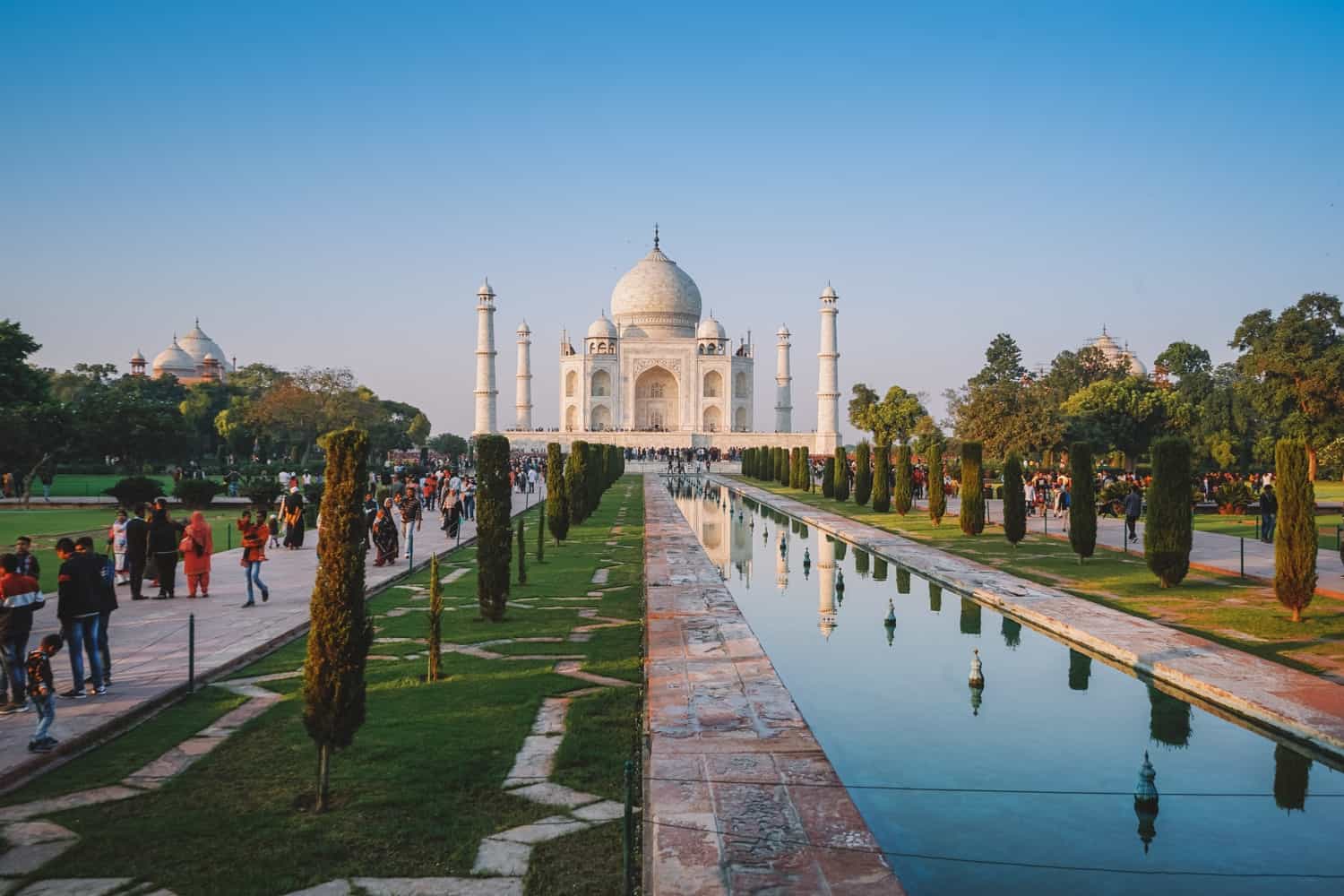
The Golden Triangle is a popular tourist circuit in Northern India.
In fact, it’s the most popular part of the country for visitors. It encompasses the triangular region between New Delhi, Agra, and Jaipur, with every city located around 125 miles from the others.
These days, the Golden Triangle receives a bit of a mixed write-up and before I touched down in Delhi, I was fully expecting to be disappointed by my week there.
I’m not a fan of tourist-filled destinations, and I’d read plenty of articles concentrating on how you should skip over the Golden Triangle entirely. So many people said that visiting would mean contributing to overtourism and that the true jewels of India lay outside this area.
Usually, that would be enough to have me running for the mountains, but, well, can you imagine travelling to India and not seeing the Taj Mahal? I couldn’t, so I planned for a week in the Golden Triangle and held my breath, wondering if it would be a decision I’d come to regret.
To my great surprise, I loved my time here!
I arrived with low expectations, yet adored every second I spent exploring these three wonderful cities. Today, I’m excited to share why I fell in love with this region of India and how you can make sure you have just as wonderful a trip there.
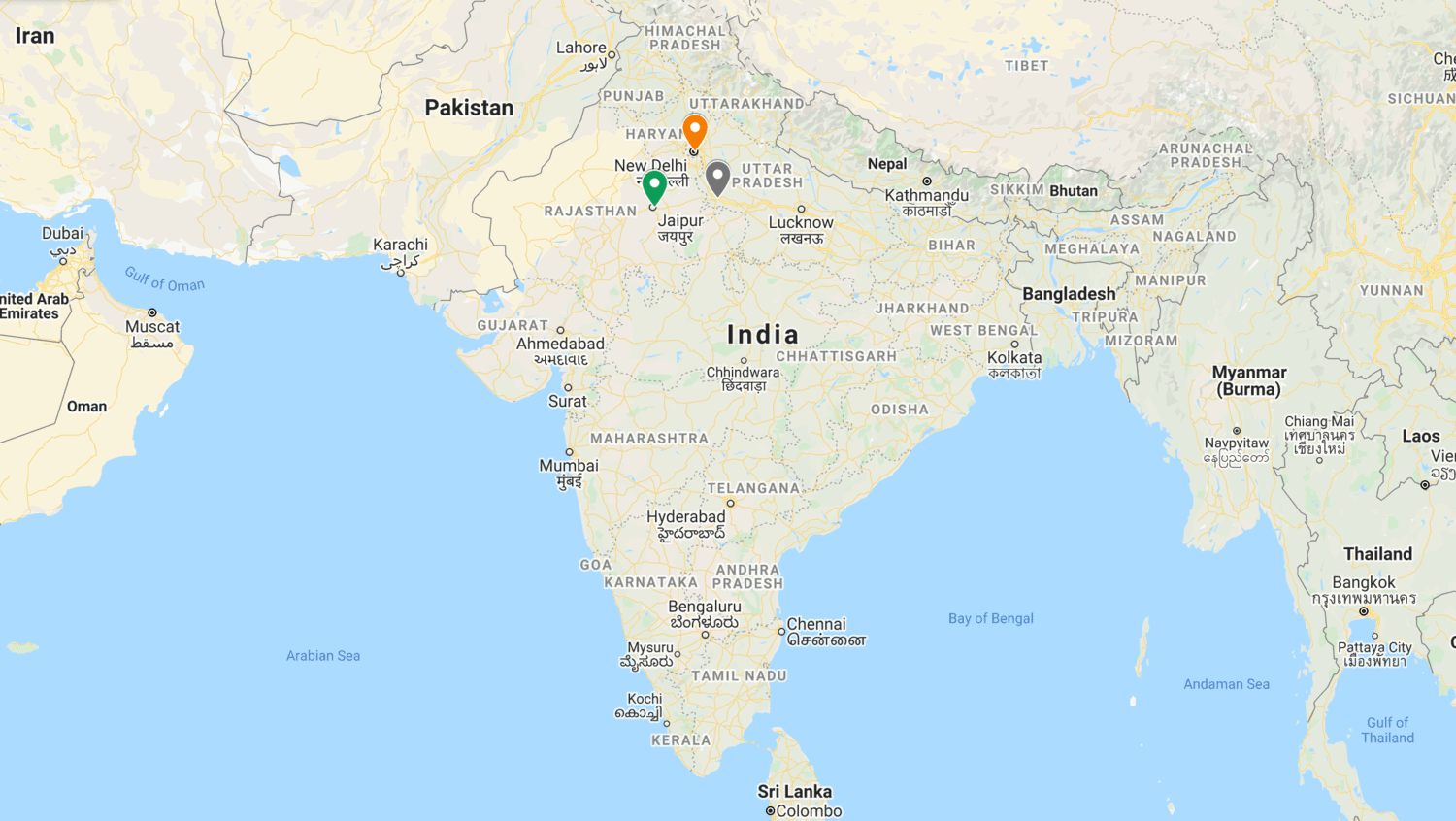
Where is the Golden Triangle?
As you can see from the map, the Golden Triangle comprises an almost equilateral triangle, with New Delhi at the top, Agra on the bottom-right, and Jaipur on the bottom-left. The distance between New Delhi and Agra is 233 km, Agra and Jaipur is 237 km, and Jaipur and Delhi is 273 km.
Most travellers fly into New Delhi, travel next to Agra, and then finish up in Jaipur, which is exactly what I chose to do. From that point, you can either venture back into New Delhi to leave the country, or continue travelling. The most popular next destinations for first-time visitors to India include the region of Rajasthan, as well as Mumbai, Varanasi, and Goa.
It doesn’t really matter which direction you travel around the Golden Triangle, as there are so many transportation options to choose from between each place.
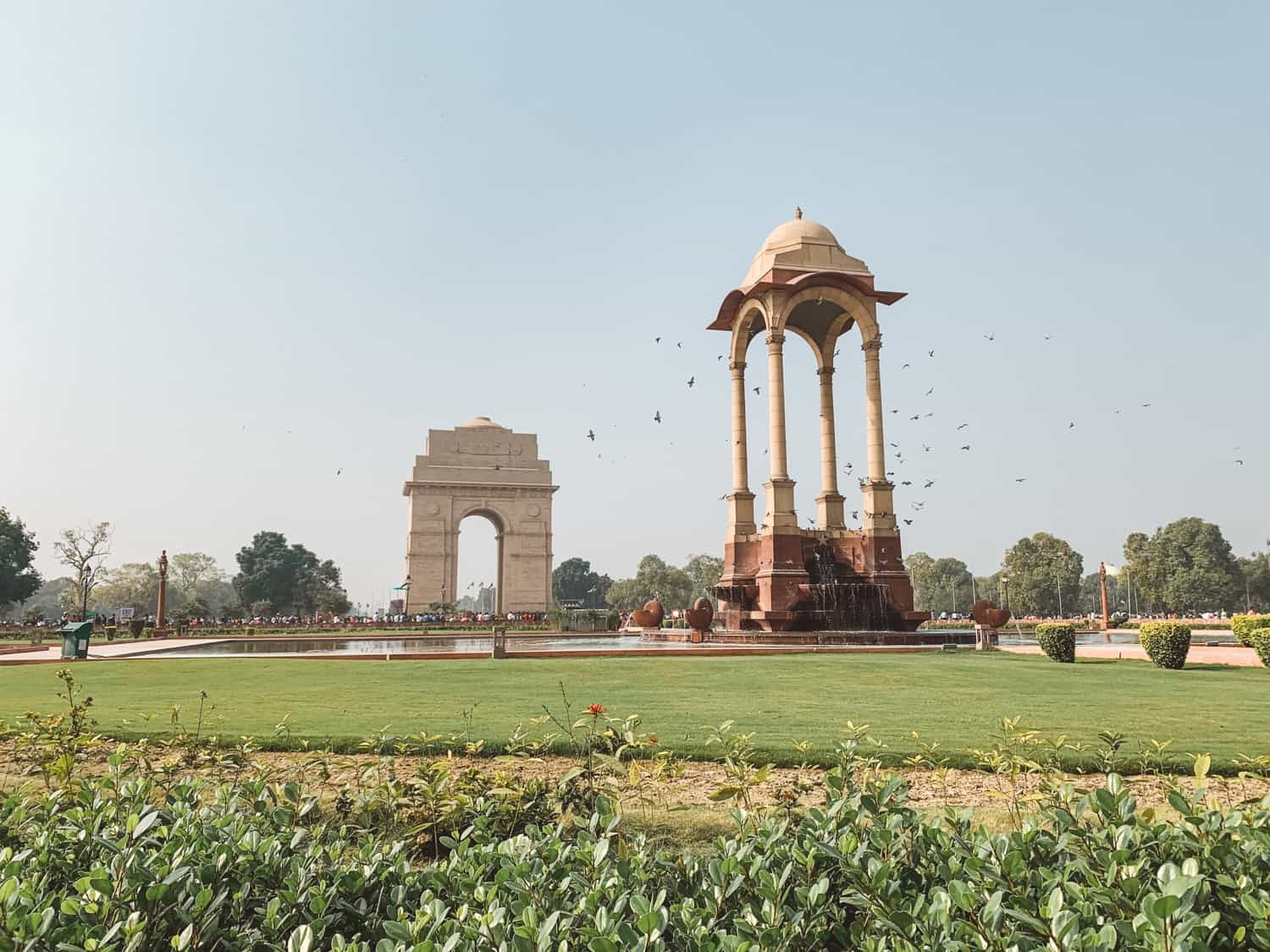
Why Should You Spend Time There?
Most people opt to visit the Golden Triangle because they see it as a way to ease into India travel. Visiting this part of the country showers you with incredible sites and it’s relatively easy to get around them all. There’s a well-worn tourist trail, excellent accommodation, plenty of transportation, lots of English spoken, and many attractions that are worth seeing. Here’s what I loved about it:
There are the most incredible monuments: The Taj Mahal receives all the glory and attention — and rightly so — but there’s so much more to see; structures that are almost as mind-blowing. I was particularly impressed by Jama Masjid, Humayun’s Tomb, Lodhi Garden, and Qutub Minar in Delhi. In Agra, Agra Fort and Itimad Ud Daulah Tomb were magnificent. And in Jaipur , I was blown away by Hawa Mahal, Amber Fort, and Jantar Mantar. Between Agra and Jaipur, I was spellbound by Fatehpur Sikri and Chand Baori. It felt like every few hours in the Golden Triangle I was witnessing one of the most spectacular sights of my life.
You can see three distinct parts of the country: Sure, you’re only seeing three cities, but doing so will give you a taste for three different regions. Jaipur will introduce you to the desert state of Rajasthan, Agra is in Uttar Pradesh, the state that’s known for its religious landmarks and pilgrimages, and Delhi is Delhi: there’s nowhere else in the world quite like it.
You’ll be exposed to plenty of confusion: Arriving in Delhi for the first time is an experience in itself. The smells that hit you as you step off the plane, the chaos of wandering the streets of Old Delhi, the crumbling buildings, the relentless sound of horns, the breathtaking temples and monuments, the incredible smells of dishes you’ve never heard of before, the colours, the crowds, the cultural immersion. It’s one of my favourite cities in the world because I can’t get enough of its chaos.
It’s an experience that every visitor of India ends up powering through, and you can get all of that iconic culture shock while exploring the Golden Triangle.
But it’s also pretty easy: It’s easy to get around by taking Ubers, it’s easy to book train tickets online and in advance, it’s easy to get around with Google Maps, everyone speaks English… Sure, you’ll be tending to the assault on your senses, but you’ll also feel safe as you do so. So many tourists visit the Golden Triangle, which makes it set up for visitors and easy to travel around.
There are options for all budgets: Want to get by on less than $10 a day? You can do that if you want to also skip out on all of the tourist attractions! I don’t recommend doing it, though. Want one of your most luxurious vacations at some of the best value prices? You can definitely do that, too! I travelled on a mid-range budget of around $30 a day and was astonished by how inexpensive everything was, from accommodation to transportation to food.
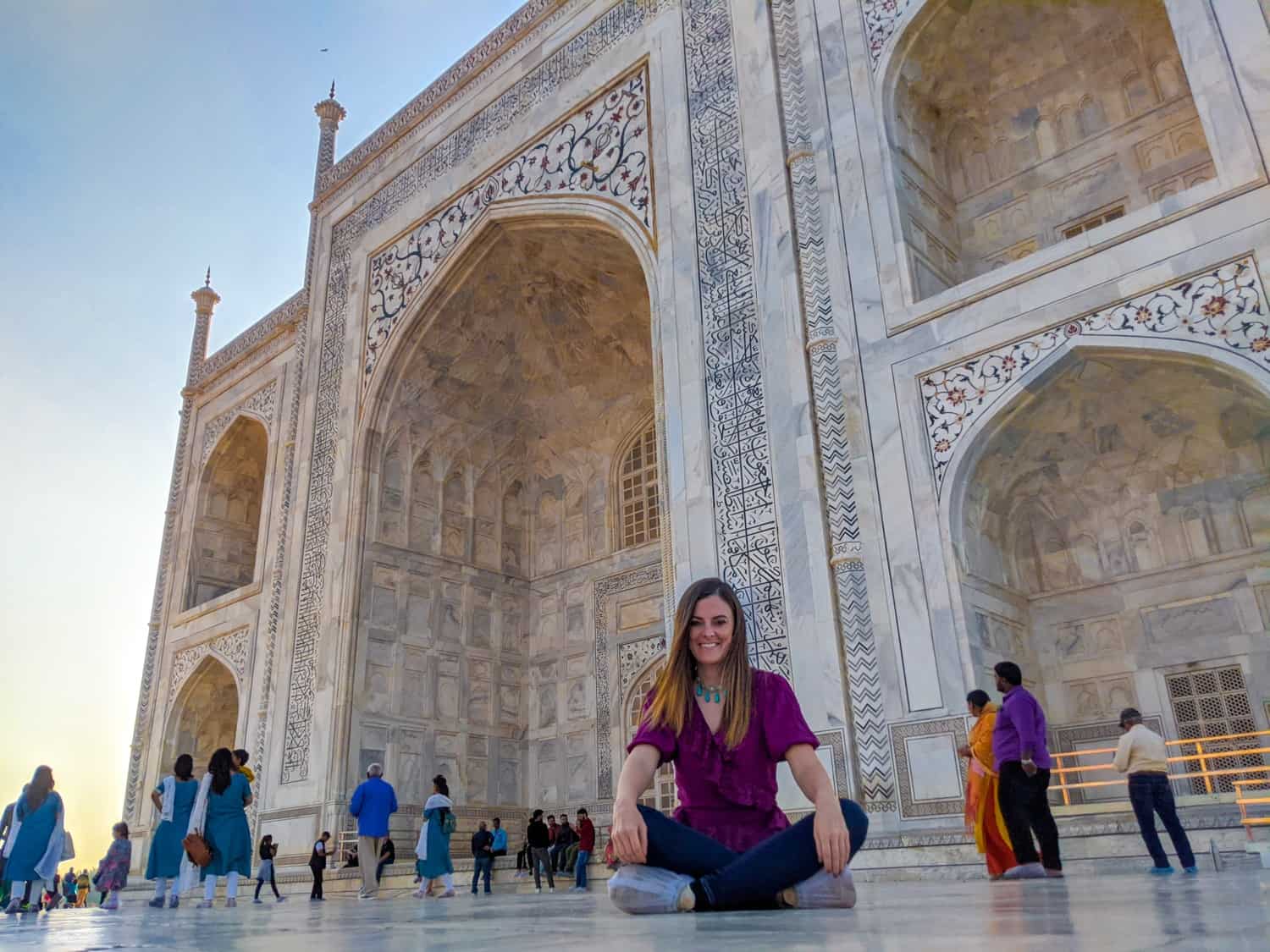
How Long Does it Take to See the Golden Triangle?
Most people choose to spend between three and seven days to cover the entire Golden Triangle, but I recommend a week as an absolute minimum. I opted for seven nights and eight days there and it felt like the perfect amount of time.
I spent four nights in New Delhi , one night in Agra, and two nights in Jaipur. If I’d had any extra days, I’d have likely added one to Agra to slow down the travel a little, but I didn’t really feel like it was needed.
Seven days, to me, is the perfect length of time to spend here.

How Do You Get Around?
I recommend taking the train from New Delhi to Agra, then hiring a driver to take you from Agra to Jaipur.
Taking the train from New Delhi to Agra is incredibly easy if you book in advance with 12Go Asia . Tickets for trains are released four months in advance, and it’s a simple process to buy them online. I took the Gatimaan Express — the fastest train in India — that left from Hazrat Nizamuddin station in New Delhi at 8:10 a.m. and arrived at Agra Cantt by 09:55 a.m. Tickets for A/C chair car carriages were just under $16 each and included a breakfast and bottle of water.
I recommend hiring a driver over taking a train between Agra and Jaipur, because there are so many interesting sites to see between the two cities. There’s no need to worry about booking a driver in advance, either — we asked at reception at our homestay in Agra the day before we wanted to leave and they arranged a driver for us for a reasonable price: 5000₹/$70 for around eight hours in the car, stopping at both Fatehpur Sikri and Abhaneri.
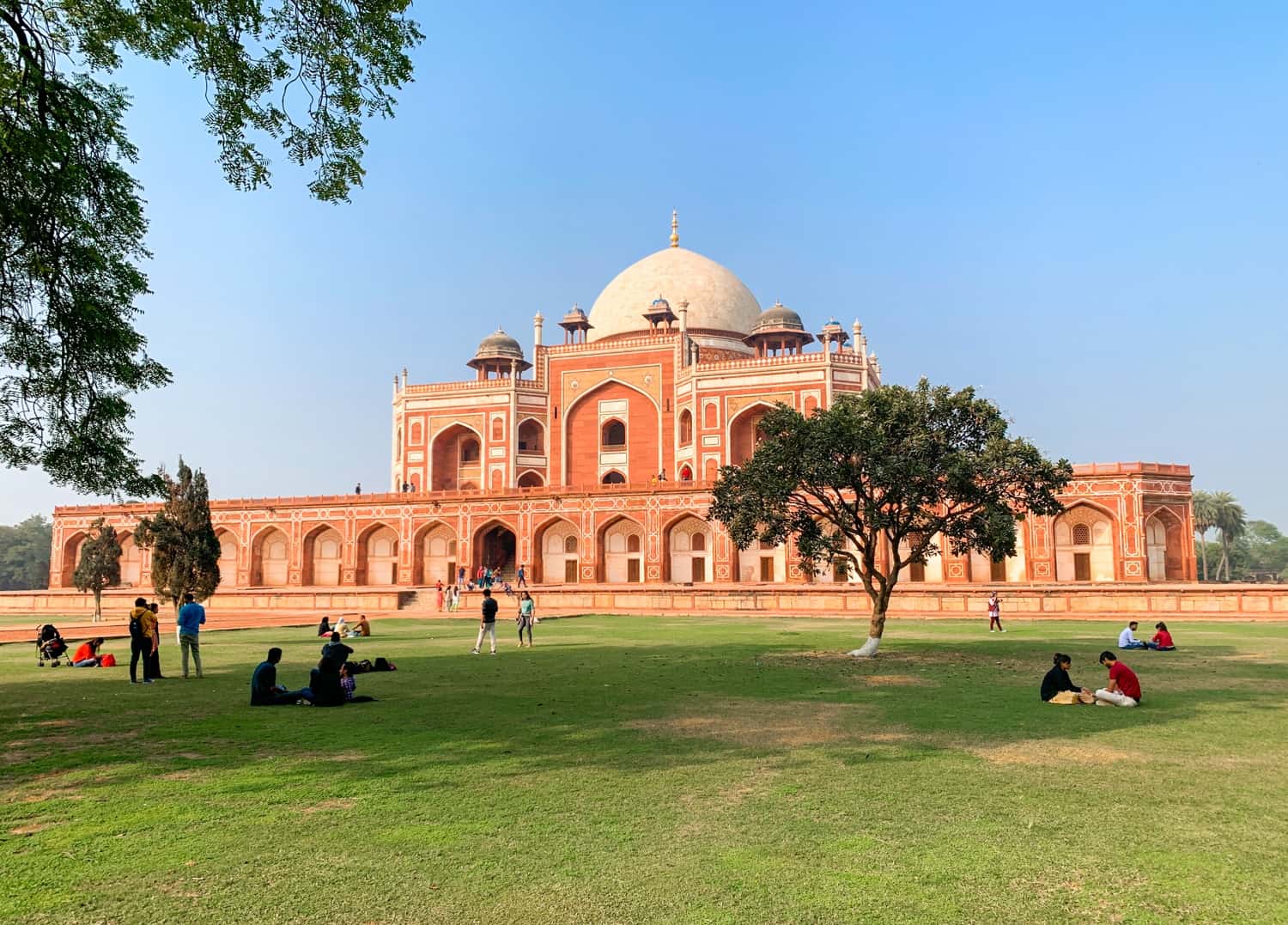
When’s the Best Time to Visit?
There isn’t a truly terrible time to visit this part of the world. All four seasons come with their own advantages and disadvantages.
I decided to touch down in Delhi at the start of December, as I wanted to travel in this part of the world during winter. The temperatures are perfect at this time of year. I encountered no rain and plenty of blue skies, with the middle of day reaching around 23°C/73°F and temperatures at night dropping to around 15°C/60°F. That’s the main advantage to visiting at this time — the manageable temperatures make dealing with the noise and chaos easier, and you’ll rarely feel hot and sweaty as you make your way around attractions.
There is one main disadvantage to travelling at this time of year, though: the smog. India is home to some of the world’s most polluted cities, and it was a struggle to deal with at times. My snot was jet-black for the entire time I was in Northern India. The smog stems from several sources: nearby farmers burning off their crops, the huge number of vehicles in cities, the dust emanating from construction sites, locals building fires to keep warm, and, depending on the time of year, firecrackers being set off to celebrate Diwali. Because the Golden Triangle resides in a land-locked valley, the smog tends to settle over the cities during cooler months and can result in a dense, dangerous haze.
The smog obviously affects your health, but it can also affect your sightseeing by washing out the sky in all of your photos. There’s fog to contend with, too. The Taj Mahal is notorious for being shrouded in fog in the early mornings in winter, barely visible as the sun begins to rise. In fact, we chose to visit the Taj at sunset rather than sunrise to avoid precisely that.
So what about other times of year?
April, May, and June are the hottest months of the year and I’d avoid visiting then — temperatures can get as high as 45°C during the day, which sounds like the worst possible way to see this part of the world. On the other hand, you’ll encounter the fewest number of tourists, which is always going to be a bonus in this often overcrowded region.
July to September are the monsoon months and come with a risk of flooding, as well as a high chance of rain hitting the pause button on your explorations. Alternatively, there’s little smog to contend with and the rain can clear up the skies to have your photos looking fantastic. Again, there are fewer tourists.
Overall, though, October to March has some of the best temperatures and the best weather. As long as you don’t mind having to deal with the smog, I’d recommend visiting then.
If I had to pick the perfect month to visit, I’d go with February. The temperatures will be lovely and warm, but there won’t be as much pollution and there’ll be slightly fewer tourists than in January and December.
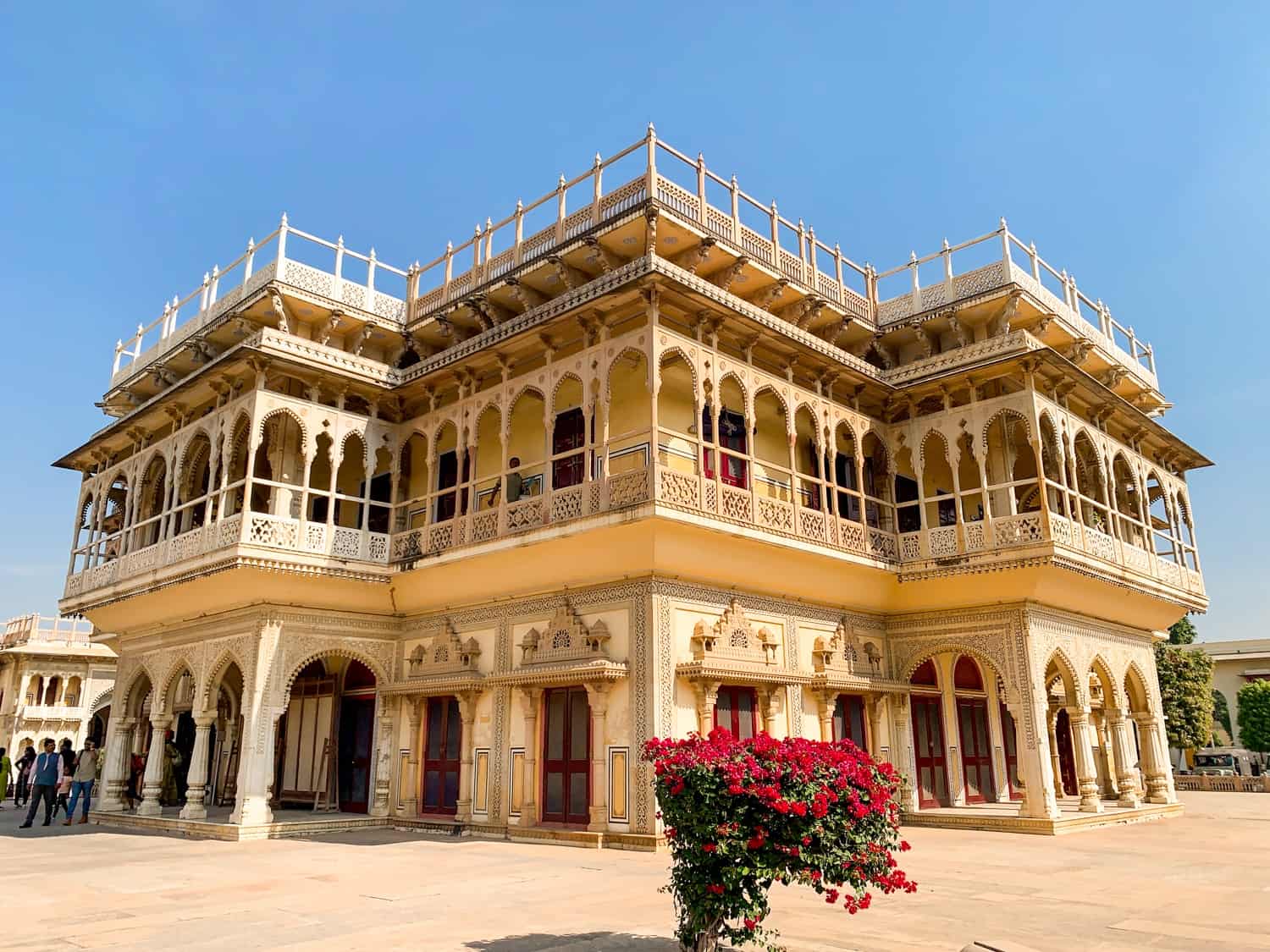
Should You Take a Tour?
Nah, there’s no real need to.
There are so many companies out there running tours to the Golden Triangle — many of whom are going to spam the comments of this post — but I really don’t think it’s necessary to take one. I found travel in the Golden Triangle to be straightforward and safe, and a hell of a lot of fun. There are so many tourists of all ages doing the exact same thing that it’s nowhere near as intimidating as you’re probably expecting.
Instead of taking a multi-day tour, I recommend opting for day tours while you’re on the ground — like the street food tour I did with UrbanAdventures in New Delhi. It was the perfect tour to take on my first day in the country as it introduced me to the country’s street food, and gave me the confidence to start ordering random snacks from vendors as I continued moving through India.
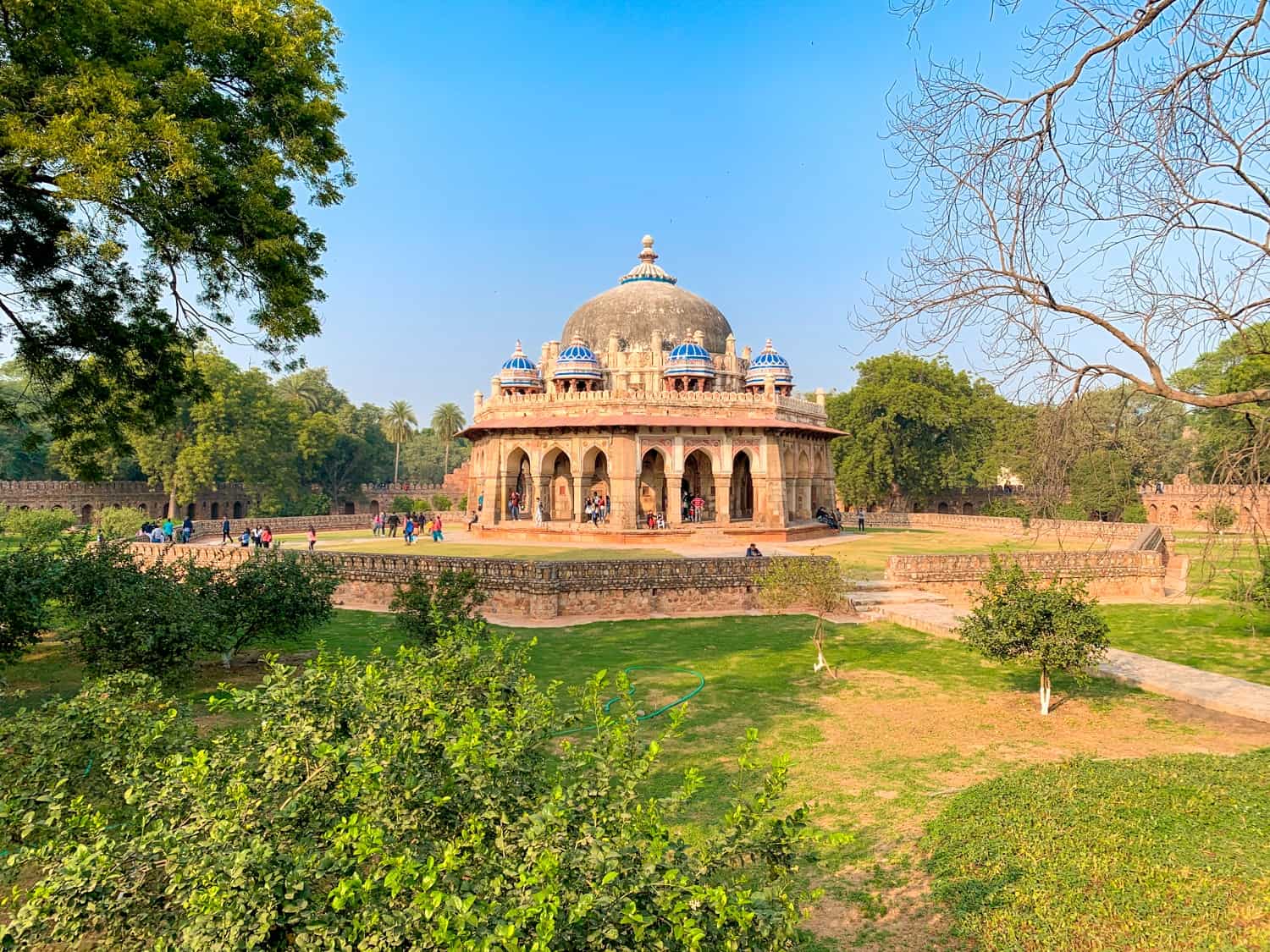
How to Spend Your Time in the Golden Triangle
This is my itinerary for my seven days in the Golden Triangle:
Day One: Arrive in New Delhi
Day Two: Explore Old Delhi
Day Three: Explore New Delhi
Day Four: Explore South Delhi
- Day Five: Train to Agra; Rickshaw tour of Agra
- Day Six: Drive to Jaipur, stopping at Fatehpur Sikri and Abhaneri
- Day Seven: Full day in Jaipur
I spent a lot of time in New Delhi, and that was for several reasons. I flew in from the U.K. and knew I was likely to be jet lagged during my first few days in the country — I always recommend giving yourself a few lowkey rest days at the start of your trip to get adjusted. I also knew that there was so much to see in Delhi and when I made a list of everything I wanted to do, I realised it was going to take several days to check all of it out.
In contrast, you can see all of Agra in a day and all of Jaipur in a day, so you don’t need to dedicate as much time to those places.
If you have less time, you can visit Agra and the Taj Mahal as a day trip, or even visit Jaipur as a day trip. It’d be a hardcore way of seeing the region and you’ll be weary afterwards, but it can definitely be done. You could spend one day in Delhi, take a day trip to Agra, take a day trip to Jaipur, and be done. Bam! Seen it in three days. It seems to me like a guaranteed way to not have a great time, though.
Here’s how I split up my time in more detail:
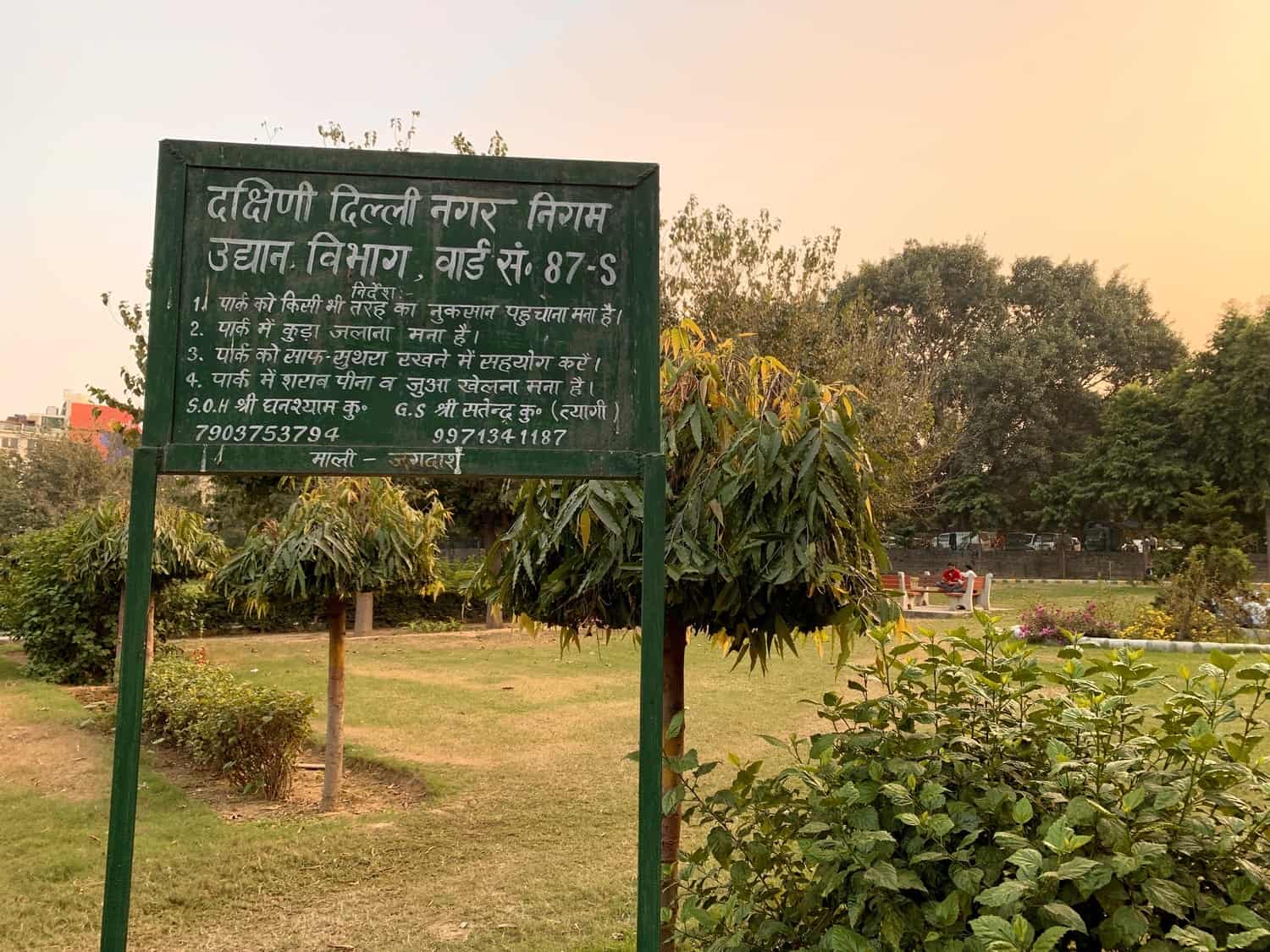
It’s a rule of mine to spend my first day in a new place relaxing. I highly recommend opting for accommodation in South Delhi for your first visit to the city. I stayed in Tatvamasi Guesthouse , which absolutely made our stay in Delhi so much better. The owner did so much for us, from showing us around the local night market to driving us to tourist attractions, introducing us to his favourite breakfast spot, and helping us get set up with SIM cards.
South Delhi is a chilled-out, middle-class neighbourhood, and depending on what time you arrive in Delhi, it’s a good place to kick off your explorations. Head out for a walk, wander around one of the parks, people-watch on the streets, and check out one of the local cafes.
Spend your evening on a street food tour to introduce you to Delhi and the Indian food scene, and build up your confidence to go it alone in the future. Our guide offered so many valuable tips on this tour and I learned so much about Delhi from her.
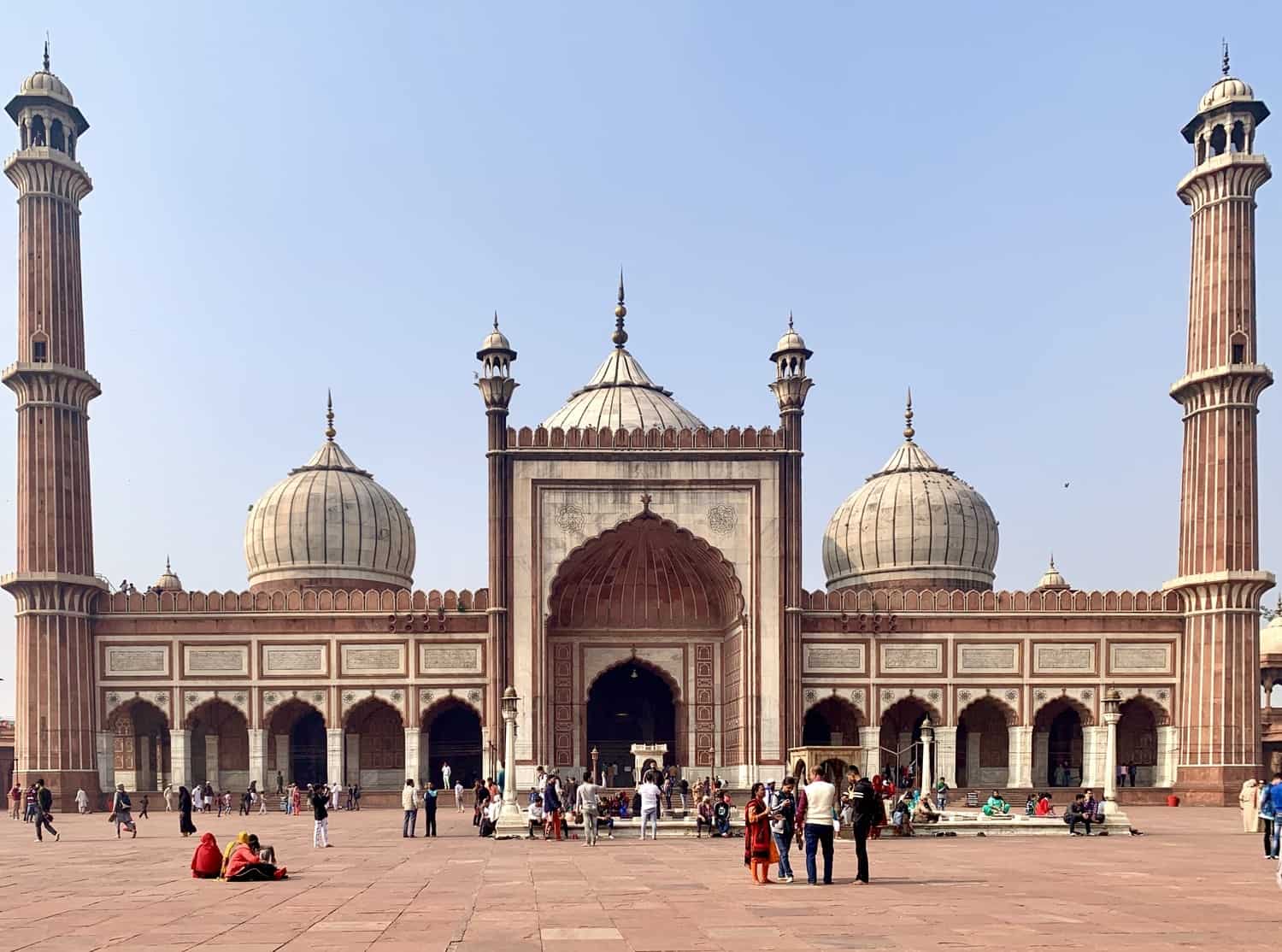
Old Delhi is likely what you’re picturing in your mind when you imagine the chaos of India. The streets are crammed with rickshaws and motorbikes and cows and goats and street food and so many people and so much noise.
Start your day, though, by heading to the Red Fort when it opens. Without the crowds of tourists, it’ll bring about a peaceful start to a day that’s likely to be anything but.
Make Jama Masjid your next stop: one of the largest mosques in Delhi and one of my favourite spots in the city. Excitingly, you can pay to climb to the top of one of the minarets for a fantastic view over Old Delhi.
Gandhi’s memorial should be your next port of call for some reflection and serenity, before you take a deep breath and head into the Old Delhi neighbourhood. This is where you’ll want to have your camera at the ready, knowing that there’ll be so much going on that it’s impossible to capture it all in one still frame. It’s fun trying to, though.
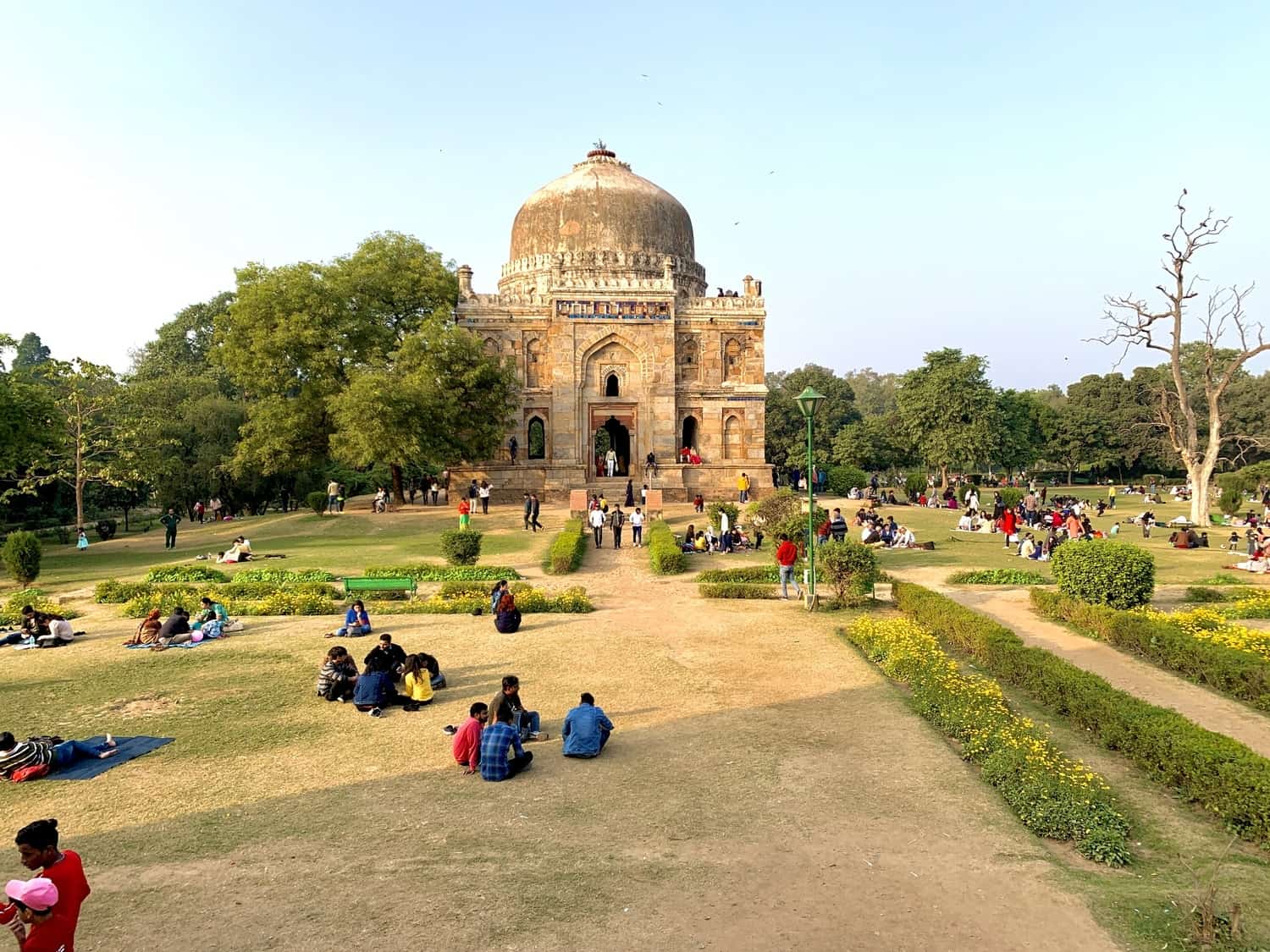
Today is all about exploring New Delhi. Start by heading to your first stepwell in India! I love stepwells — they’re so cool for taking photos — and Agrasen ki Baoli was a fascinating one. It’s supposedly one of the most haunted places in Delhi!
Next, head to India Gate. This war memorial is dedicated to the 70,000 soldiers in the British Indian Army who died fighting in the First World War. It’s full of tourists, local schoolkids, and families having picnics, as well as tons of street vendors, but it’s an impressive structure nonetheless.
Humayun’s Tomb will likely be one of your biggest highlights of New Delhi. The red sandstone tomb was built in 1570 and was the inspiration behind the Taj Mahal. It’s a large complex that you could see in an hour or three, depending on how keen you are to linger and take lots of breaks to soak up the atmosphere. I loved it here.
Head to Lodhi Gardens next, which is another one of my favourite places in the city. It’s such a cool park! You could easily spend a couple of hours walking around the old historic monuments and watching families play cricket and picnic on the grass.
Finish off your long day of sightseeing with a stroll through nearby Lodhi Colony, an area of the city that’s been turned into a neighbourhood of street art. There are dozens of enormous colourful murals blanketing the buildings around here, and they’re so much fun to hunt down.

Finish off your time in Delhi with a relaxed stroll around South Delhi. Get started with an amble around the Lotus Temple, a Sydney Opera House-esque house of worship that’s open to everyone, regardless of their religion.
Next, head to Qutub Minar. A UNESCO World Heritage site, this towering minaret reaches a height of 73 metres and is surrounded by so many cool ruins and monuments. It was one of my favourite spots in Delhi — I know I’ve said this a lot — and I spent over an hour taking photos in the grounds.
In the afternoon, head to the PVR Directors Cut cinema to watch a Bollywood movie. This is a luxury cinema in South Delhi, with comfortable chairs that recline, blankets, pillows, air purifiers, and waiters to bring meals to your seat.
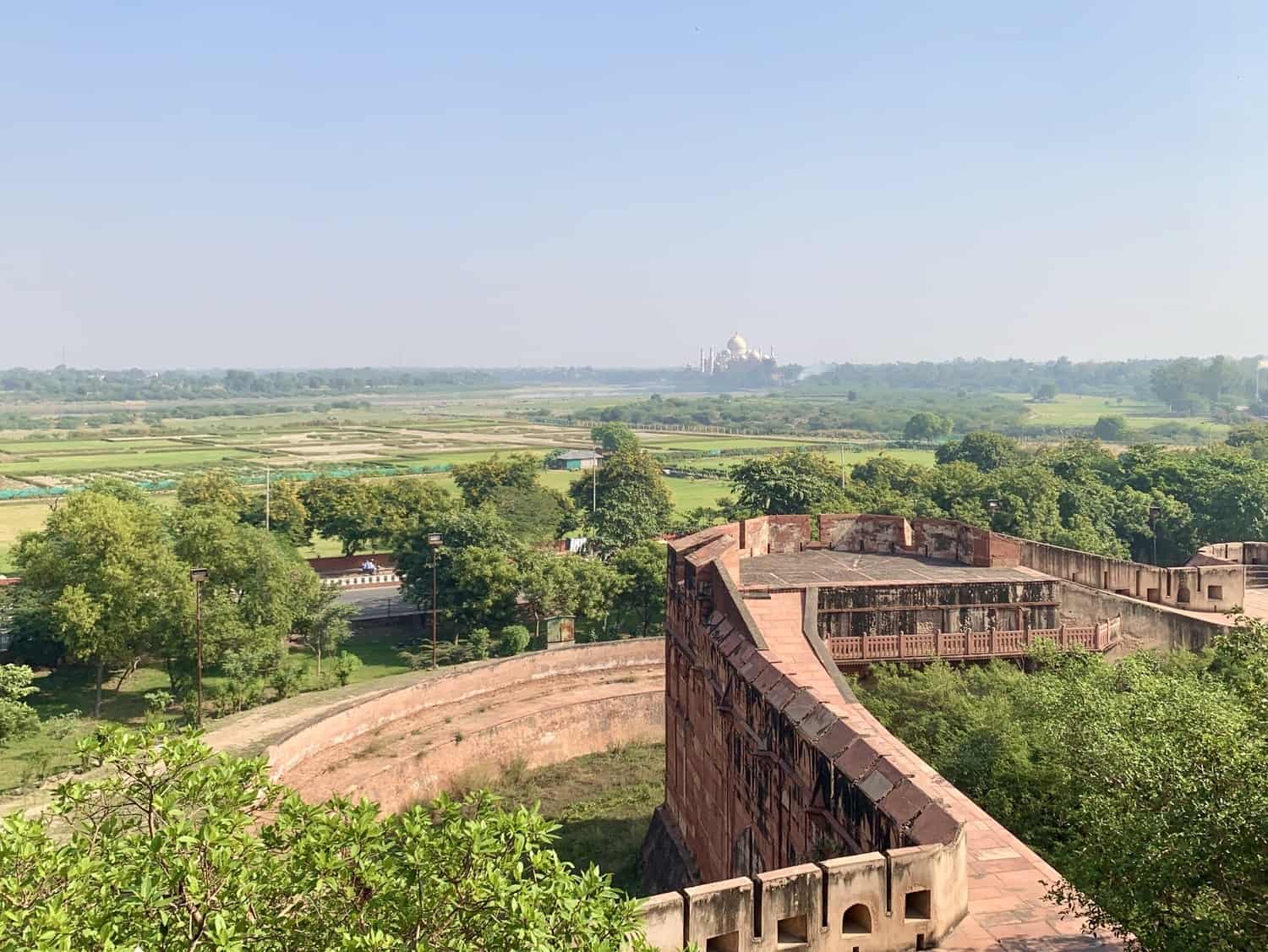
Day Five: Agra
Take the Gatimaan Express train from Delhi and you’ll arrive in Agra just before midday. After checking in to your homestay — I stayed in this lovely one — and arranging a driver for the following day, it’s time to head out and find yourself a rickshaw driver to take you around for the day.
Make Agra Fort your first stop and prepare to be impressed by the sprawling complex. I was surprised I managed to spend well over an hour roaming around, and I found it far more impressive than Delhi’s Red Fort. There are tons of views of the Taj Mahal from the fort, so make sure you’re looking out for it as you walk through the grounds.
The Baby Taj, or Itimad Ud Daulah Tomb, will be next on your agenda, and it’s usually not too crowded. This is a time to chill out and enjoy taking photos from all different angles of the tiles and structures in the gardens.
Ask to be taken to the Taj Mahal viewpoint next, on the other side of the river and looking out towards the mausoleum. This is a great spot for taking photos in front of the Taj without anybody else in the shot.
And then it’s time for the main event. If you’re visiting Agra in winter, as I was, I recommend a sunset visit to the Taj Mahal to avoid the fog that rolls in every morning at sunrise at this time of year. You’ll likely spend hours here and if you expect it to be overrated, you’ll only be impressed.
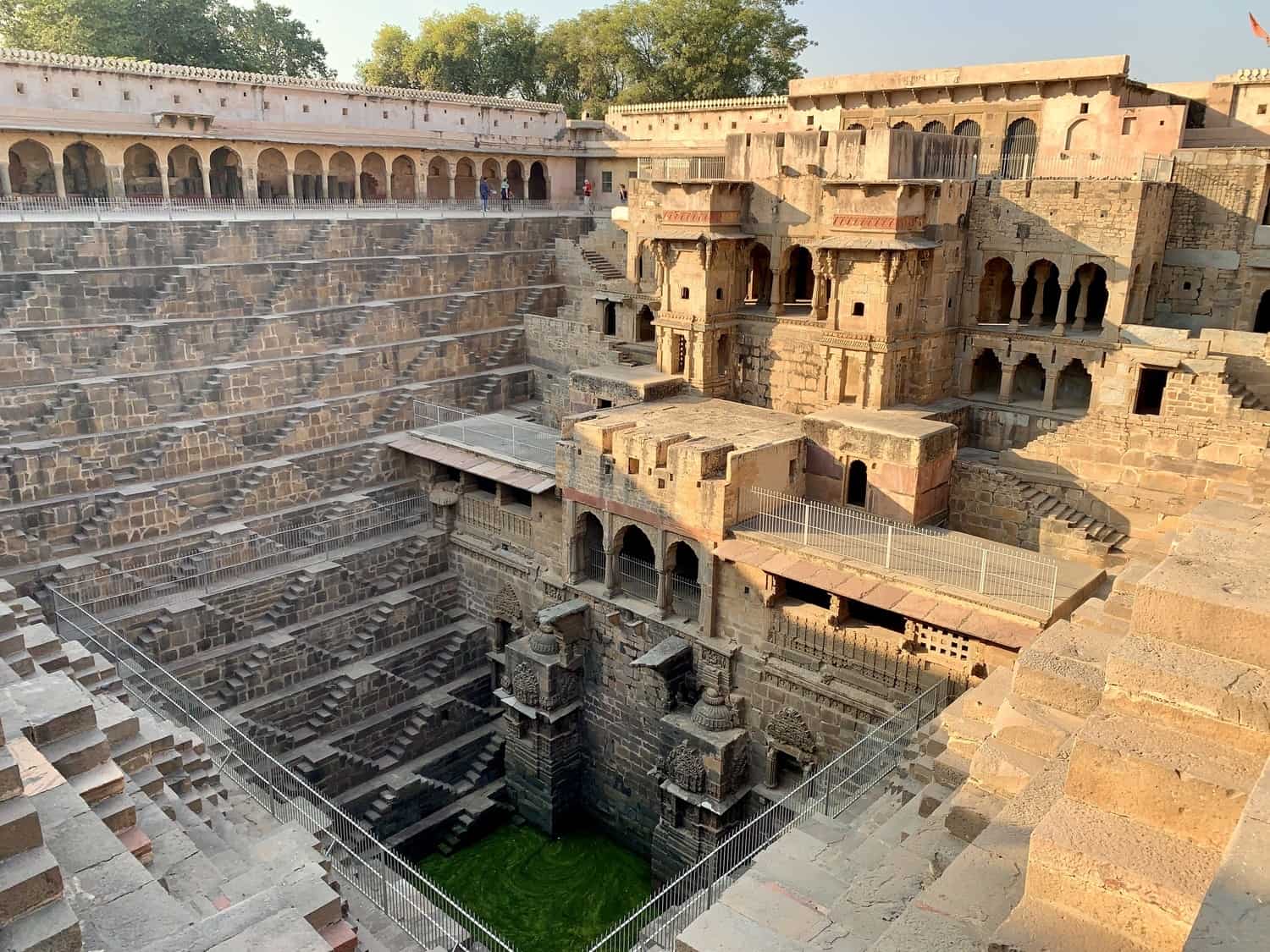
Day Six: Travel Day from Agra to Jaipur, via Fatehpur Sikri and Abhaneri
If you opted to skip the Taj Mahal at sunset the previous day, you’ll be heading out at sunrise this morning instead. Or why not both? I was tempted to return at sunrise just to see it again, but in the end, my desire to sleep won out.
After a quick breakfast, it’ll be time to jump in the car with your driver and make your way to Jaipur.
Your first stop along the way will be Fatehpur Sikri, about an hour away from Agra. You’ll likely spend two or three hours here, as there’s so much to see. The fortified city dates back to the 16th century and was the capital of the Mughal Empire for just over 10 years. After that time, it was swiftly abandoned due to a lack of fresh water, yet the red sandstone buildin gs are still perfectly preserved today.
After two hours on the road, you’ll be arriving in Abhaneri to have a look around India’s largest stepwell. It’s known as Chand Baori and is one of the most impressive in the country. Built in 800 AD, it has 3500 steps and drops 100 feet down, making it one of the deepest in the world.
That night, stay in Le Fort Homestay . There are fantastic breakfasts up for grabs, the hotel is next to some great restaurants, and the owner is so helpful. The guesthouse is built right up against a fort, which makes for a particularly cool location. I loved it here.
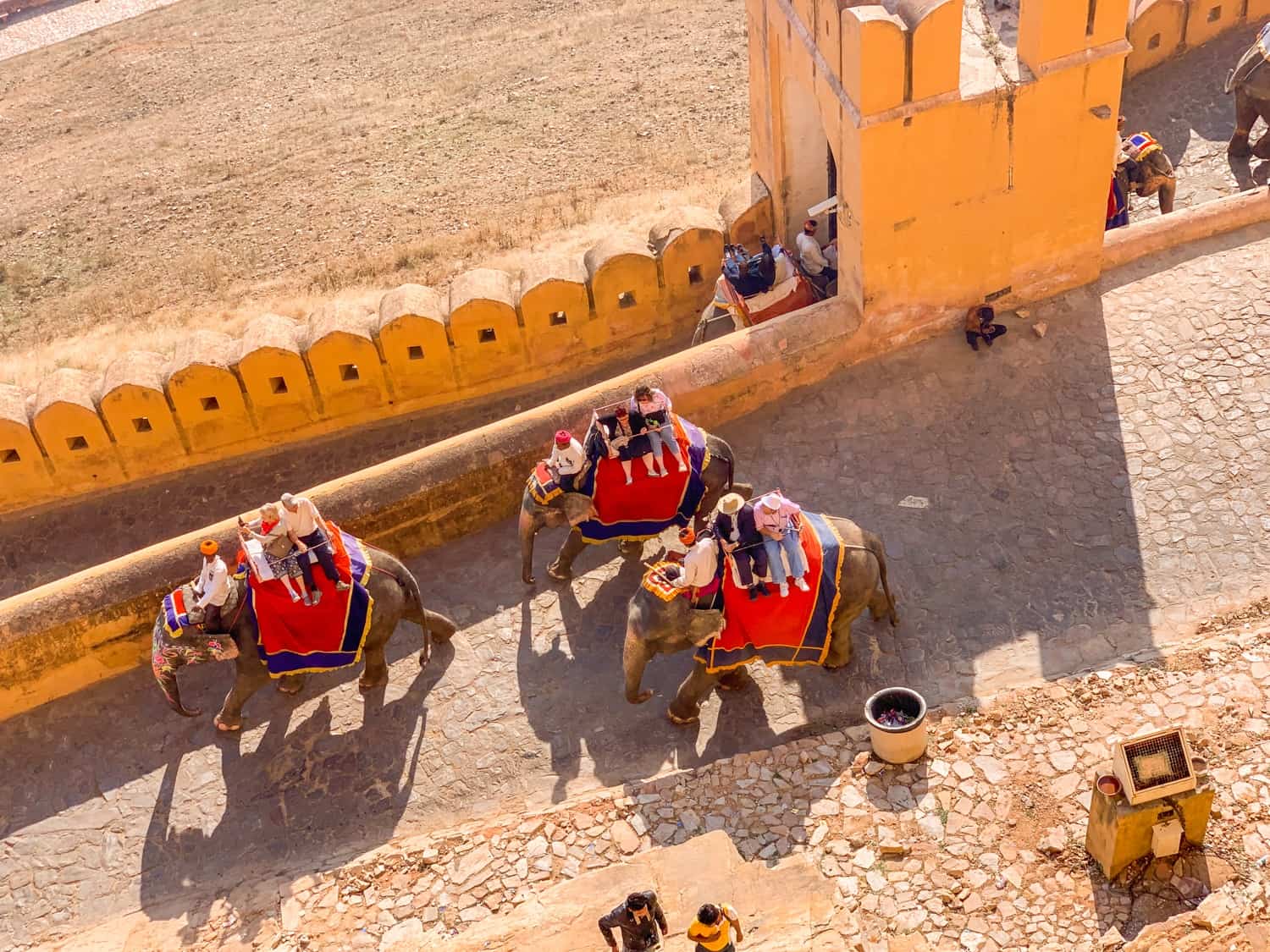
Day Seven: Exploring Jaipur
There’s so much to see in this beautiful pink-coloured city but fortunately, you can visit all of the tourist attractions in a single day.
Amber Fort should be the first stop on your agenda, as you’ll want to get there as soon as it opens in order to avoid the crowds. I’d be aiming to leave Jaipur at 7:30 in the morning and then jumping in an Uber to get there for opening time.
Once the fort opens, you’ll want to make the most of having it all to yourself, so prioritise seeing the most popular parts of the complex: the Hall of Mirrors is usually packed, so head straight there. Once you’ve walked through the four areas of Amber Fort, make the trek over to Jaigarh Fort and spent an hour taking photos from its walls.
With the main attraction out of the way, jump in an Uber back towards Jaipur and stop off at the lake palace.
With that, it’ll be back to Jaipur, so grab a rickshaw and ask the driver to take you to Hawa Mahal. Rather than rushing, take photos from both sides of the street, and head inside to have a look around. Make sure to grab a chai from the Wind View Cafe opposite to get one of the best views of the Hawa Mahal without traffic getting in the way.
While you’re in the old city, head next to the City Palace and Jantar Mantar, and enjoy snapping photos of the pink buildings on the way. I’d suggest potentially skipping the city palace if you’re running short on time, as it was the least impressive part of Jaipur for me.
If you’re still feeling energised, you should head next to Nahargarh Fort, for an incredible view of the city. Visiting for sunset would be a great way to watch darkness fall over Jaipur.
Alternative Destinations in the Golden Triangle
If you have more time or don’t want to dedicate as much of your itinerary to Delhi, there are plenty of alternative places to check out or tack on to your itinerary.
You could work in a stop at Ranthambore National Park in between visiting Agra and Jaipur. This wildlife reserve is a former royal hunting ground and is now one of the best places in the country to spot wild Indian tigers on safari. You aren’t guaranteed to see them, of course, but if you have an extra few days to spare, it’d definitely be worth taking that chance.
UNESCO World Heritage Site Keoladeo Ghana National Park is close to Agra and could be worked into your drive to Jaipur if you’re a keen birdwatcher. At Sariska National Park, near to Jaipur, growing numbers of leopards and tigers roam through the area.
If you wanted to hire a driver between Delhi and Agra, you could stop in Mathura, birthplace of Krishna, along the way, as well as Vrindavan, which is filled with beautiful temples.
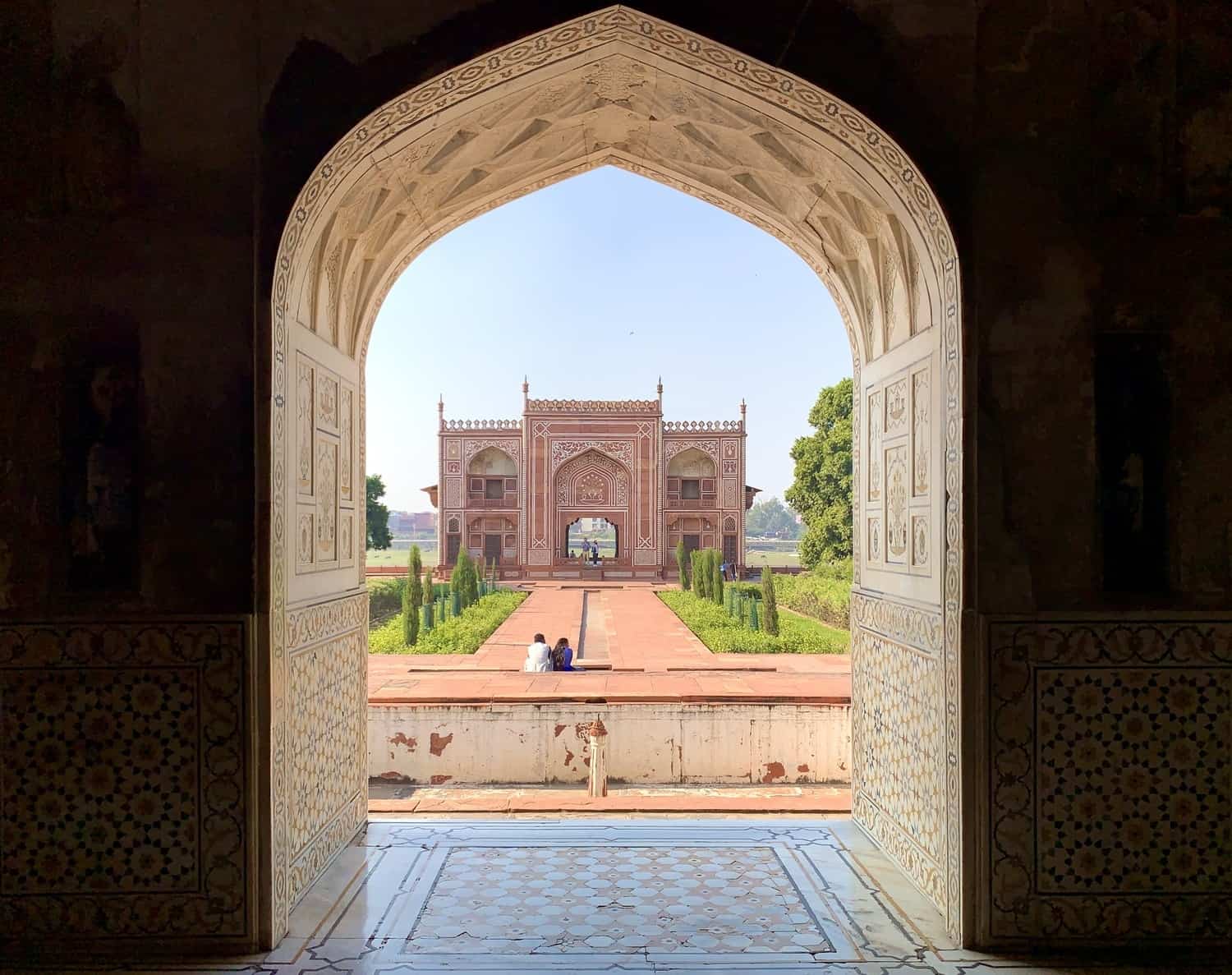
Travel Tips and Advice for the Golden Triangle
Use Uber or Ola to get around: Uber and Ola (the Indian version of Uber) have been game-changers for travel in India. We found ourselves using Uber more, as we could pay through the app. With Ola, you’ll need to pay in cash, as the app doesn’t accept foreign cards, but prices will be slightly cheaper.
As much as I enjoy the rickshaw life, having to haggle with drivers is annoying, and so is running the risk of them taking us to the wrong place because they misunderstood our directions. And plus, the pollution can get so bad that driving in an open-air vehicle isn’t going to be great for your lungs.
I found Uber to be great for giving me a maximum price for which to haggle rickshaw drivers down to. When you can show the drivers the rate for Uber on your phone, they’re usually happy to match it. And it’s cheap! I couldn’t believe it when a 90-minute drive across Delhi worked out at around $10.
And 12Go Asia for trains: In the past, there used to be so many horror stories around trying to take the trains in India — it wasn’t uncommon to have to spend all day queueing to buy tickets or ending up in the packed-to-the-brim general admission carriage or getting scammed when you tried to buy tickets from travel agents.
Just like Uber, 12Go Asia has vastly improved the train-booking situation in the country, because now you can book online, up to four months in advance and with your debit cards you use at home. 12Go takes a commission on sales, so keep that in mind — but it was so worth it for me to just have that peace of mind that everything was booked.
And Redbus for buses: I took three buses while I was in India and was impressed by the quality of all of them. The buses are cheaper than the trains, so are a great option if you’re travelling on a budget. Make sure you look at the seat map in advance — some of the buses are sleepers, arranged with a double bed on one side of the bus and a single bed on the other. For all my solo female travellers out there: you’ll want to make sure you book a single bed so you don’t end up sharing one with a random local dude. I booked the buses through Redbus .
English is spoken everywhere: No need to worry about language barriers here, as English is widely spoken throughout India, and especially in the Golden Triangle. If you’re doing anything even remotely touristy, you’ll be able to communicate with anyone you need to.
Some attractions close on Friday/Monday: Did you know that the Taj Mahal is closed on Fridays? I didn’t before I arrived in the country, but fortunately, I had planned to visit on a Tuesday.
What I did do, however, was to plan to visit the Lotus Temple on a Monday — my last day in New Delhi — and it was closed. If I’d researched in advance, I’d have known about this and been able to squeeze it in to one of my other sightseeing days.
When you’re planning out your itinerary for India, make sure you have a quick google of the opening times of anywhere you want to visit — Mondays are usually when museums and attractions are closed.
Get a SIM card: It’s so easy to get a local SIM card in India. There’s an Airtel stand in the arrivals area at New Delhi — they’ll take a scan of your passport, put the SIM card in for you, and activate it. The cost of data in India is low — 900 rupees ($13) for 1.5 GB of data and unlimited local calls if you buy it from the airport or 250 rupees for the same if you go into an Airtel store in Delhi. The latter will be a more complicated process.
Haggle, but also don’t care that much: You’re expected to haggle in India, but the prices are often so low that you should keep in mind what you’re arguing over. I spent a solid five minutes trying to get a rickshaw driver to lower his price by 50 Rupees, which is the USD equivalent of 70 cents. I was being ridiculous! And honestly? Who cares if you get ripped off by a dollar? The drivers need the money more than you do.
You can pay by card to get a discount: The vast majority of tourist attractions in India offer a discount if you pay by card instead of cash. It’s not much of a discount, I’ll admit, but it all adds up in the end. We didn’t have a problem using our British debit cards at the entrance to any attractions.
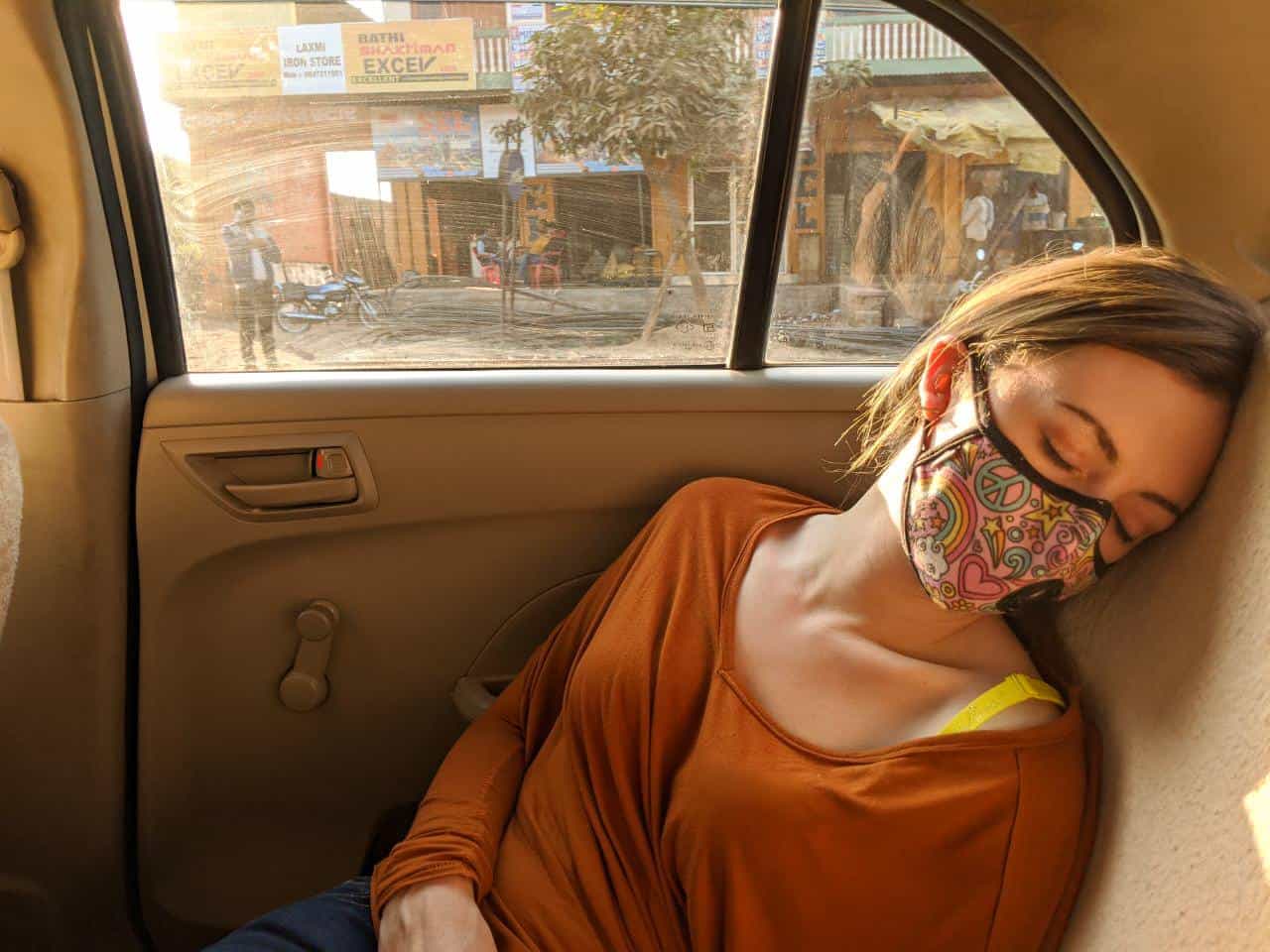
Buy a N95 mask in preparation for the pollution: The pollution is brutal in this part of India, so grab an N95 mask in advance.
N95 masks filter out 95% of fine particles that are less than 2.5 microns in size, which can be significantly harmful to your health. You’ll want to make sure you have a tight fit with your mask — if you can feel any air coming out the sides when you exhale, that means it’s not airtight and you’re still breathing in the toxic fumes around you. You’ll know it’s working because it’ll feel hard to breathe.
They’re not the most comfortable to wear and use, but I still used mine every day for at least a few hours in order to minimise my exposure.
Steer clear of the street dogs: I had a rabies scare while I was in India, and ever since, I’ve vowed to spread the word about how it can be contracted. I’ve learned a lot about it over the past month.
Rabies is spread through the saliva of an infected animal — and that doesn’t just mean being bitten by a dog that’s foaming at the mouth. It can be transmitted by an animal that isn’t showing symptoms, and it can spread through scratches and licks, as well as bites. If you get saliva on your hands, you can catch rabies through touching your eyes, nose, and mouth — even if it’s several hours later.
The street dogs in India are adorable, and I know I spent a lot of time playing with them, but I was being stupid and it’s just not worth the risk. India has the highest prevalence of rabies in the world, with an estimated 30,000 deaths each year. Once you contract rabies and start showing symptoms, there is no cure and you’ll die within a week. Avoid the dogs, no matter how cute they may be because it’s just not worth the risk.
And if you do come into contact with a dog and it licks a bite on your leg or whatever, see a doctor and get the post-exposure treatment as soon as possible. It’s a series of injections spread out over two weeks and it stops you from dying. When it comes to rabies, you don’t want to ever take the risk.
Watch out for the drains: Despite looking like they’re secure in the streets, the drain covers are sometimes loosely placed over the sewers and can flip over and send you flying down below if you step on them in the right place. Look at your feet while you’re walking to avoid this.
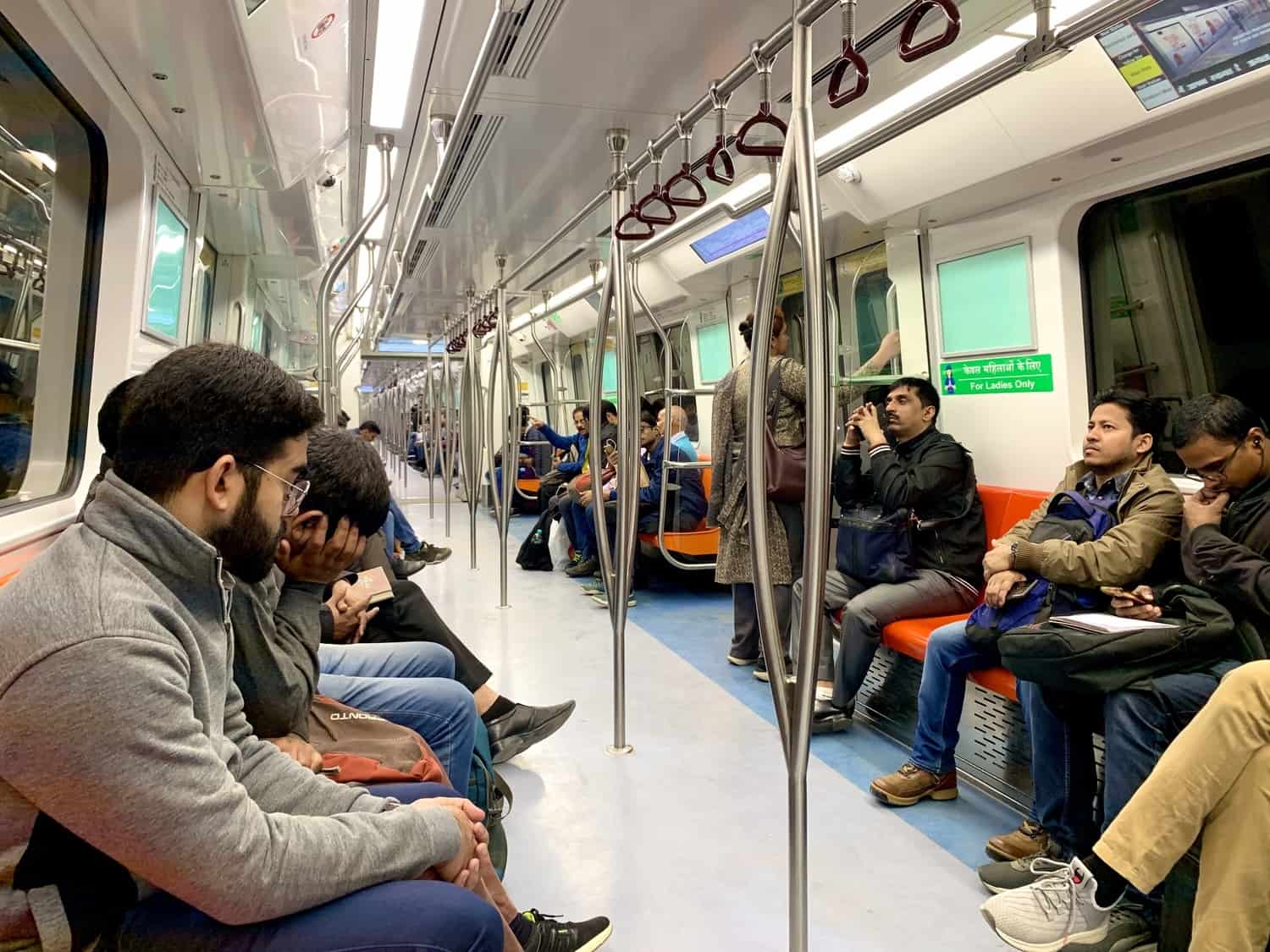
How to Stay Safe as a Woman in India
I received vastly less hassle in India than I was expecting. I encountered zero sexual harassment, no touching, and very little staring from the local men. Everyone treated me with respect and warmth, whether I was with my boyfriend or walking around on my own. This was very unexpected!
The worst you’ll likely encounter is incessant requests for photos from teenage boys. At first, I agreed to have my photo taken with everyone who asked, but eventually got fed up and started turning them down. After all, if they weren’t asking the local girls for photos, why were they asking me? They just want to pretend they have a Western girlfriend on social media.
My tour guide in Jaipur advised me to stop agreeing to take photos with local guys, and from that moment on, I only agreed to for families and teenage girls.
It might surprise you to learn that travelling as a woman in India can sometimes make for a more enjoyable experience. There are women-only carriages on the Delhi Metro that are far less crowded, I could skip the queue for many attractions by joining the smaller one for women, and was frequently welcomed with open arms by local women. Teenage girls, in particular, were always down to hang out and chat with me.
Over and over, like when I was travelling alone by train, locals would check with me to make sure I felt safe, and reassure me that if ever I felt uncomfortable or in danger, I could just let them know.
In the Golden Triangle, there are so many tourists that you’re not going to stand out in a crowd, but you should still follow basic safety practices.
You’ll want to make sure you dress conservatively to attract less attention, stick to well-lit areas when out at night, keep your belongings close to your body, and never compromise your safety in order to save money. If somebody tries to grope you, yell at them and dozens of nearby locals will come to your rescue. I also recommend staying in homestays that receive positive reviews from solo women, and to arrange a pick-up with them when you arrive in town, especially if you’ll be doing so at night.
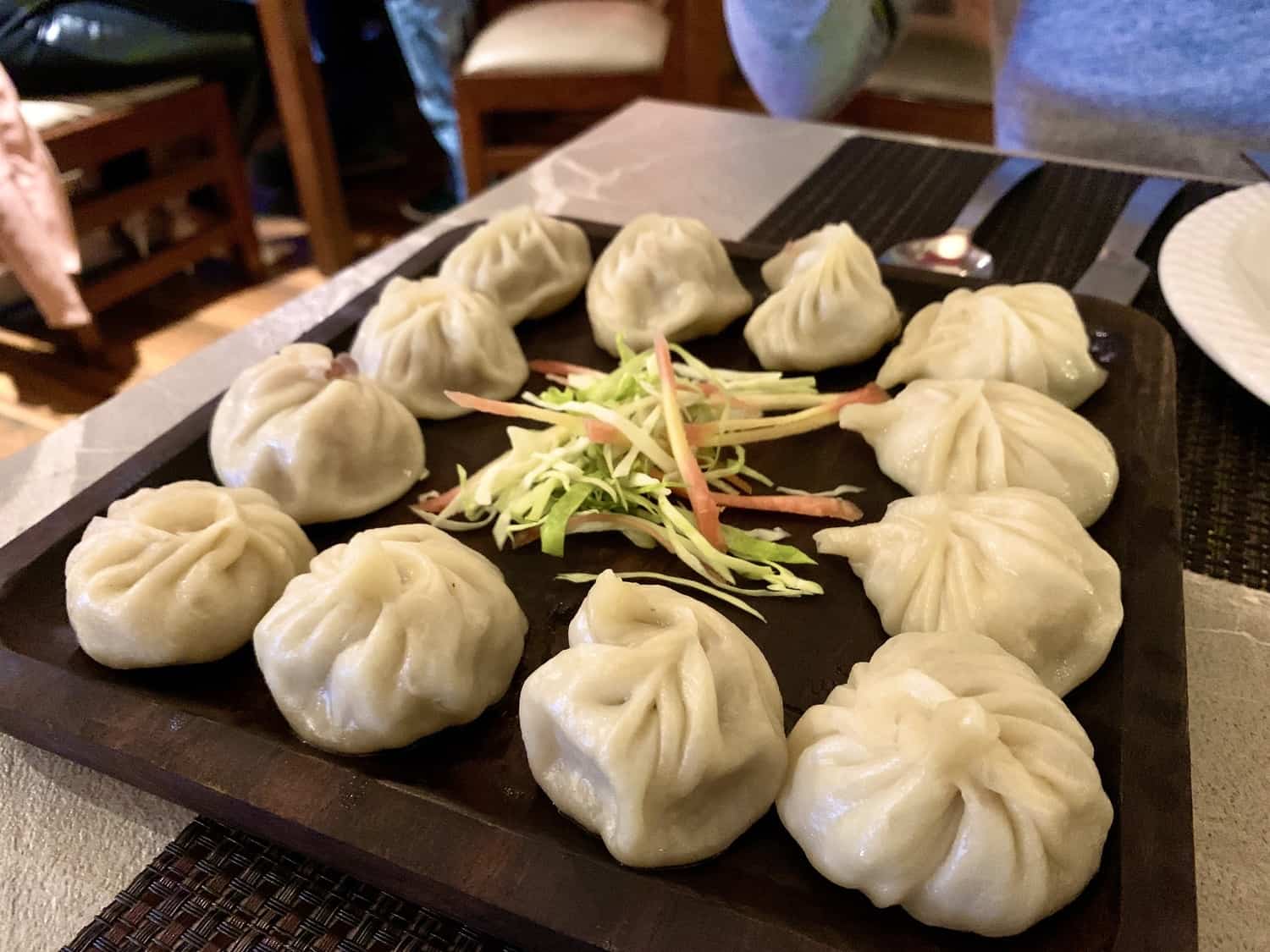
What About Delhi Belly, Tho?
Delhi Belly: my biggest fear. I was absolutely convinced I would get food poisoning in India, because doesn’t it happen to everyone?
And yet, it didn’t. Despite eating pretty much anywhere that was serving up delicious-looking food, neither I nor my boyfriend suffered from food poisoning. I believe three things helped keep us safe:
Going vegetarian! Most of the locals in India are vegetarian — the country has the lowest amount of meat consumption in the world — so we switched over to a meat-free lifestyle, too. Note that you’re also going to want to avoid most fresh fruits and vegetables while you’re in the country, too — especially if they’re uncooked or peeled.
Hand sanitiser! Much of what gets written off as food poisoning in India is general contamination from touching surfaces with bacteria on it and then not washing your hands and touching your mouth. I used hand sanitiser on an hourly basis and took extra care not to touch my face. I also used the hand sanitiser to sterilise any utensils at restaurants, as they could have been washed with dirty tap water.
Pudin Hara! I’m a total convert to Pudin Hara — peppermint oil capsules from India — and take them every time my stomach feels a little unsettled. You can buy them from any pharmacy when you get to India, but you can also pick them up from Amazon . I took like, a hundred tablets with me, as I took a capsule with every single meal. I fully plan on keeping a large supply of these with me whenever I travel, as they were so life-changingly great at settling my stomach. An added bonus was the deliciously minty burps that overpowered the scent of curry that was emanating from my body.
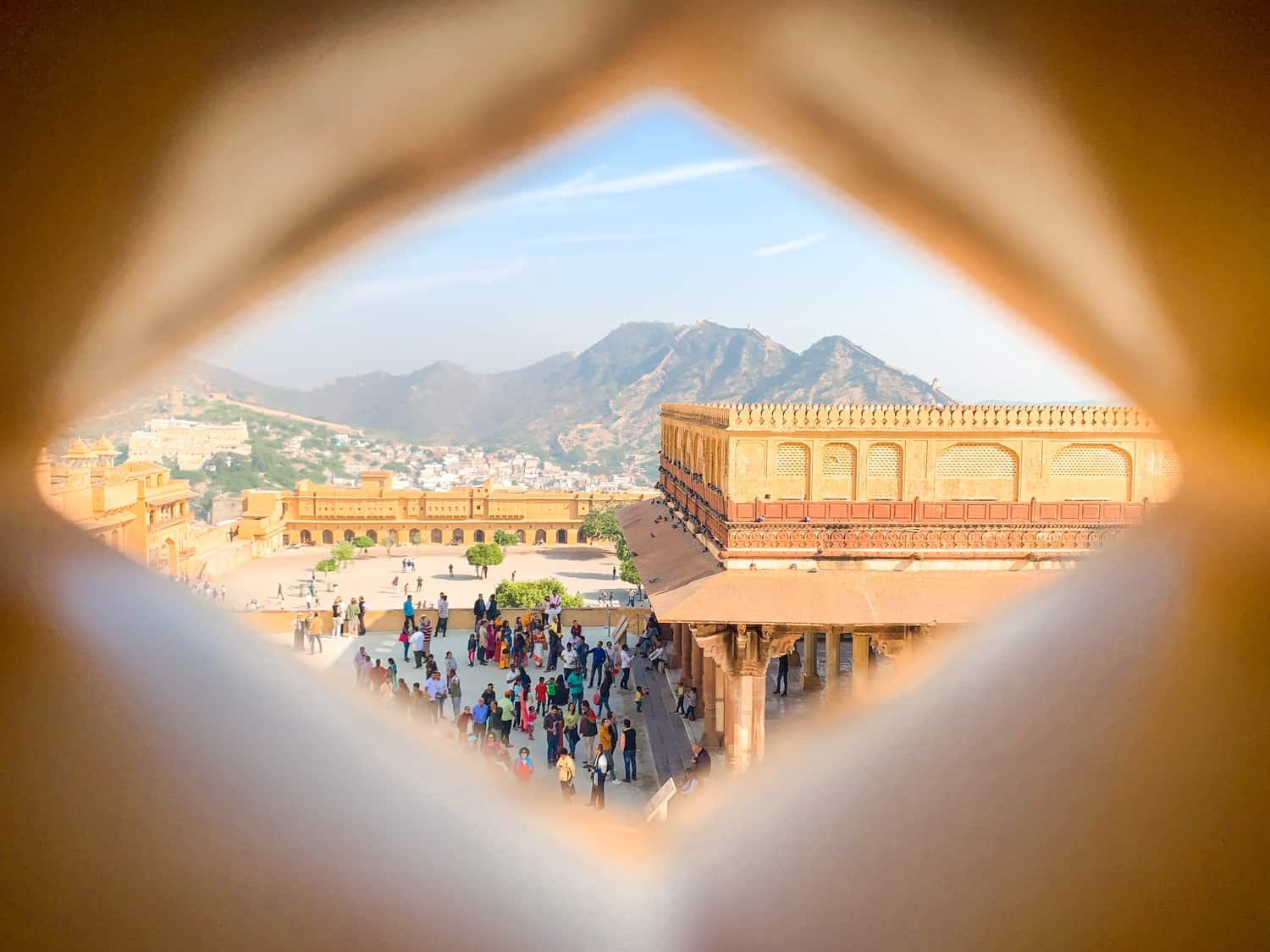
Where to Go After the Golden Triangle
I strenuously recommend seeing more in India than just the Golden Triangle.
While I loved my time there, I must confess that I fell for my next destinations in India so much more. India is an enormous country with so much more to offer than its three most popular cities, no matter how wonderful they are.
I travelled into Rajasthan after I finished up in Jaipur, visiting Bundi, Pushkar , Udaipur , Jodhpur, and Jaisalmer — I’d recommend visiting all five spots if you have the time, as they were all marvellous.
Other options include taking the train down to Mumbai to check out another Indian city that’s different to Delhi, Agra, and Jaipur. You could head to Varanasi. Goa is always a good option, and Kerala is beautiful. You could even head up into the mountains in the north.
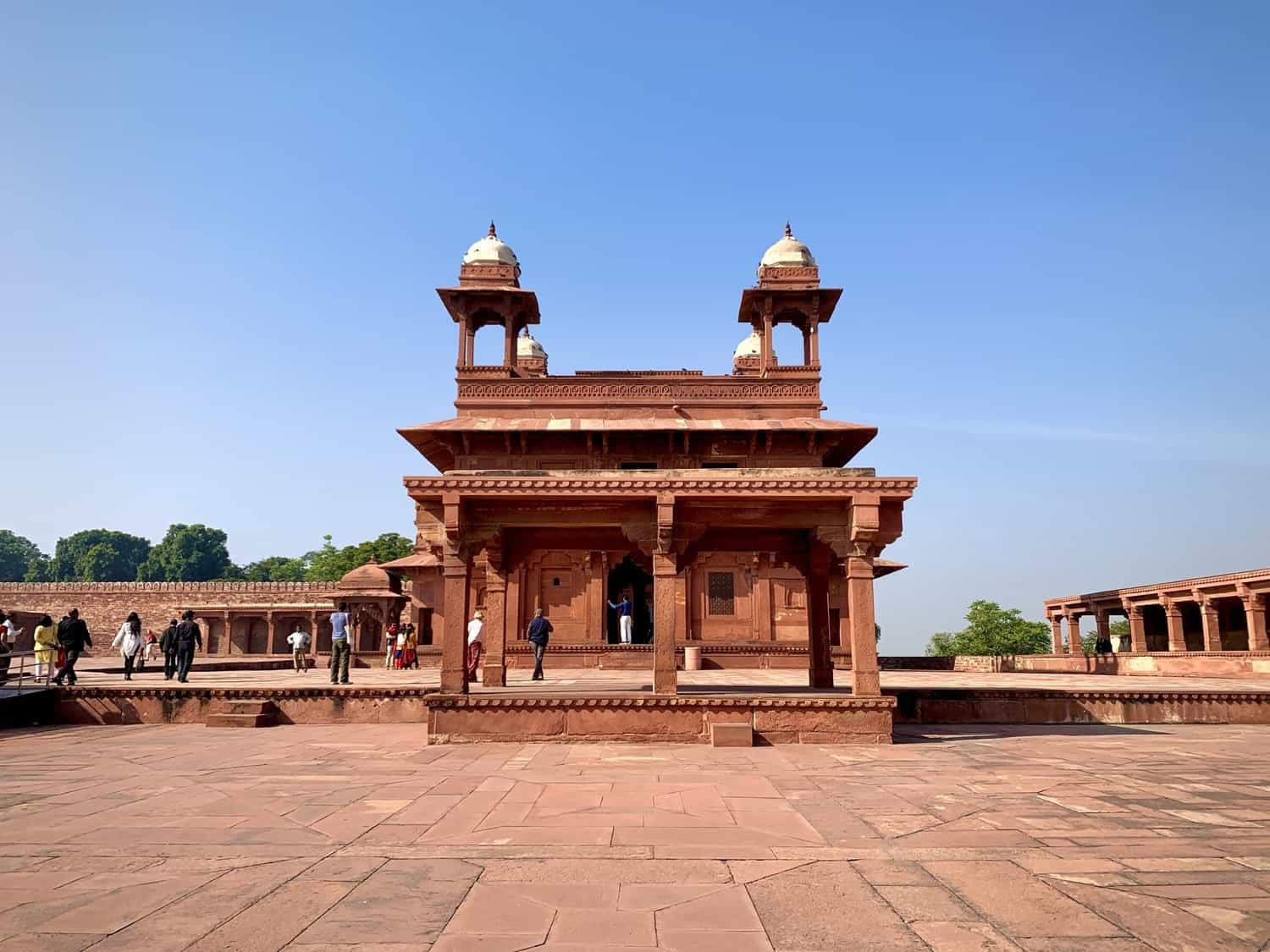
Yes, You Should Go to the Golden Triangle!
If you’re currently on the fence over whether you should visit or not, hopefully this guide convinced you that it’s more than worth visiting.
Give yourself enough time to see everything, and you’ll likely have a wonderful trip! Just make sure you don’t leave India immediately afterwards, because there’s so much more to see.
Related Articles on India 💰 The Cost of Travel in India: My Detailed Budget Breakdown 🇮🇳 12 Reasons Why I Absolutely Loved Rajasthan 💗 Three Perfect Days in Delhi: I Love This City So Much 🙅🏼♀️ How Not to Spend a Day in Jaipur 🤩 The Ultimate Guide to Visiting the Taj Mahal 🐪 Pushkar Travel Guide: 11 Things to Do in Pushkar 🤍 Yes, Udaipur is as Great as Everyone Says 🎶 I Went to a Pink Floyd-Themed Cafe in India
Lauren Juliff
Lauren Juliff is a published author and travel expert who founded Never Ending Footsteps in 2011. She has spent over 12 years travelling the world, sharing in-depth advice from more than 100 countries across six continents. Lauren's travel advice has been featured in publications like the BBC, Wall Street Journal, USA Today, and Cosmopolitan, and her work is read by 200,000 readers each month. Her travel memoir can be found in bookstores across the planet.
Related Posts

The Cost of Travel in South Korea: My 2024 Budget Breakdown

How to Spend Three Perfect Days in Delhi: An In-Depth Itinerary

Pushkar Travel Guide: 11 Things to Do in Pushkar
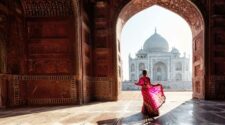
The Ultimate Guide to Visiting the Taj Mahal
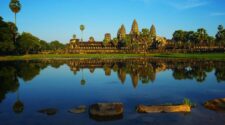
The Cost of Travel in Cambodia: A Detailed Budget Breakdown

How to Spend Two Weeks in Japan: An Itinerary for First-Time Visitors
Hey Lauren! Loved reading this amazing golden triangle guide. I know you didn’t enjoy it too much but Jaipur is my favourite of the three Golden Triangle cities.
Wow. That was a really impressive article. India has a very rich cultural heritage and history. All 3 cities you mentioned have their own identity. Like, Delhi is the Indian Political Hub, Jaipur has heritage forts and archaeological sites and Agra has “The Taj Mahal”. Thanks for your article and I can’t wait to see what you write next.
Thanks so much!
Incredible piece Lauren! I’m going to be heading to India next month – well, maybe not if the coronavirus has anything to do with it! But even so, when I do finally get to the Golden Triangle, this is the guide I’m going to be using! Thanks so much for putting all of this together for us.
Thanks for reading! And I hope you make it there, whether it’s next month or next year :-)
You have lovely photos of India!! They show how symmetrical and amazing their architectural structures are. Hope I can visit India someday too!
What a treasure trove of information. On my way to India in the next couple weeks. I will use your intel as a guide. Many thanks!
Hi Lauren, Thanks for the informative writeup. We were looking for information to help start planning our first short trip to India and found so many useful tips and advice from your article.
Leave a reply Cancel reply
Your email address will not be published. Required fields are marked *
Meet Lauren Juliff
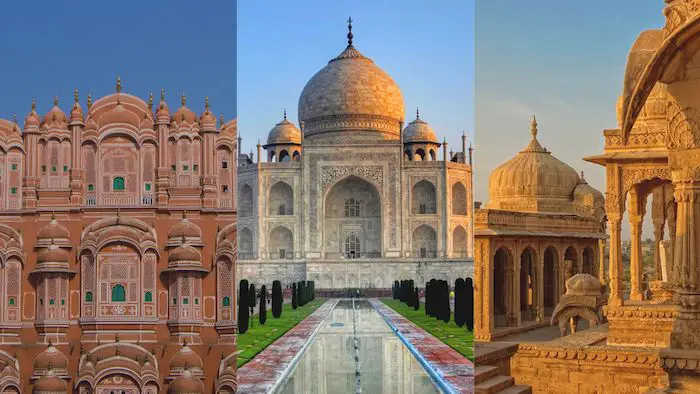
Golden Triangle in India: Ultimate guide to India’s best tourist circuit
- June 20, 2023
Explore the captivating allure of the Golden Triangle in India, a mesmerizing introduction to the rich tapestry of sights and sounds that define region and country. From bustling bazaars and the exhilarating whirl of tuk-tuks, to tranquil temples, palaces and mosques emanating grandeur, this is India in its most vibrant and chaotic glory.
The colorful experience of the Golden Triangle between New Delhi, Agra and Jaipur, this enchanting journey is bound to leave an indelible impression, igniting a desire to return again. Here is a guide to answer all of your question before you embark on a journey around India’s Gold Triangle.
What is the Golden Triangle in India?
The Golden Triangle in India is a popular route that connects the cities of Delhi, Agra, and Jaipur, forming an almost-equilateral triangle when plotted on a map. This well-known tourist track takes you through the states of Uttar Pradesh and Rajasthan, showcasing the best of India. So, why is it called the “Golden” Triangle? The answer lies in the extraordinary religious and historical sights that await you at each of these three stops.
Starting in the vibrant capital of Delhi, with its bustling streets and vibrant atmosphere, the journey continues to the enchanting Jaipur, the Pink city of India and finally the magnificent Taj Mahal in Agra. This crafted trip ensures that you get to experience the highlights of the region, from the sacred city of Varanasi along the banks of the Ganges to the famous temples of Khajuraho. It’s a tailor-made adventure that can be completed in a few days!
How to Plan for The Golden Triangle Tour?
Setting out on a captivating journey through India’s Golden Triangle is an adventure that promises to leave you spellbound. With the trip encompassing Delhi, Agra, and Jaipur, it is a treasure trove of rich history, vibrant culture, and architectural wonders. To chart a course for your Golden Triangle India tour itinerary, careful planning is essential.
To help you during your travels, we have come up with one of the best itineraries to ensure you don’t miss a thing on your road trip around India! This guide will provide you with valuable insights and expert tips to help you craft a seamless and unforgettable travel experience.
Day 1: New Delhi
To kick off your Golden Triangle adventure, immerse yourself in the vibrant modernity of New Delhi. This area boasts wide, tree-lined avenues and impressive colonial architecture, serving as the central government’s headquarters since 1931. Here are some of the key highlights that you can visit in New and Old Delhi:
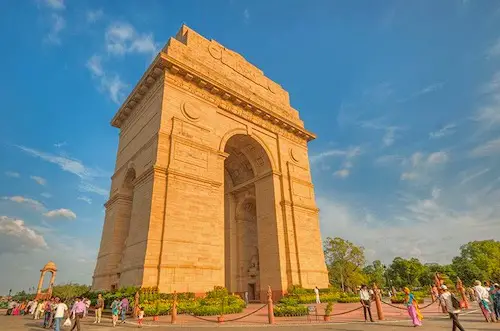
India Gate: The India Gate, also known as the All India War Memorial, is dedicated to the courageous soldiers, who fought for their country. The Gate represents a symbol of bravery. Additionally, itt faces the President’s House, Rashtrapati Bhavan, and features the Amar Jawan Jyoti, a perpetual flame honoring the gallantry of fallen warriors.
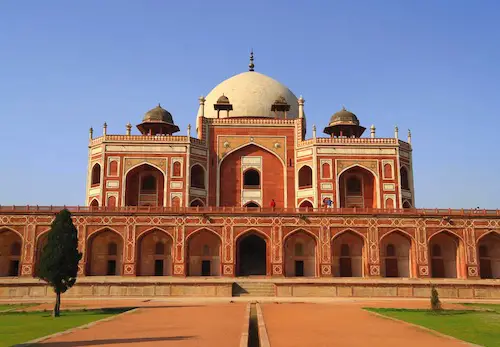
Humayun’s Tomb: A UNESCO World Heritage Site, Humayun’s Tomb showcases the exquisite artistry of Persian architects under the patronage of Mughal Emperors. It is India’s first garden tomb constructed with red sandstone and houses the tomb of Humayun and graves of notable Mughal Emperors/ Empresses.
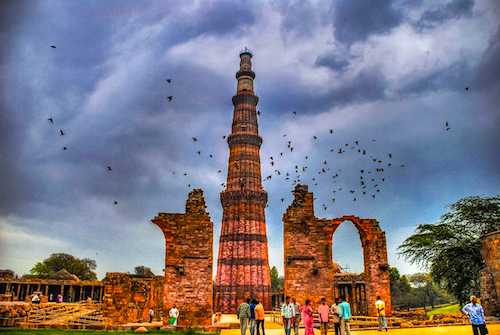
Qutub Minar: An intriguing architectural marvel, Qutub Minar is the tallest brick minaret in the world. The UNESCO Heritage site was constructed in the 12th century and captivates visitors with its grandeur.
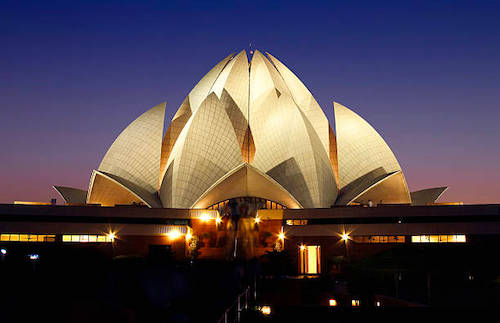
Lotus Temple: Renowned for its stunning architectural beauty, the Lotus Temple is situated in Shambhu Dayal Bagh, New Delhi. Resembling a lotus flower, it was built in 1986 as a Baháʼí House of Worship welcoming people of all faiths and backgrounds. The structure consists of 27 individual marble-clad “petals,” which are grouped in clusters of three, forming a total of nine sides. Each side features nine doors that lead to a central hall with a height of just over 34 meters and can accommodate up to 1,300 people.
Day 2: Old Delhi
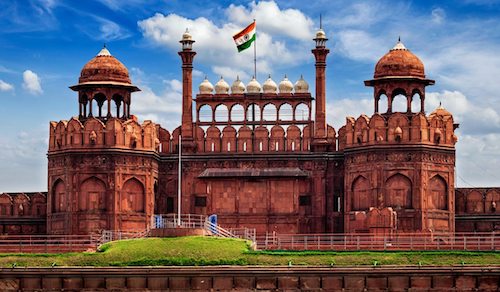
On the second day of your Golden Triangle exploration in India, delve into the captivating realm of Old Delhi, famously known as Shahjahanabad.
Although not the oldest part of Delhi, Shahjahanabad, was constructed during the 17th century for the Mughal emperor Shah Jahan. This historic area boasts the enchanting Chandni Chowk as its main thoroughfare, the Red Fort (Lal Qila) as its grand citadel, and the impressive Jama Masjid as its congregational mosque.
While much of the wall has crumbled over time, and only four out of the original fourteen gates remain, Old Delhi still retains its allure with countless intriguing nooks and crannies. Be prepared for the crowds and traffic by ensuring you have ample stamina, patience, time, and, perhaps, a few well-deserved breaks for chai along the way.
Day 3: Agra
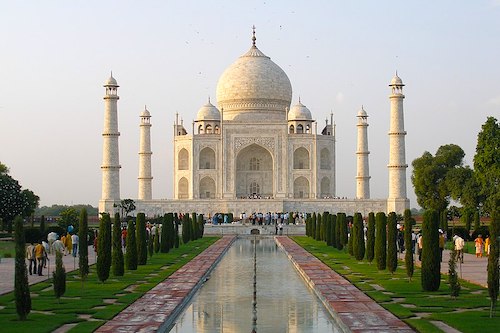
On the third day, brace yourself for a truly awe-inspiring experience as you journey to the magnificent Taj Mahal. The crowning jewel of Agra and one of the most romantic places on Earth.
No words can truly capture the immense scale and regal splendor of the Taj Mahal when you witness it up close. Aim to visit during sunrise or sunset, when the Taj is at its most breathtaking. While exploring, also visit the nearby Agra Fort, from where you can catch glimpses of the Taj Mahal rising majestically in the distance.
You can either hire a private tour guide or make your way to the Taj Mahal on your own. Besides the palacel, don’t hesitate to explore the lesser known highlights of the area such as the Mughal Heritage Walk through Kanchhpura village, Taj Nature Walk and the old bazaar where nature, wildlife, and cultural encounters offer an authentic taste of India’s unique charm.
Now lets dive into Day 4 of the Golden Triangle trip!
Day 4: Fatehpur Sikri
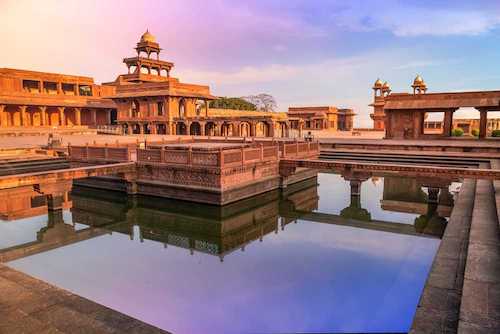
Located 37 kilometers from Agra, Fatehpur Sikri is a captivating city primarily constructed using red sandstone. It was built by the Mughal Emperor Akbar, who intended it to be his capital. However, due to a water scarcity issue, the city was eventually abandoned and within 20 years, the Mughal capital was shifted to Lahore.
Fatehpur Sikri was constructed between 1571 and 1585 and currently has a population of approximately 30,000, despite being a deserted city. Fatehpur Sikri represents the epitome of Mughal architectural brilliance during its prime. Although the city lies in ruins, it is a must-visit destination for anyone traveling to Agra. In fact, it is worth spending some time exploring this historical site, particularly to witness the breathtaking sunset over the ruins.
Fatehpur Sikri stands as a remarkable example of the harmonious fusion of Hindu and Muslim architectural styles. The Fatehpur Sikri Mosque is believed to be modeled after the mosque in Mecca, showcasing a blend of Persian, Hindu, and Islamic design elements.
Day 5: Jaipur

You may want to allocate two days to immerse yourself in the flamboyant showcase of Rajasthani architecture in Jaipur. Regarded as the third cornerstone of India’s “Golden Triangle,” Jaipur has always been a prominent destination for travelers. At the heart of the Pink City, the historic walled quarter houses renowned bustling bazaars for the best shopping in Jaipur that rank among the liveliest in Asia. These vibrant markets are celebrated for their textiles, jewelry, and exquisite Rajasthani handicrafts.
As you wander through the city center, you’ll chance upon historical gems like the Hawa Mahal and the impressive City Palace in Jaipur . Jaipur is renowned for its traditional crafts and designs, making it an ideal place to indulge in fabric shopping and find unique souvenirs to bring back home.
Day 6: Jaipur
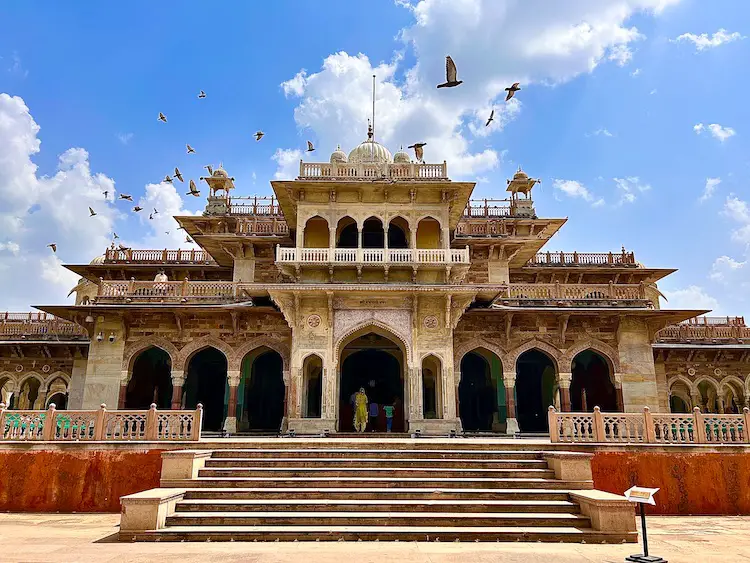
On the second day of your Jaipur visit, explore the tranquil and less bustling areas of the Pink City. Areas such as the scenic Ram Niwas Gardens and the central museum of the state i.e Albert Hall Museum . As you venture further, you’ll encounter fascinating remnants of royal reign, including the notable Nahargarh Fort, the cenotaphs at Royal Gaitor, and the temples filled with playful monkeys at Galta.
Moreover, the hills and valleys surrounding Jaipur are adorned with some of the regions most famous palaces and forts , temples, and remnants of the Kachchwaha dynasty’s thousand-year history. A prominent highlight is the splendid Amber Palace , which makes for an excellent day trip, easily combined with a visit to the impressive Jaigarh Fort.
You can also get a composite ticket which gives you access to the following monuments in Jaipur:
- Hawa Mahal
- Amber Palace
- Jantar Mantar
- Albert Hall
- Sisodia Garden
- Vidhyadhar Garden
Day 7: South Delhi
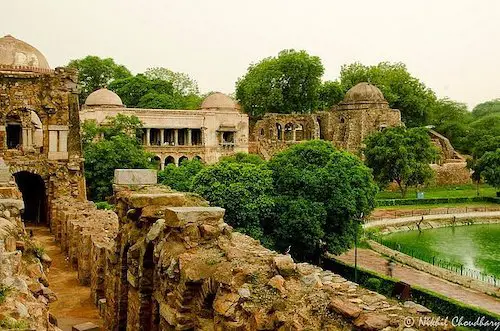
Concluding your Golden Triangle journey, a fantastic way to wrap up your exploration is by returning to Delhi and immersing in the vibrant ambiance of South Delhi. While many early settlements, including Delhi’s first city at Qila Rai Pithora, can be found in this region, it is distinct from the renowned “Old Delhi” and lies south of the meticulously planned boulevards of Lutyens’ Delhi.
The rapid expansion of suburban Delhi has engulfed what was once countryside, integrating entire villages within its borders. Today, South Delhi is home to some of the city’s newest and most happening locales, with Hauz Khas Village being a notable highlight. This lakeside area is brimming with shops, bars, and restaurants, offering a delightful ambiance to end your Golden Triangle journey.
Where Can I Find Solace Away From The Crowds?
In the vast expanse of the Golden Triangle in India, one of the best ways to escape the bustling crowds is by stepping into the numerous Hindu, Sikh, and Muslim buildings scattered throughout the cities. These architectural marvels not only offer moments of tranquility but also showcase some of the most stunning structures in the region.
In Delhi, a short drive away from the city center, a visit to Swaminarayan Akshardham is highly recommended. This Hindu temple, constructed in 2011 using traditional techniques, exudes grandeur and intricate craftsmanship reminiscent of a bygone era. The temple complex is massive, and the prohibition of photography provides a welcome opportunity for peaceful contemplation, away from the cameras that dominate most of the city’s monuments.

The Taj Mahal and Agra Fort are inevitably crowded, so if you truly seek respite, consider going on a day trip to Fatehpur Sikri. This small city was once the capital of the Mughal Empire and lies just an hour away from Agra. The majestic Jodha Bais palace buildings, crafted from red sandstone, and the imposing Jama Masjid mosque receive comparatively fewer visitors, offering a serene atmosphere to explore.
Among the cities of the Golden Triangle, Jaipur stands out as the least frenetic. Simply wandering through its backstreets allows you to stray from the main tourist routes and discover hidden gems. For a panoramic view of the sprawling streets, venture outside the city to Nahargarh Fort. Another fascinating experience awaits at Galtaji, an ancient temple complex that has become a haven for hundreds of rhesus macaque monkeys, providing an entertaining encounter with nature.
How To Travel To the Golden Triangle in India?
There are several options for transportation, depending on your preferences and budget. If you’re looking for a budget-friendly choice, buses are the cheapest way to travel within the region. Indian buses offer a unique experience, with passengers squeezing in and finding places to perch on armrests or even sitting in the aisle.
However, the most highly recommended mode of travel is by train. Taking a train allows you to witness the picturesque countryside and catch glimpses of rural India during your journey. It is advisable to book your train tickets in advance, either online or at a train station, to secure your preferred travel dates and class.
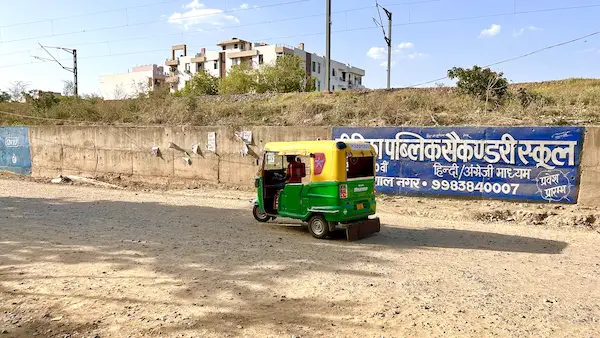
If you have limited time and want to make the most of your visit, hiring a taxi from Uber or In-Drive is a convenient option. This allows you to efficiently explore the Golden Triangle and see as much as possible within your time frame.
Within the cities themselves, opting for an auto-rickshaws (also known as a tuk-tuk) for short distances between destinations is highly recommended. These small vehicles are adept at maneuvering through the heavy traffic, swiftly navigating between taxis and trucks. While the rides can be exhilarating, they are also relatively quick, cost-effective (remember to agree on the fare beforehand), and provide an exciting way to experience the vibrant chaos of the Golden Triangle in India.
How Can I Prevent Getting Sick From Food And Water In The Golden Triangle?
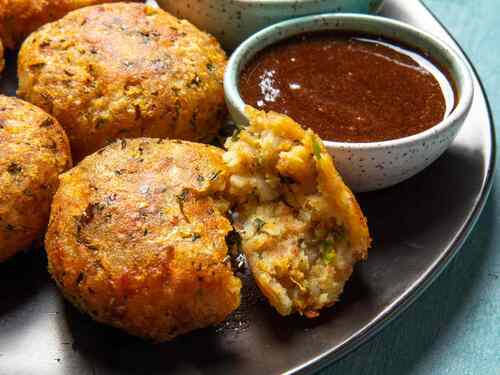
While not everyone falls ill while touring the Golden Triangle in India, it’s important to take precautions to avoid any potential stomach issues that could dampen your trip. The infamous “Delhi belly” is typically caused by consuming unsafe water. To mitigate this, it is essential to use water purification tablets or buy bottled water.
When it comes to food, ensure that your meals are always served hot and freshly cooked. It’s advisable to avoid consuming raw fruits and vegetables that may have been washed with unfiltered water. However, don’t let this discourage you from indulging in the delicious curries and Indian snacks available during your trip.
Pooja and I have been traveling through India for sometime and (knock on wood) we have not got sick from the food or water. But that is because we are mindful of where and what we eat. If in doubt about the food and water hygiene somewhere, just skip it and go somewhere else to eat!
When is The Best Time To Visit The Golden Triangle In India?
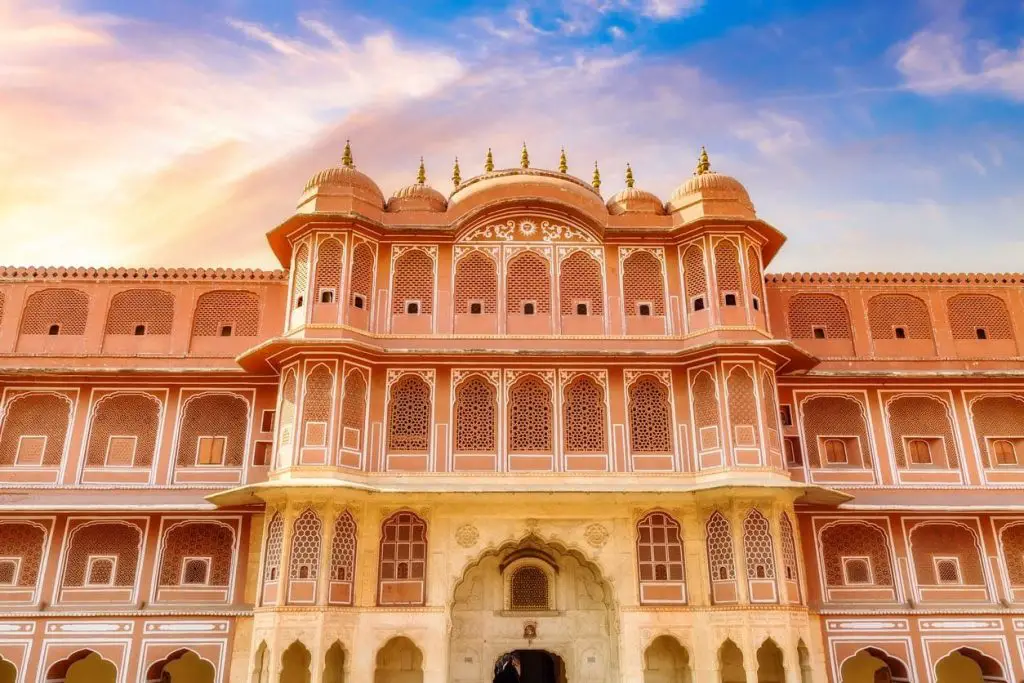
The best time to visit the Golden Triangle is from November to March when the weather across most of the country is pleasant. During this period, Delhi, Agra, Rajasthan, and Varanasi offer ideal conditions for exploration.
October and November also present suitable weather conditions for visiting Delhi and the Golden Triangle, with temperatures similar to those in February and March. However, it’s important to note that during October and November, popular tourist sites and landmarks may be more crowded with both domestic and international visitors. This could lead to some inconvenience, particularly at attractions like the Red Fort or the Taj Mahal.
Just keep in mind that determining the best time to travel to the Golden Triangle can be difficult due to the region’s diverse weather patterns. India experiences distinct seasons, including the wet and humid monsoon season, as well as the dry and cooler season.
Key Takeaways: The Golden Triangle in India
If you desire a hassle-free and effortless trip planning and booking experience for your visit to India, rely on the expertise of our local travel experts. They will ensure that your trip aligns perfectly with your dreams and expectations.
Please note that we may earn a commission when you click on the links provided in this article. However, rest assured that this does not impact our commitment to maintaining high editorial standards. We only recommend services that we genuinely believe will enhance your travel experiences.
If you are looking for an easy way to see the Golden Triangle in India, consider using a guide from Get Your Guide! They have a lot of options and some great prices on guided tours! You can use my affiliate link below if you want to support me, and help me buy a caramel latte while I write my next blog!
FAQs: The Golden Triangle in India
Below are the most frequently asked questions regarding the Golden Triangle in India.
The Golden Triangle in India is a renowned tourist circuit that weaves together the vibrant cities of New Delhi, Agra, and Jaipur. This captivating route derives its name from the triangular shape created by the strategic positioning of these destinations on a map.
Discover the Golden Triangle in northern India, a captivating journey from bustling Delhi to the majestic Taj Mahal and vibrant Jaipur. This unforgettable adventure unveils the region’s most significant and beautiful sights, leaving a lasting impression on your heart and soul.
Traveling by rail is an excellent option for exploring the Golden Triangle. The Northern and Western Railways operate along these routes, offering convenient connections. Experience the speed and comfort of trains like the Rajdhani Express, known for its efficient service on the Delhi-Jaipur route. Another popular choice is the Ajmer Shatabdi, which swiftly covers the distance between these cities in just 4 hours and 20 minutes.
The best time to visit the Golden Triangle in India is between October and November or February and April, when temperatures are cooler and comfortable throughout the day.
Leave a Reply Cancel Reply
Your email address will not be published. Required fields are marked *
Add Comment *
Save my name, email, and website in this browser for the next time I comment.
Post Comment
Travel Guide for the Golden Triangle in India
:max_bytes(150000):strip_icc():format(webp)/10947453_10153084623948270_8191342691038933499_o-591d1e8d3df78cf5fa731909.jpg)
Belgapress/Getty Images
The evocative Golden Triangle in India is one of the country's most popular tourist circuits. Comprising Delhi , Agra, and Jaipur , it gets its name from the triangle that these cities form. Roughly located an equal distance of around 125–155 miles from each other in northern India, the cities provide a classic and unforgettable introduction to the country and its charms.
What also makes the Golden Triangle a great tourist circuit is its accessibility. The destinations are well connected by road and Indian Railways "superfast" trains. Hiring a car and driver is a popular and convenient way of getting around if you don't want to take the train.
Going on a tour is also an excellent option if you want all of your travel arrangements taken care of. Both small group tours and private tours are possible.
Delhi , the capital city of India, is where many people start out on their trip. It's divided into two parts—crumbling Old Delhi and the orderly New Delhi—which exist side-by-side but feel as if they're worlds apart. It's worth spending a few days exploring the city's ancient mosques, forts, and monuments left over from the Mughal rulers that once occupied the city. As many of them are set in attractive landscaped gardens, you can relax at the same time!
Agra is the home of India's most famous monument and one of the Seven Wonders of the World, the Taj Mahal . Hence, it's a must-see destination on anyone's trip to India. Words cannot do the Taj Mahal justice; its incredible detail simply has to be seen to be appreciated. Agra is easily accessible by road or rail from Delhi. The journey takes around three hours.
Rajasthan's desert capital of Jaipur is affectionately called the "Pink City" because of the pink walls and buildings of its Old City . It lures visitors with its stunning remnants of a bygone era. Jaipur's most recognizable attraction is the Hawa Mahal (Wind Palace), which overlooks the main street in the lively Old City. Old forts and palaces, royal residences, and outstanding shopping opportunities ensure there's plenty to see and do in Jaipur. Travel time from Agra and Delhi to Jaipur is four to five hours
17 Top Tourist Places to Visit in Rajasthan
16 Best Tourist Destinations in India
15 Top Tourist Places to Visit in North India
The Ultimate Guide to the Taj Mahal in India
Jaipur Guide: Planning Your Trip
Guide to Luxury Train Tours of India
14 Famous Forts and Palaces in India that You Must See
Jaipur's Amber Fort: The Complete Guide
India Travel: Issues to Know at Top Tourist Places
Your Ultimate Trip to India: The Complete Guide
20 Top Things to Do in Diverse India
Trips to Delhi: A Complete Guide
Guide to the Best Budget Hotels in India
Essential Guide to Hiring a Car and Driver in India
Fatehpur Sikri in India: The Complete Guide
12 Diverse Ways and Places to Celebrate Diwali in India
- International
- Video Games
- Asian Games
- App Development
- Software Development
- Website Development
- Health & Fitness
- Marriage Issues
- Shubh Muhurat
- Electronics

Iran President Dies in Chopper Crash, Presidential Polls On June 28

RCB’s Celebrations vs. Dhoni’s Farewell: A Lesson in Sportsmanship

A brief look at the life of Iran president (Ebrahim Raisi)

LIVE Updates: Iran President Dies In Helicopter Crash, Vice President Takes…
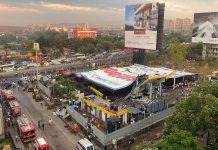
At least 14 killed as billboard collapses in Mumbai during thunderstorm

Here’s how much Rihanna is getting paid for the Ambani wedding…

Crowd Screams “Sania Mirza” At Sana Javed During PSL Game

Rashami Desai reacts to Ranveer Singh-Johnny Sins’ Ad

Mohan Kapur, ‘Ms. Marvel’ Actor, Achieves Milestone as Second Bollywood Star…

Rahmanullah Gurbaz: Mother still recovering in hospital but knew my KKR…

MS Dhoni saves Hardik Pandya! Selectors wanted to send him back…

Team India T20 WC Jersey: Team India’s T20 World Cup jersey…
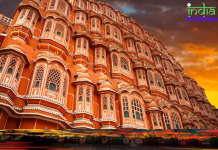
Jaipur Monuments & Tourist Places Details

18 Private Places For Couples in Jaipur For A Super Romantic…
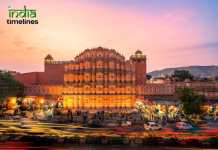
Best Places To Visit In Jaipur 2024: Top Tourist Attractions
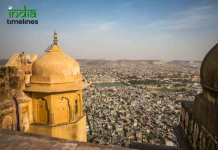
15 ROMANTIC PLACES TO VISIT IN JAIPUR FOR COUPLES

Google AI: Useful for Everyone – Latest AI News and Updates

Introducing GPT-4o: Elevating AI Technology for All

Unveiling the Future: Vivo X Fold 3 Pro Set to Redefine…

Google’s Project Astra: An Overview of Future AI Assistants

New COVID-19 Variant Alert! KP.2 Can Evade Your Immunity—Here’s How You…

Celebrate World Hypertension Day 2024 with Yoga Asanas That Safeguard Against…

Top 5 Restaurants in Jaipur for Family and Friends Dining

Common Mistakes Affecting Vitamin D Absorption Despite Taking Supplements
- Tour and Travel
India Golden Triangle: A Journey Through History, Culture & Heritage of India
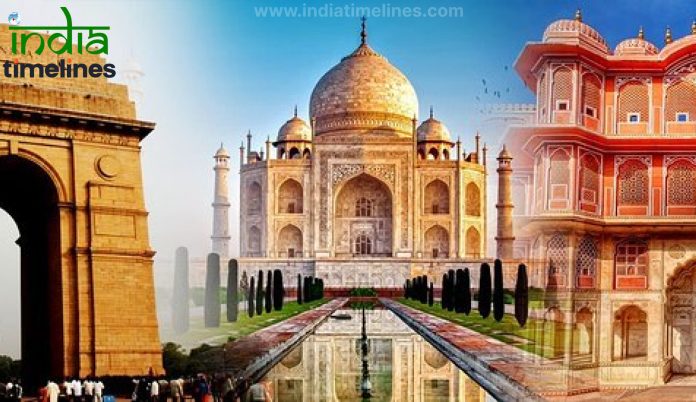
India’s Golden Triangle, a term resonating with history, culture, and architectural marvels, forms a remarkable tourist circuit encompassing three iconic cities – Delhi, Agra, and Jaipur. This article will guide you through the enchanting journey of the India’s Golden Triangle tour, from its historical significance to practical travel tips and beyond. Explore the rich heritage of Delhi, marvel at the timeless beauty of the Taj Mahal in Agra, and immerse yourself in the vibrant culture of Jaipur. Discover the diverse landscapes, historical landmarks, and culinary delights that make India’s Golden Triangle tour packages an unforgettable experience for every traveler. Whether you’re a history enthusiast, an architecture lover, or someone seeking a unique cultural adventure, the Golden Triangle of India has something extraordinary to offer. Join us on this exploration of India’s Golden Triangle, where every corner tells a tale of the nation’s glorious past and vibrant present.
Definition of the India Golden Triangle
The India Golden Triangle is a tourist circuit that connects the country’s capital, Delhi, with the historical city of Agra and the vibrant Jaipur, forming a triangular shape on the map. This circuit is renowned for its rich cultural heritage, stunning monuments, and diverse experiences.
Importance and Popularity of the Golden Triangle Circuit
The Golden Triangle holds immense importance in the world of travel, attracting millions of tourists annually. Its popularity can be attributed to the presence of UNESCO World Heritage Sites, architectural marvels, and a glimpse into India’s past and present.
Destinations of the Golden Triangle
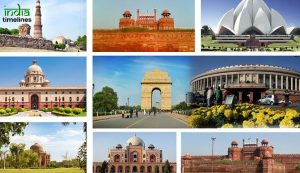
Delhi, the capital city of India, is a vibrant metropolis that seamlessly blends its rich history with modernity. Here’s a comprehensive overview of Delhi, covering its history, famous places, destinations, palaces, foods, markets, adventure activities, and tours.
Delhi has a history that spans several millennia. It has been a witness to the rise and fall of various empires, including the Maurya, Gupta, Mughal, and British Empires. The city has served as the capital for many rulers, each leaving their mark on its landscape. The historical significance of Delhi is reflected in its numerous monuments, forts, and archaeological sites.
Famous Places:
- India Gate: A prominent war memorial built in honor of soldiers who died in World War I.
- Qutub Minar: A UNESCO World Heritage Site, this towering minaret is an iconic symbol of Delhi’s history.
- Red Fort: A magnificent fort built by Emperor Shah Jahan, known for its impressive architecture.
- Humayun’s Tomb: Another UNESCO World Heritage Site, this tomb is a masterpiece of Mughal architecture.
- Lotus Temple: A Bahá’í House of Worship with a unique lotus-shaped design.
Destinations:
- Old Delhi: A labyrinth of narrow lanes, bustling markets, and historical monuments, including Jama Masjid.
- New Delhi: The modern part of the city with government buildings, embassies, and diplomatic areas.
- Connaught Place: A popular commercial and business hub with shops, restaurants, and cultural venues.
- Hauz Khas Village: A trendy neighborhood with a mix of historical structures, boutiques, and cafes.
While Delhi doesn’t have traditional palaces like some other Indian cities, the Red Fort and Humayun’s Tomb can be considered as palatial structures due to their grandeur and historical significance.
- Paranthas at Paranthe Wali Gali: Famous for its stuffed flatbreads, a must-try for food enthusiasts.
- Chandni Chowk Street Food: Explore the diverse and delicious street food options in Old Delhi.
- Karim’s: Known for its Mughlai cuisine, it’s a culinary landmark in the city.
- Dilli Haat: A market showcasing diverse regional cuisines from across India.
- Sarojini Nagar Market: Famous for affordable clothing and accessories.
- Dilli Haat: A cultural hub offering handicrafts, traditional artifacts, and regional cuisines.
- Chandni Chowk: A bustling market with a wide range of goods, from spices to jewelry.
Adventure Activities:
- Hot Air Ballooning: Get a bird’s-eye view of Delhi’s landmarks from a hot air balloon.
- Rock Climbing at Damdama Lake: Enjoy adventure sports near Delhi at Damdama Lake.
- Cycling Tours: Explore the city on two wheels, discovering hidden gems and historic sites.
Tours and Travels:
- Heritage Walks: Guided walks through historical neighborhoods like Old Delhi and Mehrauli.
- City Sightseeing Tours: Explore both Old and New Delhi with organized sightseeing tours.
- Day Trips to Nearby Destinations: Visit Agra (Taj Mahal) or Jaipur (Pink City) on day trips from Delhi.
Delhi’s dynamic blend of history, culture, and modernity makes it a fascinating destination for travelers seeking diverse experiences.
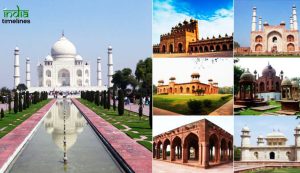
Agra, located in the northern state of Uttar Pradesh, India, is a city steeped in history and known for its iconic monuments, vibrant markets, and delectable cuisine. Here’s a brief overview of Agra’s history, famous places, destinations, palace, foods, markets, adventure activities, and tours and travels:
Agra has a rich historical background, with its most significant period being during the Mughal Empire. It was the capital of the empire in the 16th and 17th centuries. The city witnessed a cultural renaissance under the rule of Emperor Akbar, Shah Jahan, and Jahangir. The most famous monument, the Taj Mahal, was built by Shah Jahan in memory of his wife Mumtaz Mahal.
Famous Places and Destinations:
- Taj Mahal: A UNESCO World Heritage Site and one of the Seven Wonders of the World, the Taj Mahal is an exquisite white marble mausoleum that attracts millions of visitors each year.
- Agra Fort: Another UNESCO World Heritage Site, the Agra Fort is a massive red sandstone fort that served as the main residence of the emperors of the Mughal Dynasty.
- Fatehpur Sikri: Located just outside Agra, Fatehpur Sikri is a well-preserved city built by Akbar in the 16th century and is also a UNESCO World Heritage Site.
- Mehtab Bagh: A beautiful garden complex located across the Yamuna River from the Taj Mahal, providing stunning views of the monument.
The Agra Fort can be considered a palace in itself, as it served as the main residence of the Mughal emperors. The architecture and design within the fort showcase the grandeur and opulence of the Mughal era.
Agra offers a variety of delicious Mughlai and North Indian cuisine. Some must-try dishes include:
- Petha: A sweet made from ash gourd, often flavored with saffron and cardamom.
- Dalmoth: A spicy and tangy snack made from lentils, nuts, and spices.
- Bedai with Aloo Sabzi: A popular breakfast dish consisting of deep-fried lentil pastries served with spicy potato curry.
- Sadar Bazaar: A bustling market offering a variety of goods, including handicrafts, leather items, and clothing.
- Kinari Bazaar: Known for its vibrant and colorful shops selling traditional Indian clothing, jewelry, and accessories.
While Agra is primarily known for its historical and cultural attractions, adventure activities are limited within the city. However, nearby regions offer opportunities for wildlife safaris and nature treks.
Several tour operators offer guided tours of Agra, providing insights into the city’s history and culture. Popular tour options include day trips from Delhi and multi-day tours covering the Golden Triangle (Delhi, Agra, and Jaipur).
Agra, with its timeless beauty and historical significance, continues to be a major destination for travelers seeking a glimpse into India’s rich heritage.
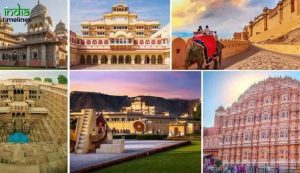
Jaipur, the capital city of the northwestern Indian state of Rajasthan, is a vibrant and culturally rich destination that offers a fascinating blend of history, architecture, and modernity. Here’s a comprehensive overview of Jaipur covering its history, famous places, destinations, palace, foods, markets, adventure activities, and tours and travels.
Jaipur, also known as the “Pink City,” was founded in 1727 by Maharaja Sawai Jai Singh II. The city was planned according to the principles of Vastu Shastra, an ancient Indian architectural style. Jaipur served as the capital of the princely state of Jaipur and played a crucial role in the history of Rajasthan.
- Hawa Mahal (Palace of Winds): A stunning palace with a unique honeycomb facade, allowing royal women to observe street festivals without being seen.
- City Palace: A magnificent complex that includes courtyards, gardens, and the Chandra Mahal, which is still the residence of the royal family.
- Amber Fort: Perched on a hill, this majestic fort offers panoramic views of the surrounding landscape and features intricate architecture.
- Jantar Mantar: The largest stone astronomical observatory in the world, recognized as a UNESCO World Heritage Site.
- Nahargarh Fort: Built on the Aravalli hills, offering breathtaking views of the Pink City.
The City Palace in Jaipur is a prime example of Rajput and Mughal architecture. The complex houses museums, courtyards, and the royal residence. It provides a glimpse into the opulent lifestyle of the Maharajas.
Jaipur is a paradise for food enthusiasts, offering a variety of delectable dishes. Some must-try items include:
- Dal Baati Churma: A traditional Rajasthani dish consisting of lentils, wheat balls, and sweetened crushed wheat.
- Laal Maas: A spicy mutton curry that is a specialty of the region.
- Ghevar: A popular sweet dish made during festivals, especially Teej.
- Johari Bazaar: Known for its jewelry, gemstones, and vibrant textiles.
- Bapu Bazaar: A bustling market famous for traditional Rajasthani textiles, handicrafts, and souvenirs.
- Hot Air Balloon Rides: Soar above the city and enjoy a bird’s eye view of the forts, palaces, and the scenic landscape.
- Elephant Safari: Experience a unique adventure at the Amer Fort with an elephant ride up the hill.
Numerous tour operators offer guided tours to explore Jaipur’s historical and cultural attractions. These tours often include visits to the City Palace, Amber Fort, Hawa Mahal, and other iconic landmarks.
Jaipur’s rich history, architectural marvels, vibrant markets, and delicious cuisine make it a must-visit destination for travelers seeking a blend of tradition and modernity in India.
Planning a Golden Triangle Tour
Best Time to Visit
To make the most of your India Golden Triangle Tour experience, plan your visit during the cooler months, from October to March, avoiding the scorching summer heat. Consider opting for an India Golden Triangle Tour Package to ensure a seamless and enriching journey through the cultural gems of Delhi, Agra, and Jaipur. This comprehensive package will not only cover your travel and accommodation needs but also provide curated experiences, allowing you to delve deeper into the historical and architectural wonders of this iconic circuit. Embrace the allure of India’s rich heritage and vibrant landscapes with the convenience and expertise offered by the India Golden Triangle Tour Package.
Duration and Itinerary
A well-thought-out itinerary covering the key attractions ensures a fulfilling trip. Allocate sufficient time in each city to savor the unique offerings.
Transportation Options
Choose between road, rail, or air travel based on your preferences and schedule. Efficient connectivity makes exploring the Golden Triangle convenient.
Unique Experiences
Local Cuisine Exploration
Delight your taste buds with the diverse culinary offerings in each city, from Delhi’s street food to Agra’s Mughlai delights and Jaipur’s royal Rajasthani cuisine.
Cultural Festivals and Events
Check the calendar for local festivals and events, as they provide an immersive experience into the vibrant traditions and celebrations of the region.
Traditional Arts and Crafts
Support local artisans by exploring traditional markets and indulging in authentic handicrafts, textiles, and jewelry unique to each city.
Tips for a Memorable Trip
Cultural Sensitivity
Respect local customs and traditions, dressing modestly when visiting religious sites, and understanding the cultural nuances enhance your travel experience.
Safety Precautions
Stay vigilant, safeguard your belongings, and follow safety guidelines to ensure a secure and enjoyable journey.
Interacting with Locals
Embrace the opportunity to interact with locals, gaining insights into their way of life and fostering meaningful connections during your travels.
Challenges and Solutions
Dealing with Crowds
Visit popular attractions early in the day or during off-peak seasons to avoid large crowds, enhancing your overall experience.
Managing Travel Expenses
Plan your budget wisely, exploring affordable accommodation options and local eateries without compromising on the quality of your trip.
Language Barriers
While English is widely spoken, learning a few basic phrases in Hindi can go a long way in bridging communication gaps and immersing yourself in the local culture.
Impact on Tourism
Economic Significance
The Golden Triangle contributes significantly to India’s tourism revenue, supporting local businesses and creating employment opportunities.
Preservation Efforts
Balancing tourism with conservation is crucial. Various initiatives strive to preserve the historical sites and maintain the cultural integrity of the region.
Sustainable Tourism Practices
Travel responsibly by minimizing your environmental footprint, supporting eco-friendly initiatives, and respecting the local ecosystem.
Personal Stories and Testimonials
Travelers’ Experiences
Read firsthand accounts of travelers who embarked on the Golden Triangle journey, sharing their awe-inspiring encounters and memorable moments.
Memorable Moments Shared by Visitors
Discover unique perspectives and hidden gems through the personal stories of individuals who immersed themselves in the beauty of the Golden Triangle.
Future Trends
Evolving Tourism Landscape
Stay updated on emerging trends in travel, from technological advancements to changing consumer preferences, influencing the future of Golden Triangle tourism.
Innovations in Travel Experiences
Explore how technology and innovative approaches are reshaping the way travelers engage with historical sites, making the Golden Triangle experience even more captivating.
Potential Changes in the Golden Triangle Circuit
Anticipate developments and potential expansions of the Golden Triangle circuit, opening up new avenues for exploration and discovery.
The Allure Beyond the Triangle
Hidden Gems Nearby
Uncover lesser-known destinations in proximity to the Golden Triangle, offering a more secluded and authentic travel experience.
Off-the-Beaten-Path Experiences
Step off the usual tourist trail to discover hidden gems and connect with the heart and soul of the region beyond the typical attractions.
Lesser-Known Destinations Worth Exploring
Dive into the charm of destinations that may not be part of the traditional Golden Triangle but hold their own unique allure.
Recap of the Golden Triangle’s Appeal
As we conclude this remarkable journey through the Golden Triangle of India, encompassing Delhi, Agra, and Jaipur, take a moment to reflect on the rich tapestry of history, culture, and experiences that make this Golden Triangle Tour of India truly extraordinary. The seamless blend of iconic landmarks, vibrant traditions, and architectural marvels in each city adds a unique charm to this circuit, leaving indelible memories for every traveler.
Encouragement for Travel Enthusiasts to Embark on the Journey
For those seeking a blend of history and modernity, vibrant culture, and architectural marvels, the Golden Triangle beckons. Embark on this enchanting journey, and let the stories of the past unfold before your eyes.
1. What Makes the Golden Triangle Special?
The Golden Triangle is special for its blend of historical significance, cultural richness, and architectural marvels that offer a unique and immersive travel experience.
2. How Can One Avoid Tourist Traps During the Tour?
Research and plan your itinerary wisely, exploring off-peak times and lesser-known attractions to avoid overcrowded tourist spots.
3. Are There Any Specific Cultural Etiquettes to Follow?
Respect local customs, dress modestly in religious sites, and engage with locals with cultural sensitivity to ensure a respectful and enjoyable experience.
4. What Is the Significance of the Golden Triangle in Indian History?
The Golden Triangle reflects the historical heartland of India, showcasing the cultural and architectural achievements of different dynasties over the centuries.
5. How Can Travelers Contribute to Sustainable Tourism?
Support local businesses, practice responsible tourism, and minimize your environmental impact to contribute to the sustainability of the Golden Triangle and its cultural heritage.
RELATED ARTICLES MORE FROM AUTHOR
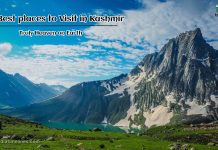
25 Best places to Visit in Kashmir: Truly Heaven on Earth
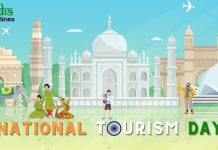
National Tourism Day 2024, Its History, Significance & Theme
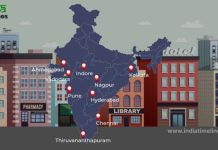
TOP CHEAPEST CITIES TO LIVE IN INDIA 2024
Leave a reply cancel reply, most popular.

Vaccination in India: From May 1, you can choose the vaccine...

Sohrabuddin case ruling shows how Congress misused CBI | Indiatimelines

Asus 6Z India Launch Set for Today – Starting at Rs...

5 Natural And Effective Ways That Keep Mosquitoes Away

‘Pegasus’ is the father of every software in spying, your phone...

RRB NTPC Recruitment 2019-20, Railway 1.3 Lakhs Vacancies 2019

Delhi: Body of 9-year-old girl found in crematorium: 4 including priest...

Tamil actor Vivek died, admitted in Chennai after chest pain
Popular posts.
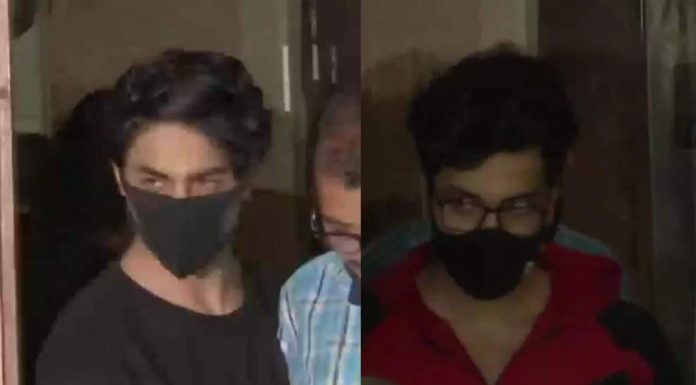
Drugs Case: All three accused including Aryan Khan will remain in NCB custody till tomorrow
Block title.
- National 1152
- International 324
- Education 230
- Politics 230
- Entertainment 228
- Business 161
- Technology 152
- Off-Beat 64

Jim Corbett National Park: The Most Famous Destination for Wildlife Safari


The Best Travel & Tourism Blog of India
India Tours
- International Tours
- Destination Wedding
- Medical Tourism

Plan Your trip
Visiting india’s golden triangle – best travel guide.
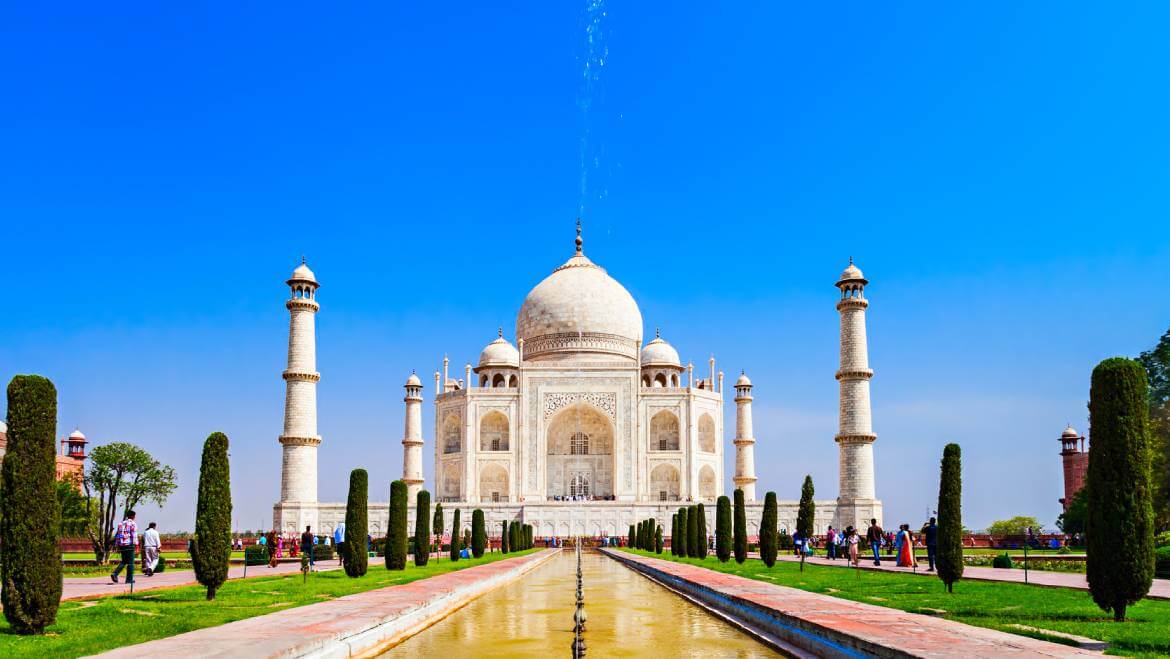
Want to Explore the Cultural Heritage of Incredible India? Here’s the Complete, Updated Guide to the Golden Triangle India Tour.
India, as a country is a kaleidoscope of nature, architecture, philosophies, and flavors, all founded on a long and elaborately structured foundation of history and culture. It is exactly these traditional values that leave its visitors with a feeling of a profound sense of belonging to its land. What India has to offer is beyond its inanimate things. It is also its people and their warm hospitality that they extend towards its guests that attract many tourists to the colorful country of India. With a diverse population and rich heritage, a visit to India is guaranteed to overwhelm your senses and offer you a holiday experience unlike any other. One of the better ways to explore some of the country’s bountiful heritage is to go around covering its golden triangle. The Golden Triangle of India is a popular tourist circuit that offers a marvelous opportunity to learn about the country’s culture and traditions with a visit to India’s most popular attractions. Offering tranquil religious places, architectural splendors and lively street life, the golden triangle tour is an expedition that you must experience at least once. To know more about the Golden Triangle tour of India, check out the blog and plan your next vacation to these places for a memorable time.
What is the Golden Triangle of India?
Golden Triangle Tour is one of the popular tourist circuits in India and is made up of the three most popular tourist destinations in northwest India. The cities of Delhi, Agra and Jaipur come together to form the “Golden Triangle”, since given their location, they tend to form an imaginary triangle on the map. This imaginary triangle has been dubbed ‘golden’ for the abundance of cultural and historical splendors available in each of the three cities. All three of these cities are well-connected by both road and rail and are located at a distance 200-250 km from each other, making it accessible to be grouped together for a tourism circuit. The Golden Triangle Tour of India has to offer some of its most important monuments, markets, and places of historic significance that are sure to satiate the thirst of tourists of all kinds. By choosing this Golden Triangle Tourism Circuit, you will be able to explore the rich cultural and historical heritage of this incredible land called India.
Why Should You Choose a Golden Triangle Tour?
There are numerous reasons why the Golden Triangle of India remains one of the most sought-after tourism circuits in the country. Covering the cities of Delhi, Agra, and Jaipur, the tour explores various aspects of these historic cities of India.
The following will help you understand better about why you should choose the golden triangle for your next vacation and the things you will get to experience during as part of it:
A Celebration of Culture
India is a land of festivals and celebrations, making you experience various kinds of fairs and festivals that celebrate different customs all year long. The country comes together to celebrate some of its major festivals like Holi, Diwali, Teej, Dussehra among many others. Along with these festivals, there are also many local and cultural fairs that are sure to grab your interest, owing to their historical and cultural significance. You can experience these celebrations specifically on your tour in the Golden Triangle Circuit. Witnessing these celebrations is one of the top things you can do on your Golden Triangle Tour. Partaking in which will help you to know the country better.
Ornate Architecture
It is a widely held belief that in order to know about the history of a country, you have to start learning about its architecture first. With abundance in historic architecture, India is one such country in the world which is known for its architectural diversity. With nine out of thirty-four monuments in the Golden Triangle circuit being declared as World Heritage Sites under UNESCO, there are so many places to visit! From historical forts, palaces, and Havelis to temples, mosques, and ancient ruins – the three cities in the circuit are prime destinations to explore the architectural wonders of India.
Serene Spirituality
One of the top reasons many travelers visit India is to find a sense of calm and peace, and to find an environment that will help them enlighten their souls. India, being the birthplaces of several major world religions like Hinduism, Jainism, and Buddhism, among others, has a plethora of options of significant religious and spiritual places for you to explore. A land doused with myths, legends and a witness to some major religious events, the Golden Triangle Circuit includes some amazing temples, mosques, gurudwaras and other religious places where you can find peace while you delve into your spiritual journey.
Diverse Cuisines
If we are talking about the top reasons for choosing the Golden Triangle Tour circuit, the list cannot be concluded without talking about the cuisines. Indian culture is hugely influenced by the food, which also plays an important role in its everyday life as well. If we talk about the cities in Golden Triangle Circuit, you will find a great diversity within the cuisines. Where the food in Delhi and Agra has been dominated by Persian and Mughal influences, in Jaipur you will find the touch of Rajput flavor. With each having something else to offer, there cannot be a better way to explore these cities.
Vibrant Markets
Exploring the cities of Delhi, Agra, and Jaipur cannot be truly concluded without venturing out into their traditional markets. Markets are the lifelines of cities and tell you what the city is really about most times. Colorful but crowded markets, loud vendors, and hustling buyers truly portray the perfect picture of Indian markets. With each city offering its own traditional and local handicrafts to remember it by, it is a good idea to visit these markets to carry back souvenirs. An important part of the Golden Triangle trip, experiencing shopping in the local street markets is another way to better explore the cities of Delhi, Agra and Jaipur.
Most Popular Golden Triangle India Tour Packages
Delhi- Preserving the History and Heritage of India!
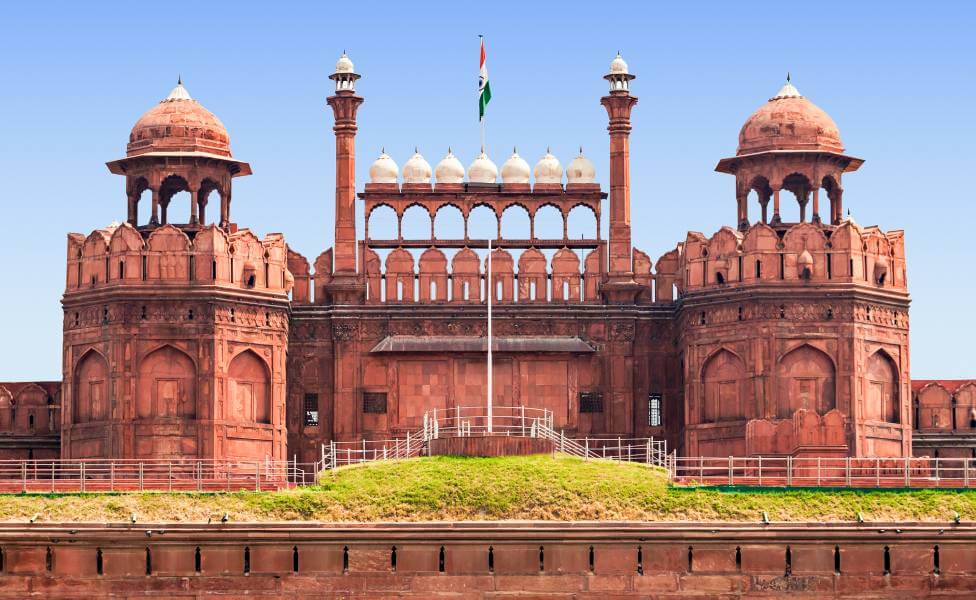
Home to millions of people, Delhi is the pinnacle of North India’s Golden Triangle Tourism Circuit. Being the capital city of the country, Delhi has plenty of communication as well as transportation options. With such facilities, the city finds itself well-connected with the major cities in the world and the country. Having seen the lives of many rulers and kingdoms, Delhi has developed for itself a long and rich history, whose remnants can still be seen in its everyday culture. Housing numerous tombs, temples, and ruins that date back centuries, Delhi has plenty of monuments to explore. The city, as a whole, is the perfect blend of the old and the new. Where the old part of the city relishes in the customs and traditions of a foregone past, the new part is developing itself quickly to fit to the rising standards. Here you will find historic and technically fascinating museums, restaurants that have been passed down through generations to modern, youthful cafes and eateries, and colorful parts of the city beloved by everyone altogether. The city, at present, is home to the UNESCO World Heritage Sites of Humayun Tomb, Red Fort Complex, and Qutub Minar and its monuments, and is some of the places that you must explore on your tour of the Golden Triangle.
Popular places to visit on a sightseeing tour to Delhi include the following:
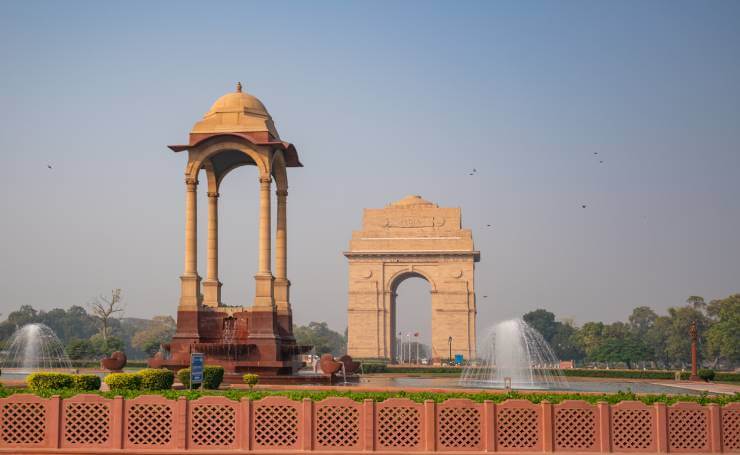
Built in honor of brave soldiers who laid down their lives in the line of duty, India Gate is among the most popular and most visited monuments in the city. A war memorial, the structure bears on it the names of more than 13,516 British and Indian soldiers who were martyred during the Afghan War of 1919. The Amar Jawan Jyoti at India Gate is an important attraction with a flame that keeps burning continuously. Honoring the gallantry of the warriors, you can also spot a rifle crowned with a helmet of the Indian Army, meant for the soldiers who lost their lives during the Indo-Pak War of December 1971.
This marvelous piece of architecture is one of India’s UNESCO World Heritage Sites. A popular place to visit in Delhi, Red Fort , or the Lal Qila was built by the Mughal Emperor Shah Jahan. Owing its name to the red sandstone it is built with, Red Fort is a city in itself. There are many breathtaking sights to see in this former capital of the Mughals. Popular places to explore in Red Fort include the Moti Masjid, Khas Mahal, Diwan-e-Aam, and Diwan-e-Khas, Hira Mahal among others. Red Fort, today tells a story of a major kingdom that ruled the city of Delhi once, and has many museums within it that display artifacts from a time gone by.
Humayun’s Tomb
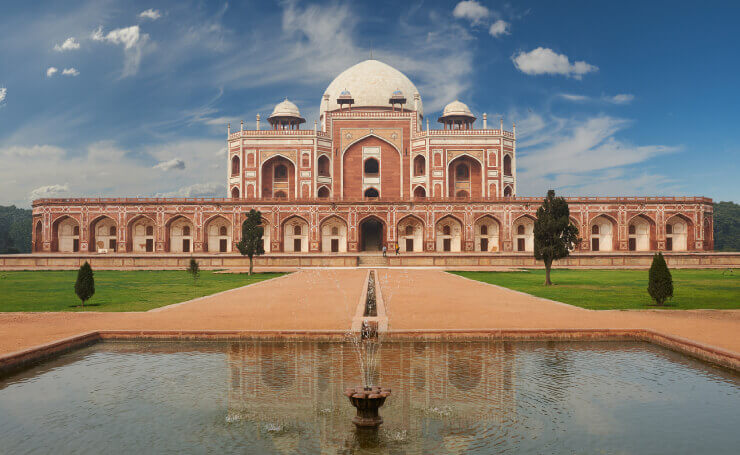
Another UNESCO World Heritage Site located in Delhi, Humayun’s Tomb visualizes the magnificent artwork by the Persian architects that worked under the supervision of Mughal Emperors. It is the first garden tomb built in India and the first one to be made out of red sandstone. Built in the 16th century in honor of the Mughal Emperor Humayun, the tomb was commissioned by his son and the succeeding Mughal Emperor, Akbar. The tomb complex includes Humayun’s tomb, as well as graves and tombs of numerous Mughal Emperors and Empresses. Standing in the center of a square garden, the tomb is a beautiful structure with shallow water channels around, adding to its beauty.
Qutub Minar
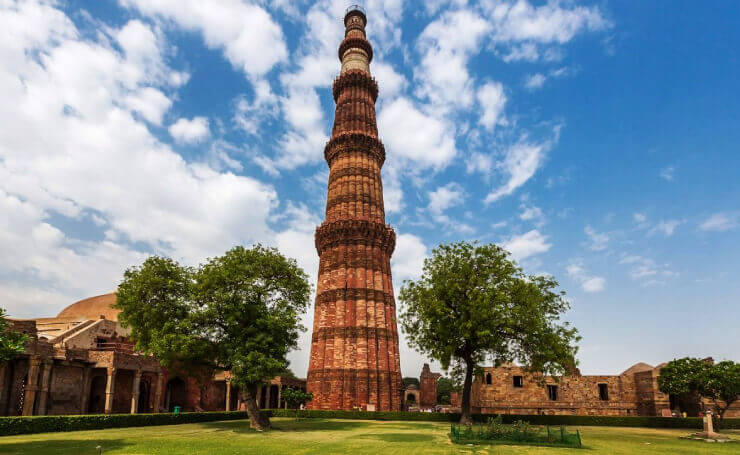
One of the intriguing architectures in Delhi, Qutub Minar is the world’s tallest brick minaret. Made out of red sandstone, the structure stands towering over a height of 72.5 meters. Originally established by Qutbu’d-Din Aibak as a two storeyed structure, Qutub Minar took its current form due to the efforts by his successor, Shamsu’d-Din Iltutmish. Other monuments within the Qutub Minar complex consist of the Quwwat-ul-Islam Mosque, tomb of Iltutmish, Ala’i Minar, and various other minarets and mosques. The iron pillar at the complex is also a popular attraction. Built around the 4th century, the pillar stands without a speckle of rust. A UNESCO World Heritage Site, you cannot complete your Delhi sightseeing tour without visiting Qutub Minar.
Lotus Temple
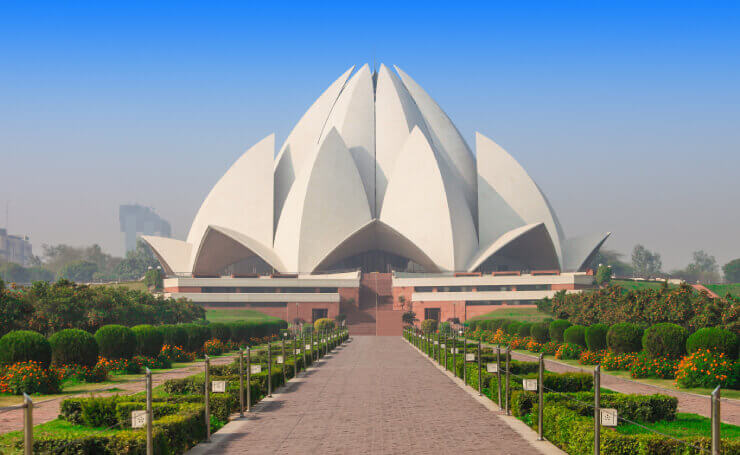
Famed for its architectural beauty, Lotus Temple was built in 1986 as a Baháʼí House of Worship. Shaped to resemble a lotus in its structure, the temple is open to all, across religions and gender. One of the popular sightseeing places in the city, the Lotus Temple is made using white marble. The structure is composed of 27 petals, arranged in ranks of three, forming the nine sides of the temple. Though it is a temple, it has no idols, photographs, or priests, but rather is a center that focuses on oneness of humankind and worship in the form of service to others in the community.
Places Where You Must Eat in Delhi
Delhi has seen the existence of many rulers and kingdoms throughout centuries, influences of which can be observed even in its cuisine. From lip smacking street food to slow cooked Mughlai cuisine, Delhi has plenty of food places for you to explore. Some of the popular places in Delhi known for their food include:
- Khan Market
- Majnu ka Tila
- Jama Masjid
- Connaught Place
- Madras Coffee House
Places Where You Must Shop in Delhi
Markets in Delhi are places that are some of the liveliest parts of the city. Offering a range of street markets, high end malls, and boutiques, the city has markets for all kinds of shoppers. Whether you are looking for designer clothing or exquisite handicrafts, Delhi’s markets are where you want to be. Here are some of the popular places to shop in the capital city:
- Janpath Market
- Chandni Chowk
- Greater Kailash
- Karol Bagh Market
Other Interesting Blogs to Read
- Best Places to Explore in Delhi
- Delhi Darshan Sightseeing Tour
Agra- The Land of Historical and Architecture Wonders!
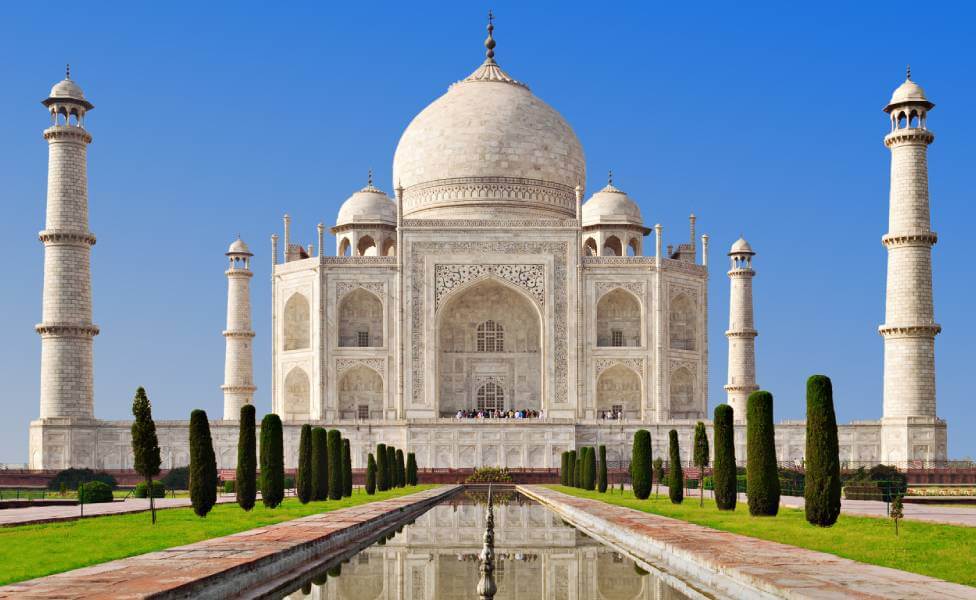
The next stop of the Golden Triangle Tourism Circuit is the historic city of Agra , home to one of the Seven Wonders of the World. A popular destination situated on the banks of the Yamuna River in Uttar Pradesh, Agra is a city where history, architecture and romance come together to create magic. Given its proximity to the cities of Uttar Pradesh and Delhi, Agra is mostly visited on a day trip by many tourists. Attracting history buffs and architecture lovers from all over the world, the city is home to 2 of UNESCO’s World Heritage Sites. Forming a part of the tourism circuit of the Golden Triangle, Agra is most known for its heritage, culture, and traditions that exist even today despite the passage of time. Once the capital of the Mughal Empire, Agra displays glimpses of its past in its evergreen architecture. Though much loved by history fanatics, Agra is also famed among foodies who love to explore the famous street foods of India. Equally known as the Taj Mahal in Agra is the sweetness of Agra’s Petha, made from a mixture of pumpkin, rosewater and saffron, a delicacy that you must try on your visit to the city.
Popular places to visit on a sightseeing tour to Agra include the following:
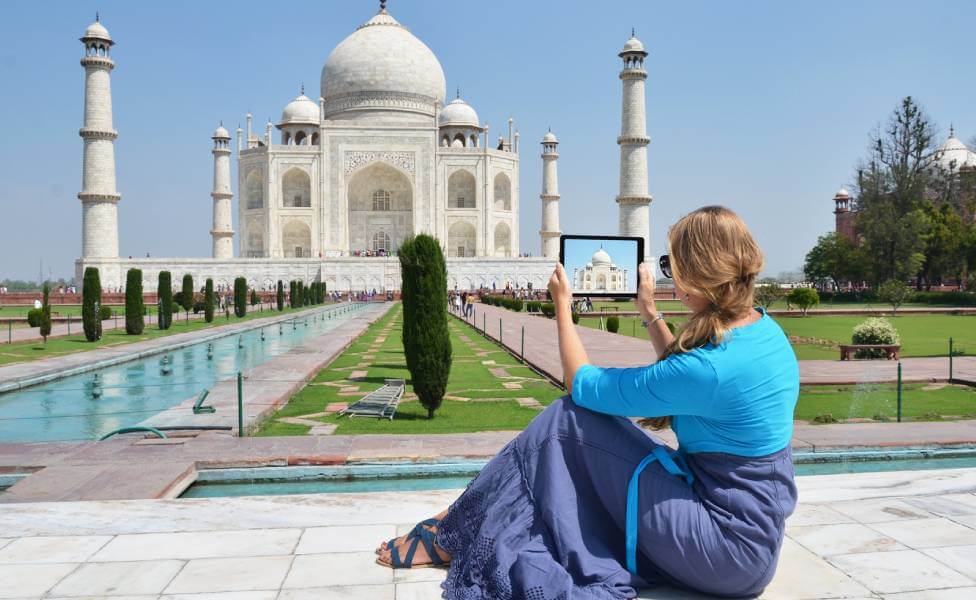
A marvelous monument entirely made of white marble lying along the bank of the River Yamuna, Taj Mahal is one of the seven wonders of the world. Built by the Mughal Emperor Shah Jahan in the remembrance of his third wife, Mumtaz Begum, this 17th-century architectural wonder attracts seven to eight million travelers each year from all over the world. Housing the tomb of Shah Jahan, completing this massive structure took over 17 years. An elaborate complex covering an area of 42 acres, it includes a massive gateway and a well-maintained garden with water channels and fountains, which stand adding to its beauty.
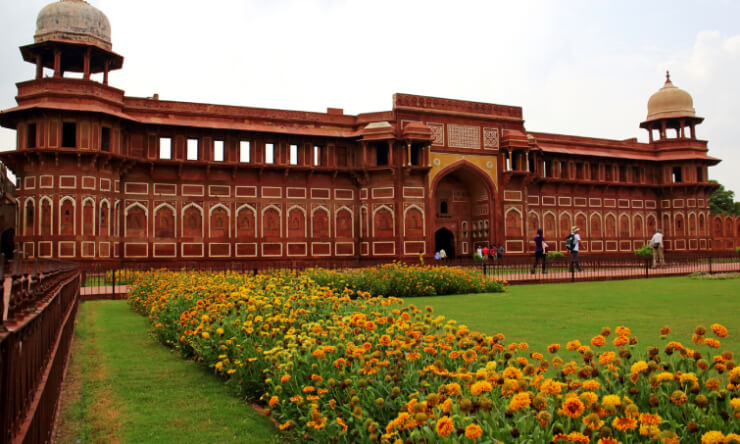
Agra is also home to the Agra Fort , a centuries-old fortress constructed out of red sandstone. Before moving their capital to Delhi, the fort once stood as the imperial capital for a line of Mughal emperors. A renowned UNESCO World Heritage Site, the fort offers some stunning sights. Among the most remarkable structures in Agra Fort is The Jahangir Mahal, with features inspired by Hindu and Central Asian architectural components. Along with this, an especially interesting area is the central court where royal women mostly spent their days. Other notable buildings that you must visit in the fort are the Anguri Bagh, Khas Mahal, Musamman Burj, and Diwan-i-Khas.
Fatehpur Sikri
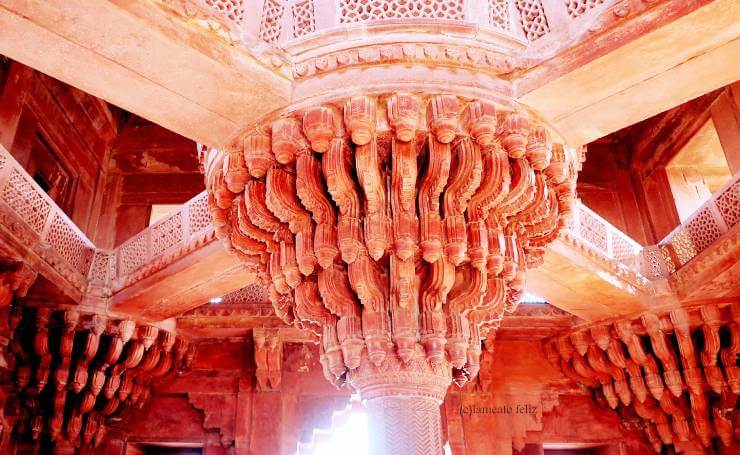
Another ancient city complex built by the Mughals in Agra, Fatehpur Sikri was built by the famous Mughal Emperor, Akbar to honor Shaikh Salim Chishti. It was the Sheikh who predicted the birth of an heir to the Emperor, after whose birth, the name of the city was decided as Fatehpur Sikri, or “the city of victory”. Fatehpur Sikri is a well-maintained ghost town, made out of red sandstone. Surrounded by a fortified wall, Fatehpur Sikri includes three palaces which are dedicated to Akbar’s three wives. The Jama Masjid is one of the popular attractions of the town along with the Diwan-i-Khas, Mariyam’s Tomb, Panch Mahal and Birbal’s Palace.
Akbar’s Mausoleum
Located in Sikandra, Agra, Akbar’s Mausoleum is an exceptional piece of art from the Mughal Period. It houses the mortal remains of the Emperor Akbar, who ruled India for nearly 50 years. The mausoleum also has the remains of his two daughters along with the graves of Aurangzeb’s daughter and son-in-law. The building has been constructed differently from all the other buildings built in the Mughal period. As per the Islamic rules, the buildings are supposed to face west, in the direction towards Mecca, but instead, Akbar’s tomb faces east, in the direction opposite to Mecca. Akbar’s Mausoleum is a decorated structure featuring manicured Mughal gardens where you can spot deer, monkeys, as well as a few wandering peacocks.
Agra’s Old City
A flavor of India’s old heritage, the old city of Agra is one of its popular tourist attractions. The old buildings with their intricate artworks, congested alleys and noisy streets, everything makes this part of the city lively and colorful. Taking a heritage walk is the best way to explore the old city of Agra and will let you experience the city and its true essence in the most authentic way. A heritage walk will let you understand the history, culture, and traditions as you move through the city discovering various markets, temples, and mosques. Walk through its markets, and experience a glimpse of history with each step that you take in the old city of Agra.
Places Where You Must Eat in Agra
Agra is a popular tourist destination of India, known not only for its historic architecture, but also for its delicious street food, traditional sweets, and of course, indulgent Mughlai cuisine. With an abundance of places to eat in Agra, here are the most popular ones for you to explore:
- Dasaprakash
- Lakshmi Vilas
- Sadar Bazar
- Kinari Bazar
- Pinch of Spice
- Shankara Vegis Restaurant
Places Where You Must Shop in Agra
With noisy and chaotic street markets and shops that have been passed down through generations, Agra offers a range of places for you to satiate your inner shopaholic. Here are some of the places in Agra that you can hit up for traditional handicrafts, carpets, beautiful jewelry, and leather accessories.
- Shah Market
- Subhash Emporium
- Raja ki Mandi
- Kinari Bazaar
- Bijli Ghar Market
- Subhash Bazaar
- Shahganj Bazaar
- Interesting Facts About Taj Mahal
- Best Places to Visit in Agra
- Top Tourist Destinations of Uttar Pradesh
Jaipur- The Land Loved by the Royals!
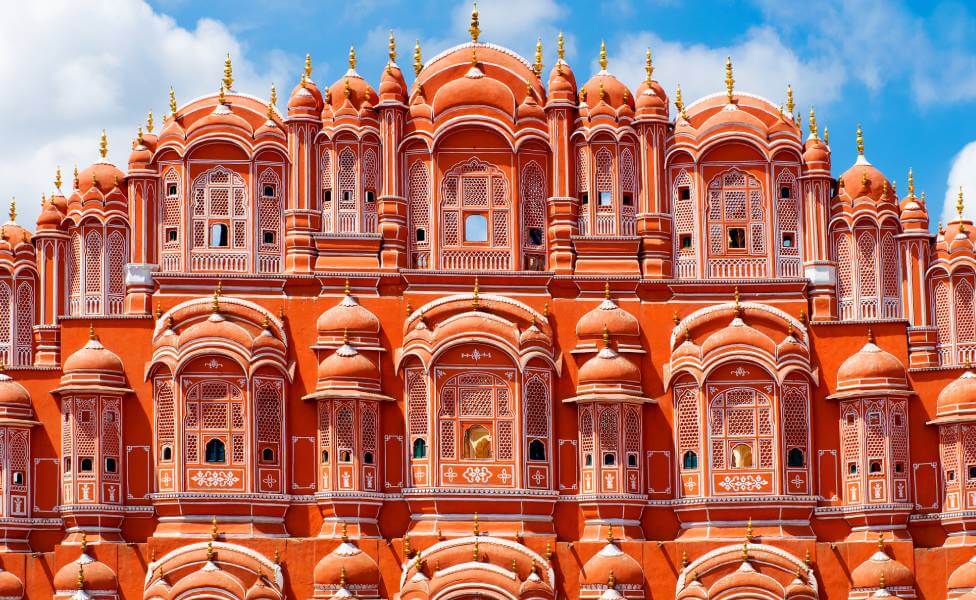
Founded in AD 1727 by Maharaja Sawai Jai Singh II, Jaipur , also known as the “Pink City” is the capital of Rajasthan. The city, designed by Vidyadhar Bhattacharya, is one of the first planned cities of India and has a number of must visit attractions for you to explore on your tour of the Golden Triangle of India. The majestic pink-hued forts along the skyline of the city, the mighty palaces, wide avenues and spacious gardens are some of the major attractions in Jaipur besides the eye-catching lakes and Havelis, all of which come with the stories of numerous Maharajas and Maharanis. According to history, the entire city of Jaipur was painted pink by Maharaja Ram Singh to showcase the royal hospitality to the Prince of Wales, during his visit to India in 1876. Jaipur, as it stands today, is a proud blend of its historical past and the advancements of being a metropolis. Known for authentic Rajasthani jewelry, clothing, and shoes, the vibrant bazaars of Jaipur also have a timeless appeal, and are at the center of most tourist activity in the city. On your tour of the Golden Triangle, explore the city of Jaipur and experience the regal hospitality of the city for yourself.
Popular places to visit on a sightseeing tour to Jaipur include the following:
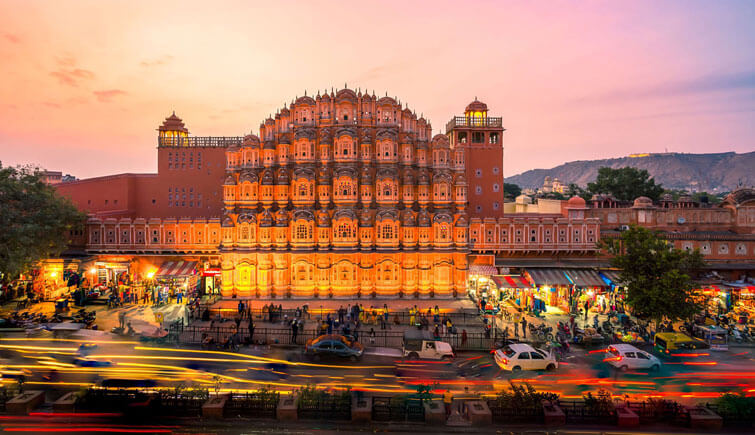
Also known as the “Palace of Winds,” Hawa Mahal is one of the best places to visit in India. Built in 1799, the palace was originally meant for the women in royal families. Hawa Mahal has 953 windows on its outside walls that allow wind to pass freely throughout the palace, which also allowed respite from the hot summers of Rajasthan and was often used as the perfect summer palace for the royals. A five-storeyed building, Hawa Mahal flaunts a fine architecture of multiple windows and latticed balconies, standing as the most fascinating structures established by the Rajputs. Visit the place in the early morning hours to see its stunning look when the Mahal stands illuminated by the golden rays of the sun.
City Palace

One of the main tourist attractions of the city, City Palace is yet another marvelous architecture featuring a complex of Mahals and Havelis in northeast Jaipur. The City Palace was built by Maharaja Sawai Jai Singh II between 1729 and 1732 AD, and possesses a mix of Rajput, Mughal and European architectural styles that have been built over many different centuries. Places to explore within the city palace include the Chandra Mahal, Mubarak Mahal, Pritam Niwas Chowk, Diwan-i-Am, Diwan-i-Khas, and the Maharani’s Palace, where you can discover the architecture, and history of the palace and the kingdom with multiple displays and museums.
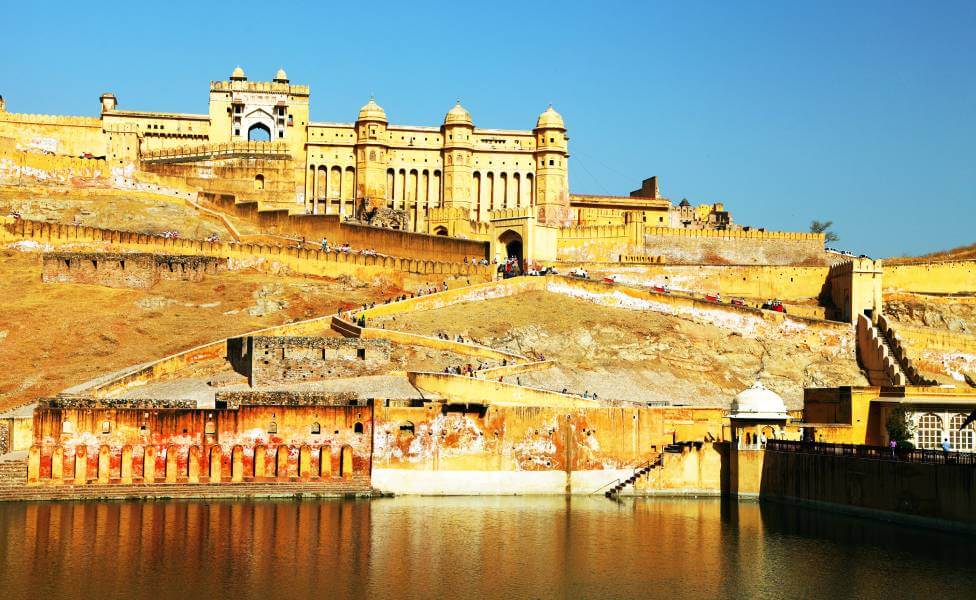
Amber Fort, also known as the Amber Fort is another one of Jaipur’s fascinating structures, located at a distance of about 11 km from the main city. Sitting atop a hillock, it is a stunning display of an extensive palace complex made of white marble and pale yellow and pink sandstone. Built by Maharaja Man Singh I, the fort is divided into different sections, including gardens, temples, king’s quarters, zenanas and gates that have been heavily worked upon. Having served as the primary residence of Rajput rulers for decades, there are many areas of the fort that you must visit and include the Suraj Pol, Sheesh Mahal, Diwan-i-aam, and underground water tunnels that connect Amer with Jaigarh Fort.
Jaigarh Fort
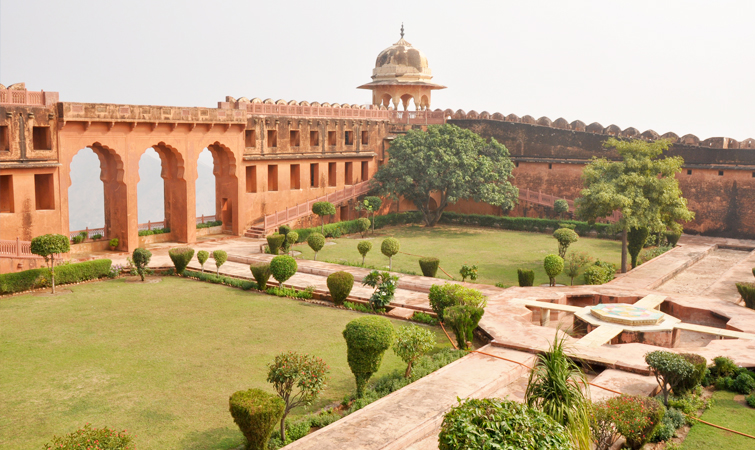
Forts have a certain allure that draws historians, photographers, and culture enthusiasts from far and wide. One magnificent example of that is the magnificent Jaigarh Fort in Jaipur . Like other forts in the Pink City, it was constructed in 1726 by Maharaja Sawai Jai Singh II and is built on top of a hill, locally known as “Cheel ka Teela” or “Hill of the Eagle”. The Jaivana Cannon, the largest cannon on wheels in the world, is one of the main attractions of the fort. Currently, the Jaigarh Fort welcomes visitors from all over the world who wish to explore its impressive beauty and has become a place that you must explore on your Golden Triangle Tour to the city of Jaipur.
Nahargarh Fort
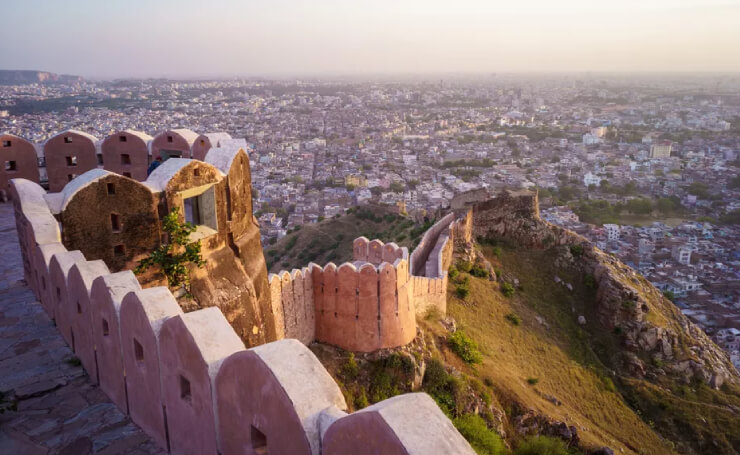
Situated in the foothills of the Aravalli mountain ranges, Nahargarh Fort , previously known as Sudarshangarh is another one of Jaipur’s magnificent forts. The fort is another one of Maharaja Sawai Jai Singh II’s creations built to defend the city of Jaipur in 1734. As the hills were inhabited by many tigers, it led to the fort being named after them, where Nahargarh means “abode of tigers”. Included in the fort complex is a temple dedicated to the main deity of the royal family and a two-storey building dedicated to Sawai Madho Singh, the Madhavendra Bhavan. There is also an open area, known as Diwan-i-aam, where the king held court to listen to the people’s grievances.
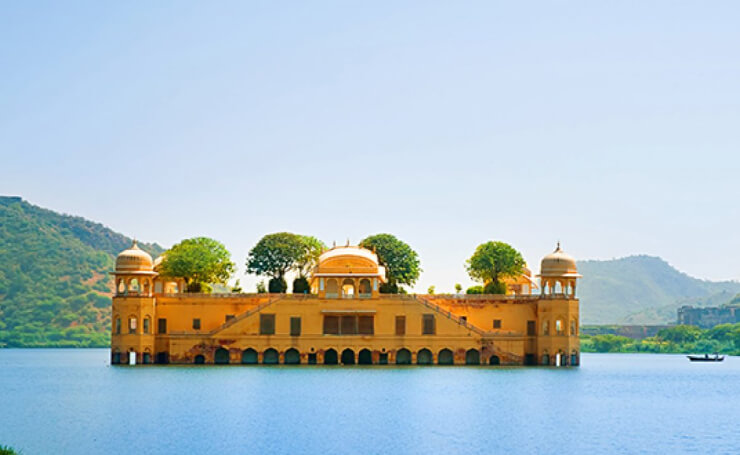
A unique destination to explore in Jaipur is the Jal Mahal or the Water Palace, spread in the center of Man Sagar Lake. With the city dotted with stunning architecture, Jal Mahal stands on top of the list with its uniqueness. Made out of red sandstone, standing in the middle of the pink city, Jal Mahal is believed to have been originally built to function as a hunting lodge for the Maharajas. Resembling a floating structure, with the beautiful Aravalli Hills in the background, Jal Mahal is one of the places that you must explore on your visit to the city of Jaipur.
Places Where You Must Eat in Jaipur
In the land of the royals, you can expect to taste only the best of everything. Jaipur’s food is a reflection of its rich heritage and warm hospitality, and has a range of flavors to satiate your taste buds. Here are some places in Jaipur you can visit to explore the best of Jaipuri cuisine.
- Laxmi Misthan Bhandar
- Rawat Misthan Bhandar
- Gulab Ji Chai Wale
- Masala Chowk
- Sethi Bar-Be-Que
Places Where You Must Shop in Jaipur
When visiting Jaipur, you cannot leave the city without visiting its colorful, traditional markets. Explore some of the best places to shop in the city for the best of traditional jewelry, handicrafts, and the classic Jaipuri Jutti.
- Chandpole Bazar
- Johri Bazar
- Tripolia Bazar
- Nehru Bazar
- Aravali Bazar
- Best Places to Visit in Ajmer Rajasthan
- Best Places to Visit in Jodhpur Rajasthan
- Best Places to Visit in Pushkar Rajasthan
Best Time to Visit the Golden Triangle Circuit
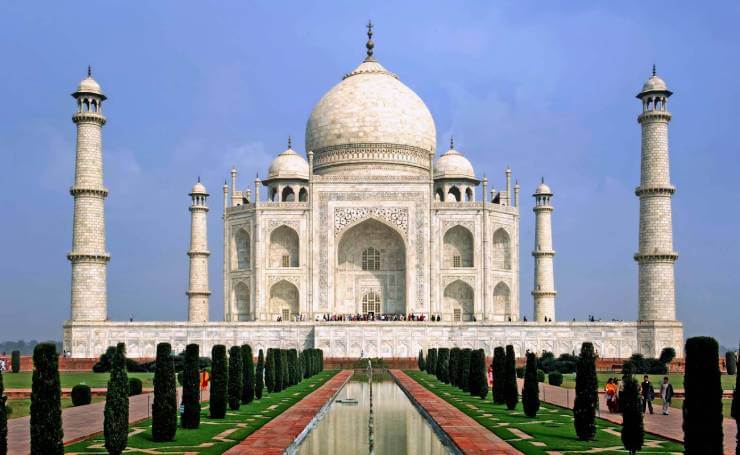
The best time to visit the cities of Delhi, Agra and Jaipur on a Golden Triangle Tour would be during the months of October to March. It is between these months that the cities see the most pleasant temperatures of the year, making it an ideal time to travel. Between the months of April to June, the cities face extreme heat due to the onset of summer season and would be very excruciating to travel in. Also, to avoid are the months of July to September when the country experiences monsoon and faces extreme humidity.
A Golden Triangle Tour will offer you a chance to experience the best of the three popular tourist cities of Delhi, Agra and Jaipur in a short period of time. On this tour you will get to experience the culture, traditions and history of these cities and what makes them timeless places even today. Comprising some priceless heritage sites and old markets, these cities will be sure to charm you. Take up a Golden Triangle Tourist expedition on your next vacation and explore these historic cities.
- Best Places to Visit in Jaisalmer Rajasthan
- Best Places to Visit in Udaipur Rajasthan
Hope you enjoyed reading the ultimate guide to India’s Golden Triangle Tour. If this travel guide incites your wish for planning a trip to India and know about its cultural heritage in depth, or you want to know more about the places and the itinerary, you can contact us directly. Moreover, you can browse our website for Golden Triangle Tour packages , which can be customised based on your requirements. Comment here which of these three cities you want to explore first.
- Top 12 Places to Visit in India for International Travelers
- 50 Amazing Facts International Tourist Didn’t Know About India
- Top 10 Beaches in India Ideal for International Tourists
Like & Follow our social media accounts at Twitter , Facebook , Linkedin & Instagram for getting the latest updates & offers on holiday packages .
Disclaimer: This content is written by our team of expert Travel Writers with deep research. In case you find any incorrect information or missing information, please do send your valuable inputs at [email protected]. We will update the content as soon as possible with respect to your inputs.
We do not take credit for some of the licenced paid images used in our blogs, whether from Google Images, Fotolia & Shutterstock. All such images are the copyrights of their respective owners and we try to provide credit for them wherever we can. If, however, any copyright image has been used on our blog, the concerned person can either mail us directly to remove the image or provide credit to whomsoever the image may belong to.
Frequently Asked Questions
What is india's golden triangle circuit and why is this so famous.
Golden Triangle Circuit includes Delhi, Agra and Jaipur, the three places in India which see a high density of tourist footfalls throughout the year. The circuit is the most popular tourist route in India for exploring the richness of India’s vibrant culture. Precisely, the Golden Triangle Tour is the perfect way to start knowing about the country in depth.
How to plan a perfect Golden Triangle Trip in India?
A perfect Golden Triangle India Itinerary starts from Delhi to Agra and ends in Jaipur. You can conclude the trip in Jaipur or visit another city or state to extend the trip. Plan a minimum of two to three days for the places to explore in each city and have the best experience to know about the cultural heritage of India.
How many minimum days are required to experience the best of India's Golden Triangle Tour?
A minimum of six to ten days are required to experience the best of India's Golden Triangle Tour. However, we always recommend staying in a place for maximum days to know it better and in depth.
What is the Best Time to Do a Golden Triangle Tour in India?
For international travellers, the best time to do a Golden Triangle Tour is between the months of October to March, specifically during the winter. As the places you will visit on your Golden Triangle Tour are located in North India, it will be difficult to roam around the cities during the hot summer. Temperature ranges between 5 and 15 degrees celsius during winter and the weather remains pleasant for traveling comfortably.
Published: 08 Aug, 2022 | Last Updated: 23 Feb, 2024
About the author
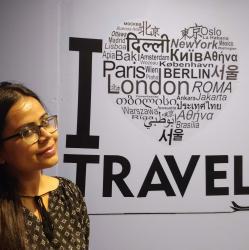
Nandini Bhattacharya
From the ‘City of Joy,’ Kolkata, Nandini Bhattacharya is a Travel Writer by profession and traveller by passion. She loves to explore places around the world, new cultures, different cuisines and all new things that one can learn outside the home. She also loves to document her journey so that people can be inspired and travel more. Nandini is a nature lover and talks about sustainable tourism. She wants to make this world a good place where people can live healthy and happily.
Recent Trending Posts

May 21,2024
Best Eco-Tourism Destinations in India

May 20,2024
15 Best Destinations in India for Solo Women Travellers
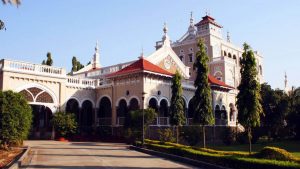
25 Places to See and Things to Do in Pune, Maharashtra
- Hill Stations
- Travel Deals
- Amazing Facts
- Travel Experience
- Travel Tips
- Travel Alerts
- Travel Videos
- Edu-Tourism
- Inspirational People
Popular Posts

May 30,2014
20 Highway Dhabas that You Must Stop By

February 12,2014
Top 15 Places for Honeymoon in North East India

September 6,2014
12 Best Beaches in Maharashtra

October 31,2013
Top 15 Wildlife Sanctuaries and National Parks in Kerala

Top 10 Places for Spa Services in Delhi
International posts.

November 8,2023
10 Best Beaches in Thailand

November 3,2023
Tourism Update – Enjoy Visa Free Holiday Travel in Sri Lanka

Thailand Tourism Update- Indian Travelers Now Get a Visa-Free Entry to Thailand!
Explore best places to visit in india by month.

Best Places in January

Best Places in February

Best Places in March

Best Places in April

Best Places in May

Best Places in June

Best Places in July

Best Places in August

Best Places in September

Best Places in October

Best Places in November

Best Places in December
India tourism important information resources, north india.
- Uttarakhand
- Jammu & Kashmir
South India
- Pondicherry
- Andhra Pradesh
- Mahararashtra
- Dadra Nagar Haveli
- Daman & Diu
Luxury Trains
- Maharaja Express
- Palaces on Wheels
- The Golden Chariot
- The Deccan Odyssey
- Majestic Tourist Train
Quick Links
- Kumbh Mela Haridwar 2021
- MICE Tourism
Travel Around The World Blog
Plan Your Trip: Exploring India’s Golden Triangle
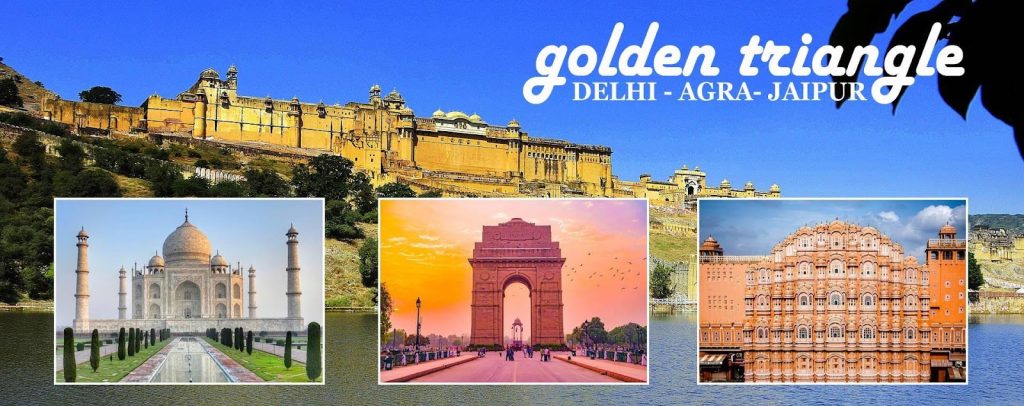
Introduction:
Planning a trip to India? Look no further than the Golden Triangle! This iconic tourist circuit connects three of India’s most fascinating cities: Delhi, Agra, and Jaipur. Each city is rich in history, culture, and architectural wonders, making it a must-visit for any traveler. In this guide, we’ll take you through everything you need to know to plan your unforgettable journey through the Golden Triangle.
Start your Golden Triangle adventure in the bustling capital city of Delhi. Explore the contrasting worlds of Old Delhi and New Delhi, each offering a unique blend of sights and experiences. Marvel at the majestic Red Fort, a UNESCO World Heritage Site, and wander through the narrow lanes of Chandni Chowk, Delhi’s oldest and busiest market. Don’t miss the iconic India Gate, Humayun’s Tomb, and Qutub Minar, all showcasing the city’s rich history and architectural grandeur.
Next stop, Agra, home to the iconic Taj Mahal, one of the New Seven Wonders of the World. Prepare to be awestruck by this magnificent marble masterpiece, built by Emperor Shah Jahan in memory of his beloved wife. Explore the sprawling grounds of the Agra Fort, another UNESCO World Heritage Site, and marvel at its impressive architecture and intricate design. For a glimpse into the city’s vibrant culture, visit the bustling streets of the Old City and sample delicious local delicacies.
Conclude your Golden Triangle journey in the vibrant city of Jaipur, also known as the Pink City. Explore the majestic Amber Fort, perched atop a hilltop overlooking the city, and admire its stunning architecture and panoramic views. Discover the intricacies of Rajasthani art and culture at the City Palace and Hawa Mahal, or Palace of Winds, with its iconic facade adorned with intricate latticework. Don’t forget to explore the bustling bazaars of Jaipur, where you can shop for traditional handicrafts, textiles, and jewelry.
Tips for Your Golden Triangle Adventure:
1. Plan your trip during the cooler months of October to March to avoid the extreme heat of the Indian summer.
2. Hire a knowledgeable guide to enhance your experience and learn more about the history and culture of each destination.
3. Sample the delicious local cuisine at each stop, from spicy street food in Delhi to mouthwatering Mughlai dishes in Agra.
4. Take time to interact with the locals and immerse yourself in the rich cultural heritage of each city.
5. Be sure to carry comfortable walking shoes, as exploring the sights and markets of the Golden Triangle involves a fair amount of walking.
Conclusion:
Exploring the Golden Triangle of India is a journey like no other, offering a captivating blend of history, culture, and architectural wonders. From the bustling streets of Delhi to the majestic forts of Jaipur, each city has its own unique charm and attractions waiting to be discovered. So pack your bags, plan your itinerary, and get ready for an unforgettable adventure through the heart of India’s Golden Triangle. Looking for expert guidance and seamless travel arrangements for your Golden Triangle Tour India ? Look no further than Book Indian Trip, the Best Travel Agency in India . With our extensive experience and personalized services, we ensure that every aspect of your journey is meticulously planned and executed to perfection. From luxury accommodations to knowledgeable guides, we take care of all your travel needs, allowing you to relax and enjoy every moment of your trip. Contact us today to book your Golden Triangle adventure with Book Indian Trip and embark on the journey of a lifetime!
More Stories

Itinerary For The Ideal 4-Day Coastal Getaway To Daman

10 Best Places In France To Visit In Summer

How do I find Spirit flight ticket
You may have missed.

Leh Ladakh Tour Packages: What Makes Leh Ladakh So Famous

Beyond the Pictures: Experiencing the Grand Canyon
The Golden Triangle

- 1 Understand
- 4 Stay safe
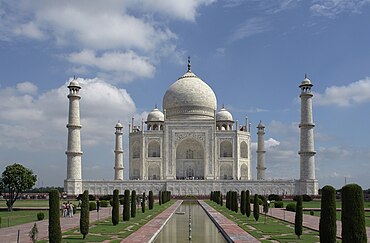
The Golden Triangle in India refers to a tourism itinerary that includes the cities of Delhi , Agra and Jaipur along with detours to the abandoned medieval city of Fatehpur Sikri and the bird sanctuary at Bharatpur .
Understand [ edit ]
This classic journey covers a lot of the grand tales of Indian history, with many major landmarks and sights to behold. A week is a good amount of time to spend travelling the triangle, however many group tours do it in less.
Prepare [ edit ]
Hindi is the most widely and commonly used language here. Most locals can understand English, and getting French, German or even Japanese guides at hotels in this region is not a problem.
Say 'Namaste' or 'Namaskaar' to any person as a greeting.
The rates for all the monuments (entry fee, camera fee, guide fee) are different for Indian and foreign tourists. There are government guides at all major tourist spots. But for tourists, there are wearable audioguides for rent.
Get in [ edit ]
Delhi, Agra, and Jaipur all have International airports, but it is more convenient for most people to start from Delhi. Please refer to those cities' articles for detailed information. Briefly, Delhi is the busiest airport in Asia with dozens of international destinations served. It also has unparalleled domestic connectivity, being a hub for Air India, IndiGo, Spicejet and Vistara's domestic operations. Jaipur has a medium-sized airport with good domestic connections and a handful of international routes to the UAE (various cities), Muscat and Bangkok . Agra has only a small airport served by one airline (IndiGo) which flies to 6 domestic destinations.
To do a private tour of the Golden Triangle, you can rent a car with a driver in Delhi. Depending on the duration of the trip, a car with a driver will set you back about ₹8,000 ($150) to ₹15,000 ($300). Try asking at your hotel. It is also customary to pay for your driver's meals and accommodation - be sure to settle on a price for everything in advance. Otherwise, group tours are sold at many travel agencies or online. Read the reviews before booking!
Delhi [ edit ]
Delhi is the natural starting point for the golden triangle. It is a major transport hub in India and is well-served by air and rail. The country's capital has many attractions and places of historical significance. This includes the well-planned New Delhi, and the older section (Delhi or Old Delhi).
Delhi is synonymous with Mughlai and Frontier Cuisine. The best of Mughlai cuisine can be enjoyed at Karim, (both in Jama Masjid and Nizamuddin) where the recipes, dating from the times of the Mughals have been the closely guarded secrets of generations of chefs.

Agra [ edit ]
Agra is famous for snacks and sweets like Dalmoth and Petha, for which the most recognized area is Kinari Bazar.
Jaipur [ edit ]
Dal bati churma is a popular delicacy usually served with baatis and dal. A variety of rotis are also available: Bajre ki roti, makki ki roti, jau-channa ki roti, besan ki roti, paratha, puri, methi puri, rumali roti, kachori and samosa.
Kalakand (milk cake) is one of the most popular traditional sweets from Rajasthan. Ghewar is another delicious Jaipuri sweet.
Stay safe [ edit ]
While inside the temples, take off your shoes and turn off your phone. Bringing single dollar bills to offer in temples when a "pooja" plate is shown to you is appreciable. Learn the local phrases for addressing people to begin a conversation and people will surely come out of their way to help you.
Tipping is a matter of personal choice and not at all a compulsion; tip only when happy with the services.
Do not accept any type of food from strangers while traveling by trains or buses regardless of how well dressed the person offering you the food may be. Always buy water bottles from a reputable store, many drug stores also sell bottled water. When buying soft drinks, buy cans rather than bottles if possible. Unscrupulous shopkeepers sometimes refill used bottles.
When traveling on trains and buses, do not use expensive electronics such as laptops. It is always prudent to avoid displaying valuable items in public.
Go next [ edit ]
- Has custom banner
- Outline itineraries
- Outline articles
- South Asia itineraries
- Itineraries
Navigation menu

Travelling Without a Passport

A Golden Triangle Itinerary

If you’re looking to experience a lot of India in a condensed amount of time, the Golden Triangle is the itinerary for you. If you’ve never heard of the Golden Triangle, the phrase is referring to India’s most popular tourist circuit that connects three prestigious cities in Northern India: New Delhi, Agra, and Jaipur. If you look at the three points on a map and draw lines to connect them, you’ll find it forms a perfect triangle. The route is considered “golden” because it covers some of the most famous sites in the country, from the Taj Mahal, the pink city of Jaipur, and a number of UNESCO World Heritage Sites along the way.
If you’re curious what you’ll see and experience during a Golden Triangle tour, here’s a day by day glance into what you can expect during a tour.
This story was inspired by:
Old and New Delhi
Day one is set aside for tour members to arrive and get settled into the hotel. Because flights are arriving at different times, this day is left open for your own exploration. Luckily, starting in Delhi means you’ll have endless places to explore. As the third largest city in the world, Delhi is a booming metropolis filled with a colourful mixture of historic Indian tradition and a modern twist of new-age culture. If your flight arrives in the morning, take the afternoon to wander through the streets and get acquainted with things. Some of the most popular sites include the beautiful Lotus Temple, Jama Masjid, or the dreamy Lodi Gardens.
See Also: The Perfect India Packing List for Summer
Day two focuses on Old and New Delhi, one of the oldest and most historic neighbourhoods in India. Your day starts with a city walking tour where you’ll have the chance to learn more about Indian history and set sights on buildings that date back as far as the 1600s. Give yourself time to try some of the amazing food, while also capturing photos of the bustling narrow gullies. There’s a lot to see, hear, and smell – so take it slow and give yourself time to take it all in. Your afternoon/evening will be spent travelling from Delhi to Agra, a trip that typically takes between three and four hours.
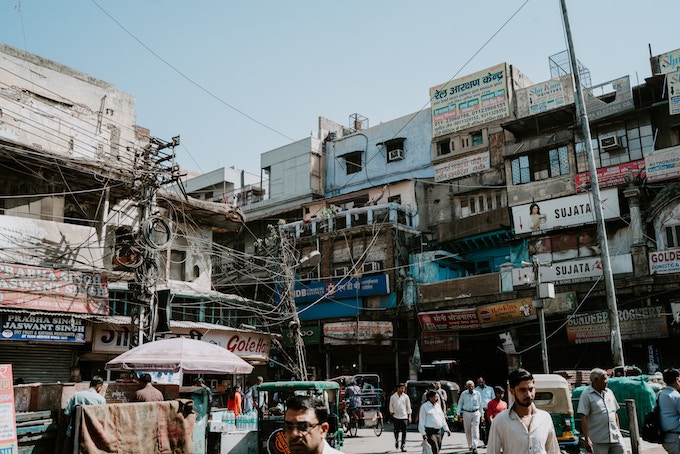
Unlike any other city in the world, the Pink City of Jaipur was built according to Hindu architectural principles, leading to a beautifully eclectic collection of buildings that make for endless photo opportunities. Day six is all about Jaipur, which means there’s a lot to see. Next, head over to the City Palace where you’ll learn more about medieval India and the history of the country in the 1700s. Finally, visit Hawa Mahal in the afternoon – one of the most remarkable palaces in the world. Constructed of red and pink sandstone, the palace is one of the most dramatic buildings you will ever see, and no photo will do it justice. If you still have energy, spend your evening exploring Jaipur’s markets and local sites.
See Also: Why Visit Goa? 10 Best Reasons
The next morning will be spent visiting the Amber Fort, one of the most famous tourist attractions in Jaipur due to its remarkable design. This UNESCO World Heritage Site consists of six separate sections with individual gates and courtyards, and it’s easy to spend an entire day here and still not see everything this gorgeous complex has to offer!
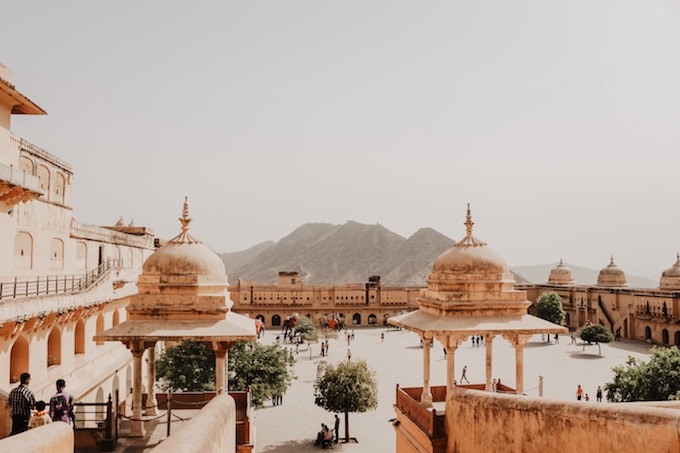
If you’ve never heard of Indian step wells, day five will be a very interesting day. Spend the morning in Abhaneri marvelling at the amazing Chand Baori – one of India’s deepest and largest step wells. Steps wells are unique to India and were used as pools for cleansing, cool places for relaxing, and as water supplies during dry weather.
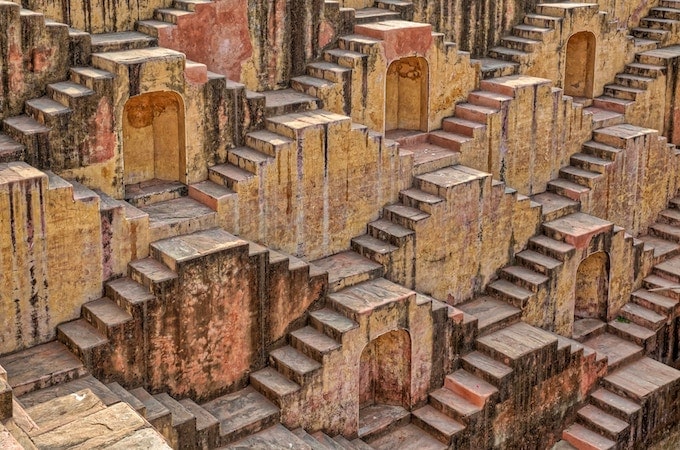
See Also: Your Guide to Walking Through India
Day six is a big day! Today is the day you’ll set your sights on one of India’s most iconic landmarks: The Taj Mahal. One of the Seven Wonders of the World, you’ll have the pleasure of enjoying it right at sunrise, one of the best times to visit. This gives you the chance to beat the crowds and get some amazing photographs of the site without distraction. The rest of your morning will be spent exploring the site, so don’t feel like you need to be rushed at sunrise. Visit the L’timad-ud-Daulah (the baby Taj Mahal) and the Agra Fort, a walled city that was taken over by the Mughals, but now serves as an amazing reminder of history.
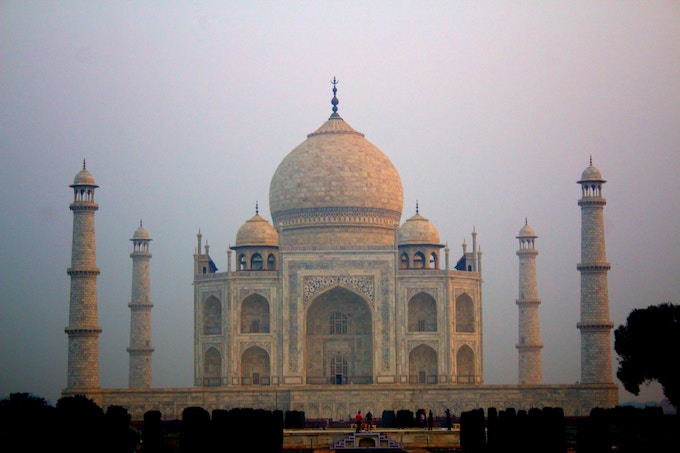
Back to Delhi
Day seven involves the journey back to Delhi. The good news is, once you arrive back in Delhi the day is free to explore! So spend your time wisely, covering anything you missed in the city during your first two days. Some of the other most popular sites in the city include the Akshardham Temple, Hauz Khas Complex, Qutub Minar, Jantar Mantar, Humayun’s Tomb, the Spice Market (Khari Baoli in Old Delhi) and the Dilli Haat Handicraft Village. Or if you’re exhausted, take it easy at the hotel and prepare for your departure the next day.
An itinerary like this sounds too good to be true, right? Well, not only can you find this itinerary right here on TourRadar, we’ve also partnered with On The Go Tours to give away a tour for two that looks just like this! Find details and terms here: good luck!
Now that you know what to expect from the outstanding Golden Triangle itinerary, it’s time to start planning your trip! Head over to TourRadar and learn more about this itinerary , its departure dates, and how to secure your spot.

Jesse Warner
Jesse is a blogger and content creator who loves travel, the outdoors, and her dog, Molly. When she isn't planning her next trip, she can be found watching Netflix documentaries, enjoying time by the water, or eating soft-serve ice cream. Follow her on Instagram , Facebook , or check out her blog .
Related Articles
- Tips & Tricks
Best Destinations for People with Disabilities
The world and its wonders should be available to one and...
- Destination Guide
Where to See the Northern Lights in February
If you hope to see the Northern Lights in February, you’re...
- Central America
- Destinations
- South America
Where to Travel in 2024
Twenty twenty-three has been a whirlwind of a year, from major...

Best First Vacations for Couples
Get unlimited access to the world's best travel stories. subscribe now., privacy overview.
The Golden Triangle Tour, India: A First-Timer's Guide
Book your individual trip , stress-free with local travel experts
Select Month
- roughguides.com
- guide-to-the-golden-triangle-india
Plan your tailor-made trip with a local expert
Book securely with money-back guarantee
Travel stress-free with local assistance and 24/7 support

written by Freya Godfrey
updated 06.02.2024
India 's Golden Triangle is a fantastically varied introduction to the sights and sounds of the country. From busy bazaars and hurtling tuk-tuks to tranquil temples and majestic mosques, this is the country at its noisiest and most chaotic. Chances are its colourful exuberance will leave you wanting to return again and again. Here's a first-timer's guide on how to plan a Golden Triangle tour.
What is the Golden Triangle?
How to plan a golden triangle tour, where can i escape the crowds, golden triangle tour #1: the essential golden triangle, golden triangle tour #2: from the ganges to the golden triangle, golden triangle tour #3: gems of india & taj mahal, what’s the best way to get around the golden triangle in india, how can i avoid delhi belly, when is the best time to visit the golden triangle.
The information in this article is inspired by the Rough Guide to India , your essential guide for visiting India .
Travel ideas for India, created by local experts

13 days / from 1800 USD
A Trek Through Ladakh's Markha Valley
Trek through the Markha Valley, taking in the jaw-dropping Himalayan landscape, camp in traditional mountain villages, and discover hilltop monasteries. This unique journey combines the culture of the Buddhist faith with the natural beauty of the mountains and the hustle and bustle of Delhi.

15 days / from 2745 USD
Rajasthan: The Land of Kings
Experience the Land of Kings in luxury.This trip around Rajasthan takes you to Jaipur's palaces, sacred pilgrimage sites and deep into the desert hills. Breathe in the excitement of Delhi and visit the Taj Mahal. Then come nightfall, lay your head to rest in former royal palaces and magical forts.
_listing_1448379939234.jpeg)
6 days / from 785 USD
The Holy City of Varanasi
The flat, sunburnt plains of the Ganges River are India's breadbasket: a densely populated area, it is home to many of the country's greatest sights. See Delhi and all its treasures, then fly to Varanasi, the most sacred stretch of the Ganges and one of India's most intense and atmospheric places.
Golden Triangle in India is the route between Delhi , Agra and Jaipur . It's named for the almost-equilateral triangle that the three cities make when plotted on a map. Starting in the capital, Delhi, and taking in the states of Uttar Pradesh and Rajasthan , it’s India’s most well-trodden tourist track. Why “Golden”? Well, for the extraordinary religious and historical sights that the three stops offer.

Taj Mahal in Agra - one of the most famous landmarks of the Golden Triangle in India © Byelikova Oksana/Shutterstock
Planning a trip on your own can be an overwhelming task - hours spent researching, comparing options and often ending up with a generic itinerary. Our India travel experts carefully consider every detail, from selecting the perfect destinations to designing exclusive experiences that match your desires. You no longer have to worry about logistics, accommodation or missing out on hidden attractions. We will have everything covered.
Discover the world of tailor-made travel with our personalised travel service .
Start in New Delhi
Begin your exploration of the Golden Triangle by immersing yourself in the modern area of New Delhi. Its wide, tree-lined avenues and solid colonial architecture, have been the seat of the central government since 1931.
At its hub, the royal mall, Rajpath, runs from the palatial Rashtrapati Bhavan, in the west, to the India Gate war memorial in the east. It's wide, grassy margins are a popular meeting place for families, picnickers and courting couples.
North of the Rajpath lies busy Connaught Place, one of the city’s most important hubs for dining and drinking; further south, Khan Market is a more chilled-out version of the same, with some great sights on its periphery.
On this tailor-made Essential Golden Triangle trip , you will explore India’s dusty capital Delhi, taking in the Qutab Minar, crowded bazaars and opulent temples before venturing forth to Agra to see the venerable Taj Mahal. Then decamp to the pink city, Jaipur, for an intoxicating introduction to Rajasthan.

Lotus Temple, New Delhi, India © Shutterstock
Visit Old Delhi
Your exploration of the Golden Triangle in India wouldn't be complete without venturing into the captivating world of Old Delhi, also known as Shahjahanabad.
Though it’s not in fact the oldest part of Delhi, the seventeenth-century city of Shahjahanabad, built for the Mughal emperor Shah Jahan, is known as Old Delhi. It boasted a beautiful main thoroughfare, Chandni Chowk; an imposing citadel, the Red Fort (Lal Qila); and an impressive congregational mosque, the Jama Masjid.
Today much of the wall has crumbled, and of the fourteen gates only four remain, but it’s still a fascinating area, crammed with interesting nooks and crannies, though you’ll need stamina, patience, time, and probably a fair few chai stops along the way to endure the crowds and traffic.
Get amazed by Agra
Prepare to be awe-struck as you make your way to the magnificent Taj Mahal , Agra 's premier sight and one of the most romantic places in the world .
Nothing can really prepare you for the sheer scale and regal splendour of the structure up close. Try to time your visit with sunrise or sunset, when the Taj is at its most majestic. Nearby Agra Fort is also well worth a visit. You can spot the Taj Mahal rising up in the distance from its walls.
Stay in the most beautiful hotels, and have a knowledgeable private tour guide by your side all throughout this unique tailor-made trip to the Gems of India & Taj Mahal . Visit highlights like the Taj Mahal but also unknown areas like the villages in Rajasthan for nature, wildlife and cultural encounters unique to India.

Agra Fort © Shutterstock
Discover Fatehpur Sikri
The ghost city of Fatehpur Sikri, the former imperial capital of the great Mughal emperor Akbar, straddles the crest of a rocky ridge on the Agra–Jaipur highway. The reasons for the city’s abandonment remain enigmatic. The more likely explanation is that the city was simply the victim of the vagaries of the empire’s day-to-day military contingencies.
Shortly after the new capital was established, the empire was threatened by troubles in Punjab, and Akbar moved to the more strategically situated Lahore to deal with them.
These military preoccupations kept Akbar at Lahore for over a decade, and at the end of this period, he decided, apparently for no particular reason, to return to Agra rather than Fatehpur Sikri. You, on the other hand, might decide to do the opposite: an increasing number of tourists are using Fatehpur Sikri as a base and travelling into Agra on a day trip.
From Dehli's bustling dusty streets to 'the pink city' of Jaipur and Agra's Taj Mahal, this tailor-made trip from the Ganges to the Golden Triangle ensures you experience all of India's Golden Triangle highlights. You'll visit sacred Varanasi on the banks of the Ganges and Khajuraho's famous temples too.
Marvel at Jaipur 's architecture
You might want to spend 2 days in a flamboyant showcase of Rajasthani architecture. Jaipur has long been established on tourist itineraries as the third corner of India’s “Golden Triangle”, along with Agra and Delhi. At the heart of Jaipur lies the Pink City, the old walled quarter, whose bazaars rank among the most vibrant in Asia, renowned for their textiles, jewellery and Rajasthani handicrafts.
Wander around the centre to stumble across historical highlights such as Hawa Mahal and the impressive City Palace . Jaipur is well known for traditional crafts and designs, so it’s the place to shop for fabrics and presents to take home.
On the second day of your visit to Jaipur, venture into the leafier and less hectic area south of the Pink City. This area is home to the Ram Niwas Gardens and Central Museum. The city’s outskirts are dotted with a string of intriguing relics of royal rule, most notably Nahargarh Fort, the cenotaphs at Royal Gaitor, and the temples (and monkeys) of Galta.
Additionally, forts, palaces, temples and assorted ruins from a thousand years of Kachchwaha history adorn the hills and valleys near Jaipur. The superb palace at Amber provides the most obvious destination for a day trip, easily combined with a visit to the impressive fort of Jaigarh.

Hawa Mahal Palace of the Winds in Jaipur, India © Shutterstock
End in South Delhi
A great way to end your Golden Triangle journey would be to return to Delhi, specifically to explore South Delhi. Most of the early settlements of Delhi, including its first city at Qila Rai Pithora are to be found not in “Old Delhi” but in South Delhi, the wide area south of Lutyens’ carefully planned boulevards.
The rapid expansion of suburban Delhi has swallowed up what was previously the countryside, with whole villages being embedded within it. The area is now home to some of the city’s newest and most happening locales, most pertinently Hauz Khas Village, a lakeside area filled with shops, bars and restaurants.

Heritage site Agra Fort (or Red Fort) in India © f11photo/Shutterstock
Throughout the Golden Triangle in India, the best way to escape from the throng is often to step into one of the many Hindu, Sikh and Muslim buildings scattered around the cities. Inside, you will find oases of calm, as well as some of the circuit’s most beautiful structures.
In Delhi, just a short drive away from the city centre, visit Swaminarayan Akshardham. This Hindu temple was built in 2011 using traditional methods, but it's grandness and intricate decoration evoke a far older era. It’s a huge complex, and photography is banned. This gives a welcome opportunity for peaceful reflection away from the selfie sticks and smartphones snapping away in most of the city’s monuments.
The Taj Mahal and Agra Fort are invariably jam-packed, so consider taking a day trip to nearby Fatehpur Sikri if you really want to get away from it all. The small city was once the capital of the Mughal Empire. It's an hour from Agra, and the grand, red sandstone Jodha Bais palace buildings and imposing Jama Masjid mosque remain comparatively less visited.
Jaipur is the least hectic of the Golden Triangle’s cities. Just wandering around the backstreets you’ll be able to find yourself off the main tourist track. Outside the city, Nahargarh Fort gives the best viewpoint over the sprawling streets. A visit to Galtaji is an entertaining opportunity to admire the hundreds of rhesus macaque monkeys that have taken over the ancient temple complex.

Aerial view of Jaipur from Nahargarh Fort at sunset © Sean Hsu/Shutterstock
During this 5-day trip , you'll discover Delhi's secrets, capture its colourful night scenery through a photographer's lens and immerse yourself in its rich historical heritage.
The first day is a unique night photography experience in Delhi, showcasing the transformation of the city under the night sky. Day two offers a historical city tour, highlighting Delhi's rich and varied history. Day three is an introduction to the famous Taj Mahal and Agra Fort.
The fourth day is dedicated to exploring the culture of Jaipur, which combines architectural influences. Day five concludes the journey with a transfer from Jaipur to Delhi.
Itinerary overview
Check this overview of the Golden Triangle 5-day itinerary:
- Discover Delhi by Night as a Photographer
- Overnight in Delhi
- Architectural Tour of Delhi
- Overnight in Agra
- The Taj Mahal, Agra Fort and Fatehpur Sikri
- Overnight in Jaipur
- Jaipur Culture Tour
- Overnight in Jaipu.
- Transfer to Delhi and departure
Ready to embark on an adventure? Book your trip now .
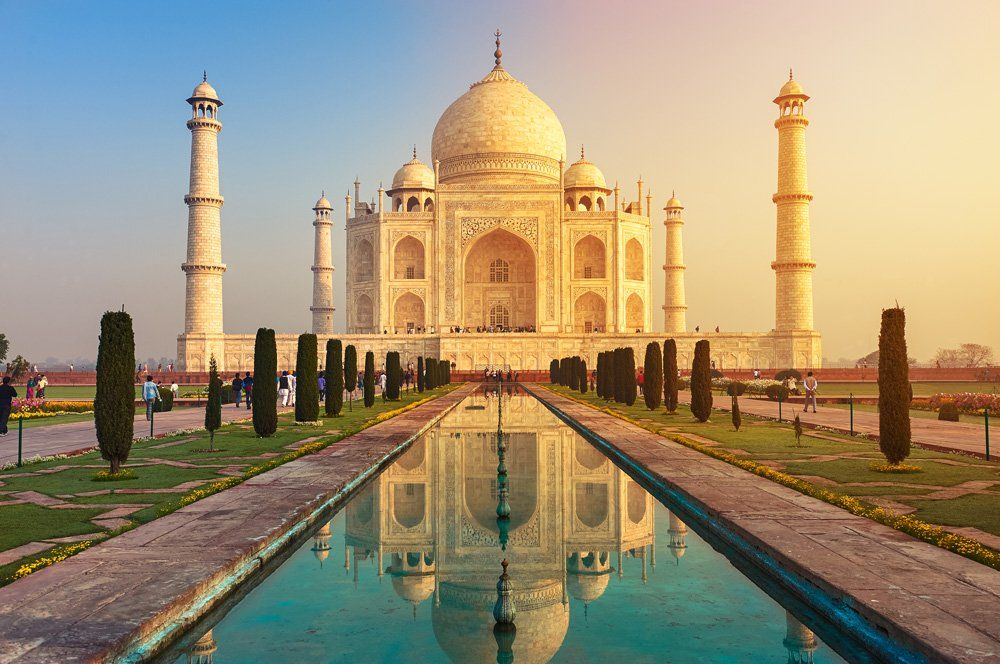
The Taj Mahal, Agra, Uttar Pradesh © Yury Taranik / Shutterstock
From Dehli's bustling dusty streets to 'the pink city' of Jaipur and Agra's Taj Mahal, this 10-day trip ensures you experience all of India's Golden Triangle highlights.
The first day begins with arrival in Delhi, followed by an afternoon tour of Old Delhi. On the second day , you will fly to Varanasi where you will enjoy a mesmerising evening river walk and a candlelight Puja ceremony.
On the third day , you will witness the dawn Puja ceremony, tour the city temples and visit Sarnath. On the fourth day , you will travel to Khajuraho to admire the UNESCO-listed temples.
Day five includes a transfer to Orchha, in the evening you will board a train to Agra. Day six is dedicated to exploring Agra, with visits to the legendary Taj Mahal and Agra Fort.
On the seventh day , you will proceed to Fatehpur Sikri. On the eighth day , a sightseeing tour of Jaipur is planned, including the impressive Amber Fort and the City Palace.
On the ninth day , you can do some shopping in Jaipur and on the tenth day , you will depart from Delhi International Airport.
Check this overview of the Golden Triangle 10-day itinerary:
- Arrival in Delhi and City Tour
- Candlelight Puja Ceremony
- Overnight in Varanasi
- Ganges River Morning Ceremony
- The Temples of Khajuraho
- Overnight in Khajuraho
- Visit the Temples of Orcha
- Taj Mahal and Agra Fort - Golden Triangle with Varanasi and Khajuraho
- Fatehpur Sikri Visit
- Overnight Jaipur
- Amber Fort and City Palace
- Shopping in Jaipur
- Overnight Delhi
- Departure from Delhi
Feeling curious? You can take a step forward and book this trip now .

Jaipur City Palace © Shutterstock
Stay in the most beautiful hotels, and have a knowledgeable private tour guide by your side throughout this 15-day unique trip to India . Visit highlights like the Taj Mahal and unknown areas like the villages in Rajasthan for nature, wildlife and cultural encounters unique to India.
The first day welcomes you to Delhi. You will be transferred to your hotel. The second day is a city tour covering Old and New Delhi.
On the third day , you will visit the Agra Fort. On the fourth day , you will admire the beauty of the Taj Mahal before travelling to Jaipur. The fifth day in Jaipur invites you to explore the bazaars, savour the food and appreciate the local handicrafts.
On the sixth day , you will travel to the village of Chhatrasagar. Day seven begins with a sunrise yoga session on the shores of Chhatrasagar Lake, followed by a bird-watching boat tour.
On the eighth day , you will depart Chhatrasagar for Jawai. On the ninth day , a morning leopard safari and a visit to a Rabari settlement are planned. On the tenth day , you will leave Jawai for Udaipur.
Day eleven includes a tour of Udaipur and a cookery workshop. The twelfth day includes a flight to Mumbai. Day thirteen is dedicated to exploring the markets and temples of Mumbai.
Day fourteen offers a unique 'Community Experience' excursion where you will visit slums and experience the life of the local people. Finally, on the fifteenth day , you bid farewell to India.
Check this overview of the Golden Triangle 15-day itinerary:
- Arrival in Delhi
- City Tour - Old and New Delhi
- From Delhi to Agra
- Visit Agra Fort
- Cycle Rickshaw for a glimpse of the Taj Mahal
- Morning visit to Taj Mahal
- From Agra to Jaipur
- Rajasthan Cultural Walking Tour
- Jaipur - Bazars, cuisine and crafts
- From Jaipur to Chhatrasagar Village
- Sundowner and dinner
- Overnight in Pushkar
- Yoga at sunrise
- Birding boat excursion
- Overnight Pushkar
- From Chhatrasagar to Jawai
- Overnight Deogarh
- Leopard safari
- Rabari Settlement
- From Jawai to Udaipur
- Overnight in Udaipur
- Udaipur City Tour
- Cooking Class
- From Udaipur to Mumbai
- Overnight in Mumbai
- Mumbai - markets and temples
- Community Experience Tour - Visit the Slums
- Departure from Mumbai
Ready for some adventure? You can go ahead and book this trip now .

Albert Hall, Jaipur, India @ Shutterstock
The Golden Triangle in India is well connected by public transport. If you’re on a strict budget, the cheapest way to travel is by bus. Indian bus journeys are an experience in their own right, as people tumble in, perching on armrests and sitting in the aisle.
Far and away the best way to travel around India's Golden Triangle is by train . You’ll have the opportunity to catch a glimpse of rural India as you roll through the countryside. Book your ticket in advance, either online or at a train station.
Otherwise, if you only have a few days, consider hiring a taxi from a government-approved company to take you around, allowing you to see as much as you can in the time available.
Within the cities, take an autorickshaw (or tuk-tuk) between destinations. Thick traffic makes these small vehicles the most effective way to travel, as they dip and dive between taxis and trucks. They can be hair-raising, but also fast, inexpensive (make sure you agree on a price beforehand) and a fun way to see India's Golden Triangle at its most chaotic.

A tuk tuk - auto-rickshaw, India © Dmitry Kalinovsky/Shutterstock
Related articles from the blog
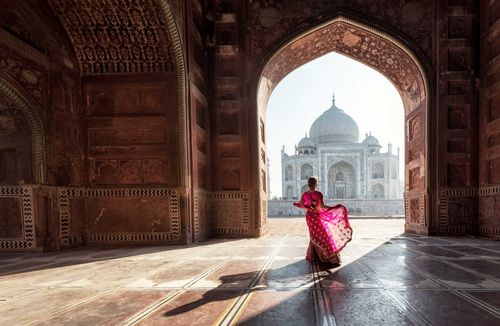
Not everyone gets ill while touring the Golden Triangle in India, but it can put a downer on your holiday. The so-called “Delhi belly” comes from drinking unsafe water. The cheapest and most environmentally friendly strategy to avoid it is to use water purification tablets. If you struggle with the taste, bottled water is also readily available (just ensure that the lid is sealed).
Make sure your food is always hot and freshly cooked. Avoid raw fruit and vegetables, which may have been washed in unfiltered water. Finally, don't worry too much and you’ll be able to make the most of the delicious curries and Indian snacks on offer.
Deciding when to travel to the Golden Triangle in India can be complicated, due to its extremely varied weather. India’s seasons are split into the wet, humid monsoon season, and the dry, cool season.
The best time to visit the Golden Triangle is November to March when the majority of the country is at a comfortable temperature with good weather. Delhi, Agra, Rajasthan and Varanasi are perfect for a visit in this period.
October and November are suitable times to visit Delhi and the Golden Triangle, as there are more bearable temperatures, similar to February and March. However, during October and November, you may encounter a lot more tourists at popular sites and landmarks. Crowds can become a nuisance for places like the Red Fort or the Taj Mahal. Both domestic and international tourists visit the capital at this time.

The Haji Ali Dargah, a famous tomb and a mosque in Mumbai © Shutterstock
Ready for a trip to India ? Check out the snapshot Rough Guide to India .
If you prefer to plan and book your trip to India without any effort and hassle, use the expertise of our local India travel experts to make sure your trip will be just like you dream it to be.
We may earn a commission when you click on links in this article, but this doesn’t influence our editorial standards. We only recommend services we genuinely believe will enhance your travel experiences.
Top image: Agra downtown with Taj Mahal, India © turtix/Shutterstock
- Architecture
- Inspiration
- See & Do
- Where to stay
Planning your own trip? Prepare for your trip
Use Rough Guides' trusted partners for great rates
Travel advice for India
From travel safety to visa requirements, discover the best tips for traveling to India
- Mumbai, India
- Culture and Etiquette in India
- How to get a visa to India
- Eating and drinking in India
- How to get to India
- Getting around India: Transportation Tips
- Travel Health India
- Maharashtra, India
- Shopping tips for India
- Travel Tips India for planning and on the go
- Sports and Outdoor activities in India
- Best time to visit India
Find even more inspiration for 66 here
Ready to travel and discover india, get support from our local experts for stress-free planning & worry-free travels.
- Itineraries
- Travel advice

India Golden Triangle in 10 Days — Travel Guide, Itinerary & Tips
By: Author Emily
Posted on Last updated: November 27, 2023
The Golden Triangle is one of the most popular tourist routes in India for first-time visitors. The triangle is anchored by three cities: Delhi, Jaipur and Agra. In this post, we’ll share the details of our 10-day trip around India’s Golden Triangle. We’ll share where we stayed, how we got around and exactly what we did during our trip. Then we’ll share some of our best tips that we learned from our experience in India.
Keep reading to learn all about India’s Golden Triangle.
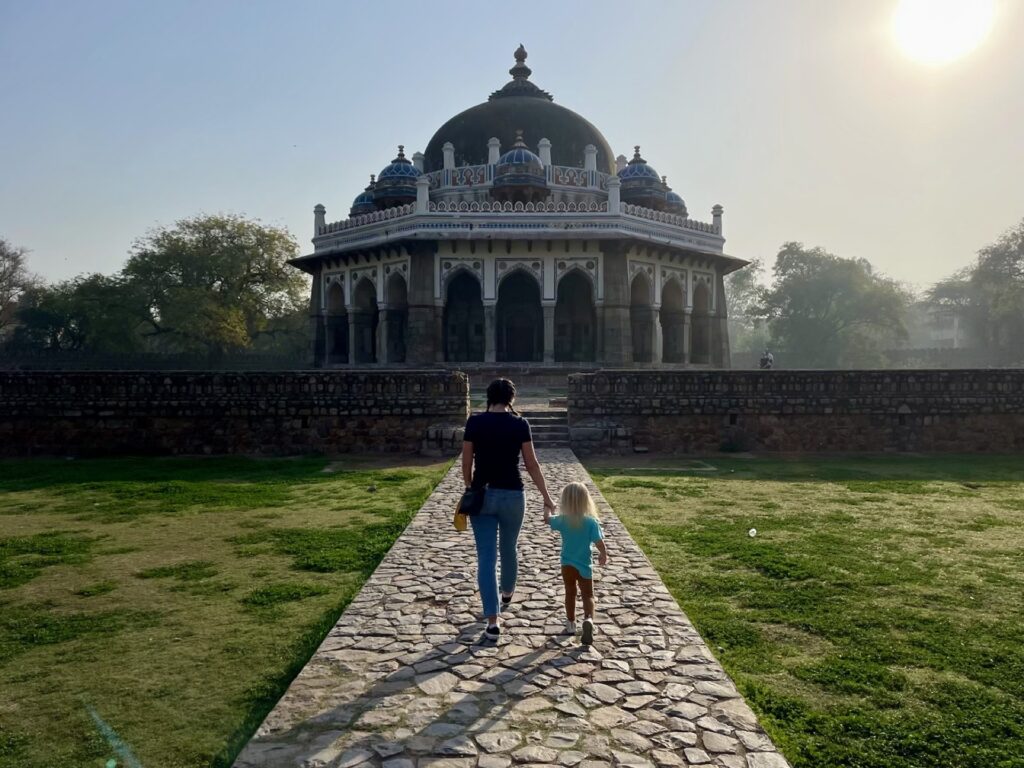
In this Post
Golden triangle overview.
- When to Go & How Long to Stay
- Visas & Vaccines
- Flights, Hotels & Transportation
- Golden Triangle Itinerary Overview
- Sample Itinerary: Delhi
- Sample Itinerary: Jaipur
- Sample Itinerary: Agra
- India Golden Triangle Tips
Other India Guides
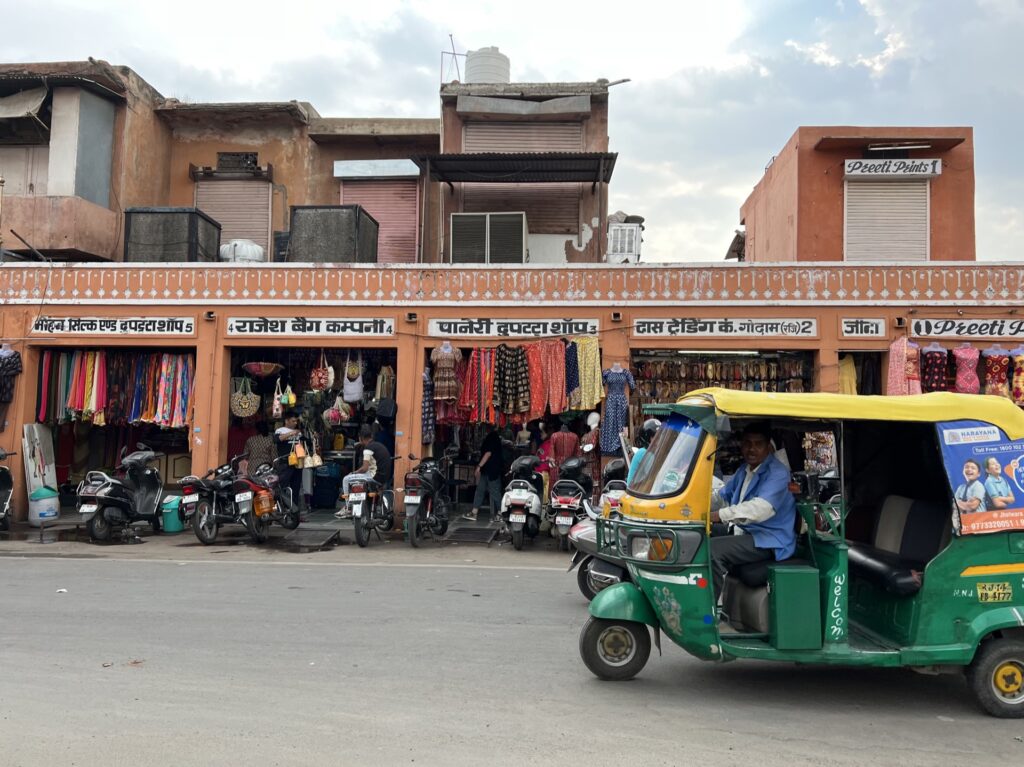
If you’re going to India for the first time, the Golden Triangle is a great route to take. You’ll get to experience the chaos of Delhi, history of Jaipur and beauty of Agra in a single trip. The cities are relatively close together, and it’s a good way to sample Indian culture on a well-beaten tourist path.
The Golden Triangle starts in Delhi. Home to Indira Gandhi International Airport — the country’s busiest airport — most international travelers will start and end in Delhi. You’ll want to spend at least three days in Delhi, and it’s usually best to do that first. It’s a great way to get grounded and adjust to the culture.
From Delhi, you can do Agra or Jaipur in either order. We’d suggest Jaipur first and then finishing in Agra. Jaipur has a lot more to do, so you can ride the high-energy wave from Delhi right into Jaipur. Then you can wrap up in Agra, which is much more relaxing because there’s really just one main attraction. The Taj Mahal is a great reward at the end of 10 days in India.
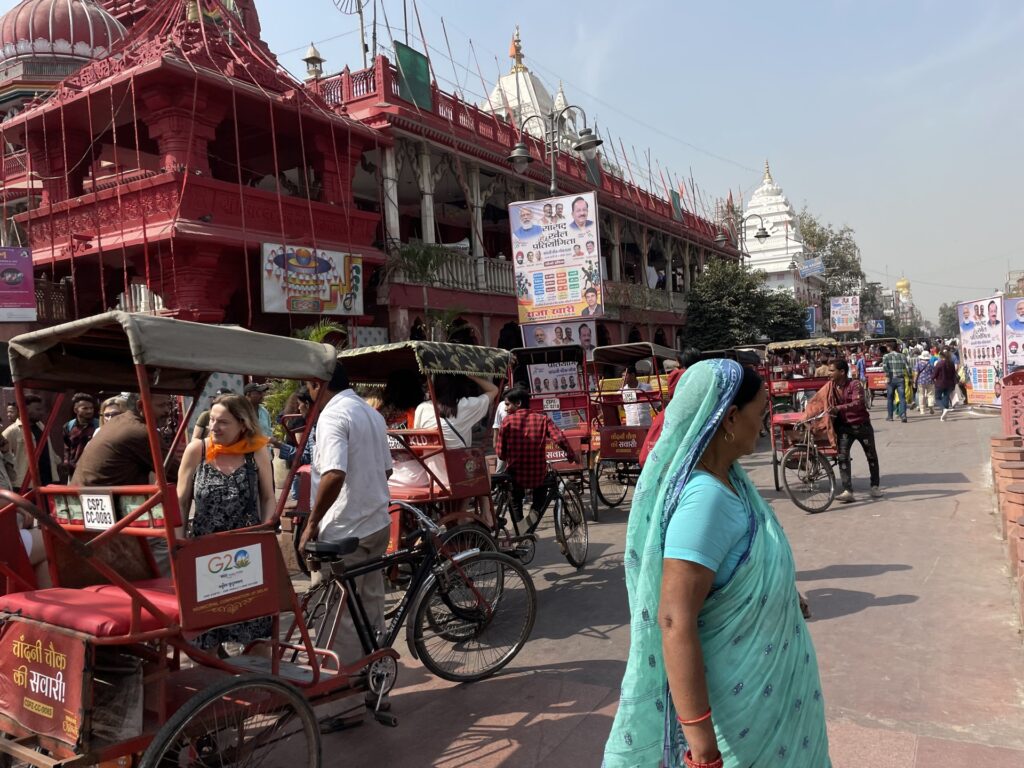
The three Golden Triangle cities are all roughly 200 miles apart from each other. You can move between the cities by train or you can hire a driver. We’ll discuss transportation in detail in a bit.
The Golden Triangle is a well-established tourist route. Nearly everyone in the tourism sector speaks English, you’ll have your pick of hotels, and there will be a wide array of foods available. Yes, you can find authentic Thali and dal everywhere you go, but you can also find pizza and burgers just as easily.
Overall, the Golden Triangle is an ideal route for first time travelers because it packs a huge punch with (relatively) little effort. The taste of India you get on the Golden Triangle will make you realize just how big and diverse India really is. And if you’re anything like me, you’ll be planning a trip back before you even leave.
Best Time to Visit the Golden Triangle
The three cities on the Golden Triangle are all pretty close together, and they share similar weather patterns. The climate in this region of India can be intense, so it’s really important that you plan your trip at the right time.
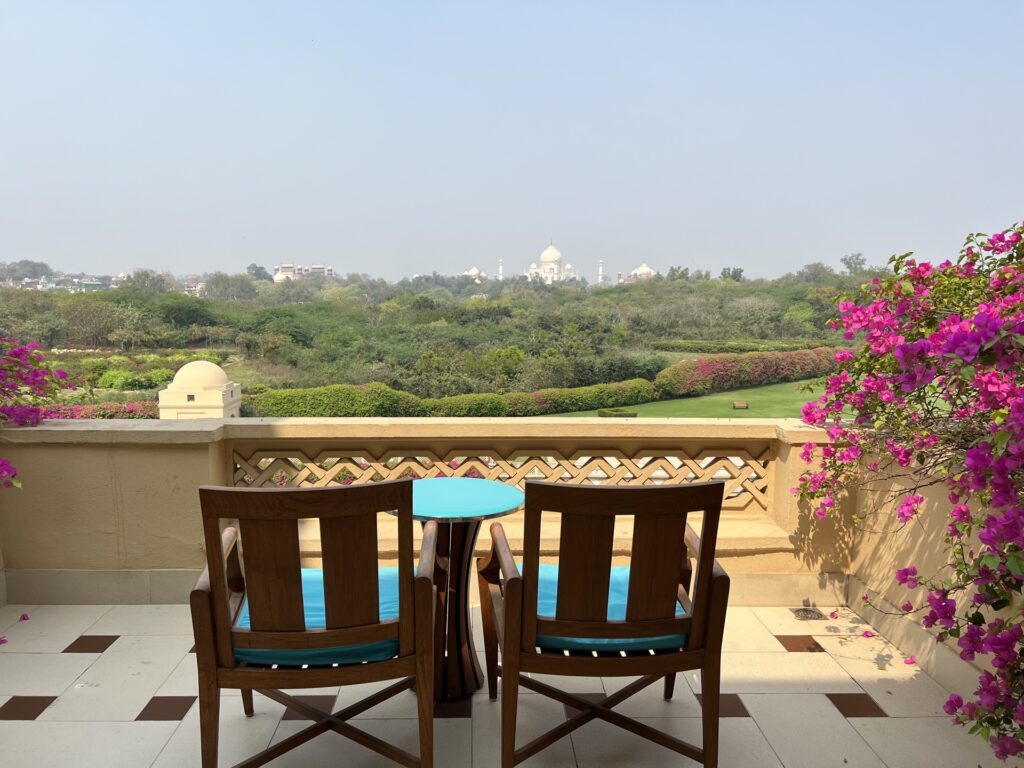
Here’s a look at the weather in this region by season. All temperatures are in °F.
- Golden Triangle in the Summer (April – June): Summer is extremely hot with temperatures regularly hitting 100°F or higher.
- Golden Triangle Monsoon Season (July – September): The monsoon season means frequent heavy rains and intense humidity. Temperatures typically stay in the 90s. Avoid monsoon season at all costs.
- Golden Triangle in the Fall (October – November) : The rainy season gives way to a milder fall. High temps are still in the 80s, but the lows start to dip to the 50s and 60s.
- Golden Triangle in the Winter (December – January): Winter is very comfortable for travelers who are coming from more temperate climates. The lows can be really cold — as low as the 40s — but the highs tend to hover around the low 70s.
- Golden Triangle in the Spring (February – March): Temperatures shoot up quickly in the spring and can vary greatly by the day. Highs will hit the 70s and 80s and lows will move up to the 50s and 60s.
The best time to visit the Golden Triangle is in the late winter or early spring (January through March). You definitely want to avoid the summer’s crippling heat and monsoon season, which can easily damper any holiday.
For any chart people like me, here’s the table I put together to inform the summary above. (Weather data source: Weather Spark )
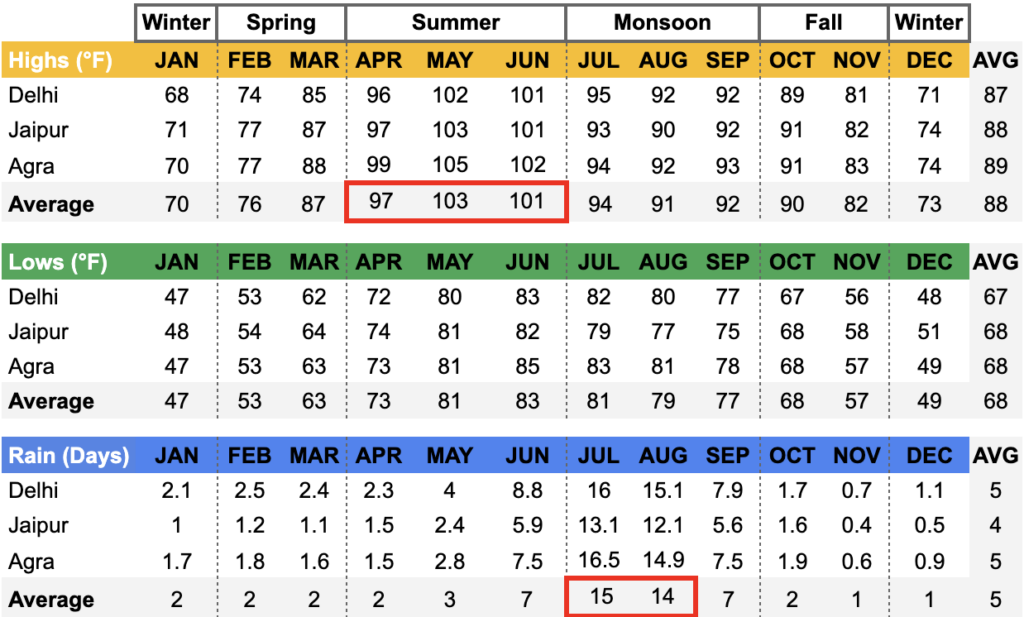
How Long Do You Need for the Golden Triangle in India
Generally speaking, we recommend spending 10 days on the Golden Triangle. This is a pretty relaxed schedule, so you should have enough time to see most of each city’s best attractions and have time to relax in the afternoons and evenings. Ten days will also allow you to dedicate full days to travel between cities. This is ideal because then you don’t have to rush or worry about missing anything in the case of travel delays.
If you don’t have a full 10 days, you could fit the Golden Triangle into as few as 7 days. This is tighter, but it would work for someone who has the energy to pack their days full. (Pre-kid us would have definitely tackled it in 7 days.) If you’re doing a shorter trip, I’d recommend a car service between cities so you have more control over your travel time and schedule.
If you have more than 10 days in India, I’d recommend adding another city instead of dragging out the Golden Triangle. One great city to the add to the Golden Triangle is Udaipur. It’s a bit of a hike, but you can get there by car or train. It’s a beautiful and city to spend 3-4 days in addition to the Golden Triangle.
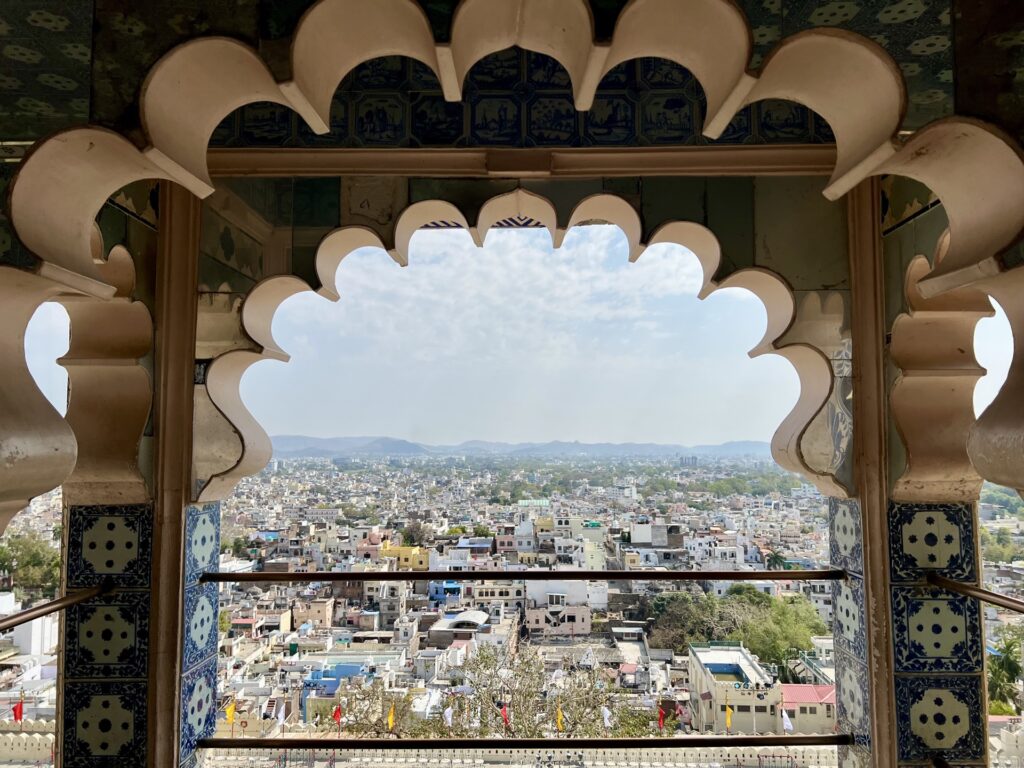
India Visa Requirements
To visit India, you need to secure a Tourist e-Visa before your trip. The Tourist e-Visa is required for visitors from almost every country and has three available durations: 30 days, 1 year, 5 years.
You can apply for an Indian Tourist e-Visa online. You will need a valid passport, passport photo, and credit card to pay the application fee. The application fee varies based on your nationality.
In most cases, this is a quick and easy process, but don’t put it off till the last minute. It can take longer if complications come up. My husband and I submitted separate forms. Mine came back in 24 hours, but his took a few weeks. (We’ve both been to the same countries.) Eventually we were both approved, but it’s just a good idea to get it as soon as possible.
Recommended Vaccines for India
India does not mandate any vaccines for visitors from most countries. (The only exception to that is the Yellow Fever vaccine, which is required if you’re traveling from a high-risk Yellow Fever country.) However, you might still want to get a few vaccines before you travel to India.
In the United States, the Centers for Disease Control and Prevention (CDC) recommends the following vaccines for travelers going to India. Other countries may have different guidelines.
- Hepatitis A
- Yellow Fever
- Cholera (not prevalent in the Golden Triangle)
- Malaria (not prevalent in the Golden Triangle)
- Japanese Encephalitis (not prevalent in the Golden Triangle)
We were already up to date with most of these vaccines including: Covid, Hep A, Hep B and measles. We also already received Yellow Fever vaccines before traveling to Colombia a few years ago. Based on our travel plans (Delhi, Jaipur, Udaipur, Agra), we weren’t at high risk for cholera, malaria or Japanese Encephalitis. That left us with Rabies and Typhoid to consider.
If it was just us adults, we probably would have skipped both. Since we were traveling with a 2-year old, we booked a travel consultation with our pediatrician. Our child was fully caught up on their required vaccines, and the doctor actually didn’t strongly recommend any additional vaccines.
We decided to skip the rabies vaccine. Stray dogs are definitely a thing in the Golden Triangle cities (they are just about everywhere in India), but we assumed we would be able to stay pretty clear of them. Meanwhile, Typhoid spreads through contaminated water, and that seemed like a risk that would be harder to avoid completely. We decided to get the Typhoid vaccine for all of us.
The Typhoid vaccine is expensive. It costs around $150 and most insurance doesn’t cover it. (Our insurance covered children but not adults.) It’s also really hard to find. In many cases you have to go to a travel clinic to get it, which can sometimes cost another few hundred dollars. We live in NYC and were fortunate that our pediatrician and local CVS had it in stock.
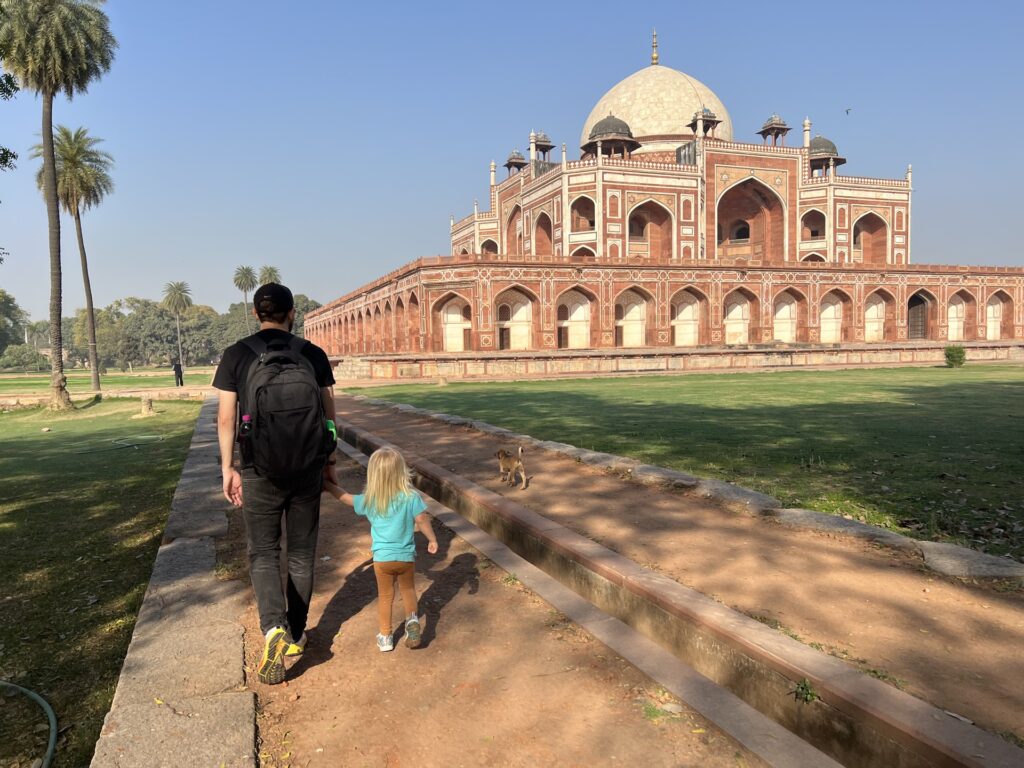
( Disclaimer : We are not doctors and this is not medical advice. Consult your physician or a travel clinic for professional recommendations.)

Flying to Delhi
The journey around the Golden Triangle usually starts and ends at Indira Gandhi International Airport (DEL) in Delhi.
Air India is the flag carrier airline of India. While Air India isn’t known for being one of the better airlines, we personally had a pleasant experience flying Air India Business Class from Dubai to Delhi . I wouldn’t recommend flying Air India long-haul, but it’s a fine option if you’re traveling regionally.

Plenty of other international carriers fly to Delhi, so you’re probably better off flying your home country’s flag carrier instead.
There is a Metro stop at the airport, and the Delhi Metro is incredibly nice and clean. The Metro is a great way to get into the city if your hotel is near a Metro station (such as one of the many hotels near Connaught Place.) The Metro is also a great way to get from the airport to the train station, which is good if you’re planning to head right out to Agra or Jaipur and see more of Delhi on the tail end of your trip.

If you’re staying in Delhi for a few days and your hotel is not near a train station, your best bet is to take a car. Taxis are available at the airport and offer pre-paid or metered fares. The airport website recommends pre-paid fares, which requires going to the taxi counter to get a ticket first. Uber is also available in Delhi, so that’s a better option as long as you have cell service or wifi (there is free wifi at the airport).
If you are willing to spend a bit more, the easiest option is to book a car service. We booked a car service through our hotel and it was incredibly smooth. They were waiting for us with a sign when we cleared customs and they got us right to our hotel without any hassle. If you’re arriving in India after a long-haul flight, you will want the comfort and ease of a car service.
Choosing Hotels on the Golden Triangle
The three cities on the Golden Triangle are all populous cities and tourist hubs. There is a variety of hotels and accommodations available at a wide range of price points.
You can do the Golden Triangle (and honestly all of India) one of two ways.
One option is to take the budget route. You can find decent hotels and guesthouses on the Golden Triangle route for pretty cheap. Many of these accommodations receive glowing reviews. For example, Treebo Trend The Armani hotel in Delhi typically goes for less than $100 USD per night and is rated 4.8/5 on Google and 7.3/10 on Booking.com. And for India, that’s pretty pricy. You can find stays as low as $20-$30 a night if you’re willing to be adventurous.
Another option is to go the luxury route. India has some of the best hotel chains in the world. Specially, Oberoi Hotels & Resorts and Taj Hotels consistently rank on the World’s Best Hotel Brands list by Travel + Leisure. These deluxe hotels provide accommodations that are in stark contrast to the conditions you’ll see around most of these cities. A single night at one of these deluxe hotels can set you back over $1,000 USD.
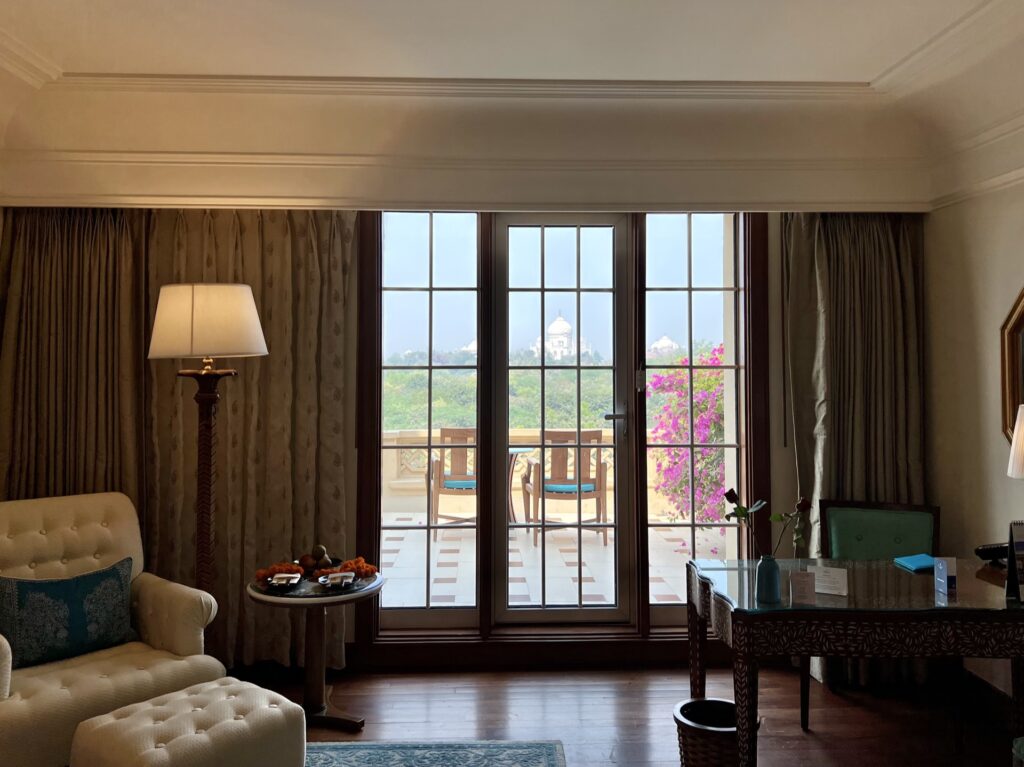
Sure, there is a middle ground between these two extremes, but I would argue that it’s not really worth it. You can find good, clean, safe accommodations in the $100 range and the up charge to the $200-$300 dollar range don’t really offer substantial improvements relative to the price increase.
If you can afford to splurge on a nicer stay — even if it means delaying your trip for an extra year to save up — I would highly recommend it for the Golden Triangle. This isn’t something I say lightly or would say for many other destinations, but I feel strongly about it in India.
As much as I loved the Golden Triangle and India as a whole, it is physically and emotionally exhausting. A nice hotel can serve as an oasis, allowing you to recharge between excursions. This reset will prevent you from burning out too quickly and keep you open to experiencing the cities in shorter bursts.
I would never recommend going into debt or living outside your means. I am confident you can create this oasis at a hotel in the $100 price range. That said, if you have the budget and this is a once-in-a-lifetime trip for you, the luxury hotel options are incredible.
Personally, we went the luxury hotel route. You can check out detailed reviews for each hotel we stayed at on the Golden Triangle by visiting the link section at the end of this post.
- Delhi: The Oberoi New Delhi and JW Marriott New Delhi Aerocity
- Jaipur: Jai Mahal Palace
- Agra: The Oberoi Amarvilas
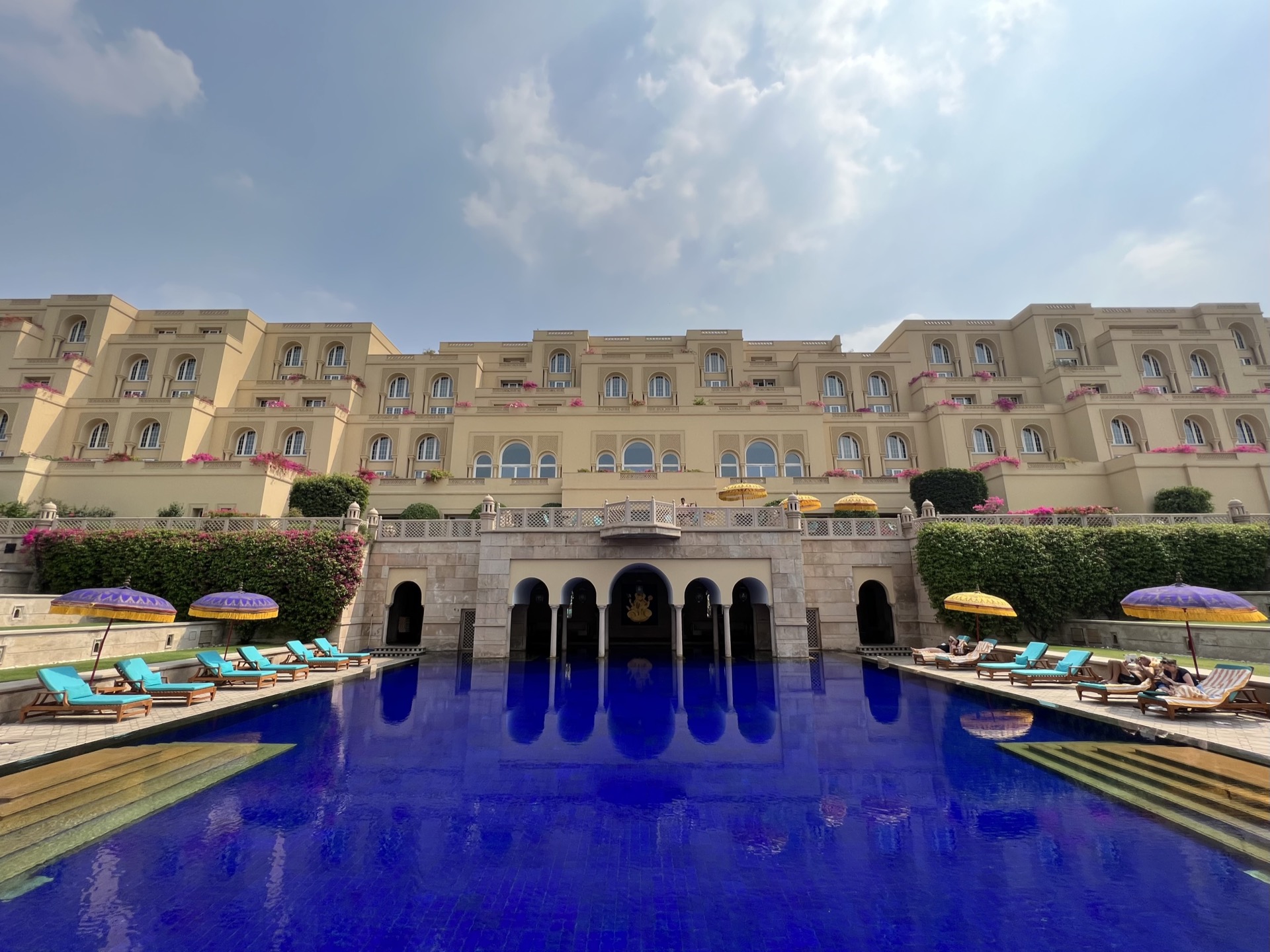
Getting Around the Golden Triangle
There are two main options for getting between the cities on the Golden Triangle.
The cheapest option is to take the train. Indian Railways runs an impressive network of routes all over the country, including the Golden Triangle. Trains in India are definitely an experience, but they’re not all the jam-packed trains you might have seen on social media. At least not for tourists. We took several trains in India and generally had very positive experiences.
Tourists should book the highest travel class available (which is still cheap by global standards), which includes assigned seats and AC. The train stations can be a bit hectic, but they have very clear signage (in English and Hindi) and the trains usually run on time. In our experience, the trains were always very clean and the experience from start to finish was pretty organized.
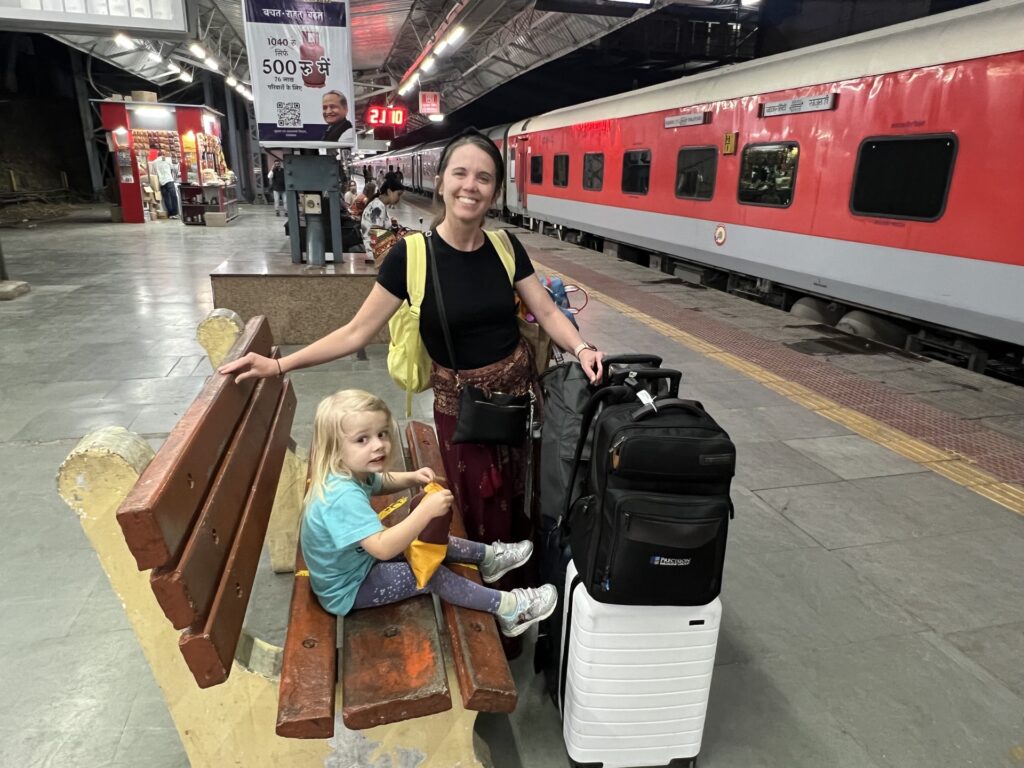
You can book Indian Railways train tickets online in advance. For international travelers, the easiest way to book Indian Railway tickets is through a third-party service 12GoAsia . (It’s very difficult to buy direct from Indian Railways from outside of India.) We’ve used 12GoAsia all over Asia and most recently during our trip to India. We have always had a great experience, particularly with their customer service. (This is not sponsored, we’re just fans of their service.)
Rail travel is not without it downsides. You’ll have to carry your bags around (often up and down stairs), navigate the station to find your train and car, and figure out transportation between the station and your hotel. On top of that, you will have less control over your schedule. Some routes are not at the best times, and there’s always the chance that your train is delayed.
To avoid all of that, the easiest way to get between Golden Triangle cities in India is take a car. The obvious advantage to a car service is that you will have door-to-door service between hotels, which means you don’t have to deal with any other transportation or lugging your bags. It also gives you more control over your schedule. Traffic can always be an issue, but you can start your journey pretty much whenever you want.
Most hotels in India have a car service they recommend and can book that for you. Their service will usually be more expensive than finding someone on your own. We booked through Bagga India Tour for one leg of the Golden Triangle (Delhi to Jaipur) and it worked out great. You can also save a bit of money by booking one car service for the entire journey, instead of booking each leg separately.
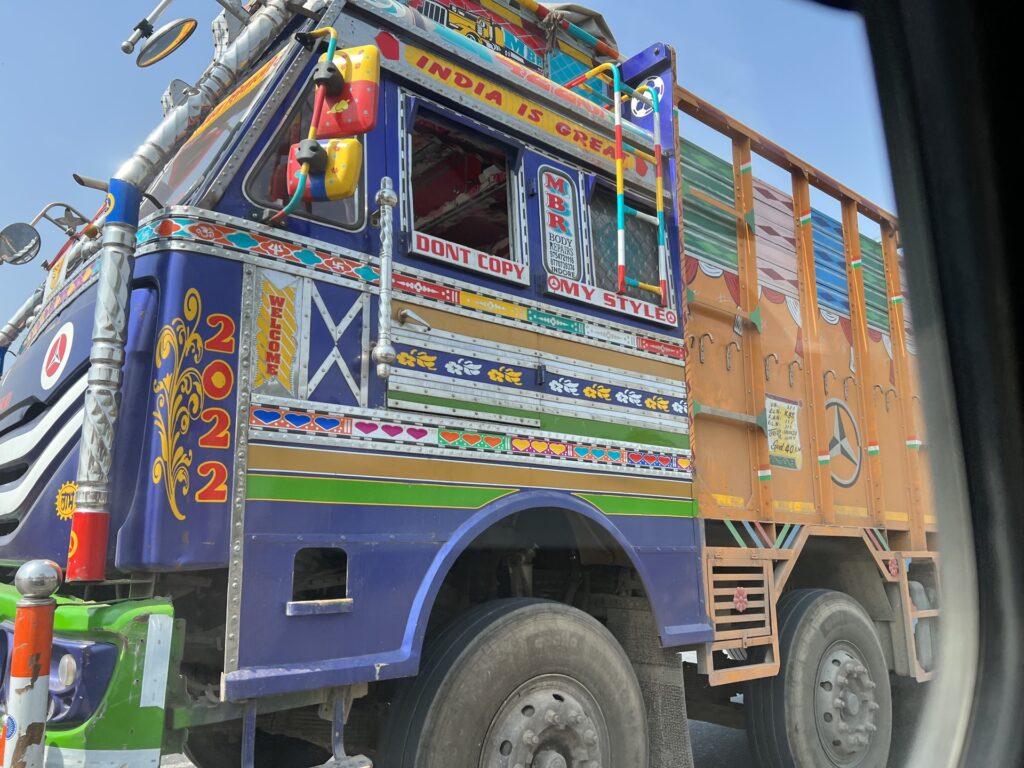
Finally, you can potentially fly between some legs of the Golden Triangle. (There is no flight between Agra and Delhi.) Don’t let the short flight times and cheap prices fool you, though. The airports in these cities are far from the city centers, and the airports are often very crowded and slow. By the time you factor in the transit, security waits and the flight itself, you’re not actually saving much time or money.
10-Day India Golden Triangle Itinerary
In these next sections, we’ll go into the details of our 10-day trip around the golden triangle. This itinerary largely mirrors the route we personally took. We added a few days in Udaipur between Jaipur and Agra, but this is how we handled the Golden Triangle portion.
Here is an overview of the itinerary we’ll cover in this post.
- Day 1: Arrival in Delhi
Day 2: Delhi — Old Delhi
Day 3: delhi — old meets new, day 4: delhi — tombs & gardens, day 5: travel from delhi to jaipur, day 6: jaipur — forts & palaces, day 7: jaipur — jaipur old city, day 8: travel from jaipur to agra, day 9: agra — taj mahal.
- Day 10: Return to Delhi and Departure
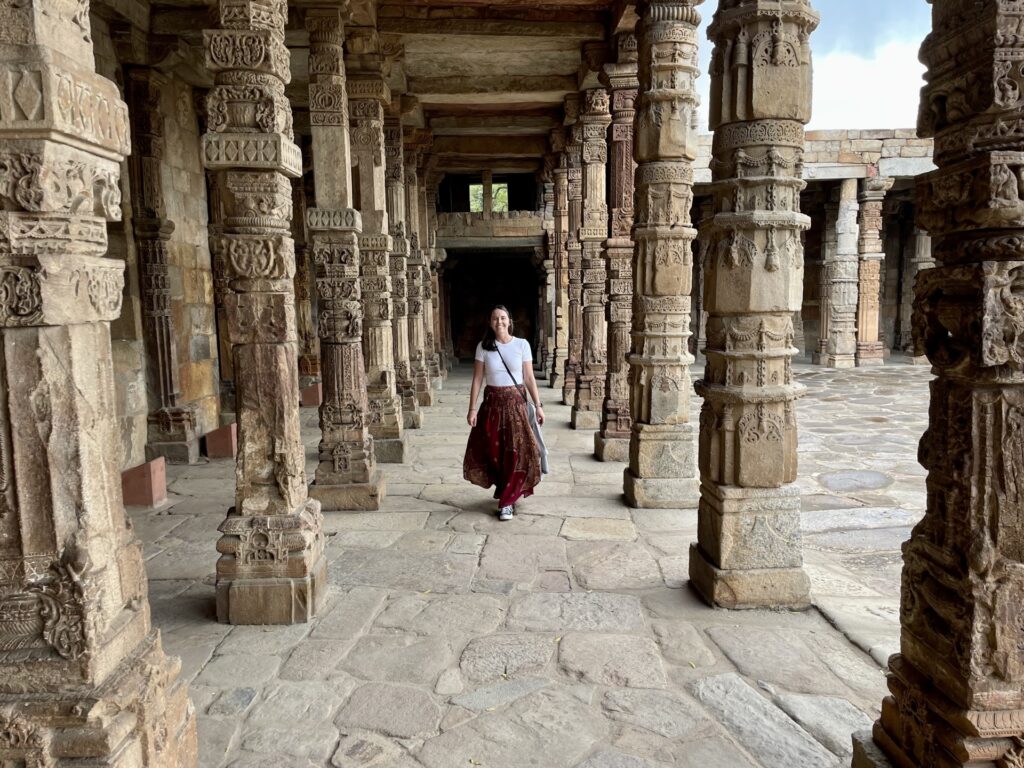
There are plenty of ways you can slice 10 days on the Golden Triangle. We think the itinerary above offers the best balance based on things to do in each location. However, there are two easy alterations you could make to this schedule that would still make sense.
The first change I’d consider is to cut the second day in Jaipur. If you squeeze all of Jaipur into one day on Day 6, you can travel to Agra on Day 7, see the Taj Mahal on Day 8, and then use Day 9 to return to Delhi. This change gets you back to Delhi a day sooner so that you can easily make a morning flight out of Delhi.
Another change you could consider is skipping the overnight stay in Agra all together. You can take a day trip to the Taj Mahal from Delhi, and that often winds up being cheaper and easier than staying in Agra. You could return to Delhi on Day 8 and then do a day trip to Agra on Day 9. Alternatively, you could also add an extra day in Delhi on the front end and do the day trip then. Then you can come back from Jaipur on Day 9 and go straight to an airport hotel for the night before you fly out.
Without any further ado, let’s dive into the itinerary.
Day 1: Arrival into Delhi
We were traveling to India from the US. A direct flight from NYC to Delhi takes 14 hours and includes a 9.5-hour time change. (Yes, you read that right, they are 30 minutes off from GMT.) We decided to break that up with a pitstop in Dubai first.
We decided to fly Emirates Business Class from New York to Dubai. Then we spent a few days in Dubai staying at Atlantis . If you have some extra time in your schedule, I’d highly recommend something like this. It’s a great way to slowly adjust to the time change so you’re fresh and ready by the time you get to Delhi.
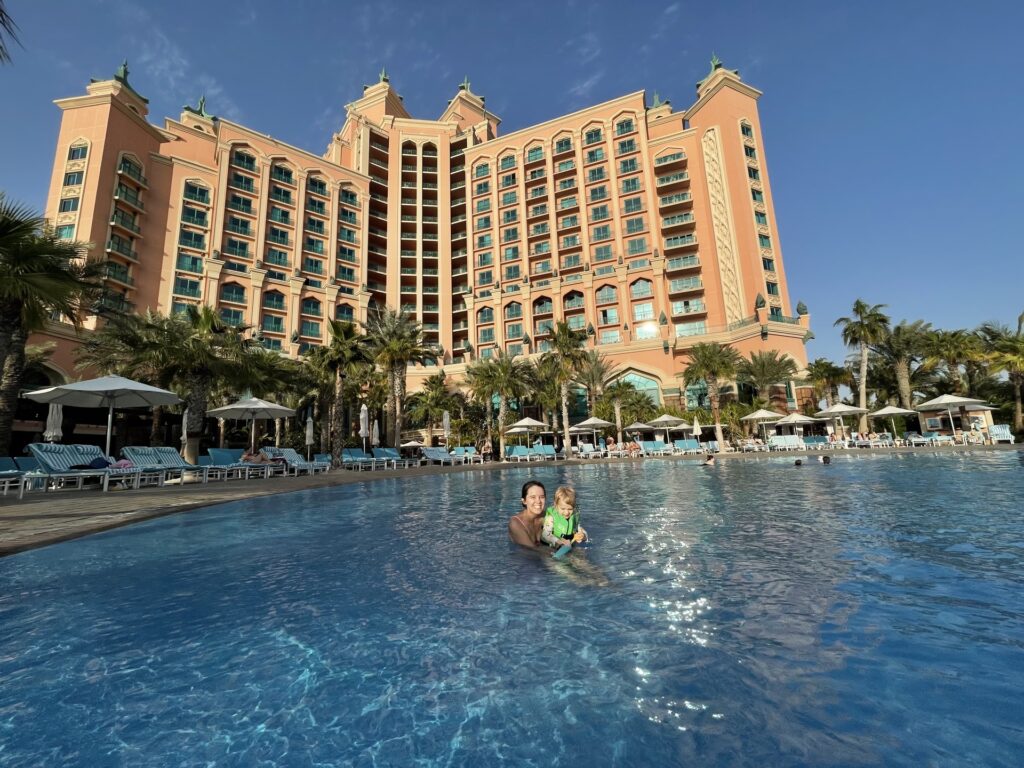
Our flight from Dubai arrived in Delhi at 2:45 PM local Delhi time. The lines for border patrol were brutal, even the expedited lanes for families and premium class travelers. We waited for over an hour. This is yet another reason we were glad that we had the Dubai stopover. Waiting in that line after a 14 hour flight with a toddler when everyone was exhausted would have been much less pleasant.
It’s also just a great example of why you don’t want to have any concrete plans on your arrival day. Even if your flight is on time, you can still get delayed in ways out of your control.
After we cleared customs, everything was smooth sailing. We had arranged a car service through our hotel and they were waiting for us as soon as we exited customs. They carried our bags to a nearby SUV, which had the AC blasting and was stocked with bottled water.
According to Goole Maps, the drive should take about 20 minutes. In reality, it took closer to 45, and it was eventful. Lanes and traffic lights were seemingly optional, our SUV looked massive amid the swarm of tuk tuks and motorbikes, and we even spotted our first holy cows.
We soon arrived at our hotel, The Oberoi New Delhi, which felt like a world away. After a warm welcome, we got settled into our room and enjoyed dinner at one of the hotel restaurants. Even after a short flight, we were ready to pass out and rest up for our first day in Delhi tomorrow.
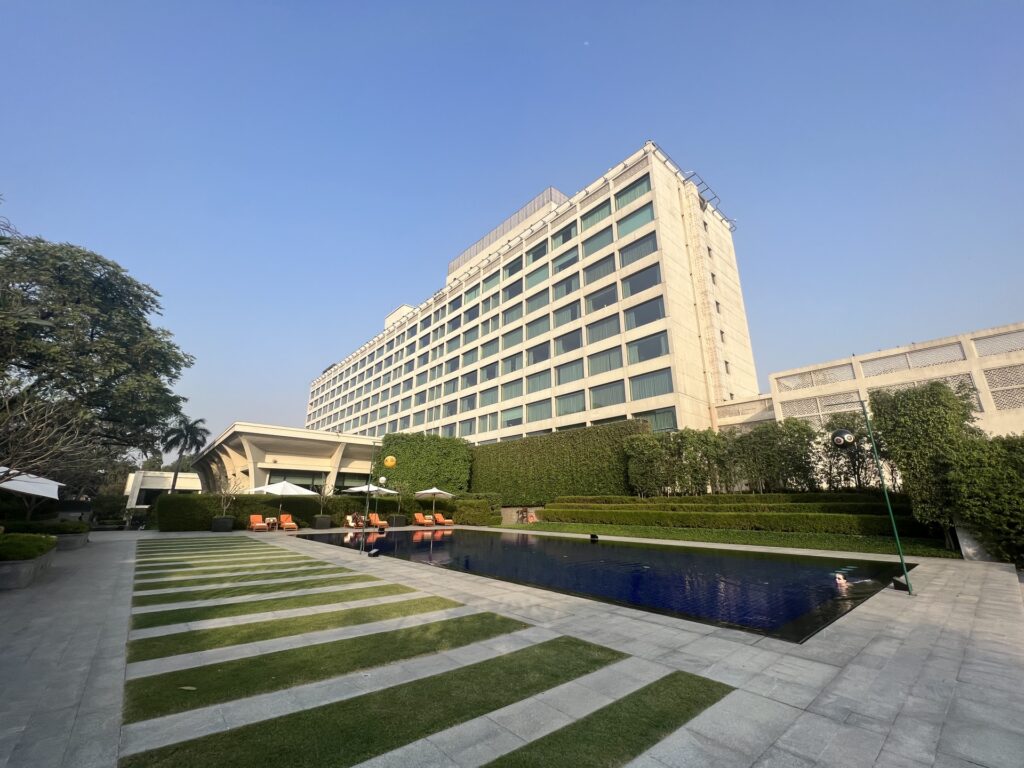
Note: For detailed information about every attraction we saw in Delhi plus even more things to add to your itinerary, check out our sample itinerary for 3 Days in Delhi .
We started our day with room service breakfast. While there are plenty of restaurants in the Old Delhi area, our personal preference on this trip was to primarily only eat at our hotel. Though certainly an extreme approach, this was our best strategy for avoiding the dreaded “Delhi Belly” for ourselves and our little one. (It was maybe overkill and at times boring, but it worked.)
The Oberoi New Delhi is not close to the Metro, so we needed a car to get to Old Delhi. If we were just traveling as adults, Uber would be an ideal transit option. However, we were traveling with a toddler who needed a car seat, so that didn’t work for us. Instead, we booked a car and driver for four hours through the hotel (starting at 8 AM).
We needed the car to get from the hotel to Old Delhi. But after our first stop (Jama Masjid), our driver handed us off to a rickshaw driver. We relied on the rickshaw driver to get us around the pedestrian streets and narrow alleys in Old Delhi that are not accessible by car.
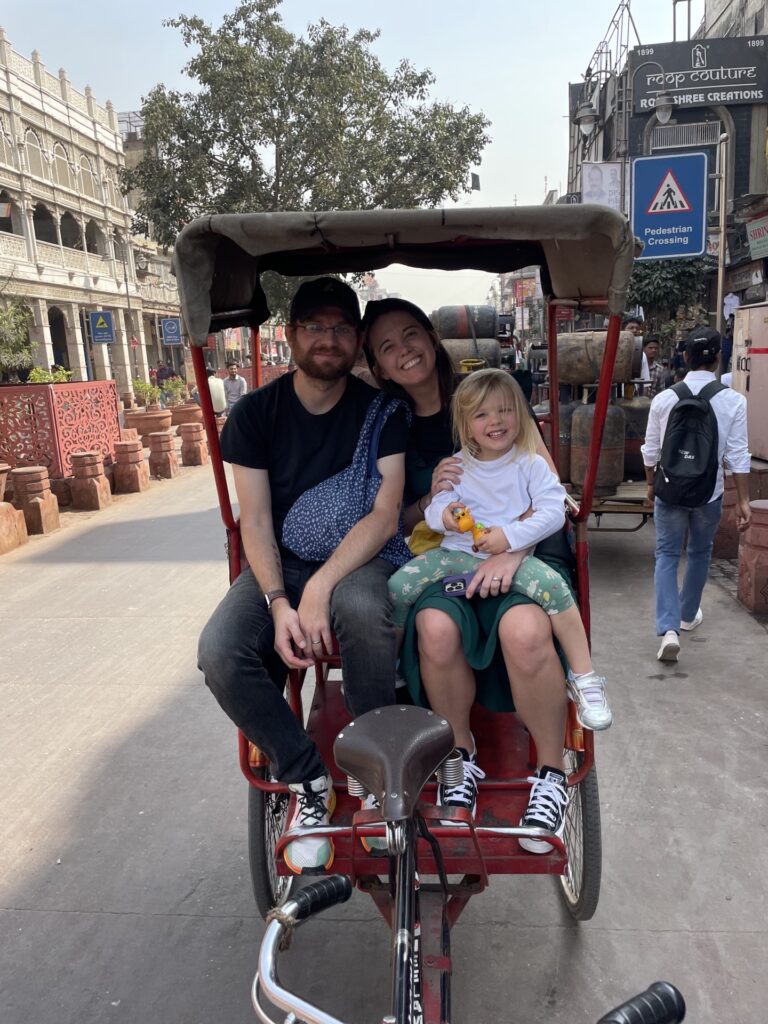
The rickshaw driver took us on the following route, most of which we requested:
- Jama Masjid (Mosque)
- Red Fort (Former royal residence with old palaces, small museums and gardens.)
- Chandni Chowk (Iconic street market where you can find food, clothes, housewares and just about anything you could think of for very cheap.)
- Small street of Jain houses (There is a very instagrammable house here in an enclave just off the market. Be prepared to tip the owner or shop in his store.)
- Tea Shop (There will always be a friend’s shop that sells the best tea in town on any tour you take. We got suckered into this one.)
We had a great time visiting each of these sites. Everything I read about Old Delhi made it sound like an extremely chaotic culture shock, but we didn’t feel that. The neighborhood has a rhythm, a heartbeat, and it just sweeps you up. It’s beautiful and loud, but in an almost hypnotic sense. We only skimmed the surface of this neighborhood, but what we did experience we loved.
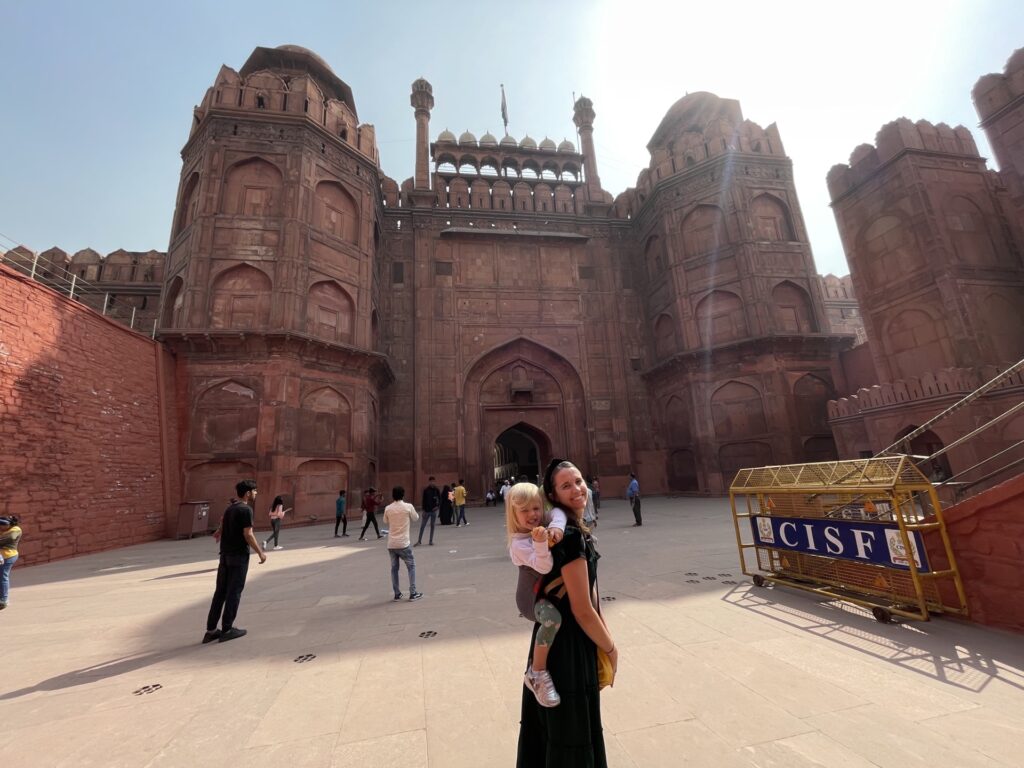
After about 3 hours, we returned to Jama Masjid where we met our driver. Neither our driver nor the rickshaw guide would tell us exactly what we owed for the tour. They insisted it was tip as much as we wish, but we tipped 3x as much as the tour price (which was quoted to us as Rs 400, $5 USD) and he still seemed disappointed.
We returned to our hotel, ate lunch at the hotel restaurant and then put our toddler down for a nap. During that time, Kenny went for a run in the hotel gym and then I got a coffee and macaron in the hotel patisserie.
After the nap, we spent the rest of the afternoon relaxing at the hotel. And by relaxing, I mean we spent two hours in the pool which was pretty cold in February. We wrapped up our first full day in India with Indian food in India! (Yes, it was just from the hotel restaurant but it was still really good!)
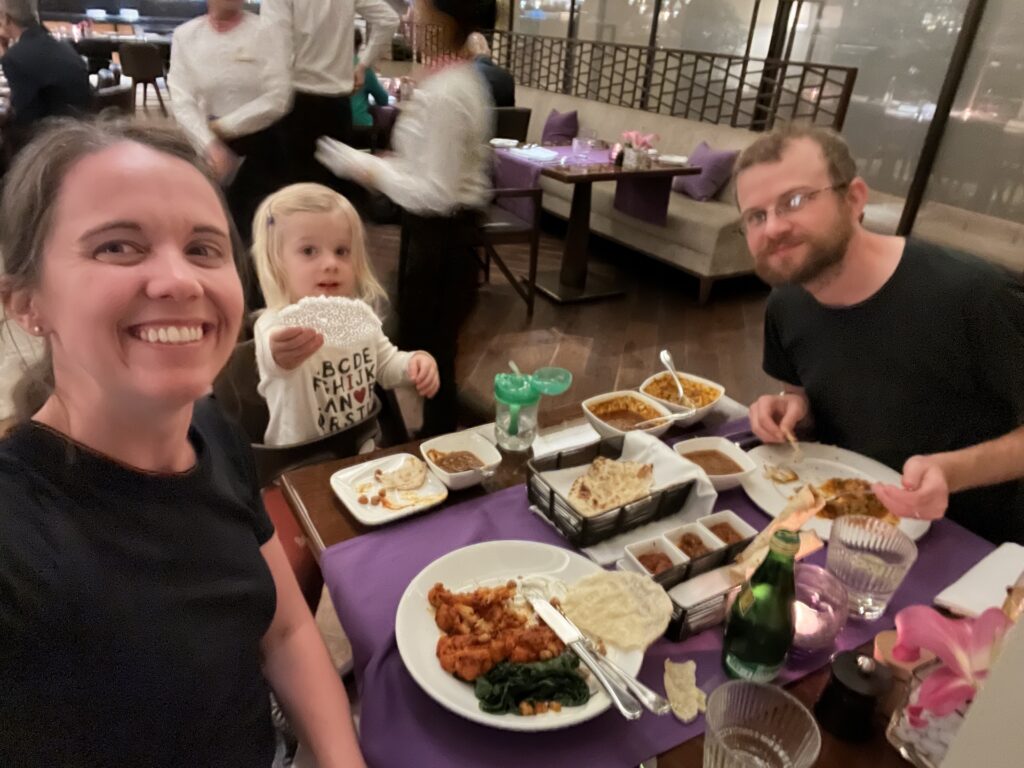
While Old Delhi is all windy and narrow streets and alleys, New Delhi is all wide boulevards, massive intersections, and stately buildings. It’s very spread out and much more European than Old Delhi. We had four things on the agenda today and they were all very spread out. We definitely needed a car to get around, so we booked one through our hotel for another 4 hours in the morning.
After another room service breakfast, our driver picked us up at 8 AM sharp. Our first stop was Qutub Minar, which was about a 30 minute drive. This site is one of three Unesco World Heritage sites in Delhi (along with the Red Fort and Humayun’s Tomb), and it is usually described as an old minaret. That didn’t sound that interesting, but I took a chance on it and ended up loving it.
Sometimes in travel, your mood and the weather and the scenery all just line up to make even a simple experience the most special and memorable. I think that’s what happened here. We beat the crowds, it was a cool and overcast morning, my kid had a blast there, and it was just a really great time. Yes, it’s an old minaret, but there’s some really cool ruins and pretty photo spots, and it’s just a lovely place to walk around on a nice morning.
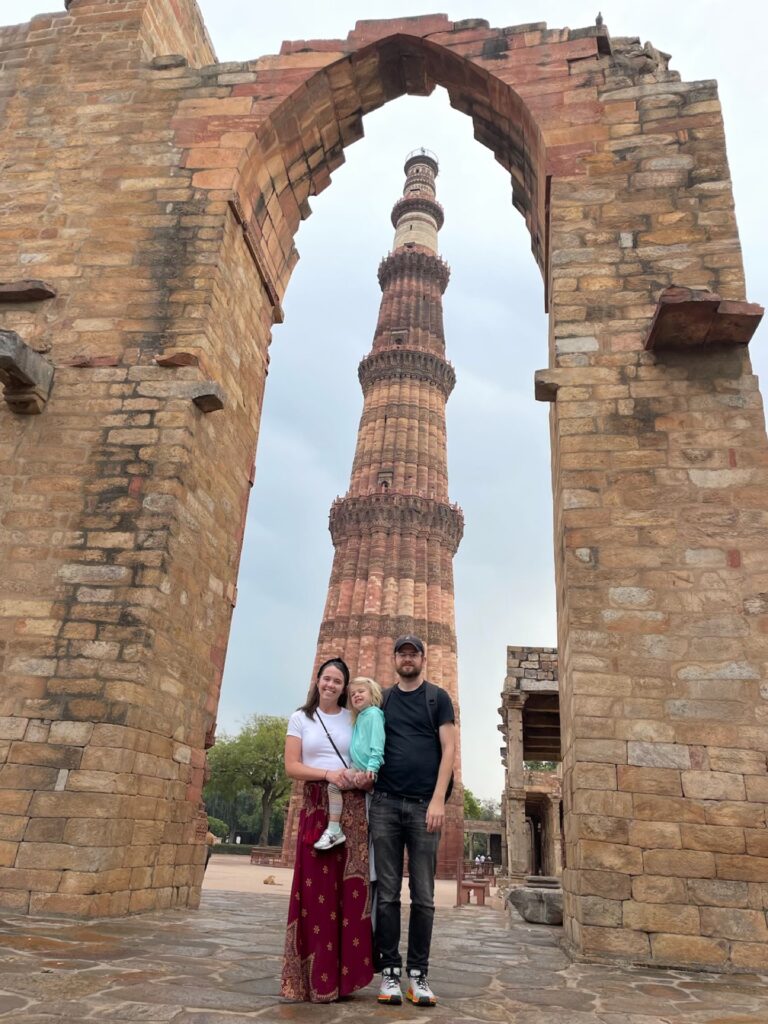
Then we made another 30-minute drive over to Akshardham, which was the complete opposite of Qutub Minar. This is a newly built complex with a large temple, a few exhibitions, and a popular fountain show. It almost has theme park vibes. No phones or cameras are allowed inside and there is very intense airport style security at the entrance.
We wrapped up with two short stops. First was a stepwell called Agrasen ki Baoli. Stepwells are common in India, but most are no longer functional. Like many other stepwells today, this one is now just a quite place to sit and relax. Honestly, I got this one confused with a much cooler stepwell in Jaipur. You don’t really need to go out of our your way to come to this one, unless you want to of course.
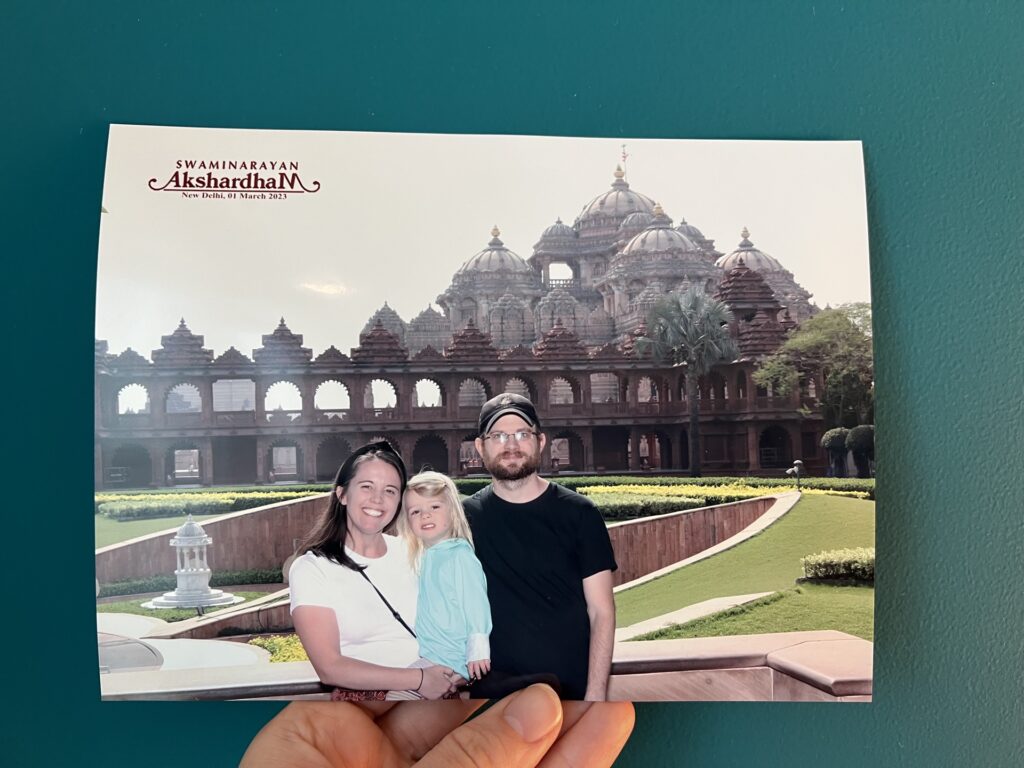
Our last stop was India Gate. This is an Arc de Triomphe-inspired arch in the middle of a large park. I had pictured spending more time in this park, but it was honestly just too hot at this point and we were all pretty hungry. We just snapped a few photos and carried on.
After a full four hours driving around to different sites, we returned to our hotel. Our afternoons were pretty much the same everyday in Delhi. We ate lunch and dinner in the hotel restaurant, where out servers became very attached to our blonde baby. Said baby napped while Kenny and I split time working out or enjoying the hotel amenities. And every afternoon, we spent a few hours in the hotel pool.

The remaining sites on our list were all relatively close to our hotel. They appeared walkable on Google Maps, so I didn’t initially reserve a car for the day. However, after seeing the area in person — the wide streets and hectic intersections and beating sun — we decided the walk was possible but wouldn’t be pleasant. At the last minute, we booked a car for another 4 hours for the morning.
Our first stop was Humayun’s Tomb. The complex opens early (around 6 AM), but the grounds were almost entirely empty during our 8:30 AM visit. Not only did we beat the crowds, but the weather and lighting was perfect in the early morning.
Humayun’s Tomb is another gem in Delhi. It was probably my second favorite place in the city. There are a few tombs in the complex, and we first stopped at Isa Khan’s Tomb. It’s smaller and built in an entirely different style than Humayun’s, but I loved it for the way the gates framed the tomb.
On the way to Humayun’s Tomb, we passed through West Gate. I read that you could go to the top of the gate for great views of the tomb. Now, I did weasel my way up to the top, but I’m not sure that was actually allowed. I took a quick photo and then hurried back down.
You can go up and inside Humayun’s Tomb, which we did. The view from the top was nice, but inside is mostly just empty stone rooms. Still cool though. There are a few more tombs in the area, but we headed out after seeing the two biggest.
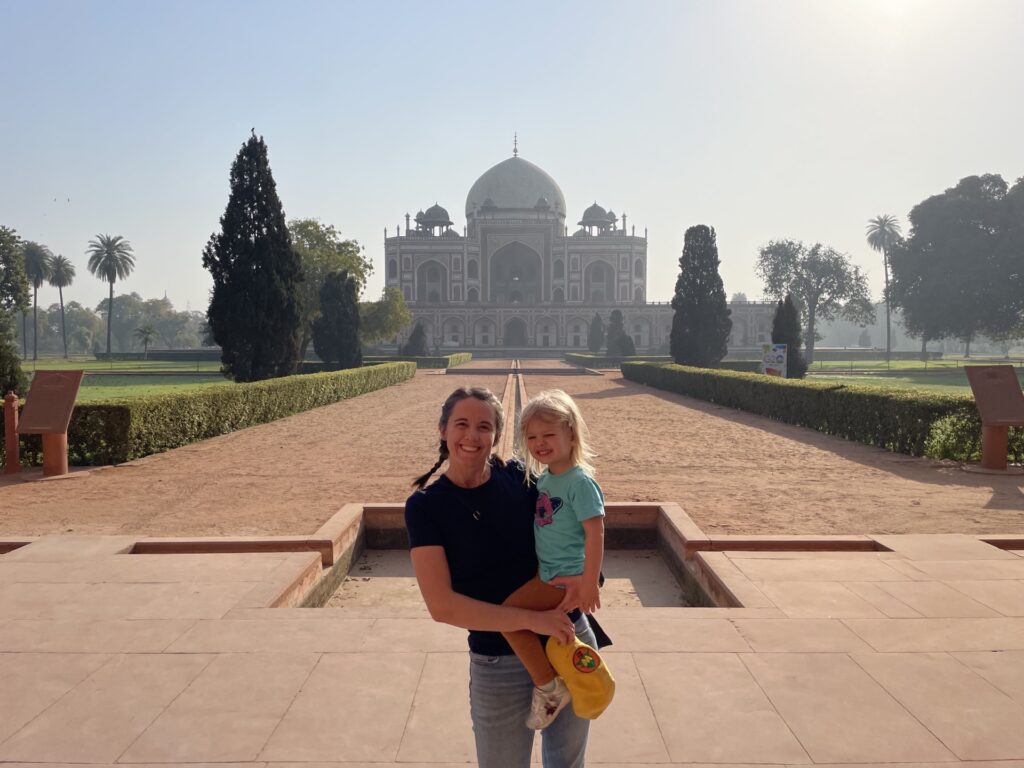
Next was Safdarjan tomb. At first glance, this tomb seems like it would be just as stunning as Humayan’s. But when you look for too long, you notice that it’s not quite right. The proportions are off and the materials are a much lower quality. Not knowing that it was a B-Lister at the time, I still had a nice walk around it.
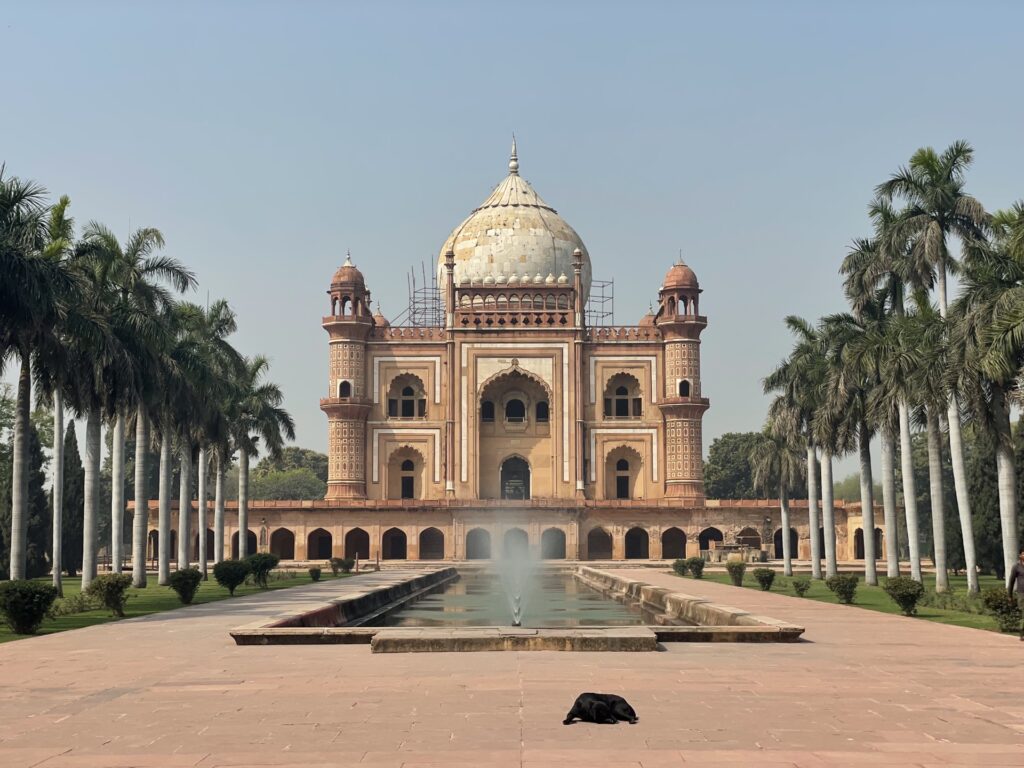
We finished our morning at Lodhi Garden. Everyone loves Lodhi Garden. It is a true oasis in the city. It’s a large garden park that is dense with trees and gardens, large green lawns, a pond, and even some tombs (this is still Delhi after all). It’s a peaceful and quiet place to escape the business of the city … as long as you’re not getting chased by massive bugs like we did at the end.
We could have stayed at Lodhi Garden for much longer, but lunch time was approaching and our time with our driver was ticking by.
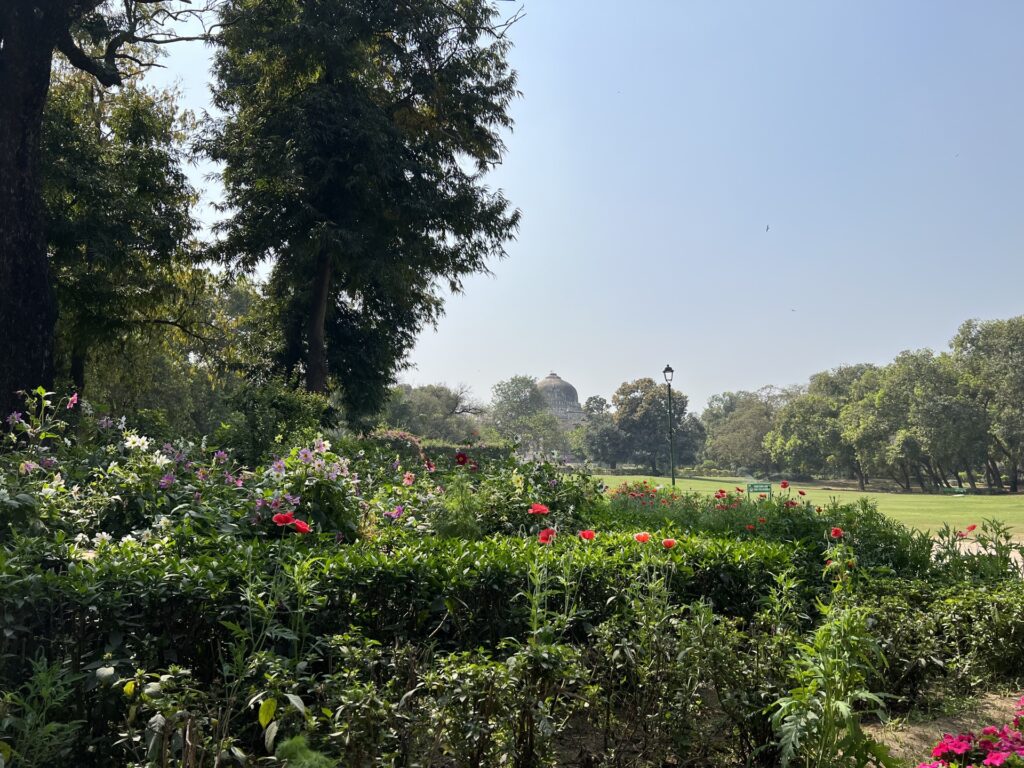
As was had grown accustomed by now, we spent the remainder of our day napping, swimming and eating at the hotel restaurant. Tomorrow was a travel day, so we also took some time to pack.
Jaipur is about 185 miles southwest of Delhi. You can get there by train or car. The train times vary based on the schedule and can range from 3.5 hours to 8 hours. The shortest train is in the evening (6:40 – 11:05 PM), but that was a little later than we wanted to do with a toddler.
We decided to book a car for the Delhi-to-Jaipur leg. Our driver picked us up at our hotel in Delhi at 8 AM and we checked into our new hotel in Jaipur around 1 PM. This included a 30 minute stop where our driver kind of just disappeared and left us at a rest stop. (Not unsafe, just a little boring. We did get to scope out some of the local chip flavors though.)

Our hotel in Jaipur was the Jai Mahal Palace. After being shown to our room, we grabbed lunch at the Italian restaurant on property before getting in a quick nap. We spent the rest of our afternoon and evening swimming in the pool, playing in the kids room and walking around the gorgeous grounds. The restaurants in this hotel were much fancier than our last, so we decided to just have room service for dinner.
If you were short on time, you certainly could have ventured out into the city to explore on the second half of your travel day. Our hotel wasn’t within walking distance to anything interesting, so we had no problem relaxing the afternoon away.
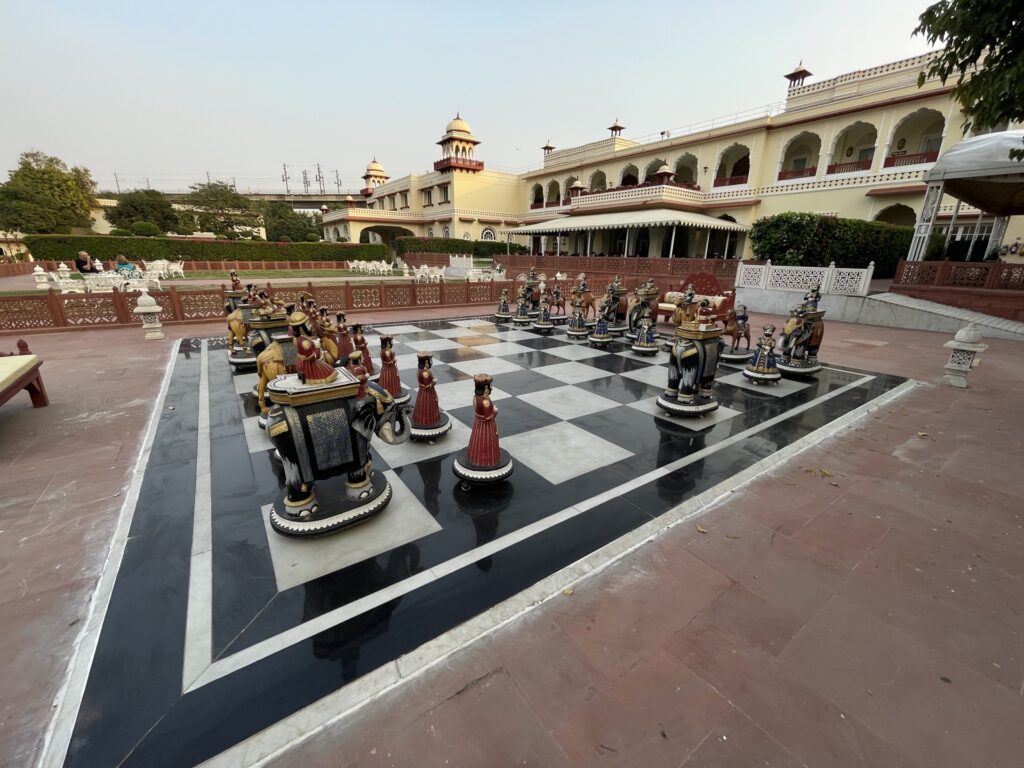
NOTE: We have a full Jaipur Itinerary that’s packed with detailed information about each of these sites plus even more things to do.
Jaipur is the capital of Rajasthan. This Indian state is what a lot of people probably picture when they think of India. Rajasthan is known for its elaborate forts and palaces, unique cuisine and brightly colored traditional dress. Rajasthan is one of the most beautiful parts of India and one of the most popular tourist destinations.
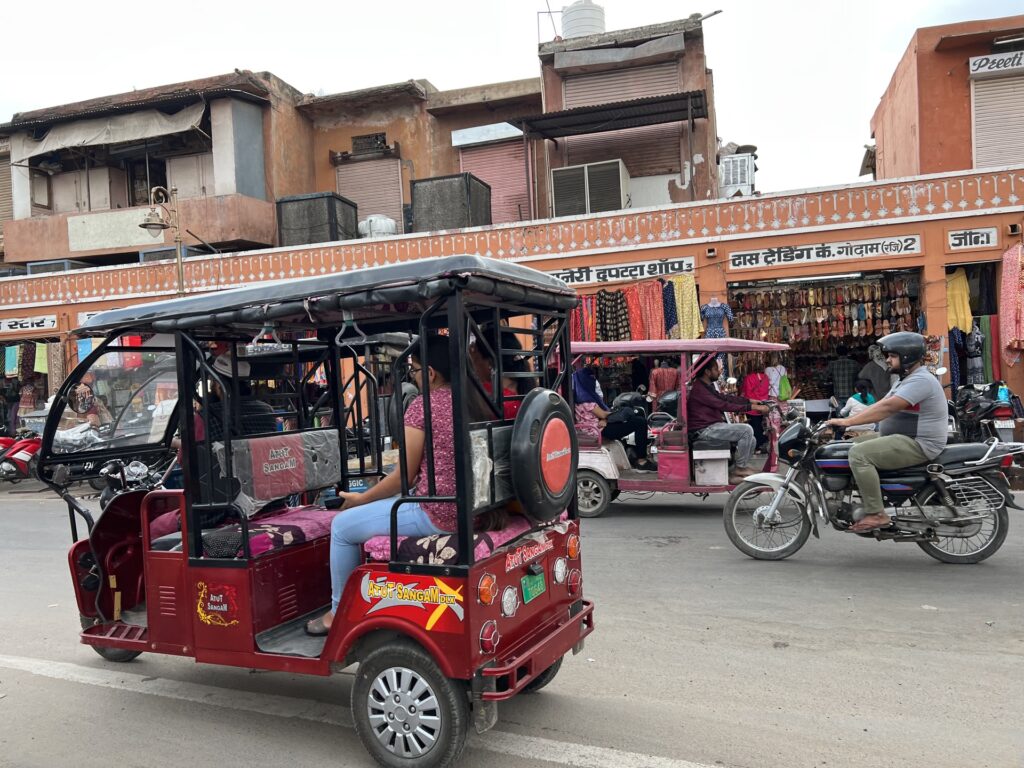
The Old City in Jaipur is very walkable, but to get to the forts up in the mountains you will need a car. We decided to book a car (with a driver) for a full day.
We started our day at Amer Fort, the most impressive fort in the city. It’s a good idea to get here right when they open because this fort gets really crowded, really fast. There are many beautiful spaces in the fort, which makes it a popular spot for local couples and influencers alike to come for professional photos.
Our next stop was Panna Meena ka Kund, which is a very intricate and stunning stepwell. (This is the one I was picturing when I made us stop at the other one in Delhi.) This is a quick stop, but one you should absolutely make! You actually pass it on the way up to the Amer Fort, so if you have time, you should stop here before the fort.
Next, we went over to Jaigarh Fort. Despite looking close together on the map (and being walkable via a pedestrian tunnel), it actually takes quite a bit of time to drive between the forts because of how the mountain roads are laid out. The fort itself is nowhere near as impressive as Amer Fort — Jaigarh Fort was the military arm while Amer Fort was the royal residence — but the views from Jaigarh Fort are better, which makes it worth it. (Also, we saw monkeys here, which is always fun.)
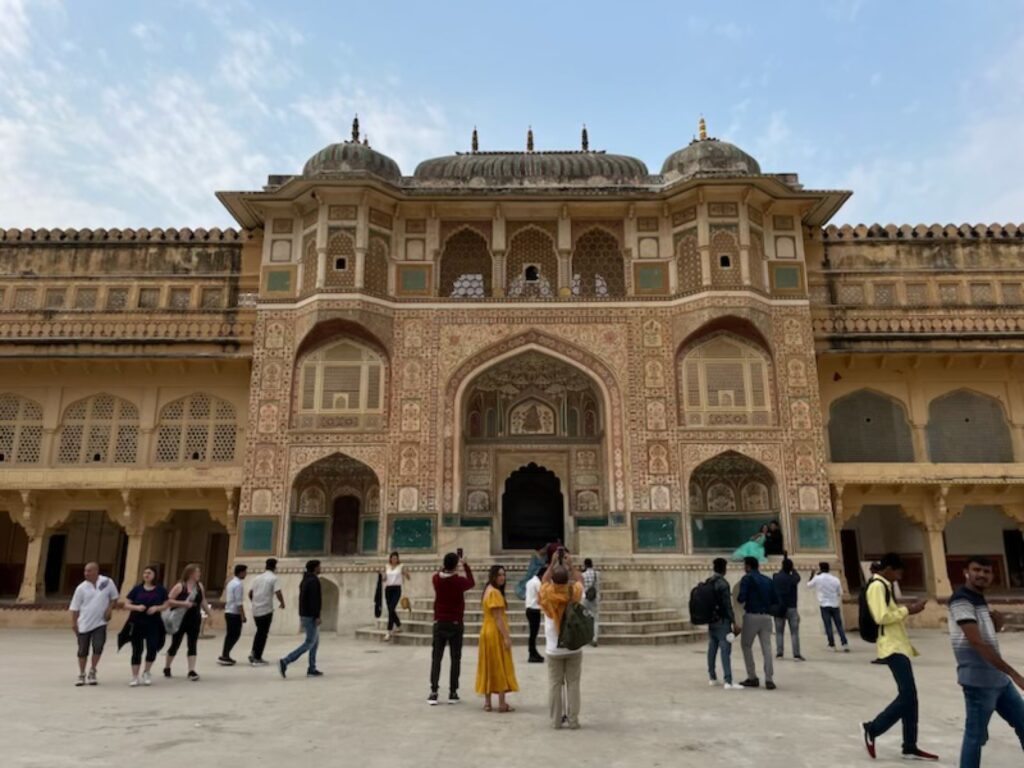
By now it was time for lunch. Rajasthan is famous for Thali, which is a serving style that comes on a large tray filled with small bowls of different dishes. We really wanted to try authentic Thali, so we decided to have a rare meal outside of our hotel.
Zeeman Restaurant has 4.6 stars on over 200 reviews, so we went for it and we did not regret it! It was so good, we did not get sick, and we were happy to have the chance to try some locally made Indian food at least once. (It was out of the way to come back to this restaurant from Jaigarh Fort. If you’re hungry after Amer Fort, it makes more sense to eat before you go to Jaigarh Fort.)
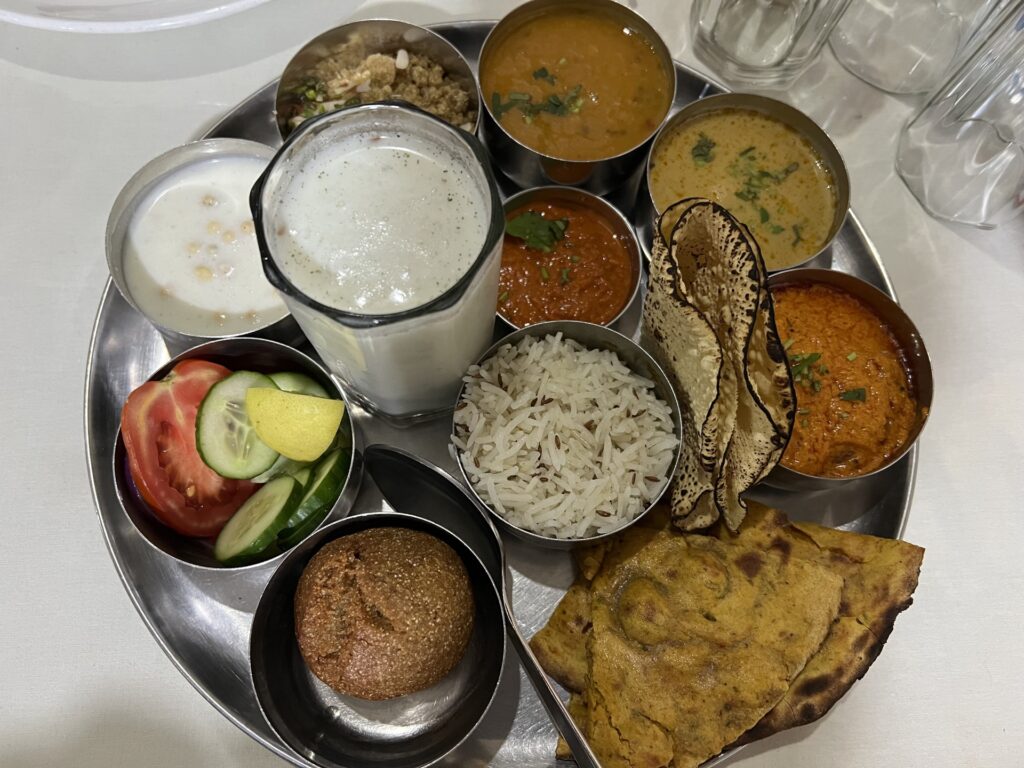
One our way back to town from the mountain forts, we stopped at Jal Mahal. This palace was intentionally flooded and is now a little island in the middle of the lake. You can only see the palace from the land and there’s a street market that lines the shores near the palace. Our toddler bought a cheap slinky, but we otherwise just took a picture and left.
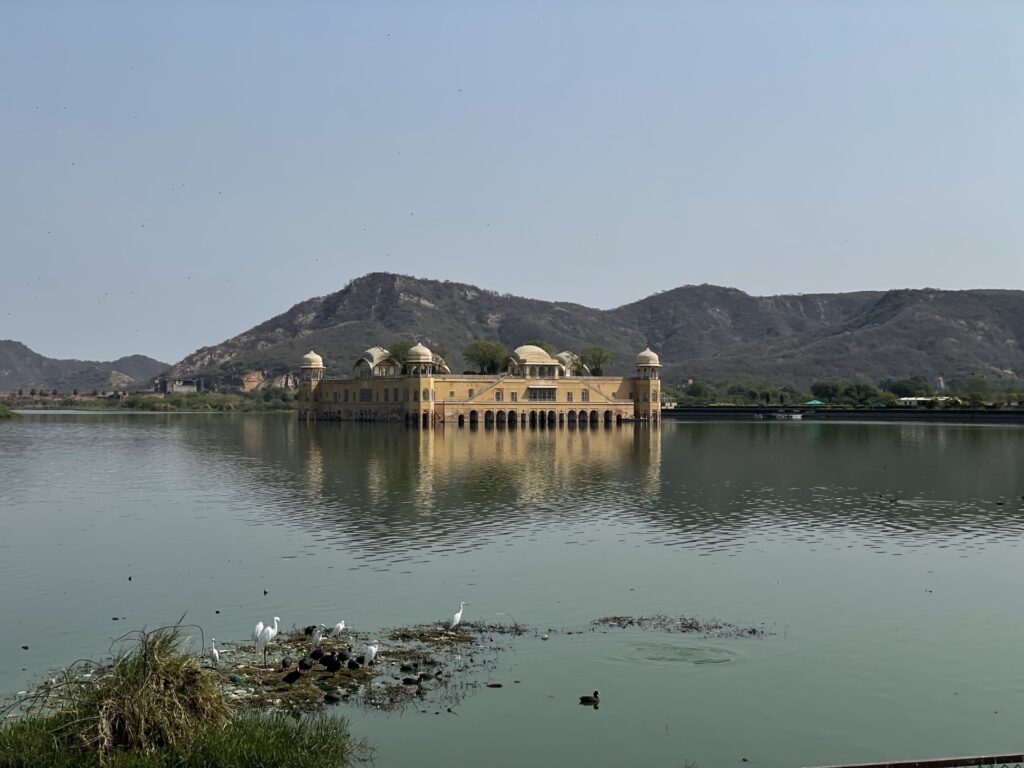
From here, we personally continued on and did all the things listed on days 6 and 7 in a single day. We opted for one full day of sightseeing and then spent the entire next day resting at our hotel. This is a fine option if you want a rest day, but it did make things pretty rushed. We’d suggest doing the following activities on a separate day. You can even fit in a few more things that way, and take it at a slower pace.
Most of Jaipur’s Old City is very walkable. Once you get to the area, you won’t need a car. To get there from your hotel, you can hail a tuk tuk, take an Uber or even take the Metro if you’re by a station.
If you’re doing Jaipur City on a separate day than the forts, start at City Palace. Get there when they open at 9:30 AM to beat the crowds. We didn’t make it here, and it generally gets mixed reviews, but I think it’s worth seeing if you have the time.
After the palace, walk over to Jantar Mantar. (This is where we went after Jal Mahal.) It’s an open-air observatory that was built in the 1700s. You can walk by the massive manual star-tracking instruments and learn about how they worked. Though not a must-do, it’s interesting and pretty. You can get a composite ticket that includes Jantar Mantar and the City Palace, plus some other places.
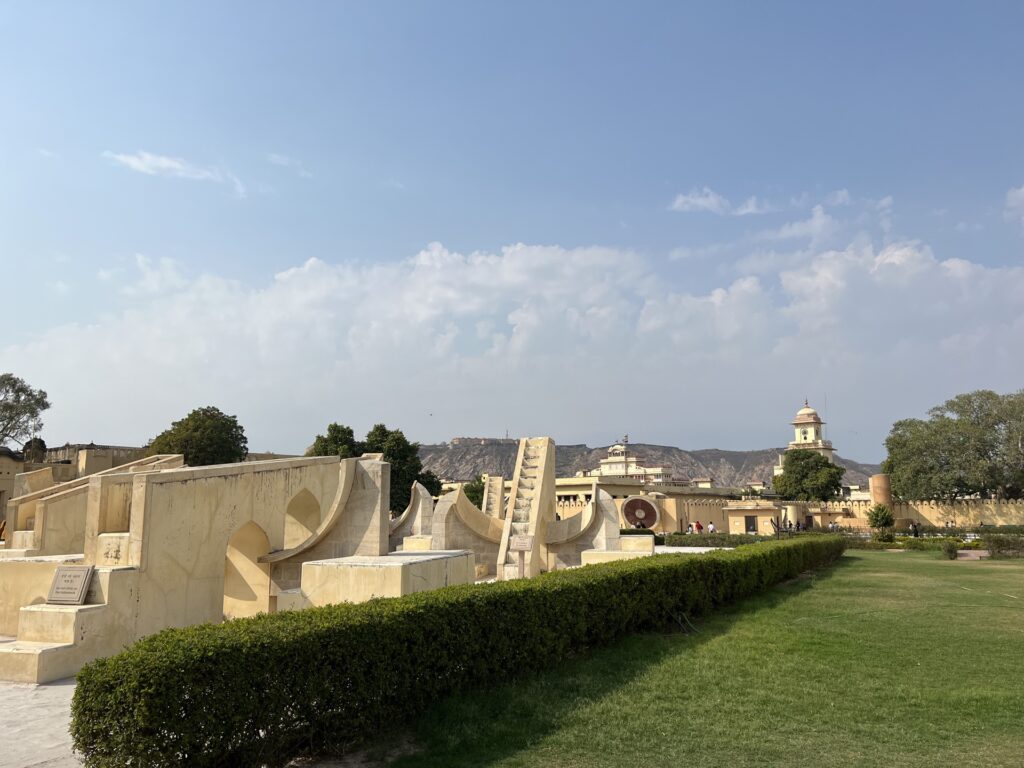
We left the walled city and went south on Chaura Rasta Road to Bapu Bazaar. This walk isn’t overtly exciting in the tourist sense, but it does pass many shops and stores that the locals actually shop at (like small hardware stores, school book stores, etc). It was cool to see the non-touristy (eh, less touristy) side of Jaipur.
Bapu Bazaar extends about three blocks from Chaura Rasta Road to Johari Bazar Road. It’s a lovely market that is as much for tourists as it is for locals. They sell clothes, souvenirs, shoes, fabric and so much more. It’s a colorful, noisy and beautiful walk.
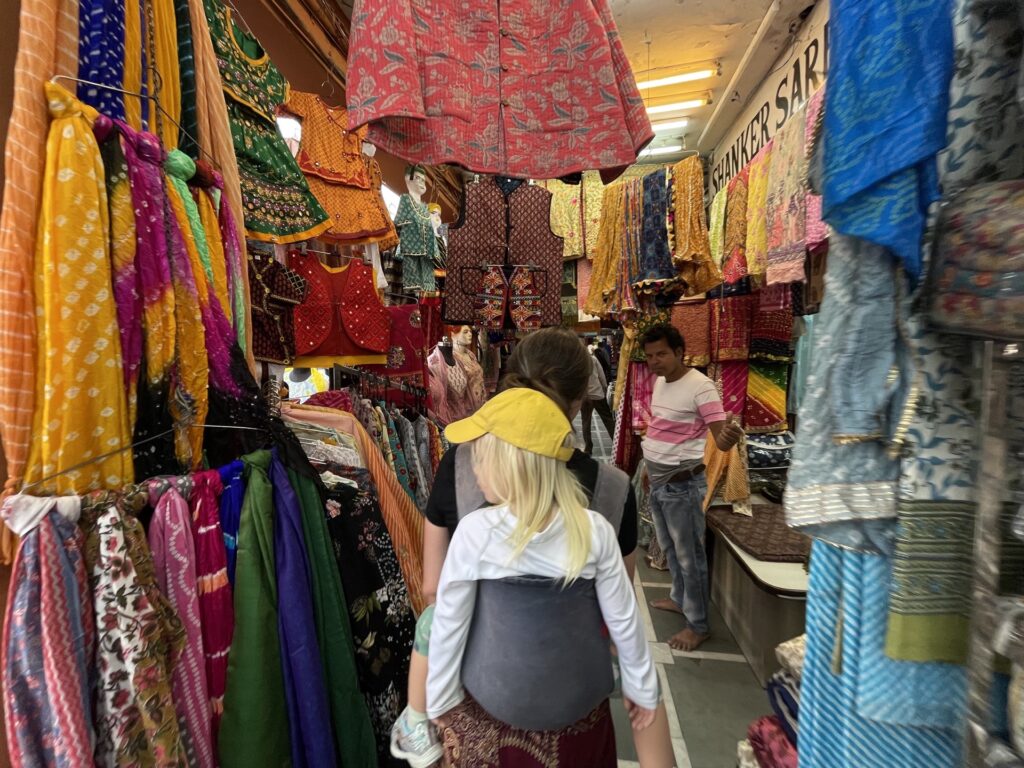
When you get to Johari Bazar Road, head back north (turn left). This is another bustling market street but with more stores than stalls. Before you get back to the walled city, you’ll pass a massive traffic circle called Badi Chaupar. Be careful crossing here, and then take a minute to watch the traffic. It’s amazing to see all colorful tuk tuks zooming in and out of here.
We finished our time in Jaipur at the city’s most famous landmark: Hawa Mahal. This building is most famous for its facade, which has become the symbol of the pink city. You can go inside, but most people don’t. The best views are from across the street. Lots of people also recommend an elevated view from the restaurant across the street, The Tattoo Cafe & Lounge.
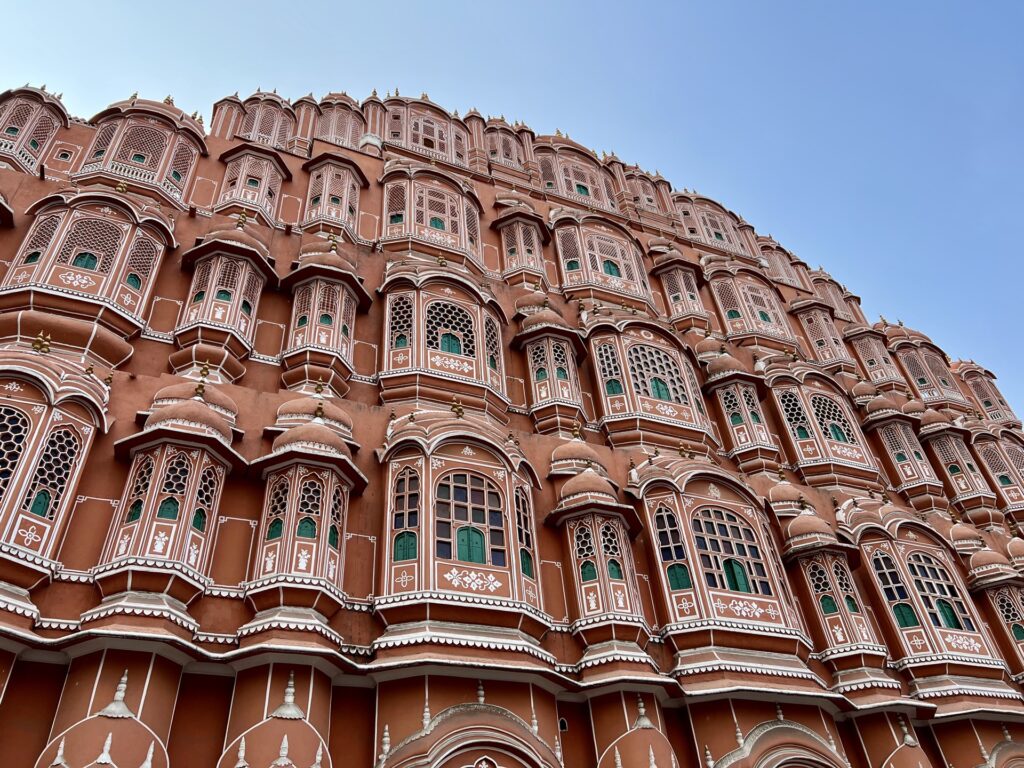
The Jaipur to Agra leg of the Golden Triangle is probably the most annoying. There are a handful of trains, but only one that is scheduled for a reasonable time (8:10 AM – 12:30 PM). Alternatively, you can hire a driver which will take about 5 hours.
If we were just doing the Golden Triangle, we would have probably taken the 8:10 AM train. Our hotel in Jaipur was close to the train station, so we would have had scheduled an early car service to get us there on time.
We had some extra days, so we actually inserted a trip to Udaipur between Jaipur and Agra. We took an early day train from Jaipur to Udaipur. After spending a few days in Udaipur (including celebrating Holi in Undaipur ), we then took an overnight train from Udaipur to Agra .
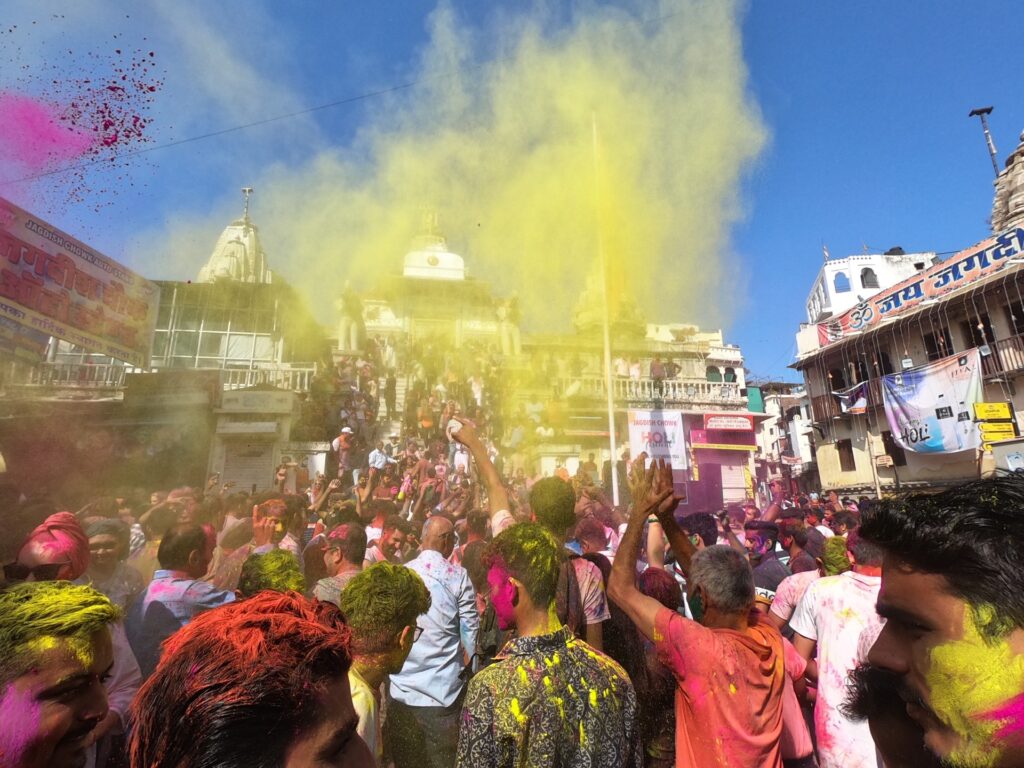
For the sake of this itinerary, what matters is that you get to Agra in time to spend at least one morning at the Taj Mahal.
The Taj Mahal. Your journey to India and around the Golden Triangle has lead you to this moment. I was very excited to see the Taj Mahal and it did not disappoint. It was majestical and breathtaking and serene, and everything you probably imagine it to be.
The Taj Mahal is most beautiful at sunrise. If you’re staying in Agra, I’d highlight recommend getting up early for sunrise. You won’t beat the crowds, but you will be the heat.
Speaking of crowds, the Taj Mahal is incredibly popular and crowded. If you have your heart set on a photo with a completely empty backdrop, you’re going to need to get in line around 3 AM. However, if you don’t need “the shot” plan to get there about 30 minutes to 1 hour before sunrise. That should give you enough time to get through the security queue and onto the grounds in time to see the sun come up.
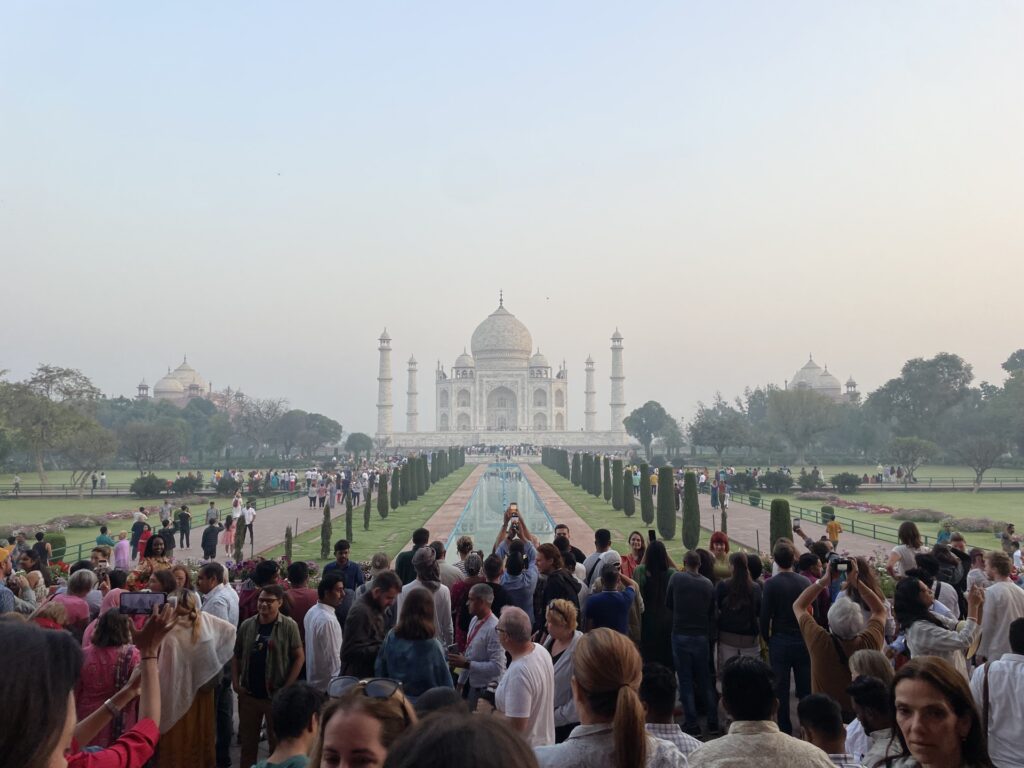
The main photo spots, like just inside the entry gate and the iconic bench in the middle of the waterway (which has a formal, Disney-style queue for it) get very crowded. However, there are plenty of beautiful viewpoints around the grounds that don’t have lines or crowds. Even during the busiest time of the morning, we easily grabbed all of these photos with no waits.
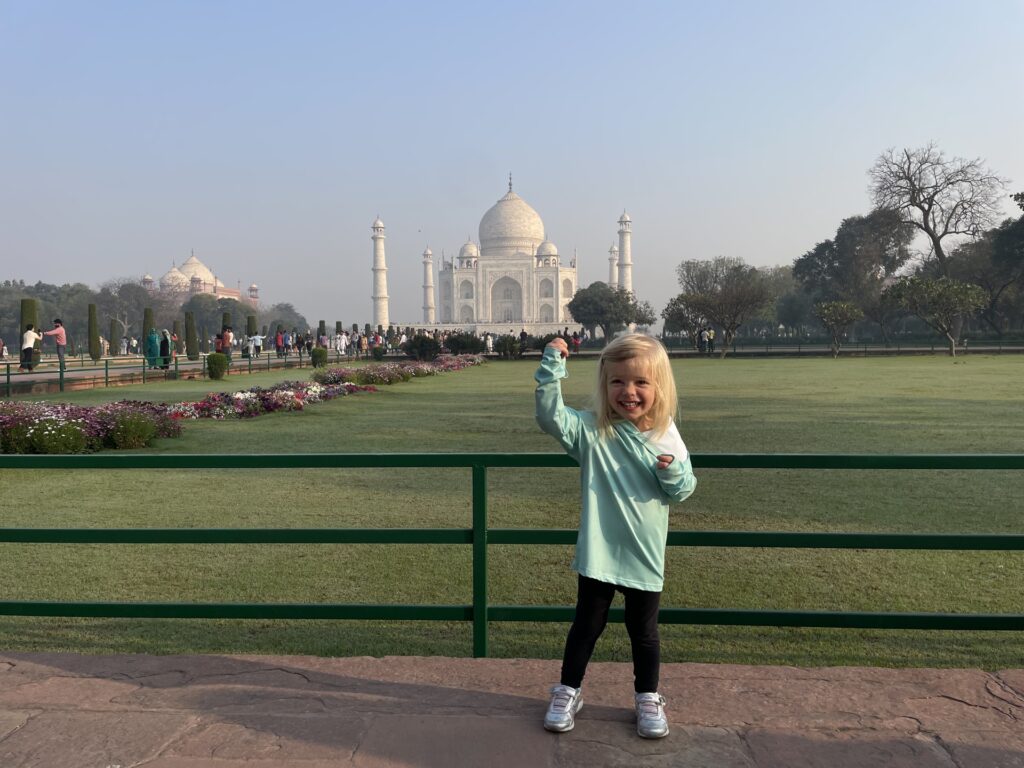
The Taj Mahal is a mausoleum, and you can go inside. However, you can only view the main floor, which is a replica of the actual tomb which is a floor below. The inside of the Taj Mahal is not actually that noteworthy, but you still have to do it. It’s the Taj Mahal!
Many hotels offer tour guides for the Taj Mahal. We hired one, but I don’t think that a tour guide is necessary for the Taj Mahal. Our tour guide was very knowledgeable, but he didn’t tell us more than we could have learned from reading wikipedia for 20 minutes. The experience is more about seeing and being at the Taj Mahal, and I would have preferred not to feel rushed or tied down to a guide.
We spent about 2 hours at the Taj Mahal. If we didn’t have a kid, we might have hung out for another hour or so. Afterwards, we returned to our hotel in time for breakfast and then spent the rest of the day swimming in the pool and enjoying the view from our hotel.
Our hotel room had a balcony with Taj Mahal views and it was truly incredible. We got to appreciate this incredible building for the entire duration of our stay in Agra, not just the morning we spent on the grounds. I know that this is not in everyone’s budget, but if it’s in yours, I cannot recommend it enough.
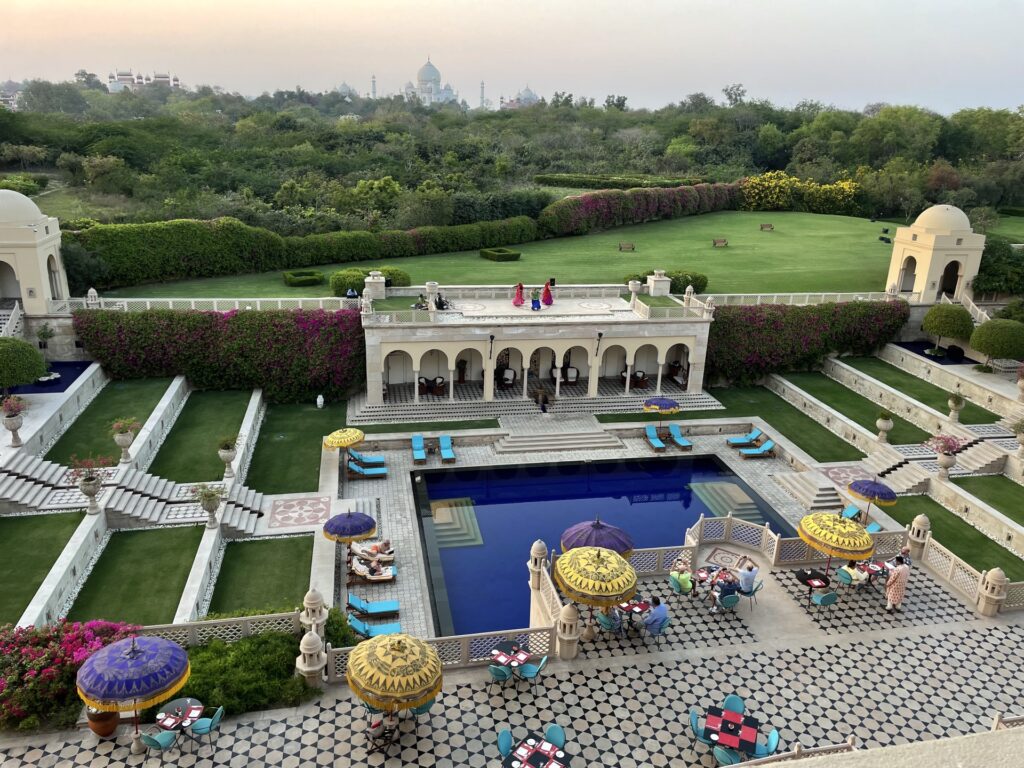
If you wanted to keep busy, Agra Fort is the other main attraction in Agra. You’ll need to take a car or tuk tuk there. There’s not much else you really need to see and do in Agra, so 1 full day there is really enough.
That said, there’s always the chance that you get hit with some bad weather or it’s foggy in the morning or your alarm doesn’t go off. If something goes wrong during your visit to the Taj Mahal, it it could be nice to have a backup option. That’s really the only reason I would suggest staying multiple nights in Agra.
Day 10: Return to Delhi and Depart
The final day on this itinerary is a bit flexible and depends a lot on your flight schedule.
The train from Agra to Delhi takes 2.5 – 4 hours, depending on the route and schedule. Not all of the times are great, but there are some morning schedules that can get you back to Delhi pretty early.
This is fine if you have a late flight out, however it can be a bit nerve-racking to be relying on a train to get you back in time for an international flight. If you want to take the train, you might alleviate some of that stress by taking the train back to Delhi in the afternoon or evening after your visit to the Taj Mahal.
Another option is to take a car. It takes about 3.5 – 4 hours to get from Agra to the Delhi airport. If you left early on your final day, you should comfortably make an afternoon flight.
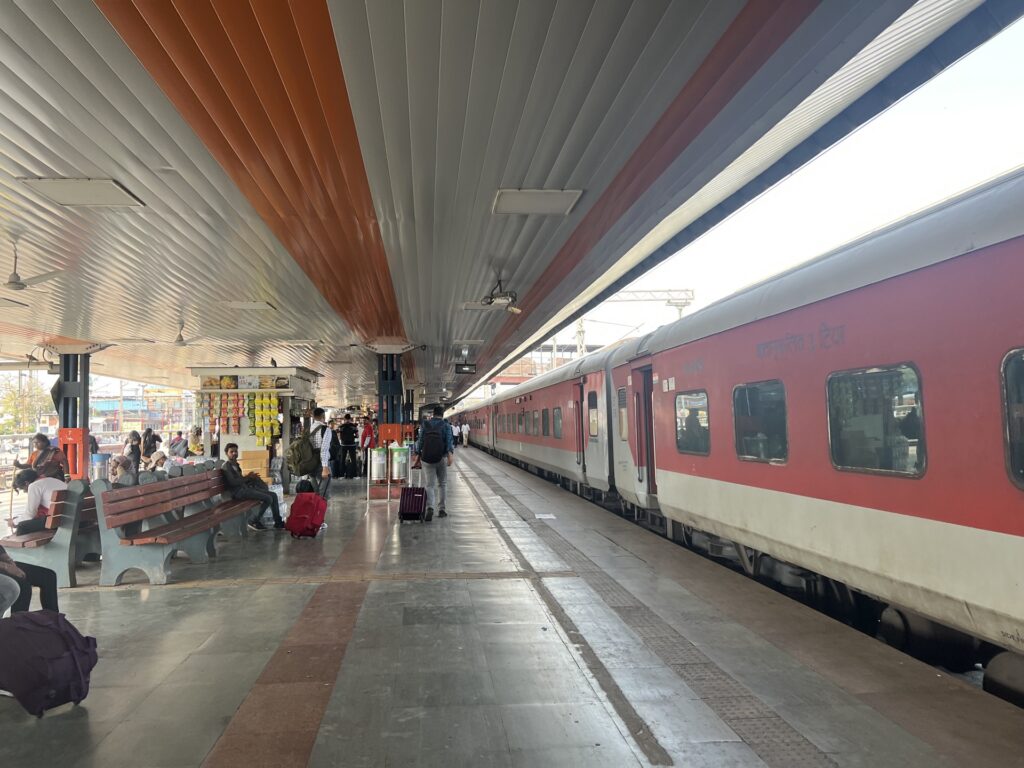
We took a midday Kerala Express train from Agra to Delhi, and then took the Metro to Aerocity. We spent one night at the airport hotel (JW Marriott New Delhi Aerocity) and then flew out early the following morning.
However you get back, be sure to give yourself plenty of time at the Delhi airport. After all the lines and check points, it took us about 2 hours total from the time we arrived at the airport to the time we got to our gate.
10 Tips For Visiting the Golden Triangle
- Visit attractions early in the day. This is generally a good way to beat the crowds and its always a good way to beat the heat. There are a lot of domestic Indian tourists on the Golden Triangle and they tend to come out in full force in the afternoon. (The exceptions are the Taj Mahal and Amer Fort, which were both crowded even at opening.)
- Watch out for anything that touches tap water. “Don’t drink the water” is common knowledge in India, but watch out for the sneaky ways tap water can get into your system. Don’t brush your teeth with tap water, don’t consume raw fruits and veggies that may have been washed with tap water, be cautious about what coffee and tea you consume, etc. We always had bottled water on us or used this water filter water bottle .
- Book tickets online . The lines at ticket booths get really long at some of the popular sites, and nearly all of these attractions sell tickets online. Buy your tickets the night before so you can skip the queue at the attraction. Another tip is to look out for foreigner queues. Some ticket booths have a separate window for foreigners and that line is often much shorter.
- Bring a small day bag or no bag at all. Many of the top attractions on the Golden Triangle don’t allow large bags inside. For example, you can’t bring backpacks into the Red Fort. If you must bring a bag, make sure it’s a small one. For the Taj Mahal, don’t bring a bag at all. The lines for bag check get really long, but you can zip through security if you don’t have a bag. (Pro tip: Put your phone, wallet and one of these packable totes in your pocket. After you breeze through security, move all your things from your pockets into your bag.)
- Carry cash. Keep at least a thousand Rupees ($12 USD) in smaller bills on you at all times. You’ll need cash to pay for things like tuk tuks and rickshaws, snacks and drinks from small stands, and even entry to certain sites if you didn’t buy tickets online. You’ll also want cash for tips …
- Tip everyone. Everyone who does something for you — like takes a photo, gives you directions, shares information about a site — is usually going to ask for a tip. I’m a seasoned traveler and still fell for the old “let me take your photo” trick. In most cases, Rs. 100 ($1 USD) is enough, but it depends on the situation.
- Take at least one train . You can reserve a car service for all of your transportation between cities around the Golden Triangle. However, I’d suggest taking a train for at least one leg. The Agra-to-Delhi leg is a good option because the Kerala Express is quick and the schedule is convenient. Taking the train in India just feels like a right of passage and something everyone should experience at least once.
- Relax in the afternoon. As you probably noticed, we did all of our sightseeing in the morning and then spent most of our afternoons in the hotel pool. I’d highly recommend this approach, even if you don’t have kids. These cities are exciting and intense. To fully appreciate that, you’ll want to take some breaks. We’re typically go-go-go travelers, but we really slowed it down in India and it allowed us to enjoy it so much more.
- Add some stops to your itinerary. The Golden Triangle is a great way to spend 10 days in India. However, if you have more time, I’d suggest two additions. First, add a stop somewhere to adjust to the time change a bit before you go to Delhi. Both Dubai and Doha are great stopovers. Second, add a visit to Udaipur. We really loved Udaipur and it’s a great way to beef up your Golden Triangle itinerary if you have more time.
- Just do it. India can be a challenging destination for many westerners. The culture is very different, the poverty is heartbreaking and the risk of getting sick can be stressful. But if there is even a small part of you that wants to go to India, I would tell you to just do it . The payoff is absolutely worth it. Even though it was difficult at times, I wouldn’t take it back. I fell in love with the country and can’t wait to to explore more of it one day.
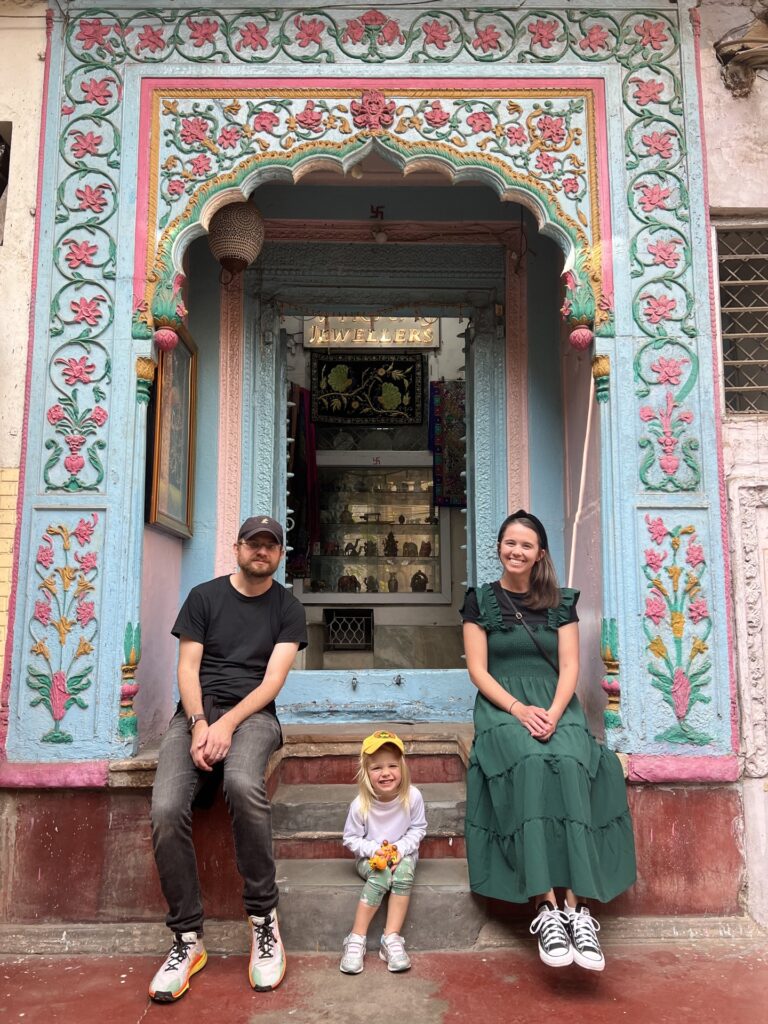
We’ve written detailed guides about many individual components of our Golden Triangle travels. For more things to do in each city, detailed attraction notes, more tips and thorough reviews, check out some of these more focused posts.
- Flight to Delhi: Air India Business Class from Dubai to Delhi Review
- Hotel in Delhi: The Oberoi New Delhi Hotel Review
- Delhi City Guide: 3 Days in Delhi — Sample Itinerary + Planning Guide
- Car service from Delhi to Jaipur: We booked through Bagga India Tour (We did not write a full review on this.)
- Hotel in Jaipur: Review of Jai Mahal Palace
- Jaipur City Guide: Jaipur Itinerary — 1 or 2 Days in the Pink City
- Jaipur to Agra: We did not make this connection directly. We added a few days in Udaipur in the middle.
- Hotel in Agra + Taj Mahal Guide: The Oberoi Amarvilas Review
- Train from Agra to Delhi: Kerala Express Review — Agra to Delhi in AC 2-Tier Sleeper Class
- Airport Hotel in Delhi: JW Marriott New Delhi Aerocity Hotel Review
- Flight out of Delhi: Qatar Airways Economy from Delhi to Doha
And finally, if you’re considering going to India with kids , we have an entire guide dedicated to just that topic!
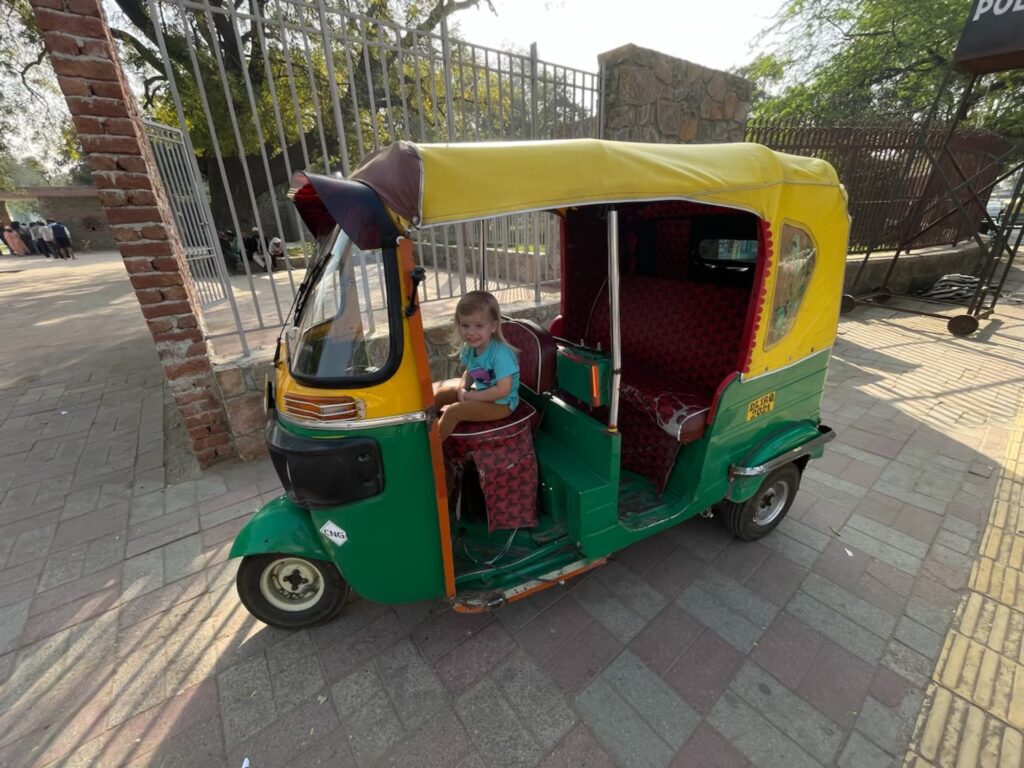
More From This Trip
- Emirates Business Class Review – A380 JFK to DXB
- Our Stay at Atlantis Dubai – A Perfect Place to Recharge
- Detailed 2-Day Dubai Itinerary
- Air India Business Class Review – 787 from DXB to DEL
- A Parent’s Guide to Traveling to India with Kids
- India Golden Triangle in 10 Days [Travel Guide, Itinerary &Tips]
- 3 Days in Delhi – Sample Itinerary + Planning Guide
- The Oberoi New Delhi Hotel Review
- Jaipur Itinerary – 1 or 2 Days in the Pink City
- Review of Jai Mahal Palace (Jaipur)
- Train from Jaipur to Udaipur – AC 3-Tier Sleeper Class
- The Oberoi Udaivilas Hotel Review (Udaipur)
- Udaipur Travel Guide + Things To Do
- Celebrating Holi in Udaipur (With a Kid)
- Overnight Train from Udaipur to Agra – AC First Class Sleeper
- The Oberoi Amarvilas Review: A Luxury Hotel with Taj Mahal Views
- Kerala Express Review – Agra to Delhi in AC 2-Tier Sleeper Class
- Hotel Review: JW Marriott New Delhi Aerocity
- Qatar Airways Economy Review – DEL to DOH
- Doha Things To Do & Travel Guide (Perfect for a Stopover!)
- Qatar Airways Qsuite Review – 777 from DOH to JFK
Why India's Golden Triangle Is The Perfect Itinerary For First Time Travelers
The Golden Triangle tourist route is a great way to see some of the best of the highlights of India while there for a short visit.
Quick Links
What to know about india's golden triangle, new delhi - the capital of india, jaipur, rajasthan - the princely state of india, agra - home to the taj mahal, a seven new wonder of the world.
It is impossible to see or experience more than a taste of India in a single trip. India is a vast and diverse country with countless things to see and do. But while everything from the timeless mountainous beauty of Kashmir in the west to the tribal peoples of Nagaland in the east is worth visiting, no one can see everything on one vacation. But visitors can see some of India's most famous highlights in one tour by visiting India's Golden Triangle.
The Golden Triangle can be explored in a week or less, although more time is better. Especially take the time to explore the many forts and palaces in Rajasthan as well as the many temples (including the Monkey Temple). The Golden Triangle of India is an ideal itinerary for first-time travelers to India.
The golden triangle of India is a tourist circuit that incorporates New Delhi (the capital city), Agra (home of the famous Taj Mahal), and Jaipur (the most stunning city in the princely state of Rajasthan). Those with more time can expand the golden triangle to include more famous sites in the region - like the incredible Golden Temple of the Sikhs .
Destinations Of The Golden Triangle:
- Agra (Taj Mahal)
- Jaipur (Rajasthan)
The Golden Triangle typically starts in New Delhi, and it is possible to explore the golden triangle by bus, train, or through private tour operators (another option is to hire a private driver). The Golden Triangle has the advantage of being a well-traveled route, with the destinations having a reasonable amount of tourist infrastructure.
- Length: 720 km or 450 miles by Road
The route also explores different aspects of India's landscapes - including the arid regions of Rajasthan. Each leg of the trip involves between four and six hours of diving. Alternatively, there is now the Shatabdi express train connecting New Delhi with Agra and Jaipur.
New Delhi is the capital of India and one of the last metropolises on earth. Delhi has been the capital of India for hundreds of years, and there are many things to explore there. In Delhi, visitors can enjoy a number of experiences that can't be enjoyed elsewhere. One of the main attractions in the city is its old city, where people can see ancient mausolea and palaces built by the powerful Muhagal Empire.
While India is a fascinating country to visit, keep in mind that it is very different from many other countries one might have visited. E.g., New Delhi is normally the first port of call for foreigners visiting India. Many visitors quickly develop gastro issues adjusting to the new cuisine and hygiene, with the locals calling it the "Delhi Belly."
Related: How To Plan A Trip To The Historic City Of Delhi, India
Those who think back to the Maharajas of India during British rule are likely thinking about Rajasthan. Rajasthan is an arid state that was a princely province. Today it boasts much of the architecture for which India is famous. It is in Rajasthan that one can find the famous Amber Palace - perhaps the most eye-catching fort in all of India .
Some Top Sites In Jaipur:
- Amber Palace/Fort
- City Palace
- Nahargarh Fort
- Pink City Bazaars
One of the most elaborate pieces of architecture in India is the intricate Hawal Mahal in Jaipur. The Hawal Mahal was once the palace of princesses for the many wives of the Maharaja.
Related: Everything You Need To Know About The Iconic Taj Mahal In India
No one can visit India and not visit the famed Taj Mahal in the old Mughal capital of Agra before it was moved to Delhi. The Taj Mahal is a tomb or mausoleum built by a Mughal emperor for his beloved wife. The romantic story behind the Taj Mahal, the elegance of the building, and the sheer beauty of the marble and the reflective garden setting make it one of the most sought-after buildings in the world.
- Visiting Hours: 30 Minutes Before Sunrise To 30 Minutes Before Sunset
- Entry Fee: 1,300 Rupees or $15 for International Visitors
There are other things to see and do in Agra, but far and away, the main attraction is the Taj Mahal.
Indian Golden Triangle Itinerary & Guide
Disclaimer: This article includes affiliate links to the products we earnestly love and recommend, meaning at no extra cost to you, we might make a teeny-weeny commission if you click on the link and decide to buy something. The money will be used to sustain this little cozy blog we call our virtual home.
If you are visiting India for the first time and have limited time on hand, the Golden Triangle tour corresponds to India 101. Here’s an Indian Golden Triangle itinerary for 7 days in India to get you started.
Golden Triangle of India: An Introduction
What is the Golden Triangle in India? The Golden Triangle in India is a sought-after tourist circuit in Northern India for travelers who wish to experience the essence of India in a short time. This route is a great way to get acquainted with the rich history, culture, architecture, and food of India.
Indian Golden Triangle connects the three world-famous heritage Indian cities of Delhi , Agra in Uttar Pradesh and Jaipur in Rajasthan.
If you map the distance between these three cities, a kind of sublime triangle would form – the reason why it’s named the Golden Triangle.
The three cities forming India’s Golden Triangle are located at a comfortable distance that can be covered in less than 4 hours.
Most tourists fly into New Delhi, explore Delhi, travel to Agra thereafter, and conclude in Jaipur before returning to Delhi to leave back home. The entire distance is around 770 km.
Easily, it’s the best introduction to Incredible India!
The best time to tour the Golden Triangle is in winter. However, spring and autumn also make for a comfortable time to explore this part of India.
Northern India experiences hot and unbearable summer so you should definitely avoid the summer months of April, May, and June.
July and August bring persistent rains and are thus not recommended.
At large, it’s best to plan from October to March for a beautiful experience. February is the coolest month to travel around Northern India as it’s when the weather is comfortable means not too hot nor too cold, the skies are clear, and the tourist crowds are fewer.
How to Navigate the Indian Golden Triangle
There are quite a few options you can choose from depending on your travel style, budget, and time on hand.
The public transport system on this route is great. With relatively short distances between the cities on the Golden Triangle, buses and trains come as a cheap and fast way to travel.
There are government and private buses and express trains. Gatimaan Express and Shatabdi Express (Delhi to Agra), Sabarmati SF Express, and Ajmer InterCity SF Express (Agra to Jaipur) offer comfortable and fast travel. The tickets, especially for the express trains sell out fast so it’s advisable to book well in advance. You can book the bus and train tickets in advance with 12Go .
While it’s easy to travel by public transport, you can’t trade it for the freedom that comes with traveling by your own vehicle. A chauffeur-driven car comes with advantages of its own. It saves you time and hassle and gives you the freedom to make a pitstop anytime and anywhere.
If you don’t want to hire a car with a driver for the entire Golden Triangle trip, you can board a train or bus from Delhi to Agra and then hire a car with a driver from Agra to Jaipur because there are so many super interesting attractions like Fatehpur Sikri, Chand Baori, and Keoldeo National Park between these two cities.
And then there’s an option of booking a comprehensive private tour like this and this one . You just have to sit back, relax, and take in the sights while a professional company handles the hassle for you.
A Brief Golden Triangle India Itinerary
A detailed indian golden triangle itinerary.
If you are planning to spend one week in India, follow this itinerary for Golden Triangle for a well-rounded experience.
Day 0: Arrive in Delhi | Day at Leisure

Your trip to India starts in the Indian capital, New Delhi. It’s conveniently located in the heart of the country and is well-connected with almost all the major countries and cities across the world.
Indira Gandhi International Airport in Delhi is the largest airport in India and has all major airlines operating and serving flights to and from over 137 destinations in 45 countries.
Furthermore, Delhi is excellently connected to the major states and cities in India via air, rail, and road.
As per your arrival time, you can craft your schedule for the day. It’s best to check into your hotel and unwind so it’s easy for you to acclimate to the new time zone.
If you feel relaxed, you might want to stroll around the area near your hotel to get a little acquainted with the new city.
Where to Stay in New Delhi : Central Delhi seems like the best area to stay in Delhi. As the name suggests, it’s the city center and frequent metro and bus routes from here to different areas make it easy to get around the city. Plus, it’s close to many famous attractions and cafes, and restaurants. The Claridges , The Imperial , Bloomrooms , and CP Villa are some of my favorite properties in Central Delhi. South Delhi is a great option if you want to have a more peaceful stay. It’s a residential neighborhood and I usually recommend it to families visiting Delhi. The Leela Palace, Tatvamasi Homestay, Bed & Chaï, and Taj Palace are amazing properties in South Delhi.
How to get around Delhi : Delhi Metro is the answer! It’s effortless, superfast, easy on the pocket, and super efficient. DTC (Delhi Transport Corporation) is a good option when you want to visit remote parts of the city where there’s no metro connectivity. Cycle rickshaws, e-rickshaws, and auto rickshaws (tuk-tuk) are the way to go for the hop, skip, and jump. in fact, Old Delhi is best explored on a cycle rickshaw. There are many amazing cycle rickshaw tours available for international travelers. You can also choose to book Ola or Uber when required.
Day 1: Explore Old Delhi

Old Delhi aka Purani Dilli is perfect for culture, history, and food lovers. It packs loads of cultural, historical, and food heritage.
The narrow and crammed streets of this ancient part of Delhi hide stories as old as time. There’s culture, history, and mouth-watering food at every turn.
Brace yourself to be inspired, amazed, fascinated, and impressed!
From the historic Red Fort to the Jama Masjid to quaint Ghalib ki Haveli to the chaotic Chandni Chowk, marvel at the magnificent historical monuments and vibrant bazaars of Old Delhi.
And while you are at it, take time to relish the authentic street food in Delhi. For diehard foodies, a culinary tour in Chandani Chowk comes highly recommended.
Because, well, you don’t want to miss anything at all. And if you want to safely enjoy the incredible street food scene in India, stay clear of Delhi belly with recommended precautions.
The dynamism of Old Delhi is best captured by walking through its quintessential lanes and bazaars. With its elaborate and colorful ancient architecture, Naughara Gali is one of the most beautiful streets in Chandni Chowk. Check it out!
Top Experiences in Old Delhi
Old Delhi Food Tour Old Delhi Street Food, Heritage, Spice Market & Religious Tour Chandani Chowk Old Delhi Food Tour with Spice Market Old Delhi Food and Heritage Walk 3-hour Old Delhi Heritage Walking tour with Rickshaw Ride
Day 2: Explore New Delhi

Set side by side, Old Delhi and New Delhi are altogether different worlds. While Old Delhi retains its old-world charm, New Delhi embodies modernity and progress.
With wide avenues and spacious boulevards lined with lush trees and dotted with colonial architecture, New Delhi has a distinct vibe.
It’s where you’ll find famous monuments like India Gate, Humayun’s Tomb , Safdarjung Tomb , Qutub Minar, Rasthrapati Bhavan, Lodhi Gardens, Lodhi Art District , Lotus Temple, Gurudwara Shri Bangla Sahib, Connaught Place, and almost all the important museums.
Lutyens’ Delhi is New Delhi’s upmarket and poshest neighborhood. It’s home to the most important government buildings, embassies, and residences of high-profile people.
Kartavya Path, previously known as Rajpath is the widest avenue in the city. It also serves as a venue for the annual Republic Day Parade in India. You can catch sight of most of the iconic attractions in New Delhi as you walk from one end to the other of this avenue.
It’s not possible to explore all the best places to visit in Delhi in a day or two, however, meticulous planning can help you tick the major attractions off your bucket list.
In fact, there are some amazing guided tours that let you uncover the gems of Delhi just in a day. I highly recommend joining a guided tour when you have limited time on hand. It saves you hassle and time. Check out some of these highly-rated tours:
Private Full Day Old and New Delhi City Tour Private Old and New Delhi Tour: Best of Delhi in 8 Hours with Entrances Private Full Day Old and New Delhi City Tour
Day 3: Delhi to Agra | Explore Agra

You must be excited. After all, you are going to witness one of the seven wonders of the world, the Taj Mahal today. Most tourists come to India to see this world-famous monument of love. It’s the celeb of the Golden Triangle tour itinerary 🙂
How to get to Agra from Delhi? Agra is an easy 5-hour drive away from Delhi via India’s 6th longest expressway, the Taj Expressway. There are a lot of options when it comes to a bus and train journey. A bus ride is the cheaper alternative. Gatimaan Express, New Delhi Habibganj Shatabdi Express, and Taj Express are the best trains from Delhi to Agra. Gatiman Express is the fastest train (takes less than 2 hours) as it moves nonstop. It runs every day except Friday. Book your train and bus tickets in advance on 12Go . If you don’t want to waste time navigating an unfamiliar public transport system, book yourself a stress-free private transfer .
How to get around Agra? The best way to get around Agra has to be by auto-rickshaw. You must agree on the fare before hiring an auto. If you are anything like us who believe that time is more precious than money, you would want to hire a car and driver for exploration. It saves a ton of time and inconvenience.
Where to Stay in Agra? No point guessing that you are looking for accommodation close to the Taj Mahal. Staying in a room with a view of the Taj Mahal completes your trip to Agra. Isn’t it? The Oberoi Amarvilas Agra , ITC Mughal , Tajview , and Crystal Sarovar Premiere are some of the lavish properties that offer rooms with an iconic view. For those who prefer a homestay over a hotel, The Coral House Homestay by the Taj is the answer.
Note: If you can do an overnight journey, it’ll save you a day meaning you’ll have more time to explore the Taj Mahal from all possible perspectives.
If you start early from Delhi, you are expected to reach Agra by noon. You can have a scrumptious lunch at your hotel, rest a bit, and then plan to soak up the beauty of the Taj Mahal during sunset.
Taj View Point ADA is a perfect spot to admire the iconic Taj Mahal bathed in the golden hues of sunset. A 30-minute boat ride on the Yamuna River is another beautiful way to an unmatched view of the Taj Mahal.
What and Where to eat in Agra? Peshawri (raan and dal bukhara with tandoori naan), 25 Hours Hangout Cafe (coffee, masala chai, pancakes), Pinch of Spice (Mughlai cuisine), Deviram Sweets & Restaurant (bedmi poori and jalebi), Agra Chat House (bhalla and chaat), Panchhi Petha (petha and dalmoth), Good Vibes Cafe (masala chai and snacks), and the Salt Cafe (a delicious blend of European & Indian cuisines, panoramic view of the Taj, and a chic greek-styled rooftop terrace) are the restaurants and cafes you must visit.
Day 4: Explore Agra

Start your day super early to catch the magical sight of the Taj during sunrise. Be there before the monument opens (6 a.m.) to get a headstart because there are so many tourists who share the same dream of watching the monument in the morning light with you.
Getting in early also might help you capture some perfect pictures with no people in them. Book your tickets in advance to skip the line (the ticket queue is long even if you arrive early) because you might miss the magical sight by the time you get your entry ticket.
Once you are done clicking awe-inspiring portraits, spend time checking out the masterpiece – the architectural details, the beautiful designs, the inscriptions intricately carved into marble, and the surrounding Mughal gardens.
Close to the Taj Mahal is another beautiful UNESCO World Heritage site, Agra Fort. It’s worth spending an hour exploring the gorgeous palaces, halls, and mosques of the fort complex.
Another must-visit attraction in Agra is the tomb of Itmad-ud-Daula that is famously known as Baby Taj for the reason that it inspired the construction of the Taj.
Day 5: Agra to Jaipur | Stop by Fatehpur Sikri

Day 5 brings to you another UNESCO World Heritage Site of Fatehpur Sikri. You’ll explore the ancient walled city on the way to the royal capital of Rajasthan, Jaipur.
Fatehpur Sikri Fort has a typical red sandstone Mughal architecture. It houses architecturally significant edifices like Buland Darwaza, Jama Masjid, Tomb of Salim Chisti, Jodha Bai’s Palace, Diwan-Khas, Panch Mahal, Birbal’s House, and Khwabgah.
You are most likely to spend over 2 hours here.
How to get to Jaipur from Agra? There are a lot of options when it comes to trains and buses, however, it’s recommended to hire a chauffeur-driven car for this part of your trip if you want to check out Fathepur Sikri on the way to Jaipur from Agra.
Note: You can fit in some amazing attractions like Keoladeo Ghana National Park, ancient Chand Baori Step Well , and the haunted Bhangarh Fort during your journey from Agra to Jaipur, however, that means you’ll have less time exploring Jaipur. Your call!
Read More: Best National Parks in India
The time you reach Jaipur depends upon the stops you make on the way from Agra to Jaipur.
Whatever time you touch Jaipur, you’ll sure be tired and will want to rest and have a light dinner at your hotel.
Where to Stay in Jaipur? When in the royal city of Jaipur, savor the royalty by staying in a heritage haveli or a palace hotel. The best accommodations in Jaipur for a traditional experience include Shahpura House , Umaid Bhawan , Alsisar Haveli , The Jai Bagh Palace , Rambagh Palace , The Oberoi Rajvilas Jaipur , and Rajmahal Palace RAAS .
What and Where to Eat in Jaipur? Lassi at Lassiwala , masala chai at Gulab Ji Chai Wale , pyaaz kachori at Rawat Mishthan Bhandar , and a range of mouth-watering street food at Masala Chowk .
Day 6: Explore Jaipur

How to get around Jaipur? You can hire an auto-rickshaw and e-rickshaw for shorter distances and a taxi, Uber, or Ola for longer distances. We hired a chauffeur-driven car because it’s the fastest and most effortless way to explore Jaipur, more so, if you have limited time on hand.
You need at least 3 days in Jaipur to cover everything the city has to offer, however, a day is enough to explore the highlights of Jaipur .
Jaipur is the most famous Indian city among foreign travelers for the right reasons. With a rich history, amazing culture, warm & friendly locals, a royal vibe, and colorful bazaars, Jaipur beautifully represents classic India.
Now that you only have a day to discover the gems of Jaipur, rise before the sun to make the most of your time. Enjoy breakfast with the view at Tattoo Cafe & Lounge . Yes, the rooftop of the cafe is the best place to capture the beauty and grandiosity of the famous Hawa Mahal .
Once you have had enough of the Palace of Winds, walk a little to reach the royal abode of City Palace . The royal family of Jaipur still resides in this palace. Pritam Niwas Chowk, Mubarak Mahal, and Chandra Mahal are the most beautiful sections of the palace. The exquisite doors of Pritam Niwas Chowk are a hit among photographers and Instagrammers.
Next up is Jantar Mantar , a unique astronomical observatory crafted by the founder of Jaipur, Sawai Jai Singh. You must hire a guide here to understand the concept behind complex astronomical objects.
Stop for lunch at Hawk View Restaurant & Bar .
After lunch, head to Amer Fort. A UNESCO site, the fort is one of the most beautiful hillforts of Rajasthan. It’ll take about 2 hours to check out the architectural beauty of the fort. You can enjoy a cup of coffee and snacks at the Stag Rooftop Restro, Cafe, & Lounge while you wait for the Light & Sound Show at Amber Palace.
End your day with the regal dinner at 1135 AD .
Day 7: Jaipur to Delhi | Fly Back Home

Before you leave Jaipur, take some time to witness the beautiful ornate gate in Jaipur, Patrika Gate. It’ll not take more than an hour.
A road trip from Jaipur to Delhi (5 hours) marks the end of your trip to India. A flight from Jaipur to Delhi (1 hour) is also a good option as it saves time. You can plan to reach Delhi as per your flight timings or you can reach early and explore some of the places you missed in Delhi before you catch your flight back home.
How did you like this Golden Triangle India itinerary? Hope this Delhi Agra Jaipur itinerary helps you plan a perfect Indian Golden Triangle trip!
INDIA TRAVEL ESSENTIALS Here are the essential resources I personally use and recommend for planning a trip to India. Visa for India: iVisa works great for applying for a fast e-visa online. Also, OneWayFly is great if you need to show proof of onward travel (flight itinerary) or hotel reservation. For travel insurance: Heymondo . It’s the most affordable travel insurance with maximum coverage. You get 5% off if you use my link. For Connectivity: Airalo . It’s the first-ever eSIM global website where you can buy an eSIM at affordable prices and stay connected while traveling. For booking flights: Skyscanner and WayAway . They are the best search/comparison flight booking sites that help you find the best and cheapest flight deals. And with the WayAway membership plan, you’ll get cashback for every booking. Plus, with the special promo code “MELODIES” a 10% discount is activated. International money transfer & currency exchange: Wise . With competitive exchange rates, fast transfers, and a 9.1/10 rating on TrustPilot, it’s the only service you should use every time you transfer and exchange internationally. For finding accommodations: Booking.com and Agoda . They are the pioneers among hotel booking websites that give you a lot of choices with their huge selection of properties reviewed by travelers. For rental car: Discover Cars . It’s the best international car rental platform for all your car rental needs. For ground transport: Omio , RailEurope , and Bookaway . Best sites for booking bus and train tickets in India. For tours & day trips: Viator , Get Your Guide , and Klook . They offer the best city tours and day excursions in India. For guidance on the go: A Lonely Planet Guidebook for India comes in handy here.
Save India Golden Triangle Itinerary to Pinterest

Anjali Chawla
Leave a Comment Cancel reply
© 2024 Travel Melodies. All Rights Reserved.
As an Amazon Associate, we earn from qualifying purchases.
Most popular inspiration
Most popular experiences
Most popular destinations
Most popular itineraries
Bucket list destination:
India’s Golden Triangle

Delhi , Jaipur and Agra – the so-called ‘Golden Triangle’ – lie at the heart of many Indian cultural tours and form the backbone of most first-time visits to India. These three destinations pack in most of India’s most bucket list experiences and all of its unique cultural essence.
Delhi, the capital, presents two distinct faces: Raj-era New Delhi boasts neat tree-lined boulevards and most of the best hotels, while Old Delhi distils a frantic, earthier atmosphere and is dotted with medieval monuments.
Agra is synonymous with the iconic Taj Mahal while Jaipur is the vibrant capital of Rajasthan, an exotic desert state hosting massive forts and exquisite palaces. A few hours from Jaipur is the Ranthambore National Park, one of the best places in India to see wild tigers.
There are good transport links between the three destinations, but for a real treat, take the luxury Mahajaras Expres s train which shuttles you between the main stops in blissful comfort, as you stare out at India’s uniquely exotic and evocative scenery.
Orientation
The capital, Delhi, lies in the north of the country. Despite differing characters, New Delhi and Old Delhi have merged into one great city, with Connaught Place (now officially renamed Rajiv Chowk) at its heart.
Agra – home of the Taj Mahal – stands 170km south with the Yamuna River linking both cities.
To the west stretches the huge desert state of Rajasthan whose capital, Jaipur, and nearby Ranthambore Tiger Reserve, remain easily accessible.
Tours, tickets & transfers
Our selection of the best Viator tours of this destination, plus helpful tickets and transfers
3-Days Private Luxury Golden Triangle Tour to Agra and Jaipur From New Delhi

Rating 4.92 / 5 [595 ratings]
Tour supplied by:
Four-Day Private Luxury Golden Triangle Tour to Agra and Jaipur From New Delhi

Price ₹15,960
Rating 4.88 / 5 [547 ratings]
All-Inclusive Delhi to Agra and Jaipur 3-Day Golden Triangle Tour

Rating 4.92 / 5 [417 ratings]
3-Day Private Luxury Golden Triangle Tour to Agra and Jaipur From New Delhi

Price ₹13,000
Rating 4.91 / 5 [214 ratings]
4 Days Golden Triangle Tour

Rating 4.82 / 5 [176 ratings]
Travel advice
The main tourist season runs from October to March, though September and April are also fine – clear skies with warm to hot days.
May and June bring extreme heat and are worth avoiding while the July and August monsoon cools things slightly but brings more humidity.
Peak season is Christmas and New Year as well as the Indian festival of Diwali in late autumn. Mid-December to early February can deliver surprisingly cool nights and Delhi is prone to fog.
Getting there and away
Although technically you could start in any of the three cities, Delhi is the main international gateway, and the departure point for most tours including the Maharajas Express . It’s easiest to start there.
See our separate guides to Delhi , Jaipur and Agra for destination-specific travel advice.
Getting around
Delhi’s new metro has revolutionised public transport there, though buses, autorickshaws and taxis remain popular in Delhi, and are essential in Agra and Jaipur. Unless using pre-paid booths at the railway station you’ll need to be firm about getting a metered fare for taxis and autorickshaws.
A private car with a driver – usually arranged through a travel agency – is the most relaxed, convenient and flexible way of touring the Golden Triangle. Trains are another characterful means of transport, with fairly reliable services to/from Agra and Jaipur.
Health & Safety
India generally remains an extremely safe and crime-free country for tourists. At worst lone female travellers may receive unwanted and unwarranted attention from younger men. Road accidents are common though rarely involve tourist vehicles.
Always drink bottled water or soft drinks (and drink plenty in the heat) and, except in good restaurants, treat salads, ice cubes and ice cream with caution. Follow medical advice on vaccinations and malarial prophylactics.
You may also like…

Tiger safari in Ranthambore National Park


7 Day Itinerary for India’s Golden Triangle: New Delhi, Agra & Jaipur
- Last Updated March 17, 2024
- India , Asia
A diverse and beguiling introduction to the sprawling Indian subcontinent, the Golden Triangle’s sights and sounds are possibly the first thing that comes to mind for most travellers when they think of a trip to India. Boasting majestic mosques, bustling bazaars and chaotic street scenes, as well as one of the world’s greatest wonders, this well-trodden tourist trail with leave you astounded at every turn and have you gagging to return to India to explore more.
What is the Golden Triangle?
The ‘Golden Triangle’ consists of 3 of India’s most visited cities: Delhi, Agra and Jaipur, which roughly form a triangle – with around 200km distance between each point – in the north-east of the country. The reason that it is so highly frequented and dubbed ‘golden’ is due to the fact that this tourist trail includes some of the region’s most spectacular and lauded cultural and historical sights.
In my opinion, the Golden Triangle is the perfect introduction to I ndia . In a country so vast that organising a trip can often feel overwhelming, this compact tick-list of highlights taking in the nation’s capital, a sliver of Uttar Pradesh, and Rajasthan’s capital is a great way to ease yourself in as a first-time visitor.
ITINERARY OVERVIEW
Chaotic delhi, the majestic taj mahal and the enthralling pink city of jaipur: india's golden triangle in 7 days..
Day 1 & 2: Delhi Day 3 & 4: Agra Day 5: Fatehpur Sikri, Abhaneri Step Well & Jaipur Day 6 & 7: Jaipur
The first port of call for many visitors to India, whether as a starting point for a trip through the Golden Triangle or as a base for exploring Northern India. Although many of these people choose not to stay for very long, I think that Delhi is definitely worth at least a few days of your time.
This city of 19 million people is a fascinating place. Not only is it the political and administrative capital of the county, but it is also a melting pot of cultures, ethnicities, and religions. It really is a city of contrasts. In the south, wide tree-lined avenues are surrounded by colonial mansions and expansive gardens dotted with vast monuments and ancient tombs. As you move towards the chaos of Old Delhi, you find claustrophobic, narrow streets overflowing with people and traffic. Think colourful spice markets, orange marigolds scattered across the pavement as a woman threads them into fragrant necklaces, bangle shops sparkling and shining in every colour imaginable and people dishing out delicious street food. Behind the dishevelled 20th-century apartment blocks covered in reams of tangled telephone wires and drying laundry, are the remains of extravagant architecture. Look a little harder and you will find yourself wandering among the central courtyards of gorgeous Havelis or stumbling upon centuries-old temples hidden away on cramped backstreets. Every corner of the city offers up new surprises and there are plenty of museums, monuments and sights to keep you sated for a few busy days.

Arriving in Delhi
Most visitors to Delhi will likely land at Indira Gandhi International Airport. The Delhi Metro runs an airport express line every 15 minutes between the hours of 5.15am and 11.40pm which takes around 20 minutes to reach New Delhi Train Station (₹60). Alternatively, shuttle buses run from outside Terminal 3 to Kashmiri gate every 10 minutes.
If, like me, you arrive too late to catch public transport, there are pre-paid taxi counters in front of Terminal 1 and Terminal 3. It will cost ₹350 to reach central Delhi or ₹450 to get to the southern suburbs. Payment is made at the counter in exchange for a voucher before you get into your taxi. some travellers report taxi drivers trying to scam passengers by taking them to the wrong hotel or refusing to go to the intended destination so ensure that you don’t give up your voucher before reaching your actual hotel.
Where to Stay in Delhi
Deciding where to stay in a city the size of Delhi can be a mind-boggling task. Not only are there a huge number of hotel options, ranging from budget-friendly fleapits to lavish five-star palaces, it can also be difficult to decide which are of the city to bed down in.
Many of the city’s hostels are located in Paharganj, the noisy and bustling backpacker hub close to the city’s railway station. However, in my opinion, it is an area that’s best avoided. Alternatively, the area around Connaught Place is near to a vast majority of the tourist sights and is much quieter with a higher standard of accommodation.
During my stay in Delhi, I stayed in the south of the city. Not only is it a little more convenient for getting an Uber to/and from the airport, but you’re also much more likely to catch a good night’s sleep without the fear of being kept awake by the constant honking of car horns. While it may take longer for you to reach the sights of Central and Old Delhi, I think that the trade-off is worth it.
Although not particularly fancy, Bed & Chai is a French-owned guesthouse with a mix of private and dorm rooms and a few quirky design touches. It is located in a relatively quiet neighbourhood and offers a roof terrace and an excellent breakfast.
For all the talk of how chaotic, traffic-clogged and dauntingly crowded Delhi can be, I think that the nation’s capital makes for a great entry point to India. The idea of culture shock to western tourists in often overblown when it comes to Delhi and in fact, this megalopolis is more fascinating and engaging than many guide books would have you believe. Although the city’s chief attraction is the bustling street life of Old Delhi’s markets and bazaars, there are plenty of attractions to keep you busy for a week or more; 17th century mosques; sprawling manicured gardens filled with ancient tombs; the boulevards and monuments of British-built New Delhi; and a youthful café and creative scene to rival any of the world’s other major destinations. I have only accounted for 2 days in this Delhi itinerary so it may seem a little rushed. Ideally, this could be spread over 2 and a half or 3 days at a more leisurely pace but I would recommend staying even longer to truly see everything the city has to offer.
Day 1 Itinerary
To counteract any potential culture shock and ease you into your first full day in Delhi, we will avoid central Delhi and explore the city’s south, replacing the crowded alleys and dusty streets for wide, tree lined boulevards surrounded by sprawling colonial mansions and beautiful parks.
Start off at the stunning Lotus Temple , hopefully arriving early enough to beat the queues at the entrance gate. Designed by Iranian-Canadian architect Fariborz Sahba in 1986 to resemble a lotus flower with 27 white-marble petals, this Bahai house of worship was designed as a place to bring all religions together. People of all faiths are welcome to pray or meditate silently inside according to their own beliefs. Even if you’re not religious, time spent in silence, meditating inside the temple can be a welcome break from the chaos of the city.

From here, hop on a tuk-tuk for the 20 minute ride to Lodi Colony . If you would rather take public transport, wander from the Lotus Temple to Kalkaji Mandir Metro Statin (around 15 minutes) and take the Violet Line to J.L. Nehru Stadium Metro Station and then walk another 15 minutes. Lodi Colony is one of the most exciting creative outposts in the city with walls covered in art. Back in 2015, the St+art India Foundation, an organization dedicated to making art more accessible, teamed up with the Indian government to allow street artists to use the buildings in this inner-city neighbourhood as enormous canvases. As a result, what was once a rather dull stretch of government housing blocks is now home to over 50 vibrant murals created by local and foreign artists, covering themes ranging from Indian culture and celebrities to social issues.
Exiting the neighbourhood on its northern boundry at Lodhi Road, cross the street and enter Lodhi Gardens . The 90-acres of sculptured garden and monuments were created at the behest of Lady Willingdon, who had two villages cleared in 1936 to make space for her project. It’s an incredibly popular spot for locals. You will find students lounging on the grass, couples picnicking and even people participating in group yoga sessions. While the gardens are beautiful in themselves – they are home to more than 100 species of trees and 50 species of birds and butterflies – it is the 15th century Mughal monuments (the twin tombs of Bada Gumbad and Sheesh Gumbad, Mohammed Shah’s tomb, and the walled complex of Sikander Lodi’s tomb) that steal the show.
Just a short stroll to the west is Safdarjung Tomb , an impressive sandstone and marble mausoleum, built in the 18th century by Nawab of Avadh as a grandiose tomb for his father, Safdarjang. Surrounded by palm-lined gardens and long, decorative pools, it is one of the most underrated attractions in the city, meaning that it doesn’t get too crowded.

If you’re feeling hungry, swing by one of the many restaurants and cafes in Khan Market by taxi on your way to the next stop, otherwise, take an Uber ride eastwards to the far end of Lodhi Road and Humayun Tomb . This tomb of Mughal Emperor Humayun is a real architectural wonder and one of the most impressive buildings in the whole of Delhi. Predating the Taj Mahal by around 60 years, it is thought to have inspired India’s most famous structure, although, rather than being built entirely from in white, the marble is reserved for the enormous dome and the inlays of the red sandstone arches, all of which follow the strict rules of Islamic geometry. The complex and its perfectly manicured gardens contain a number of other monuments and tombs, but none are quite as impressive as the tomb of Humayun.
Finish the day with one last stop: India Gate . Constructed in 1921 in order to pay tribute to around 90,000 Indian Army soldiers who died in WWI, the Northwest Frontier operations and the 1919 Anglo-Afghan War, this imposing 42m high structure was modelled on Paris’ Arc de Triomphe. There is a constant buzz in the park and pools surrounding the gate as families picnic on the grass and swim in the water, especially in the early evening. Vendors selling street food, budhdhi ke bal (candyfloss or ‘old lady’s hair’), and toys mill around beneath the arch and surrounding lawns. If you walk along the imperial mall, Rajpath, designed by Edwin Lutyens in the 1920s, you can catch a glimpse of the presidential palace at the other end.
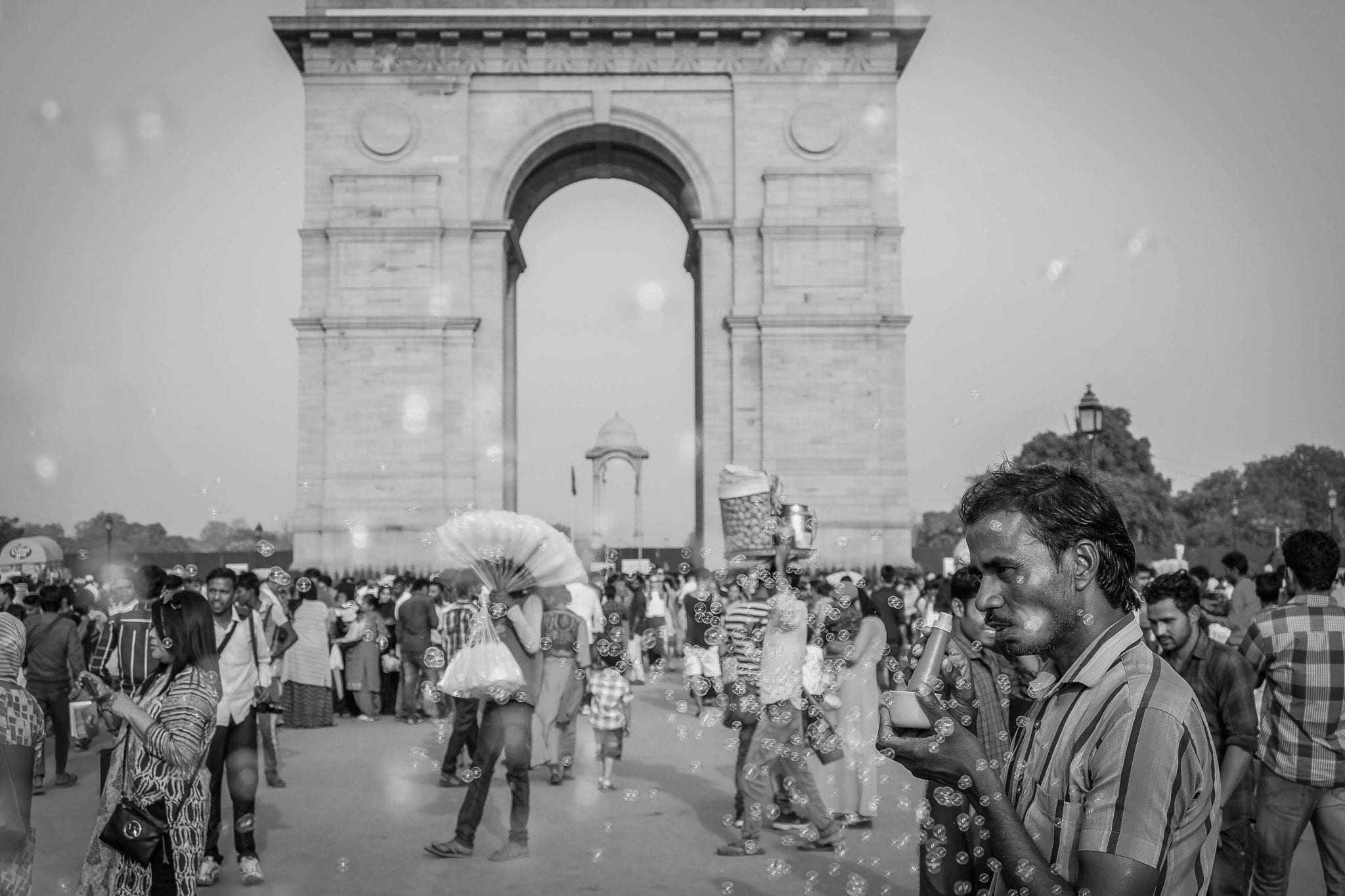
From nearby the Presidential Palace at Central Secretariat Station, you can catch the Yellow line back to the south of the city, hopping off at Metro Station Green Park and hailing an autorickshaw to Haus Khan Village for dinner. Despite originally being a residential neighbourhood, Hauz Khan Village has become a creative hub and a popular hangout spot for young delhiites and expats alike. This grid of narrow lanes hugging the permiter of the nearby deer park is home to boutiques, galleries, cafes and a number of great spots to eat. Social or Kunzum Travel Café are perfect places to grab a coffee, while Coast Café is a good place to grab a bite to eat. Although I didn’t visit myself, I’m told that the TLR Café is the place to visit for a nightcap.
Day 2 Itinerary
For your second day in Delhi, you will be exploring the centre of the capital and Old Delhi. I highly recommend being introduced to this area of the city via a walking tour with the Salaam Baalak Trust . It’s estimated that there are around 100,000 homeless children living on the streets of Delhi. Many of them eke out a life by begging for srcaps, pickpocketing and stealing, while others find themselves joining gangs to survive or using drugs as a way to numb the boredom or stave off hunger.
Luckily, the Salaam Baalak Trust offers them a lifeline. The SBT is a charitable organisation that aims to take in street kids in order to give them an education and a second chance at life, as well as training some children to become tour guides in the city, aiming to improve their language and communication skills. During their 2 hour long tours, former street children show the life of the city through an orphans eyes and tell you their own experiences of Delhi that are far removed from the usual tourist attractions, leading you around the old walled city of Delhi, down hidden alleys, and up on to the city’s rooftops. The tour costs just Rs. 400 per person and all funds raised are used to continue the Salaam Baalak Trust’s program of educating children.

Next, hop on an autorickshaw towards Gurudwara Bangla Sahib Temple . This Sikh house of worship is the most prominent Sikh temple in Delhi. First built as a small shrine in 1783 to honour the eighth Sikh Guru, Guru Har Krishan, the gurdwara stands on the site where he was thought to have performed a small miracle. Guru Hari Krishan used to distribute sanctified water to the sick, believing it had a miraculous healing effect on their mind, body, and soul, and people still treat the contents of Gurudwara Bangla Sahib’s pools as holy water. At this Sikh Temple, like all others, everyone is welcome, regardless of your denomination. The Gurudwara Bangla Sahib even has a visitors center where you can learn more about the cornerstones of the Sikh faith: Sewa (service to community and God) and Simran (remembrance of God) as well as the ten Sikh gurus and the five Ks, items that Sikhs have on them at all times.
Read More : Gurudwara Bangla Sahib Temple – A Tranquil Haven in Delhi

Catching the Metro from Patel Chowk and alighting at Chandni Chowk , you will now be in the heart of Old Delhi. Head south from the station towards Chandni Chowk road, turning right when you reach it. This is one of the area’s busiest thoroughfares and has existed since 1653. The street is built up of layers and layers of history, and traversing it is like peeling an onion. Behind the dishevelled 20th-century apartment blocks covered in reams of tangled telephone wires and drying laundry, are crumbling colonial mansions. Look a little harder and you will find yourself wandering among the central courtyards of gorgeous havelis or stumbling upon centuries-old temples hidden away on cramped backstreets.

At the far end you will find yourself at Khari Baoli Market. Khari Baoli is home to Asia’s largest spice market and the Gadodia Market building is the epicentre where men sit in tiny, dimly lit, tiled alcoves with all manner of spices and ruby red chillies laid out in front of them, spilling from the top of open hessian sacks. Some of them bark orders to the labourers that move bags of leaves and spices from stall to stall, heaving them up onto enormous weighing scales. Others huddle in groups, gossiping and playing cards in clouds of cigarette smoke, crumpled roll-ups clenched between their teeth. Even if you don’t want to purchase spices, it’s an intriguing place to spend an hour or so.
Read More : A Walk Through Old Delhi

By taking an auto rickshaw from here to the eastern end of Chandni Chowk, you will reach Jama Masjid . It stands like a proud red island in the centre of Delhi’s pandemonium, a magnificent walled mosque adorned with minarets and gigantic onion domes. The building has been here as long as Old Delhi itself, built by Mughal Emperor Shah Jahan in 1644. It’s said to have cost over 1 million rupees and remains India’s largest mosque. At capacity, it can hold 25,000 people. Although the mosques vast courtyard is worth visiting to see the buildings elegant domes and archways, you can pay an extra Rs.100 to climb the minaret and get a fantastic view of Old Delhi from above. If you have time, finish the afternoon with a visit to the Red Fort , although I don’t consider it an essential stop off.

While you are in Old Delhi, it would be a shame not to sample the area’s famous street food. I decided that the best solution was to enlist some local knowledge and take a guided street food tour with Urban Adventures on their popular Delhi Street Food Walk .
This is a great way to introduce yourself to the city’s most-loved dishes and during the 3-hour long tour you will explore the streets of Old Delhi and Kamla Nagar market, sampling everything from shawarma and bhelpuri to chaat and kulfi. The tour finishes early evening, allowing you to go for an evening drink in the area around Connaught Place, or grab an early night in preparation for your early train ride to Agra in the morning. Alternative food tours can be found here and here .
Read More : A Street Food Tour of Delhi with Urban Adventures
When most people think of Agra , it’s the Taj Mahal that instantly comes to mind. While it’s true that the grand, marble mausoleum is the city’s star attraction and the one that draws the majority tourists to this corner of Uttar Pradesh, the city does have a lot more to offer those willing to stick around for longer than a day.
Many of the city’s sights are a result of centuries of Agra being India’s centre of power. In 1501, Sikander Lodi built his capital here until when, in 1526, the Mughals defeated the last Lodi sultan and took over his reign. However, most of the city’s most impressive structures were not built until the mid 16th and 17th centuries when successive emperors constructed the fort, the Taj Mahal and all of the major mausoleums.

Getting to Agra from Delhi
The best way to reach Agra from both Delhi and Jaipur is by train. I find that the easiest way to book trains in India is via 12GO which allows you to search routes and book your journey in advance.
Around 20 trains travel between Delhi and Agra each day, most of them leaving from Delhi’s main station and arriving at Agra Cantt. The journey can take anywhere between 2 and 4 hours. If you plan on getting to Agra and back in a day, the Bhopal Shatabdi Express departs New Delhi at 6 am, arriving Agra Cantt at 7.57 pm. The return leg departs Agra Cantt at 8.30 pm, arriving in New Delhi at 10.30 pm.
The fastest train – and the one that I chose to take to Agra – is the Gatimaan Exp, taking only 1 hour 40 minutes. It leaves Delhi at 8.10 am and arrives at 9.50 am. Both these trains are the more expensive options but if you’re willing to have a longer journey, you can catch any of the other trains for around half the price (700-800 Rs).
Check train times and prices between New Delhi and Agra.
Where to Stay in Agra
As you can imagine for one of India’s most popular tourist destinations, Agra has an abundance of accommodation options catering to all manner of budgets. I recommend staying within walking distance of the Taj Mahal in order to get there early for the sunrise opening without having to rely on a tuk-tuk or taxi. I stayed for 3 nights at Zostel, just 10-minutes from the Taj’s East Gate. It is in the perfect location for sightseeing and there is the added bonus of a large, outdoor garden space. To the front of the property is a small cafe/restaurant serving delicious masala chai and a great palak paneer. The ever-popular GoStops chain also has a fantastic hostel in Agra, although its private rooms are a little more expensive than Zostel.
If you are looking for something a little more special than a budget hostel, Oberoi Amarvilas has one of the best views of the Taj in the city and is the only hotel in Agra that offers uninterrupted views of the monument from each of its 102 rooms. Elsewhere on the East Gate Road, just half a mile from the Taj Mahal, Hotel Taj Resorts is a beautiful boutique hotel with a pool and a couple of great on-site restaurants.
Day 3 Itinerary
Arriving by train into Agra Cantt Railway Station from Delhi, hop on a tuk-tuk into the city to drop your luggage at your hostel or hotel. I recommend catching an early morning train, giving yourself a full day to explore what Agra has to offer. Your first stop should be the imposing Agra Fort . This red sandstone relic of the Mughal era was built along the banks of the Yamuna in 1565 by Emperor Akbar, later embellished with white marble by his grandson, Shah Jahan, to first act as a sprawling military fortress before being transformed into a lavish palace. The fort is enormous – its outer walls have a circumference of 2.5km – so it is best to stay for around 2 or 3 hours to explore the stunning interior structures such as the Shish Mahal (mirror palace), Diwan-e-khaas (hall of private audiences), Moti Masjid (Pearl Mosque) and Nagina Masjid (Gem/Jewel mosque).

After exploring Agra Fort, it’s time for a late lunch and there is no better place to stop off than Sheroe’s Hangout . Sheroe’s is more than just a cafe. It is a symbol of bravery and a fight against stigma and discrimination. Run by 5 acid attack victims – Rupa, Neetu, Ritu, Geeta and Chanchal – this initiative by the Stop Acid Attacks Campaign gives women that have been disfigured in heinous attacks a chance to recover from the debilitating blows to their self-esteem by integrating and being in public rather than living a life of obscurity. Sheroes is a relaxed and colourful spot, with the walls covered in street art and portraits of acid attack victims. Just make sure to book a table as it is one of Agra’s most popular spots.
Following lunch, it’s time to visit some of Agra’s other historical sights on the other bank of the Yamuna. Unfortunately, there is no easy way to reach the river’s north bank as the nearest crossing is a few kilometres west of the city at the Ambedkar bridge. I would recommend hiring a tuk-tuk and driver for the afternoon to take you to these spots at a cost of anywhere around 150 and 200 rupees for the round trip.
Ask your driver to stop off at the Tomb of I’timād-ud-Daulah . It has gained the nickname of ‘The Baby Taj’ over the years due to the similarities in stonework and carvings between the two. What many people don’t know is that Itimad-ud-Daulah was actually built before its more famous counterpart and was the first mausoleum to be built from white marble rather than red sandstone. It may not be as grand as the Taj Mahal, but it is still beautiful.

Afterwards, have your driver continue eastwards along the river towards Mehtab Bagh (100 rupee entry fee). One of the most beautiful spots for viewing the Taj Mahal , this long, lush green lawn dotted with flowering bushes was designed to mirror the Taj Mahals own decorative gardens. Legend says that Mughal emperor Shah Jahan long planned an exact copy of the Taj to be built in the spot as a tomb for himself, only made entirely of black marble, however, it was suggested that Shah Jahan was overthrown by his son, Aurangzeb, before it could be built. Hopefully you can time your arrival just before sunset, settling in for a view of the Taj as daylight fades, casting an orangy pink glow on the building’s marble dome. I spent a beautiful evening, sat in complete silence with dozens of other people, gazing in awe at history’s greatest monument to love. The gardens close just after sunset, so hop back on your tuk-tuk and take the 20-minute ride back to central Agra in time for dinner.
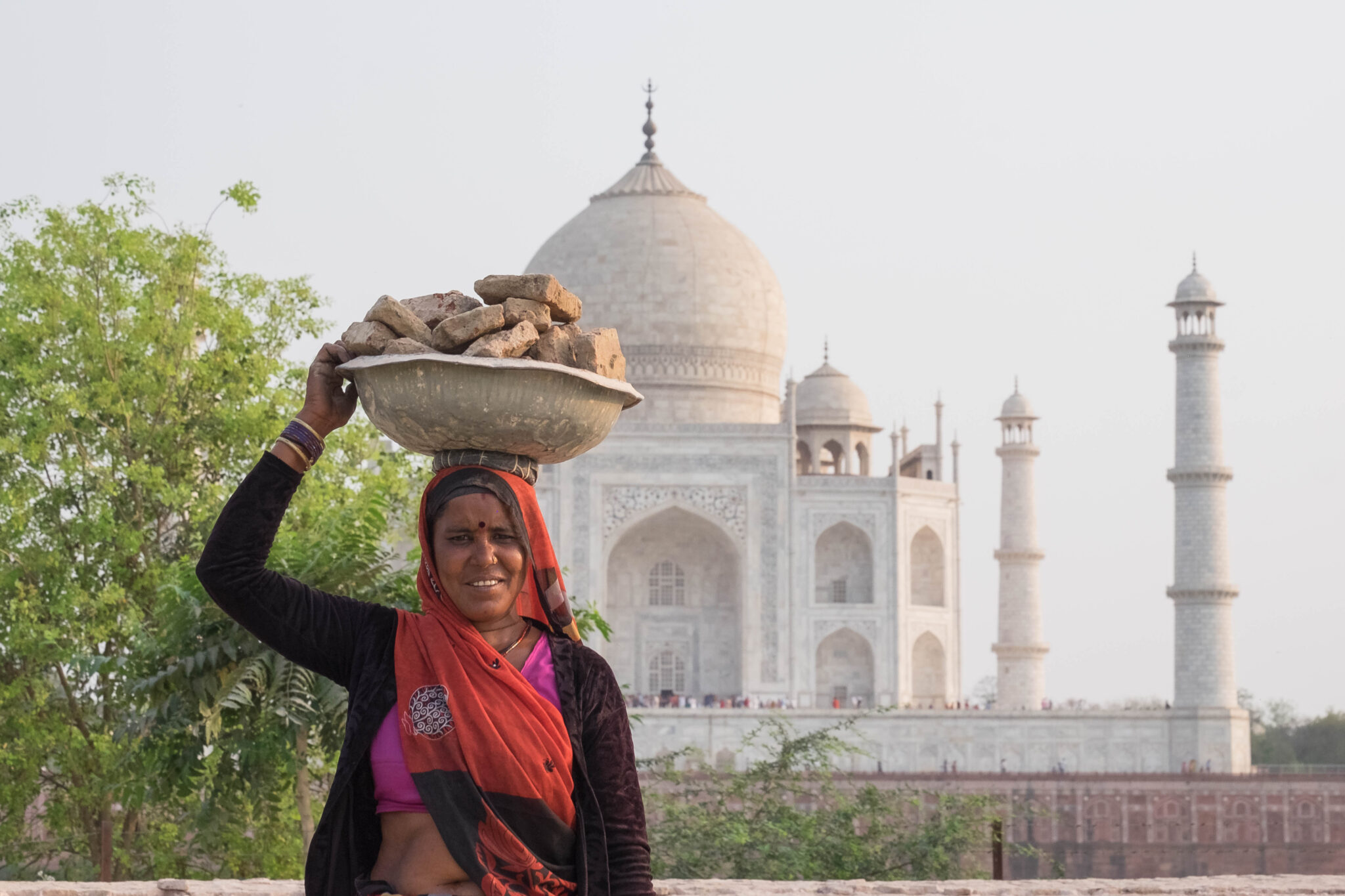
As this is India, street food is the order of the day and there is no better place to find this in Agra than Kinari Bazaar . This crazy labyrinthine network of alleyways and chouks situated behind Jama Masjid is a colourful assault on the senses. Just make sure to take plenty of patience as the crowds and onslaught of sales pitches can be a little overwhelming. After sating yourself with delicious Indian cuisine, make your way back to your hotel catch plenty of sleep as tomorrow is an early start.
Day 4 Itinerary
This morning you will be visiting the attraction that you most likely travelled all the way to Agra to see: The majestic Taj Mahal . In my opinion, the best time to visit the Taj Mahal is at sunrise when the crowds are smaller and it is still cool enough to comfortably walk around. Check opening times online as this varies throughout the year, but this is normally around 6am. I would advise getting there half an hour before opening to ensure that you are near the front of the queue. Ensure that you buy your ticket (1100 Rupees for non-Indians) before joining the queue. The ticket booth is on your right-hand side as you walk towards the east gate along Taj East Gate Road.
Once you get inside, you will see most of the other tourists gather in front of the main reflective pool, trying to jostle each other for a photograph of the mausoleum. I recommend walking straight past them and heading to the mosque on the west side of the complex. You will possibly be the first there, giving you the opportunity to photograph the Taj with no other people in your shot.

The Taj Mahal was built by Shah Jahan as a memorial for his 3rd wife who died in childbirth in 1631. The emperor was so heartbroken that he began building the Taj Mahal in her honour. The main mausoleum took just 8 years to complete, but it wasn’t until 1653 that the finishing touches were added to the complex as a whole. Because of this, it is often described as the world’s greatest monument to love.
It is easy to spend an entire day gawping at this structure. I recommend spending at least 2 or 3 hours wandering around the complex, viewing the mausoleum from numerous different angles and spending some time pondering its beauty. If you don;t want to queue at the ticket office, skip-the-line tickets can be bought here .
Following your early start and hours of sightseeing, you are probably hankering for a late breakfast or early lunch. While a quick lunch of street food is easy to come by around the Taj’s entrance gates, I recommend adding to the wow-factor of your day by making your way to Agra’s best hotel, the stunningly opulent Oberoi Amarvilas , for an elegant and extravagant brunch. If this is a little out of your budget, then head to one of the many rooftop restaurants in the Taj Ganj area of the city. I tried the rooftop of Hotel Saniya Palace and the view of the taj mahal was spectacular. The majority of the restaurants around Taj Ganj don’t carry an alcohol licence, however, if you ask nicely, they will soon find you an ice-cold beer. Just be warned, the food probably won’t live up to the view.

Lunch done, you now have the option of leaving Agra for your next destination or sticking around to see a little more of the city. In my opinion, I recommend staying an extra night in Agra for a reason that will become clear soon.
With your free afternoon in the city, you can spend a little time relaxing at your hotel but if you have itchy feet, then pay a visit to the Taj Nature Walk (100 rupees entry fee) on the East Gate Road. This lush expanse of parkland, crisscrossed by walking trails, picnic spots and viewpoints, covers 70 acres, stretching from the road all the way towards the banks of the Yamuna. You can expect it to be fairly quiet compared to the rest of Agra if it is a little peace and tranquillity that you’re looking for. I only spotted two other couples walking the trail while I was there. While it is great for twitchers and nature lovers, the real attraction is the various vantage points dotted around the park, allowing to see the Taj Mahal from a unique perspective. It’s possible to spend a whole morning exploring the different paths but I found that an hour was enough time.

Now for the main reason for staying in Agra for an extra evening: to take a boat ride on the Yamuna. I understand that you may already starting to be saturated with views of the Taj Mahal from various outposts in the city, but this is one of the most unique that not many travellers get to experience.
Officially, it’s illegal for tourists to take a boat ride on the Yamuna. However, this doesn’t mean that it’s impossible, you just have to know where to look and who to ask. After all, who would want to miss out on the best view of the Taj Mahal just for the sake of a few rules? Most hostels in and around Agra offer this tour (200-250 Rs per person) but I found that the best way is to do it yourself from Dusshera ghat. To reach Dusshera ghat, head to the Taj Mahal’s east gate from Taj East Gate Road and, as soon as you pass the ticket office, take a right and follow the Taj’s perimeter wall all the way to the waterfront. As boat rides are not advertised, it is best to ask around at the jetty to see if anyone will take you. When I visited, there were a few policemen on the jetty but they didn’t seem to mind me hopping aboard a boat. We paid 100 rupees (around £1.10) each for a 15 – 20 minute ride.
Check out this blog post for a detailed account of my sunset boat ride.
Fatehpur Sikri & Jaipur
Just an hour’s drive from Agra is the ghost city of Fatehpur Sikri, the former capital of the Mughal empire. Built in 1569 and 1585 as a way for the emperor to create a new capital and move imperial power away from Agra, he constructed this magnificent sandstone fortress filled with ornate gardens, an impressive fusion of Hindu and Muslim architecture, and a stunning mosque that is famous for the towering Buland Darwaza gate. Unfortunately, Fatehpur Sikri’s prominence didn’t last long and the city was abandoned in 1585 due to the city’s water supply being insufficient for its population and the Mughal Emperor soon returned to Agra.
The easiest way to visit Fatehpur Sikri is on a day trip from Agra. There are multiple agencies in Agra that provide this service, however, it is simple enough to visit on your own via train or bus. Most car and driver services between Agra and Jaipur also include the city as a stop off as part of their itinerary.
Getting to Fatehpur Sikri
Fatehpur Sikri is relatively easy to reach from Agra. Regular buses (40 rupees) run from Agra’s bus stand every half an hour or so between the hours of 5.30am and 6.30pm.
Trains also run each day from Agra Fort Station but are not as regular as the buses. If you are travelling back towards Agra, the journey is the same but in the opposite direction, however, if you are travelling onwards to Jaipur, you will have to wave down a Jaipur-bound bus (190 rupees for a 4-and-a-half-hour ride) from the Bypass Crossing Stop. If you ask around, you will easily find a willing local to point you in the right direction.
The city’s bustling streets burst with colour and chaos. Cycle rickshaws weave among clouds of exhaust and soot as they dodge camels, cars and the occasional dawdling elephant. Swarms of motorbikes honk and buzz through the city’s vibrant marketplaces and grand gateways.
However, the present-day metropolis that is modern Jaipur has been built on centuries of history. This is the ‘Land of the Kings’, the realm of maharajas, where majestic forts and opulent palaces are more numerous than anywhere else in India. The splendours of Rajasthan’s past are still here to explore. At the centre of Jaipur , the elegant City Palace still housing the former royal family, is an island of tranquillity; the marvellous honeycomb facade of the Hawa Mahal looms over a traffic-clogged thoroughfare; and the city’s pink-tinted walls are punctuated with 7 imposing, decorative gates. Look further still and you will find sprawling hilltop fortresses, Escher-like step wells, and temples left to the care of roaming packs of monkeys.

Getting to Jaipur
There are 9 trains leaving for Agra each day, taking 4 and a half hours and costing around ₹185 for 3rd class. The faster 3 and a half hour train will cost you around ₹500.
Check train times and prices between Agra and Jaipur.
Alternatively, you can hire a car and driver to take you from Agra to Jaipur . This can cost anywhere from ₹5000 to ₹8000 depending on which company you use and which attractions you decide to visit along the route. If you plan on visiting Fatehpur Sikri and Chand Baori in Abhaneri en-route to Jaipur, you will need to hire a driver rather than take the train.
Where to Stay in Jaipur
Jaipur isn’t short of high quality, budget guesthouses and hostels. Many of the best properties are concentrated along MI Road or 2km away from the Old City in the peaceful Bani Park area. The ever-reliable Zostel chain is one of the best spots in the city for wallet-friendly dorm beds while on the edge of the Old City, Krishna Palace is a beautiful, family-run heritage property with a lush garden and roof terrace.
Day 6 Itinerary
Start your first full day in Jaipur by wandering along the traffic-clogged MI road in search of breakfast. Hidden away in a small courtyard is Indian Coffee House , a Society for Indian Coffee Workers-owned cooperative with two branches in Jaipur.
It doesn’t look like much – It’s dingy inside, with pale green walls and fans running constantly to cool the interior – but this outdated, 70’s decor only adds to the appeal as uniformed waiters, complete with Nehru topi or a Pathan turban on their heads, go from table to table dishing out enormous dosas, crispy pakoras, omlettes and egg dishes that are some of the cheapest you’ll find in the city. The filter coffee isn’t too bad either.
Following a hearty breakfast, you will only be a short walk from some of Jaipur’s main attractions. Of these attractions, the City Palace is undoubtedly the star and with good reason. Situated right in the centre of the old city, you enter through the pink outer walls to find a maze-like complex of gardens, courtyards and buildings. The original outer wall was built by Jai Singh but the interior has been added to and enlarged over the years, with different buildings and palaces deriving from different centuries. Although the parts of the palace that you will see for the regular entrance fee are not all that exciting, you will have to pay the eye-watering extra ₹2,500 (around £27.50) for entrance to the palace’s most impressive rooms. I couldn’t justify the expense but for that price, but you will get a personal guide, a cup of chai in a private courtyard, and entrance to the palace gardens.

Afterwards, pay a visit to Jantar Mantar (Gangori Bazaar, 200 rupee entry) nearby. Although Jantar Mantar may just resemble a sculpture park filled with enormous, geometric statues, it is actually an observatory built by Jai Singh II in 1728 in order for him to measure the night sky (the name means ‘instruments of calculation’) that was added to the UNESCO world heritage list back in 2010. The complex features the world’s largest sundial.
There is just one more of this area’s trio of attractions to visit and this is the Hawa Mahal . One of Jaipur’s most iconic and distinctive landmarks, the Hawa Mahal was constructed in 1799 by Maharaja Sawai Pratap Singh as a way to allow ladies of the royal household to watch life on the streets below without being seen themselves. The five-storey tall honeycomb hive facade consists of 953 latticework windows for the ladies viewing pleasure. Entry is 200 rupees but if you just want to see the building’s famous façade, I recommend heading across the road and up a stairway to the Wind View Café where you can enjoy a coffee and quick lunch on the cafes terrace with an unbeatable view of the palace.

To round out your first day in Jaipur, take a self-guided walking tour around the old Pink City and its bazaars, starting at New Gate and taking a 4km circular stroll clockwise around the city, ending at Ajmer Gate. Head through New Gate and make your way through Bapu Bazaar, stopping to gawp at the colourful textiles and fabrics. Once you hit Sanganeri Gate, take a left and stroll through the jewelers and goldsmiths and Johari Bazaar, passing the majestic Hawa Mahal once again. Eventually you will reach the minarets of Jama Masjid where you can swing a left and wander past Tripolia Bazaar. In this area you can stop inside Maniharon Rasta, the perfect place to pick uup some beautiful bangles, or climb the steps of Iswari Minar Swarga for a, frankly, fairly underwhelming view of the city. Eventually you turn left again to wander past the stoneworkers of Khajane Walon ka Rasta before reaching the city walls beside Indra Bazaar, your end point.

No doubt at after all that walking you will be in need of a few refreshments. Just a 5 minute walk away down MI Road is Lassiwalla , the city’s most famous and popular lassi establishment that has been dishing out hundreds of creamy drinks each day since it first opened back in 1944. However, if it’s something a little stronger that you’re looking for, I have to recommend a trip to Bar Palladio . Bar Palladio describes itself as a place that delights in fantasy, a candle-lit wonderland and a floating world. Here you can wander amongst the peacocks and tented pavilions in the bar’s garden or head inside into a cobalt blue dreamland that appears to be modelled on the City Palace’s summer room, although the owner claims that the decor is inspired by the iconic Caffé Florian and Harry’s Bar in Venice. Either way, it really is an enchanting place to come for an early evening cocktail. The bar itself opens at 6 pm but tables fill fast. I recommend arriving at opening or pre-booking.
You can stay for food at Bar Palladio but if you’re on a tighter budget, how about catching a cab or tuk-tuk to Peacock Rooftop Restaurant . Situated on a rooftop terrace on the Hotel Pearl Palace, this quirky and fun restaurant offers romantic, candlelit, 360 views of Jaipur that reach all the way towards Hathroi fort. The cuisine is varied and inexpensive, although the Rajastani thali is probably the best thing on the menu.
Day 7 Itinerary
Today is going to be another busy day in which you will be heading out of the city centre to see some of the sights on the edge of Jaipur. After breakfast (I’d always recommend starting at Indian Coffee House again) hop in an Uber or taxi towards Amer Fort. Along the way, ask your driver to stop briefly beside Man Sagar Lake so that you can see the Jal Mahal , or water palace, from afar. When I visited, the palace was undergoing extensive renovations meaning that it cannot be accessed, but it is worth stopping off on the road between Jaipur and Amer to take a look and capture a few photographs before continuing your journey to the fort.

The Amber Fort is not only Jaipur’s most popular tourist attraction, it is also one of the most magnificent buildings in all of Rajasthan. Built with pink and yellow sandstone then embellished with white marble floors and walls, it is infinitely photogenic, especially as the sun fades on an evening, giving the whole fortress an orange and pink hue. Amer was the former capital of Jaipur state, with the fort being built in 1592 by Maharaja Man Singh. Subsequent extensions have lead to the fort comprising of an enormous and expansive network of palaces, temples and courtyards that will take the best part of a day to explore fully.
Elephants are used to carry tourists up the winding, hilly, switchbacks from the main road to the fort, but due to the mistreatment and abuse that these animals go through to be trained, as well as the health impact of carrying passengers please do not pay to ride an elephant to the entrance. It is just a short, 10-minute climb to the top or 4WD vehicles are available (40 rupees return for 5 passengers) if you are unable to walk.

If you feel up for a little stroll, you can take the rear exit of the Fort and stroll 10-15 minutes downhill to the town of Amer. Here you will find Panna Meena Ka Kund , a beautifully refurbished step well. Built in the 16th century as a way of collecting the monsoon rains, the step well was a centre point for the community, used as a water source, bathing pool and for washing clothes. The geometric staircases are a stunning combination of ingenious Indian engineering and architectural beauty.
Read More : Panna Meena Ka Kund – How to visit Jaipur’s Incredible Step Well
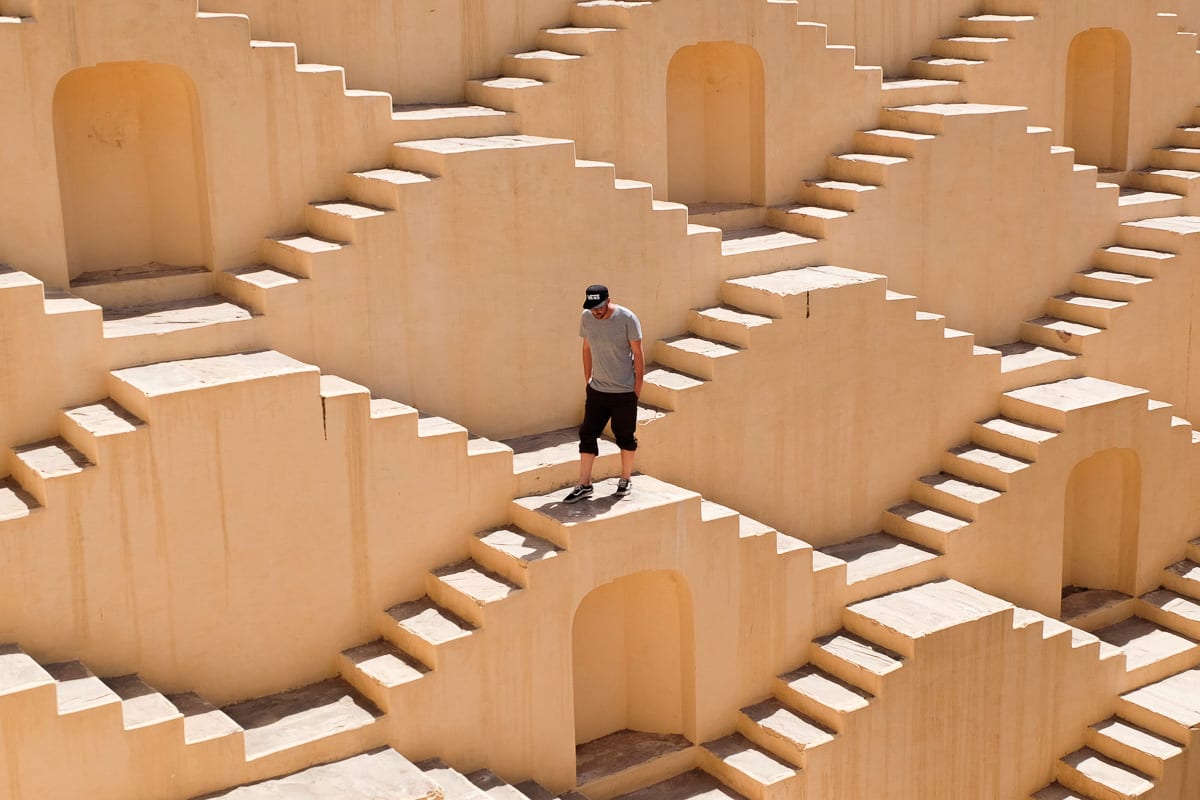
For our next stop you will have to catch a taxi or Uber again. Nahargarh Fort stands high above the northern limits of Jaipur, casting an imposing shadow over the city and can be a bit of a pain to reach. One way is to climb the steep, 2km path that winds up towards the fort from Nahargarh Fort Road but I would suggest going by car, although this is a 16km round trip from the city centre. Going direct from Amber Fort of Panna Meena Ka Kund means you can avoid having to travel back into the city just to head out again.
The fort was originally named Sudarshangarh, but it became known as Nahargarh, which means ‘abode of tigers’. Local legend says that the fort was named for Nahar Singh, a dead prince whose spirit was thought to be disrupting construction only sated once a temple was built within the grounds. While the labyrinthine corridors and maze of courtyards within the fort itself are impressive, the main attraction is the view of the city from the ramparts.

Catching a taxi back into the city, you should have now worked up quite an appetite so it’s time to head for dinner. If you’re staying within the walls of the Pink City, seek out Ganesh Restaurant , a purely vegetarian restaurant located atop the city walls. atop the city walls. It’s a little difficult to find but their creamy butter masala is worth the effort. If you’re hotel is further west along the MI Road, then Handi , a restaurant that has been in business since 1967 serving up a great range of barbecue and tandoori dishes, is a great choice.
With that, your time exploring the Golden Triangle is done. You can either catch a late-night train back to Delhi for your flight home or return to your hotel to rest, catching your train to Delhi the next morning.
IF YOU HAVE MORE TIME IN JAIPUR
Galta ji temple.
Although Galta Ji Temple is situated right on the edge of Jaipur’s city centre, it feels desolate and is incredibly evocative. Squeezed between two cliff faces in a deep valley and accessible by taking a winding, hilltop path, Galta Ji is most commonly known as the ‘Monkey Temple’ as hundreds of macaques and langurs call the crumbling buildings their home, running riot on the temple steps or playing in the sacred tanks.
A hilly, rugged path of steep climbs and switchbacks winds its way from Galta Gate, on the eastern edge of Jaipur, to Galta Ji. I rode by tuk-tuk to the gate from Jaipur’s city centre, and then it took me approximately 25 minutes to follow the clearly marked path and reach the temple. While the pedestrian route may seem like a slog, you are rewarded with hazy views of the bustling city from Surya Mandir, a temple sitting on a ridge 100m above Jaipur.
It’s claimed that the sacred tanks of Galta Ji are ‘many elephants deep’. When I visited, I didn’t see many pilgrims taking the plunge into the temple’s water so I couldn’t judge for myself, instead the pools were full of frolicking macaques. Small bags of peanuts are available to purchase at the entrance, but only do so if you are prepared to be mobbed by macaques. If you would rather keep the monkeys at a distance, it is worth waiting for the temple’s self-proclaimed ‘Monkey Master’ who arrives sporadically with bowls of fruit with which to feed the monkeys.
Alternatively, you can reach Galta Ji by car or Uber. Although the temple is only a few kilometres from the city centre, it is approximately 10km from the City Palace by road. You should be able to visit by tuk-tuk for around 300 rupees, including waiting time. A taxi will be more expensive, charging 500 – 700 rupees.
Read More : Galta Ji Monkey Temple

Where to Next?
Although many people finish their brief tour of India at this point, heading back to Delhi to catch a flight home, Jaipur is the perfect jumping off point to explore more of Rajasthan.
The land of the kings is home to magnificent fortresses rising from the desert, lavish palaces, camel trains and jungle-dwelling tigers. However, beyond the architectural wonders and maharajas, it is the enthralling mix of culture and festivals that left me transfixed by the region. There are two popular routes from the state’s capital, heading south to Ranthamblore Natinal Park where you can take a safari to search for tigers amongst the forests and rivines, or taking an onward train to Ajmer in order to visit Pushkar , a small yet enchanting town has the right mix of mysticism, religious fervour, and magnetism that causes backpackers and new age types to linger here for weeks, if not months.
The Best Golden Triangle Tours
Although the Golden Triangle is a well-trodden tourist trail and all the destinations are easily accessible by public transport, package tours are available for people on a tighter schedule or those that don’t want to rely on trains, buses or their own organisational skills.
G Adventures are one of my favourite tour companies, focusing on small-group travel with a sustainable and environmentally friendly ethos. Their 8-day Delhi to Delhi Golden Triangle Tour covers all of the stops mentioned in this guide as well as a number of lesser-visited spots. Alternatively, if time is short, they also offer a 6-day Independent Adventure .
If group travel isn’t your thing and you are even shorter on time, private tours can be organised in which you will travel by air-conditioned, private car with attraction tickets, hotels, and tours all organised for you. Numerous different tours are available here .
India Essentials
When travelling, there are certain brands and resources that I always rely on when booking things like flights, accommodation and tours. Here are my recommendations.
Mobile Data and SIM Cards
Prepaid eSIM’s are a great way of accessing affordable data and staying connected while travelling. I use and recommend Airalo.
Booking Accommodation in India
When securing accommodation abroad, I almost always rely on Booking.com as they have everything from rental properties to homestays and luxury hotels.
Most cities in India also have a good range of hostels for the budget traveller and some of the country’s largest chains such as Moustache and Zostel have outposts here. I always use Hostelworld when booking my bed in hostel dorms.
Train Travel in India
Thanks to India’s extensive rail network, the country is best explored by train, however, booking rail tickets in India can be slightly confusing when using local booking services. The cheapest and easiest way of securing tickets is via 12GO, who allow you to search for journeys and book trains easily.
Tours in India
Many of India’s cities are vast, sprawling and chaotic, meaning that they are best seen with the help of a local guide. Whether you are planning an adventurous day trip or a delectable food tour, Get Your Guide and Viator have a huge number of options.
Travel Insurance
Dave McClane
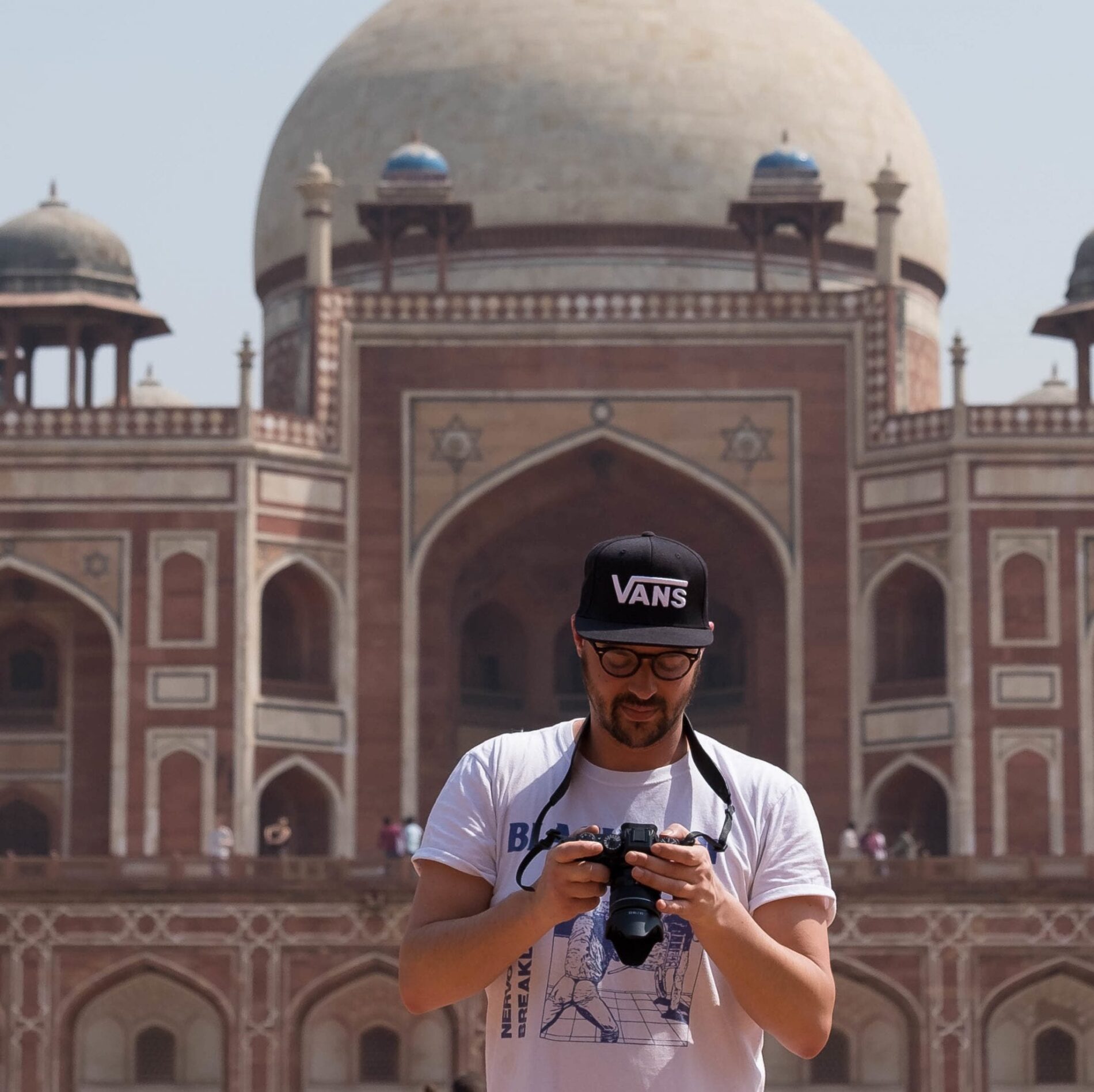
David McClane is a photographer and travel writer based in Leeds, UK. Since first picking up a camera on a yearlong journey through Central and South America in 2014/2015, He has carefully documented his travels through almost 50 countries.

Dhinga Ganwar Festival in Jodhpur

The Best of Rajasthan: A 2-Week Itinerary for the Land of Kings

A Backpacker’s Guide to Delhi, India

A Backpacker’s Guide to Jaipur, Rajasthan
3 responses.
Great Blog!! Very helpful guide this will really help me out in my upcoming golden triangle tour in India.
Nice information, it helps me a lot.
Nice Sharing Keep it up.
Leave a Reply Cancel reply
Your email address will not be published. Required fields are marked *
Subscribe to my Newsletter
Sign up for my newsletter to get a monthly dose of beautiful photography and travel stories that are bound to fuel your next adventure.
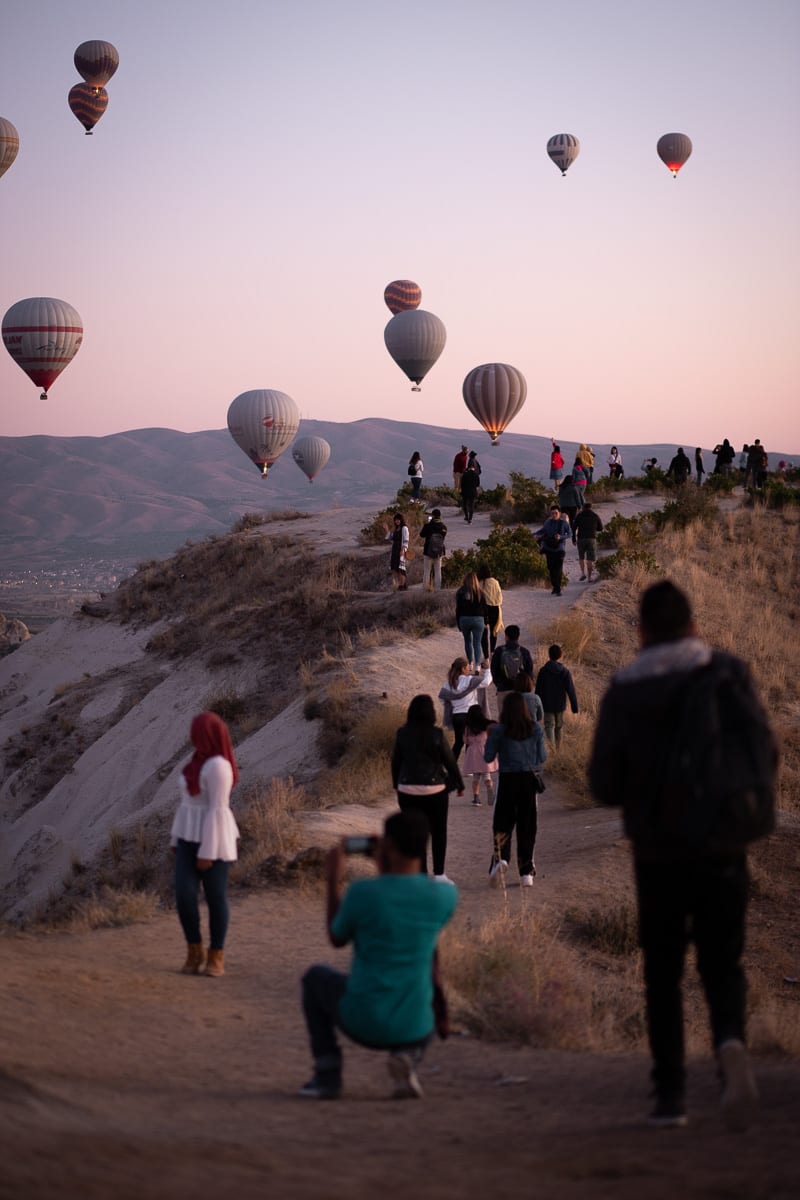
Copyright © 2024 Man Vs Globe
Golden Triangle India
Golden triangle india travel essentials.
Ideal duration: 3-7 days
Best Time: October - March Read More
Planning a Trip? Ask Your Question
India's Golden Triangle
Golden triangle india travel packages.
Compare quotes from upto 3 travel agents for free
Golden Triangle India Tour Package - Delhi Agra Jaipur
Delhi, Agra, Jaipur Tour Package: Golden Triangle Tour
Delhi jaipur agra holiday tour package, 6 nights 7 days golden triangle luxury holiday package.
Delhi Agra Jaipur Tour Package 5 Days with Mathura
Golden Triangle Tour Package with Pushkar
Top places within golden triangle india, "india's popular tourist circuit", golden triangle india tourism.
The Golden Triangle, a popular tourist circuit in India, encompasses three of the country's most iconic cities: Delhi , Agra , and Jaipur . This triangular journey, marked by roughly equidistant points on the Indian map, promises a rich tapestry of history, culture, and architectural marvels. Spanning the northern plains of India, this route provides a comprehensive glimpse into the nation's regal past, colonial influences, and diverse heritage.
Starting in Delhi, the nation's capital, travelers are introduced to a city that is a melting pot of eras. Ancient landmarks like the Qutub Minar and Red Fort , representing India's rich historical past, coexist with modern infrastructures and establishments, reflecting the city's rapid growth and cosmopolitan spirit. Delhi, with its bustling markets such as Chandni Chowk , sprawling gardens like the Lodhi Gardens , and impressive boulevards around India Gate , paints a picture of vibrant colors, historical significance, and evolving modernity. A short drive southeast leads to Agra, the city that houses the world-renowned Taj Mahal . This monument, an epitome of love built by the Mughal Emperor Shah Jahan for his beloved wife Mumtaz, stands as a testament to the grandeur of the Mughal era. But the city isn't just about this iconic marble mausoleum. The Agra Fort , a UNESCO World Heritage site, and the nearby Fatehpur Sikri , the erstwhile Mughal capital, further showcase the architectural and historical richness of the region. The final vertex of the triangle, Jaipur, is the vibrant capital of the desert state of Rajasthan . Often referred to as the 'Pink City' due to the dominant color scheme of its buildings, Jaipur is a mesmerizing blend of palatial structures, royal heritage, and bustling bazaars. The Amber Fort , City Palace , and Jantar Mantar observatory are just a few of the many attractions that beckon visitors. The city's colorful festivals, traditional handicrafts, and folk performances offer a delightful insight into Rajasthani culture and traditions, rounding off the Golden Triangle experience with a flourish of color and charisma.
Things to do in Golden Triangle India
1. taj mahal, agra - a monumental ode to love.

2. Qutub Minar, Delhi

3. City Palace, Jaipur, Jaipur

4. Amer Fort, Jaipur

5. Hawa Mahal, Jaipur

6. Agra Fort, Agra - An Epitome of the Mughal Dynasty

7. Jantar Mantar Jaipur, Jaipur

8. Red Fort, Delhi

9. India Gate, Delhi

10. Jama Masjid Delhi, Delhi

11. Humayun's Tomb, Delhi

12. Fatehpur Sikri, Agra - The Pride of Mughal Empire

13. Jal Mahal, Jaipur

14. Itimad-ud-daulah's Tomb, Agra

More on Golden Triangle India Travel
Travel tips for visiting the golden triangle.
- Drink bottled water only. Avoid tap water and ice in drinks.
- Beware of tampered mineral water scams, always check if the bottled water is sealed and has a manufacturing date. Do not buy bottled water if you’re unsure of its authenticity.
- Street food, while delicious, can sometimes lead to stomach issues for tourists. Consume it from reputable vendors or places that are busy with locals.
- Vaccinations like Typhoid, Hepatitis A and B, and Tetanus are recommended for most travelers to India.
Golden Triangle with Varanasi: An 8-Day Itinerary
- Morning to Afternoon:Arrival at Indira Gandhi International Airport, Delhi.
- Transfer to hotel using a pre-booked cab.
- Rest and acclimate to the time zone.
- Evening:Explore India Gate and the surroundings.
- Dinner at a local restaurant offering traditional North Indian cuisine.
- Morning:Visit the Red Fort.
- Explore Chandni Chowk and Jama Masjid.
- Enjoy a rickshaw ride in Old Delhi.
- Afternoon:Visit Qutub Minar and Humayun’s Tomb.
- Lunch at a local cafe.
- Evening:Shopping at Dilli Haat or Connaught Place.
- Overnight stay in Delhi.
- Morning:Breakfast at the hotel.
- Take the Gatimaan Express (12050) from New Delhi to Agra.
- Afternoon:Visit Agra Fort.
- Lunch at a rooftop restaurant with a view of the Taj Mahal.
- Evening:Visit the Taj Mahal during sunset.
- Overnight stay in Agra.
- Drive to Jaipur. En route, visit Fatehpur Sikri.
- Afternoon:Arrive in Jaipur.
- Check-in and lunch at the hotel.
- Evening:Explore the local bazaars of Jaipur.
- Overnight stay in Jaipur.
- Morning:Visit Amber Fort. Enjoy an elephant ride up the fort.
- Afternoon:Lunch at a local restaurant.
- Visit City Palace, Jantar Mantar, and Hawa Mahal.
- Evening:Explore the vibrant markets of Jaipur.
- Morning to Afternoon:Flight from Jaipur to Varanasi (Direct flights might be limited; connecting flights through Delhi are common).
- Check-in at Varanasi hotel.
- Evening:Attend the Ganga Aarti at Dashashwamedh Ghat.
- Explore the local markets.
- Overnight stay in Varanasi.
- Early Morning:Boat ride on the River Ganges.
- Explore the ghats.
- Morning to Afternoon:Visit Kashi Vishwanath Temple, Sankat Mochan Hanuman Temple, and Durga Temple.
- Lunch at a traditional eatery.
- Evening:Explore Sarnath, where Buddha gave his first sermon.
- Last-minute shopping or exploration if time permits.
- Afternoon:Flight from Varanasi's Lal Bahadur Shastri Airport to your next destination or home.
Golden Triangle India Itinerary:The Essential Delhi - Agra - Jaipur Tour
Day 1: arrival in delhi.
- Arrive at Indira Gandhi International Airport, Delhi. Pre-booked taxis or airport shuttles are readily available to take you to your hotel.
- Transfer to your hotel and check-in.
- Rest and acclimatize to kickstart your Golden Triangle journey.
- Evening stroll in the nearby market to get a feel of the city.
Day 2: Dive into Delhi's Heritage
- Begin with a hearty breakfast. Utilize pre-booked taxis, auto-rickshaws, or Delhi Metro for city sightseeing.
- Embark on a guided tour covering iconic sites: Red Fort , India Gate , Lotus Temple , Qutub Minar , and Humayun's Tomb.
- Enjoy local cuisine in Chandni Chowk .
- Time permitting, visit Raj Ghat or the President's House.
Day 3: A Date with Mughal Elegance
- Early morning train from New Delhi Railway Station to Agra Cantt or a drive via the Yamuna Expressway (3-4 hours).
- Check into your hotel and freshen up.
- Visit the grand Agra Fort .
- Experience the mesmerizing sunset view at Taj Mahal.
- Explore local markets for handicrafts.
Day 4: Jaipur: The Pink City Awaits
- Morning departure to Jaipur.
- Explore Fatehpur Sikri , the historic Mughal city.
- Continue drive to Jaipur and check into your hotel.
- Relax and perhaps venture to Chokhi Dhani for a traditional Rajasthani dinner.
Day 5: The Royal Jaipur Expedition
- Begin with a traditional Rajasthani breakfast.
- Guided exploration of Amber Fort, (opt for an elephant ride to the top)
- Visit the architectural wonders: Hawa Mahal , and City Palace.
- Take a rickshaw ride in the bustling Bapu Bazaar
- Visit the Jantar Mantar observatory or the Jal Mahal .
- Optional: Sunset view at Nahargarh Fort.
Day 6: Farewell and Departure
- Morning train from Jaipur Railway Station to New Delhi or a drive via NH48.
- Last-minute shopping or sightseeing at Dilli Haat or Janpath, depending on your flight/train schedule.
- Proceed to the airport/railway station for your onward journey.
- Depart with cherished memories of the Golden Triangle!
India Golden Triangle Tour Itinerary with Amritsar, Varanasi, Ranthambore, Kochi & Alleppey
Delhi: the heart of india (days 1-4), agra: mughal grandeur (days 5-7), amritsar: the punjabi essence (days 8-10), varanasi: where spirituality meets culture (days 11-13), jaipur: the pink city chronicles (days 14-16), ranthambore: wild and cultural (days 17-19), kochi: the coastal retreat (days 20-21), alleppey: cruise and culture (days 22-23), farewell (day 24), best time to visit golden triangle india, top stories about golden triangle india tourism.

Delhi to Agra by Train: A Scenic Route in India's Iconic Golden Triangle

Art & Culture
Historical Sites in Golden Triangle
Browse Package Collections
Nearby destinations for packages, top listed packages.
Delhi Agra Mathura Tour Package: India Golden Triangle Tour
Golden Triangle India Photos

FAQs on Golden Triangle India
How many days are ideal for a golden triangle tour, should i be wary of scams, is it recommended to buy a sim card, what currency is used, and where can i exchange money, do people speak english in the golden triangle, is it customary to tip in india, what kind of food can i expect, do i need a guide for sightseeing, how do i commute between the cities, what type of clothing is appropriate, what cities makeup the golden triangle, is the taj mahal open every day, what are the must-visit sites in these cities, is it safe for solo and female travelers, what is the best time to visit the golden triangle, have a question on golden triangle india.

Golden Triangle India Reviews

Similar Places

Get the best offers on Travel Packages
Compare package quotes from top travel agents
Compare upto 3 quotes for free
- India (+91)
*Final prices will be shared by our partner agents based on your requirements.
Log in to your account
Welcome to holidify.
Forget Password?
Share this page

- Home
- About Delhi
- Tourist places
- Accomodation
- Transport
- Entertainment
- e-Booking
- Suggested Itinerary
- About Delhi
- Tourist places
- Accomodation
- Entertainment
- Suggested Itinerary

Golden Triangle Tour
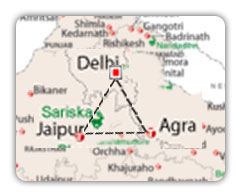
DELHI - AGRA-BHARATPUR - JAIPUR - DELHI
Operating Scheule: 3 Days Tour Departure from Delhi: 7.00 a.m., every Tuesday & Friday
Places Covered:
This historical city stands 200 km south of New Delhi, on the banks of river Yamuna. Over three centuries ago, it was a powerful Mughal capital and the most important city of northern India. It was at this time that Agra's many timeless architectural wonders were born: the wonderful Taj Mahal, the awesome Agra Fort, and the sprawling Sikandara - a whole city in itself.
Agra Fort : Built in red sand stone, it is the one of the famous sights of Agra other than Taj Mahal. The semi circular fort was started by Akbhar in 1565, and completed in 1574.

Taj Mahal : The most photographed monument in the world, the Taj stands in its splendor of white marble, an imposing citadel on the banks of river Yamuna. Built in 17th century by Shah Jahan, the fifth Mughal emperor, in the memory of his wife Mumtaz Mahal, the Taj Mahal is an ode to the emperor's eternal love for his wife. It took over 20,000 skilled workers from across the country, working day and night, for 22 years for this architectural wonder to be created.
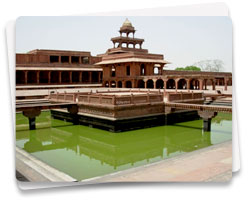
Bharatpur Bird Sanctuary:
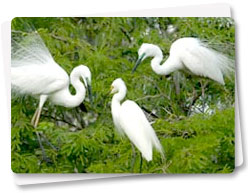
(Included in the itinerary during winter only)
The Pink City is replete with historical landmarks that echo its past glory and living traditions. Discover palaces and forts, temples and gardens, crafts and pageantry here.

Jantar Mantar: Built in 1728, it is one of Sawai Jai Singh's unique observatories. It has instruments that have been scientifically designed to predict the movement of the major stars accurately. It represents the high point of medieval Indian astronomy.
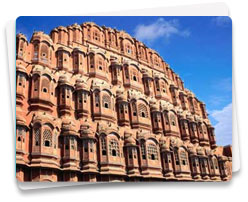
Hawa Mahal: Also called the "Palace of Winds" was built in 1799. It is an unusual five storeyed structure with a facade of extensive lattice- work in stone. Aristocratic Rajput women to look out at the bustling bazaar below while remaining unseen used it.
Amer Fort: It is one of the finest and the best preserved forts, having served as the royal capital for seven long years before the city of Jaipur was built. It has a complex of several palaces, meeting halls, pavilions, gardens and temples. The Fort was built in the later half of the 10th century by Raja Man Singh.
- Distance Chart
- Weather Update
- Currency Converter
- Airlines Timetable
- Wellness and Spas
- Best Time to visit
- Indian Tourist Destinations
- Garden of Five Senses
- Qutab Minar
- Rashtrapati Bhavan
- Photo Gallery
- Screen Savers
- -->Film Shooting Facilitation -->
About DTTDC | Tourism | Travel Bureau | Transport | Catering | DITTM | Infrastructure & Engineering | Liquor | Tender | RTI | e-SLA | Labour Compliance | Employee Corner | Disclaimer | Website Policy | Contact us | Sitemap | Archives Copyright © Delhi Tourism, All Rights Reserved.

Company Information
- 24 Hrs Helpline
- Recommended on Tripadvisor
Golden Triangle Tour
- Golden Triangle Tour Plus
- Rajasthan Holidays
- Rajasthan Train Tours
- The Taj Mahal
- Fair & Festivals in Rajasthan
- What People Say
Tourist Information
- About Delhi
- Tourist Attraction in Delhi
- Tourist Attraction in Agra
- About Jaipur
- Tourist Attraction in Jaipur
SAME DAY TRIP TO AGRA
By car - us$ 105 per person, by train - us$ 100 per person, golden triangle tour extensions.
- Golden Triangle Tour Extensions
- With Varanasi
- With Puskkar & Udaipur
- With Orchha & Khajuraho
- With Bharatpur & Sariska
- With Haridwar & Rishikesh
- With Golden Temple Amritsar
- With Mata Vaishnodevi
- With Kashmir
- With Shimla Manali
- With Ranthambhore Taj and Tiger Tour
- with Kerla-the Gods Own Country
- With Goa & Mumbai
- With Bangalore, Mysore & Ooty
- With Tirupati & Puttaparthy
RAJASTHAN HOLIDAYS
- Grand Rajasthan Tour
- The Desert Magic Tour
- Colourful Rajasthan Tour
- Magnificent Rajasthan Tour
- Rajasthan Fort & Palaces Tour
- Fascinating Rajasthan Tour
- Rajasthan Cultural Tour
- Rajasthan Village Tour
Golden Triangle Tour with Taj Group of Hotels
Golden triangle tour with the oberoi group of hotels, golden triangle tour with ranthambore & udaipur with the oberoi group of hotels, rajasthan train tours.
- Palace on wheels Tour
- The Maharajas Express Train Tour
- Golden Triangle Tour by Train
OFFERS ON CAR COACH RENTAL AND FLIGHTS
- Special Group Tours
- Suggest this site
- Car Coach Rental
THE TAJ MAHAL INFORMATION
- Architecture
- World Heritage Site
- Taj-Mahal Photo Gallery
FAIR & FESTIVALS IN RAJASTHAN
- Fair & Festivals in Rajasthan
- The Pushkar Fair
- The Camel Fair Bikaner
- Elephant Festival Jaipur
TERMS OF SERVICES & PRIVACY POLICY
- Terms of Services
- Privacy Policy
- Cancellation & Refund Policy
- G-09, Ashoka Pahari, Near JVSD Girls School, Karol Bagh, New Delhi-110005, INDIA
- Phone: +91-9811337375
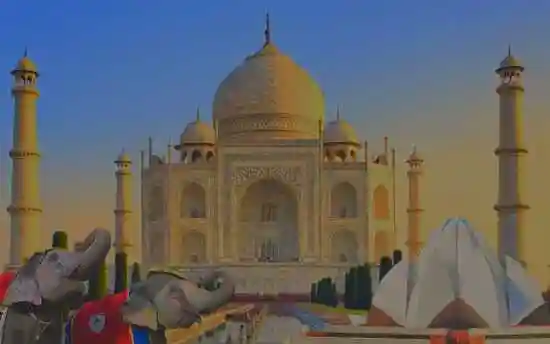
The Golden Triangle of north India is one of the most popular and well-received tourist circuits of the country. The tour basically covers three of the most vibrant, beautiful amazing cities of India.
About Golden Triangle Tour
Golden Triangle Tour Golden Triangle Tour Plus Rajasthan Holidays Rajasthan Train Tours The Taj Mahal Fair & Festivals in Rajasthan What People Say
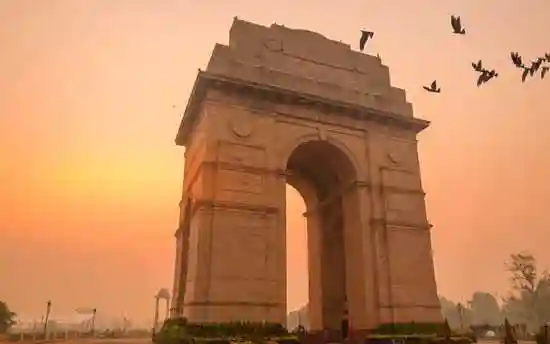
Reflecting the many colors and flavors of India’s eclectic composition, contemporary Delhi is one where you will be inspired, amazed, fascinated and impressed at every corner.
Tourist Information about Delhi
About Delhi Tourist Attraction in Delhi
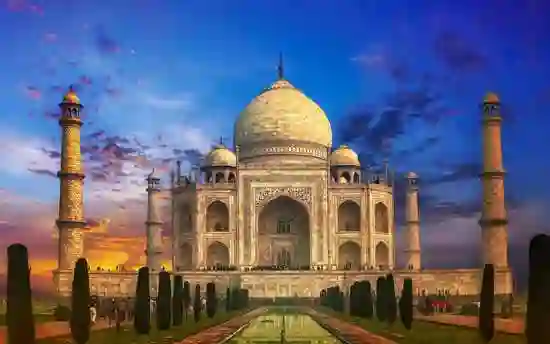
The city of Agra is said to have been founded by Raja Badal Singh in 1475. The Hindu epic 'Mahabharat' makes a reference to the 'Agraban' that supposedly made up part of Brij Bhumi.
Tourist Information about Agra
About Agra Tourist Attraction in Agra
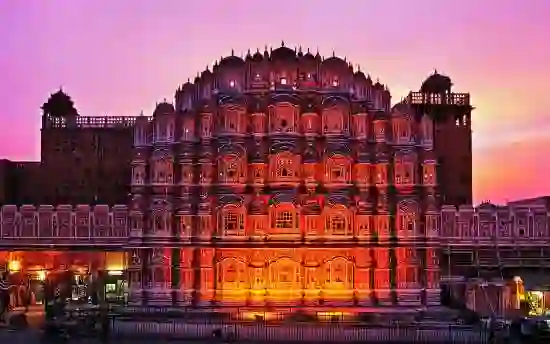
Situated against the backdrop of the rugged Aravalli hills of Rajasthan, the city of Jaipur is one of the most popular tourist attractions in the country. Jaipur, literally means ‘The City of Victory’.
Tourist Information about Jaipur
About Jaipur Tourist Attraction in Jaipur
By car - us$ 105 per person by train - us$ 100 per person, golden triangle tour extensions with varanasi with puskkar & udaipur with orchha & khajuraho with bharatpur & sariska with haridwar & rishikesh with golden temple amritsar with mata vaishnodevi with kashmir with shimla manali with ranthambhore taj and tiger tour with kerla-the gods own country with goa & mumbai with bangalore, mysore & ooty with tirupati & puttaparthy, rajasthan holidays grand rajasthan tour the desert magic tour colourful rajasthan tour magnificent rajasthan tour rajasthan fort & palaces tour fascinating rajasthan tour rajasthan cultural tour rajasthan village tour golden triangle tour with taj group of hotels golden triangle tour with the oberoi group of hotels golden triangle tour with ranthambore & udaipur with the oberoi group of hotels, rajasthan train tours palace on wheels tour the maharajas express train tour golden triangle tour by train.
OFFERS ON CAR COACH RENTAL
Hot Deals Special Group Tours Suggest this site Car Coach Rental
The taj mahal history architecture taj museum world heritage site taj-mahal photo gallery.
FAIR & FESTIVALS IN RAJASTHAN
Fair & Festivals in Rajasthan The Pushkar Fair The Camel Fair Bikaner Elephant Festival Jaipur
CONTACT & PAYMENT INFO
24 Hrs Helpline How to Pay Contact Us Recommended on Tripadvisor Sitemap
TOS & PRIVACY POLICY
Terms of Services Privacy Policy Cancellation & Refund Policy
Golden triangle tour india.
Golden Triangle Tour Itinerary comprising the three famous cities of India - Delhi, Agra and Jaipur having grandeur, glory & history. Golden Triangle Tour is a tour where you will Explore India In Style. When Ready to visit India? Get ready for the Golden Triangle Tour and Start Your Trip With Golden Triangle Tour and explore The Ultimate Golden Triangle Tour.
Welcome to Golden Triangle Tour India
Dear Clients, if you are planning to visit India for the first time, there is no better option than the Golden Triangle Tour - Covering Delhi, Agra and Jaipur. Golden Triangle Tour is the most popular tourist circuit in India. This incredible Golden Triangle Tour Itinerary comprising the three famous cities of India-Delhi, Agra and Jaipur having grandeur, glory & history.
Delhi - The political capital of India
Finding its genesis in the great Indian epic the Mahabharata, as Indraprastha, Capital of the Pandava princes, today the city has transformed itself into a new incarnation. Reflecting the many colors and flavors of India's eclectic composition, contemporary Delhi is one where you will be inspired, amazed, fascinated and impressed at every corner. The India Gate, Red Fort, Jam Masjid, Chandni Chowk, Kutub Minar, Jantar-Mantar, Laxmi Narayan Temple, Akshardham Temple, Bahai Temple and many more are worth seeing in Delhi. The city is the perfect mix of the old and the new. From the colonial pillars of Connaught Place to the lanes of Chandni Chowk and the malls of South Extension, you will find discover a whole range of experiences here. Delhi is also a paradise for shopping, eating and sight-seeing.
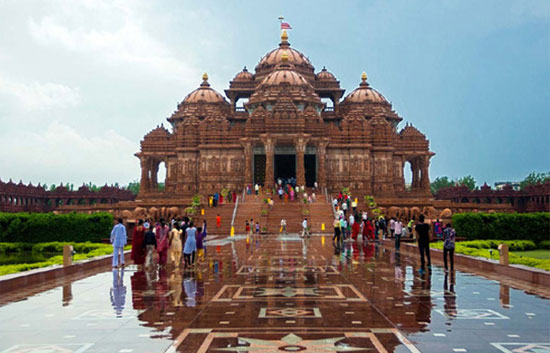
Agra- City on the banks of Yamuna River
It achieved fame as the capital of the Mughal emperors from 1526 to 1658 and remains a major tourist destination because of its many splendid Mughal-era buildings, most notably the Taj Mahal, Agra Fort and Fatehpur Sikri, all three of which are UNESCO World Heritage Sites.
Every Tourist of the world must visit the Taj Mahal at least once.
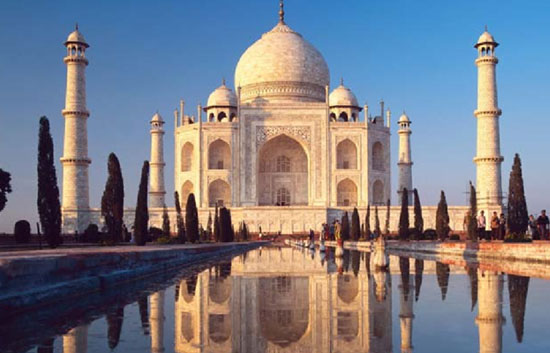
Jaipur - The picturesque capital of Rajasthan
Jaipur was first planned city in India, beautifully laid out gardens and parks, attractive monuments and marvelous heritage hotels, which were once the residence of Maharajas, are worthy of admiration. Visit to Amber fort, City Palace, Jantar-Mantar, Hawa Mahal, the ambling camels and cheerful people in multi-hued costumes will make your trip to the pink city a memorable one.
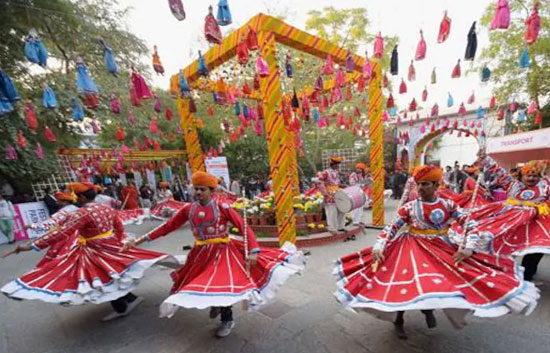
Customized Golden Triangle Tours with extensions
Choose our well compiled and customized golden triangle tours and Experience the DIFFERENCE. Combine it with any one of the below extensions and DISCOVER some of the many faces of INCREDIBLE INDIA!!!

- Golden Triangle Tour - 5 Nights 6 Days
- Destinations Covered: Delhi-Agra-Jaipur-Delhi
Tour Program
- Arrive Delhi (Day 01)
- City Tour of Delhi (Day 02)
- Delhi to Agra (Day 03)
- Agra to Jaipur (Day 04)
- Jaipur City Tour (Day 05)
- Jaipur to Delhi (Day 06)
- Click for detailed itinerary
- Click for Individual Private Tour
- Fixed Departure Group Tour
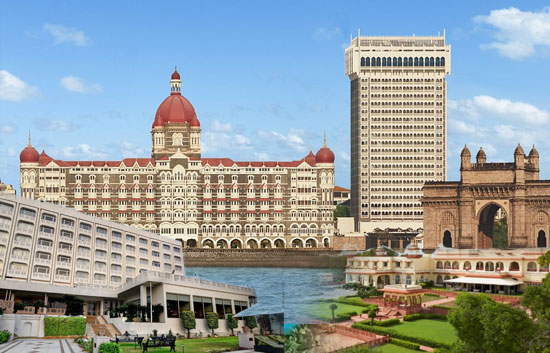
- Delhi to Agra at Hotel Taj View Agra (Day 03)
- Jaipur to Delhi for Onward Journey (Day 06)
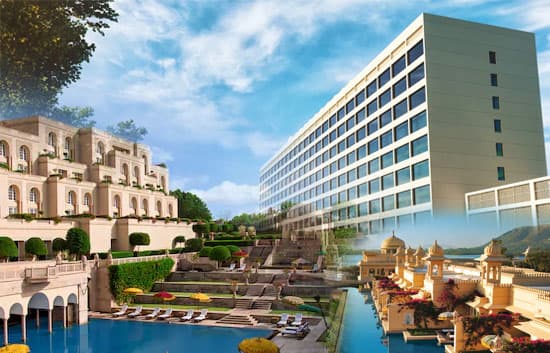
- Golden Triangle Tour - 6 Nights 7 Days
- Delhi City Tour (Day 02)
- Visit Grand Akshardham Temple & Transfer to Agra (Day 03)
- Visit Taj Mahal at Sunrise & Agra Fort (Day 04)
- Agra to Jaipur via Fatehpur Sikri & Chand Baori (Day 05)
- Jaipur City Tour (Day 06)
- Jaipur to Delhi & Transfer to Airport (Day 07)
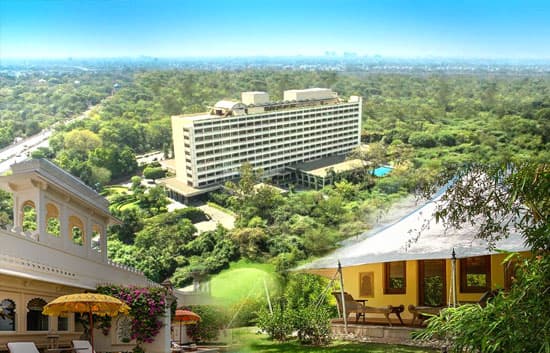
- Golden Triangle Tour - 8 Nights 9 Days
- Destinations Covered: Delhi-Agra-Ranthambore-Jaipur-Pushkar-Udaipur-Delhi
- Visit Taj Mahal at Sunrise & Agra Fort and Transfer to Ranthambore via Fatehpur Sikri & Chand Baori (Day 04)
- Morning Tiger Safari & Transfer to Jaipur (Day 05)
- Jaipur-Pushkar-Udaipur (Day 07)
- Udaipur City Tour (Day 08)
- Udaipur to Delhi by Flight (Day 09)
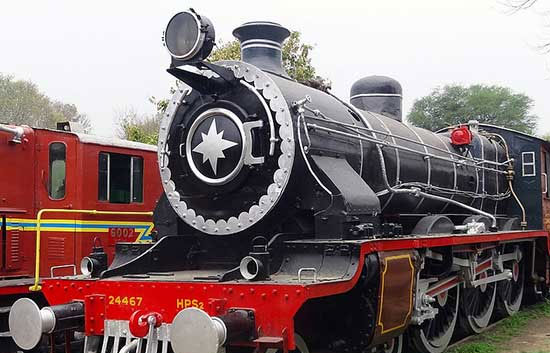
- Destinations Covered: Delhi-Agra-Jaipur-Ajmer-Delhi
- Delhi to Agra by Shatabdi Express Train (Day 02)
- Agra to Fatehpur Sikri & Evening Train to Jaipur (Day 03)
- Jaipur City Tour (Day 04)
- Jaipur to Ajmer to Delhi by Train (Day 05)
- City Tour of Delhi & transfer to Airport for your onward Journey (Day 06)
This day trip from Delhi is the hassle-free and comfortable way to visit Agra's Taj Mahal.
- Same Day Trip to Agra to Visit Taj Mahal by Car
- Click for detailed Itinerary Agra By Car - US$ 105 Per Person
- Same Day Trip to Agra to Visit Taj Mahal by Train
- Click for detailed Itinerary Agra By Train - US$ 100 Per Person
GOLDEN TRIANGLE TOUR
THE TAJ MAHAL
Address & contact info.
Golden Triangle Tour India® Pvt. Ltd., G-09, Ashoka Pahari, Near JVSD Girls School, Faiz Road, Karol Bagh, New Delhi-110 005, INDIA. 24 Hrs Mobile No.: +91-9811337375
24x7 Phone: +91-9811337375
GREAT DEALS
- SPECIAL GROUP TOURS
- SUGGEST THIS SITE
- CAR COACH RENTAL
SUPPORT & HELP
- 24 HRS HELPLINE
- TERMS OF SERVICES
- PRIVACY POLICY
- CANCELLATION & REFUND POLICY
Follow with us
Join our Social Pages for Great Deals and Exciting Offers on your favourite Social Apps
Payment Methods

Copyrights © 2024 Golden Triangle Tour ® India Private Limited. All Rights Reserved.
Website Development by Web Design India & Hosted by Web Hosting India
Jaisalmer is the gateway to the Thar Desert, which offers camping in Jaisalmer. The Exotic Luxury Camp is the best Jaisalmer Desert Camp in the Sam Sand Dunes, which offers the best places to visit in Jaisalmer.
- Golden Triangle
Golden Triangle Tour India
Are you planning to travel to India? But the vastness of the country and tiring itineraries is turning you off; then worry not, the unique “ Golden Triangle Tour Packages ” from Travelogy India not make your holiday amusing and exhilarating but give you a chance to witness the true captivating art, culture and heritage of India!!!!!
First choice for international travellers, relevantly called “ Golden Triangle ”, consists three most beautiful and charming places of India - Delhi , Agra and Jaipur . Starting from Delhi, this tour will not take you some of the important landmarks and places of interest like Humayun’s Tomb, Qutub Minar, Red Fort, Agra Fort, Fatehpur Sikri, Taj Mahal , Jantar Mantar, Amer Fort, City Palace, and Jai Mahal Palace and among others. But this is one of the best ways to taste the significance of rich heritage and culture like never before.
If you think that’s it, so wrong, here to gives the tourists a feel of perfection in every aspect, Travelogy India clubbed this Golden Triangle Tour with many splendid places of India like Amritsar, Goa , Kerala, Varanasi , Himachal, Khajuraho and many more. Then still what are you thinking, set forth on any Golden Triangle Tour & nearby Destination Packages listed below and enjoy a rich holiday experience in India . If you still haven’t found the right tour that you were looking for, email us or talk to our dedicated tour consultants who will be happy to tailor-make one for you.
19 Itinerary Found Select Destination Jaipur Udaipur Mandawa Pushkar Sawai Madhopur Ranthambore Bikaner Jaisalmer Jodhpur Kota Bharatpur Bundi Kathmandu Chittorgarh Alleppey Cochin Kumarakom Trivandrum Ajmer Rishikesh Ranthambore Manali Haridwar Shimla Amritsar Ranakpur
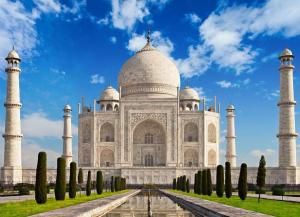
5 Days - Golden Triangle Holiday Package
Delhi - Jaipur - Agra - Delhi
- Visit Qutub Minar, Red Fort, Lotus Temple at Delhi
- Indulge with Shopping at Chandni Chowk Market
- Explore Amber Fort, Jaigarh Fort, Hawa Mahal in Jaipur
- Visit Fatehpur Sikri enroute to Jaipur
- Visit the wonderful Taj Mahal at Agra
- Explore Agra Fort, Tomb of Akbar and Jama Masjid in Agra
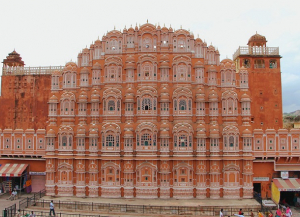
6 Days - Golden Triangle with Heritage Tour
- Explore History of Delhi - Red Fort, Qutub Minar
- Enjoy rikshaw ride in Old Delhi
- Witness the World Famous Taj Mahal
- Enjoy tonga ride in Agra
- Explore the ruined city Fatehpur Sikri
- Visit City Palace, Amber Fort in Jaipur
- Enjoy the elephant ride at Jaipur
- Stroll the markets of Jaipur
- Chance to visit Chokhi Dhani - a cultural village in Jaipur
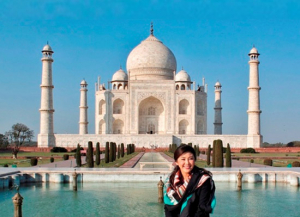
6 Days - Golden Triangle Tour by Train
- Explore the famous tourist destination of India
- Enjoy the train journey from Delhi to Jaipur
- Enjoy the train journey from Agra to Delhi
- Traditional Heena art session for female traveller in Jaipur
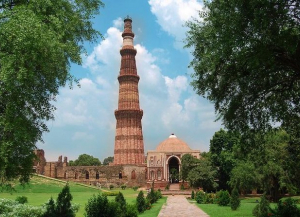
7 Days - Private Golden Triangle Tour (Delhi Agra Jaipur Tour)
Delhi - Agra - Jaipur - Delhi
- Sightseeing tour of Old & New Delhi like Raj Ghat, Jama Masjid, & Qutub Minar
- Explore historic structures of Agra like Taj Mahal, Agra Fort
- Discover history of Fatehpur Sikri
- Exploring the various bazaars of Delhi for shopping
- Enjoy the city of Jaipur like Hawa Mahal, Amber Fort, City Palace, Jantar Mantar
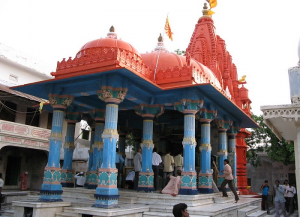
8 Days - Golden Triangle with Pushkar Tour
Delhi - Agra - Jaipur - Pushkar - Ajmer - Delhi
- Explore Chandni Chowk, Lotus Temple, Red Fort, Qutub Minar in Delhi
- Enjoy the rikshaw ride in Old Delhi
- Visit wonderful Taj Mahal and Agra Fort
- Enjoy the tonga ride in Agra
- Enjoy the Elephant Ride at Amber Fort
- Enjoy the camel ride in Pushkar
- Visit the popular pilgrimage Khwaja Sahib Dargah at Ajmer
- Enjoy train journey from Ajmer to Delhi
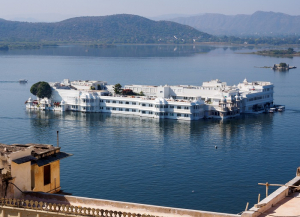
8 Days - Golden Triangle with Udaipur Tour
Delhi - Agra - Fatehpur Sikri - Jaipur - Udaipur - Pushkar - Delhi
- Visit Red Fort, Lotus Temple, Rajghat and Chandni Chowk - Delhi
- Witness the beautiful Taj Mahal at Sunrise
- Explore the ruined Mughal Dynasty at Fatehpur Sikri
- Visit Palace of Winds, Jantar Mantar, City Palace Museum - Jaipur
- Enjoy the traditional folk dance of Rajasthan in Udaipur
- Visit sacred Brahma Temple at Pushkar dedicated to Lord Brahma
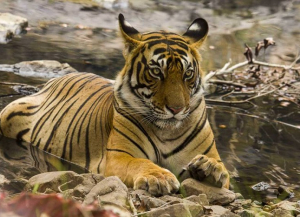
8 Days - Golden Triangle with Ranthambore Tour
Delhi - Ranthambore - Jaipur - Agra - Delhi
- Experience the train journey from Delhi to Ranthambore
- Enjoy Jeep Safari at Ranthambore Tiger Reserve
- Enjoy Shopping at Popular Jaipur Markets
- Visit City Palace Jantar Mantar, Amber Fort in Jaipur
- Enjoy Elephant ride in Jaipur
- Excursion to Fatehpur Sikri, Buland Darwaza enroute Jaipur
- Mesmerize with the beauty of Taj Mahal
- Enjoy shopping at the Markets of Delhi
- Enjoy rickshaw ride in Old Delhi
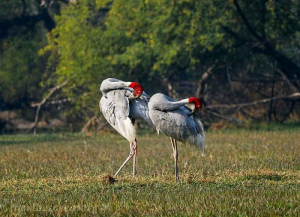
8 Days - Golden Triangle with Bharatpur Tours
Delhi - Agra - Fatehpur Sikri - Bharatpur - Ranthambore - Jaipur - Delhi
- Explore famous places of Delhi
- Visit Taj Mahal - One of the seven wonders of the World
- A guided trip to the Bharatpur Bird Sanctuary
- Witness the Royal Bengal Tigers at Ranthambore National Park
- Explore the Royal City Jaipur - Hawa Mahal, City Palace, Amber Fort
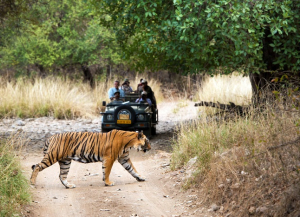
8 Days - Golden Triangle Tour with Ranthambore Wildlife
Delhi - Agra - Jaipur - Ranthambore National Park - Pushkar - Delhi
- Visit Qutub Minar, India Gate - Delhi
- Explore the beautiful Taj Mahal and Red Fort Agra
- Visit Fatehpur Sikri, Jama Masjid, Buland Darwaja enroute to Jaipur
- Enjoy Elephant Ride at Amber Fort, Jaipur
- Witness the World Famous Royal Bengal Tigers at Ranthambore
- Enjoy the thrilled jungle safari at Ranthambore National Park
- Visit UNESCO World heritage site of Ranthambore Fort
- Visit Brahma Temple and Pushkar Lake
- Experience the train journey from Ajmer to Delhi
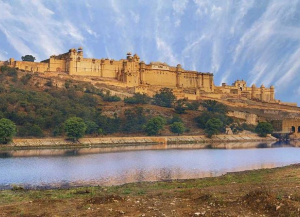
8 Days - Golden Triangle Tour India
Delhi - Agra - Fatehpur Sikri - Jaipur - Delhi
- Visit Qutub Minar, India Gate, Humayun's Tomb - Delhi
- See Akbar's Tomb at Sikandra enroute to Agra
- Enjoy the sunrise view of Taj Mahal
- Visit Agra Fort, Tomb of Itimad-Ud-Daulah - Agra
- Enroute Visit Fatehpur Sikri
- Enjoy elephant ride at Amber Fort - Jaipur
- Visit City Palace, Hawa Mahal, Jantar Mantar - Jaipur
Best Cafes in Delhi
Best gardens and parks in delhi, chor bazaar in delhi, delhi airport express metro line, how to spend 24 hours in delhi, itimad ud daulah, jama masjid, qutub minar, shopping malls in delhi, frequently asked questions, q. what is golden triangle of india.
Golden Triangle of India is a famous tourist circuit connecting three important cities geographically positioned in a triangle. The circuit starts in Delhi and ends in Jaipur, covering Agra.
Q. Which cities are known as Golden Triangle?
The three cities of Golden Triangle circuit are New Delhi, Jaipur and Agra.
Q. How Golden Triangle is important for tourist?
The circuit covers cultural, natural, and architectural beauties. The three destinations cover distinctive elements, providing a holistic introduction to the country.
Q. Is the Golden Triangle India worth seeing?
Yes, all first-time travelers to India choose Golden Triangle to experience the culture and beauty of the land. The circuit suits all types of travelers too, like honeymooners, family vacationers, solo travelers, and others.
Q. What is the golden triangle famous for?
The Golden Triangle of India is famous for historic monument sightseeing, natural exploration, cuisine tasting, cultural beauties, architectural exploration, and photography.
Q. What is desert triangle?
Desert triangle is the circuit route of Rajasthan covering Jodhpur, Bikaner, and Jaisalmer.
Q. Where is the Golden Triangle in India?
The Indian Golden Triangle is located in New Delhi, Agra (UP), and Jaipur (Rajasthan) .
Q. When should I visit the Golden Triangle of India?
Best time to visit Golden Triangle in India is during winter (October to February). March month is warm and pleasing; however, check the forecast before you plan a March visit to Golden Triangle of India.
Q. Best Time to visit in Golden Triangle
The best time to visit Golden Triangle is during winter, when the climate is warm and pleasing. Winter starts in October and ends in February. complete info
Q. How to Reach Golden Triangle of India
You can fly to India via Delhi international airport. From there, you can choose trains, buses, cabs, and other transportations to travel between the destinations. The most opted travel options are trains (for economic travelers), and cabs (for comfort travelers)
Q. Which is the best time to visit in Delhi, Agra, Jaipur?
The best time to visit Delhi , Agra, and Jaipur is October to February. After April, the temperature will be scorching, and monsoon (July to September) would be a hindrance for sightseeing.
Q. How long do you need to do the Golden Triangle?
You can cover the destinations within a weekend (two nights and three days), or, you can choose weeklong itinerary covering all the attractions in each destination.
- North India
- Uttarakhand
- South India
- Andhra Pradesh
- Central India
- North East India
- Arunachal Pradesh
- Other Destinations
- Jammu & Kashmir
- Andaman & Nicobar
- First Timers
- Family Holidays
- Himachal Pradesh
- Lakshadweep
- Jammu Kashmir
- Andaman Nicobar
- First Timer Tours
- Wildlife Tour
- Honeymoon Tours
- Heritage & Culture
- Adventure Tours
- Spa & Ayurveda
- Taj Mahal Tour
- Luxury Train
- Beaches Tours
- Hill Station Tours
- Pilgrimage Tours
- Chardham Yatra
Luxury Trains
- Palace on Wheels
- Maharajas' Express
- Deccan Odyssey
- Golden Chariot
- 1 to 5 Days
- 6 to 10 Days
- 11 to 15 Days
- 16 to 20 Days
Help Center


Passing Thru Travel
Exploring India’s Golden Triangle – Delhi, Agra, and Jaipur
Posted: March 25, 2024 | Last updated: March 25, 2024
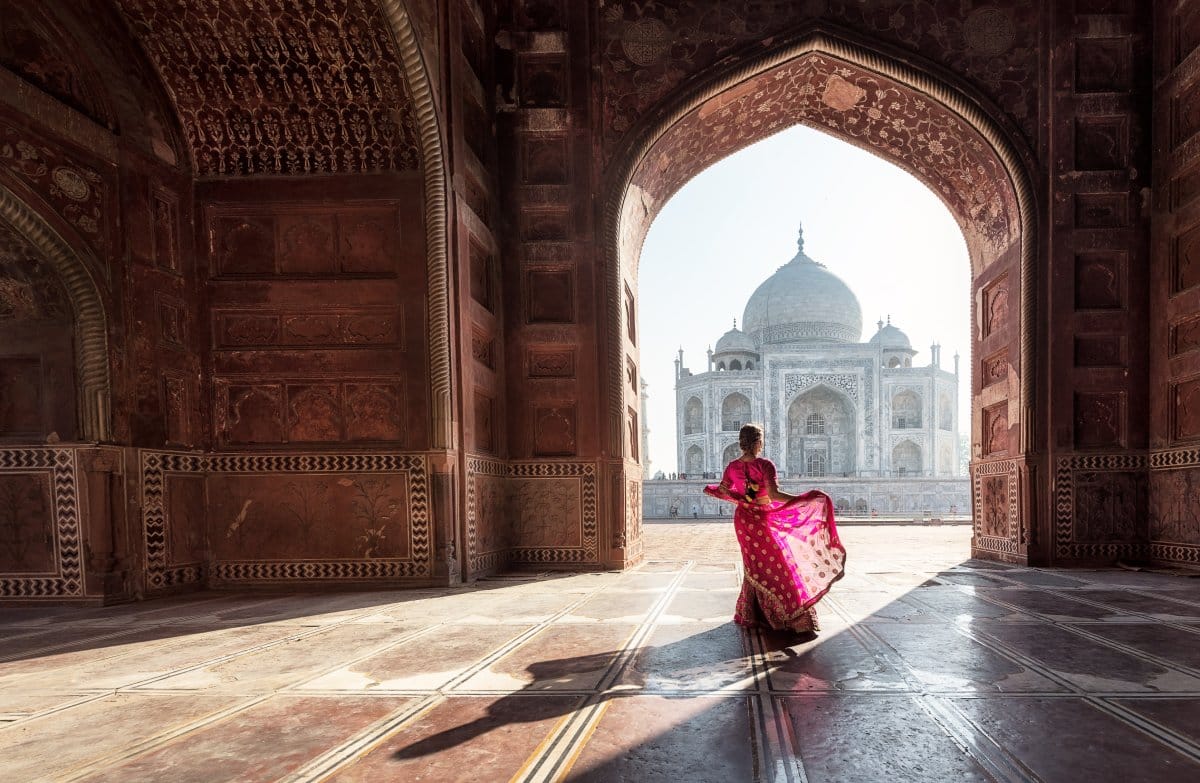
The Golden Triangle, encompassing Delhi, Agra, and Jaipur, offers an incredible journey through India’s rich history, vibrant culture, and breathtaking architecture. This iconic route explores the heart of India, providing a glimpse into the country’s royal past, colonial history, and architectural wonders. The journey through these three cities is akin to a passage through time, where each destination boasts its unique magic, from ancient forts and palaces to bustling bazaars and serene temples.

1. Delhi – The Capital’s Contrast
Image Credit: Shutterstock / Don Mammoser
Delhi, India’s capital, is where ancient history and modernity blend seamlessly. The city is divided into two parts: Old Delhi, a labyrinth of narrow lanes, age-old mosques, and bustling markets; and New Delhi, the imperial city created by the British Raj, characterized by wide boulevards, stately government buildings, and verdant gardens.
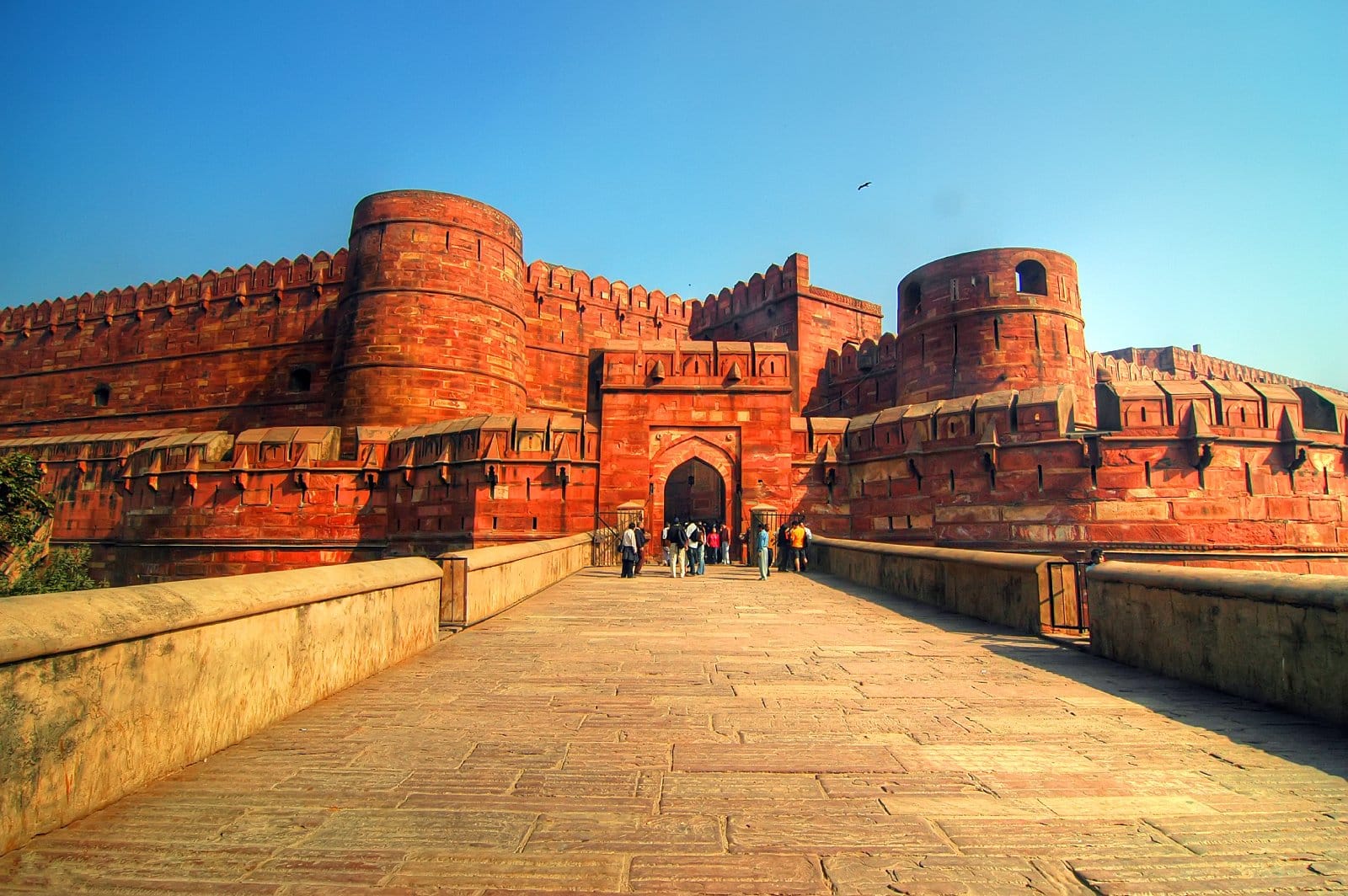
2. Agra – The City of Love
Image Credit: Shutterstock / Krishna.Wu
Agra is synonymous with the Taj Mahal, an eternal symbol of love. This UNESCO World Heritage site, built by Emperor Shah Jahan in memory of his wife, Mumtaz Mahal, attracts millions of visitors annually. Beyond the Taj, Agra Fort, and Fatehpur Sikri are profound examples of the Mughal Empire’s architectural brilliance. Agra’s rich craft tradition, including marble inlay work and leather goods, offers unique souvenirs.
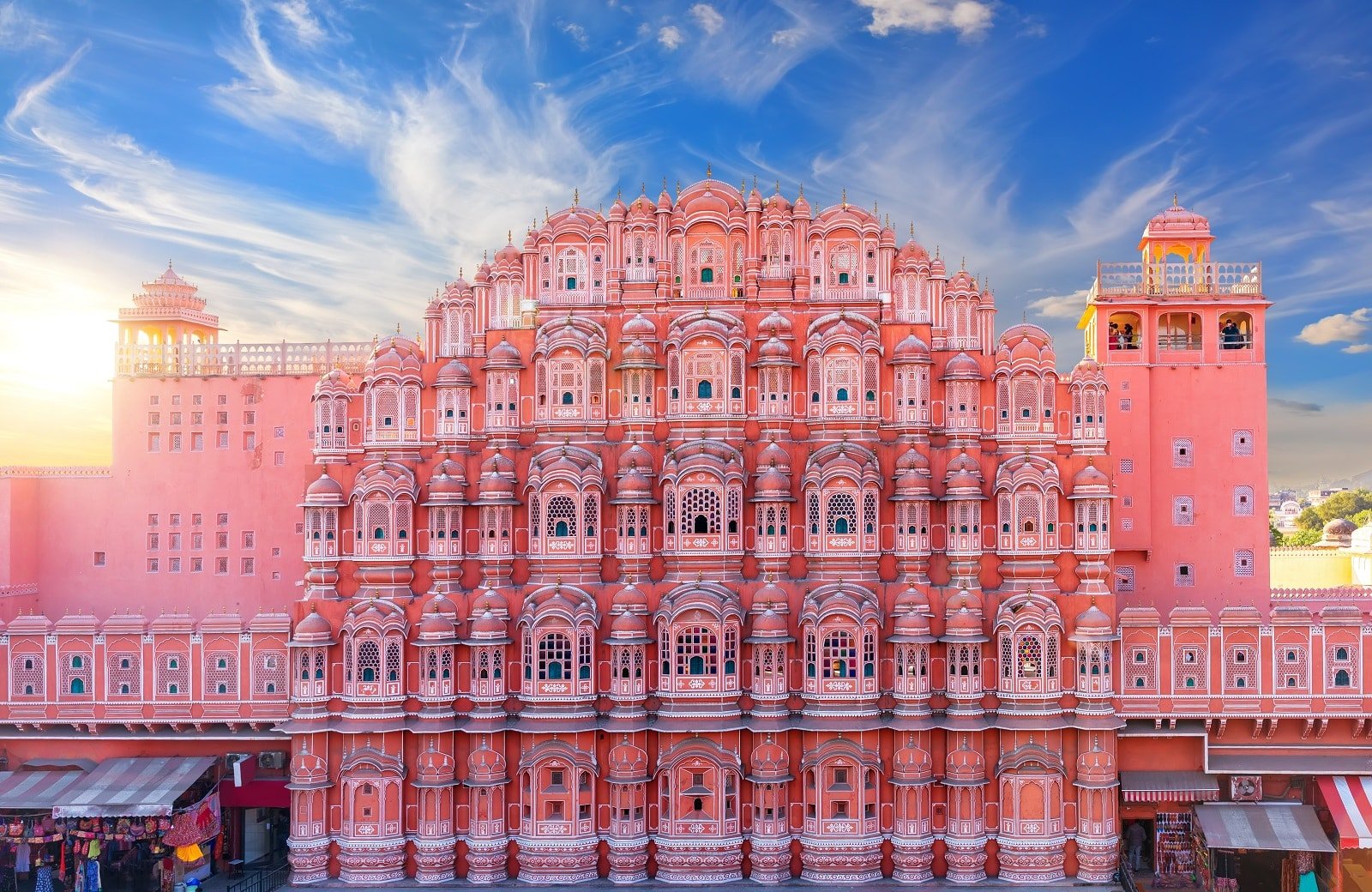
3. Jaipur – The Pink City
Image Credit: Shutterstock / AlexAnton
Jaipur, the vibrant capital of Rajasthan, is famed for its rich Rajput history, stunning forts, and splendid palaces. The city’s plan, based on Indian Vastu Shastra, features the City Palace, Amber Fort, Hawa Mahal, and Jantar Mantar, reflecting a blend of Rajput and Mughal architecture. Jaipur is also a shopper’s paradise, known for its gems, jewelry, textiles, and handicrafts.
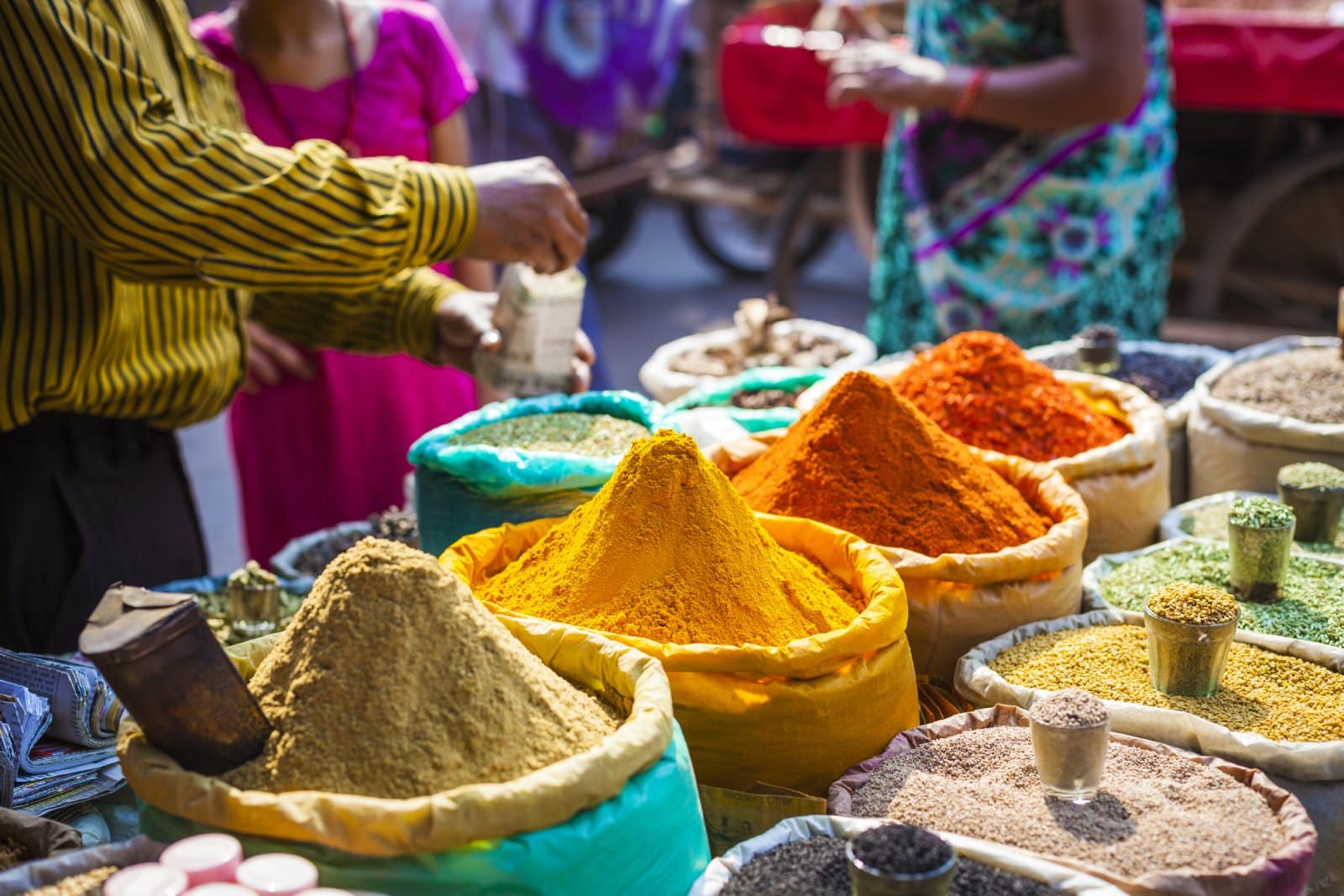
4. Exploring the Markets of Delhi
Image Credit: Shutterstock / Curioso.Photography
Delhi’s markets are a vibrant example of India’s diverse culture, offering everything from luxurious silk fabrics to handcrafted artifacts. Chandni Chowk, one of the oldest and busiest markets in Old Delhi, provides a sensory overload with its narrow lanes filled with the scent of spices and colorful textiles. For a more upscale shopping experience, Khan Market offers branded boutiques, excellent bookshops, and some of Delhi’s best cafes and restaurants.
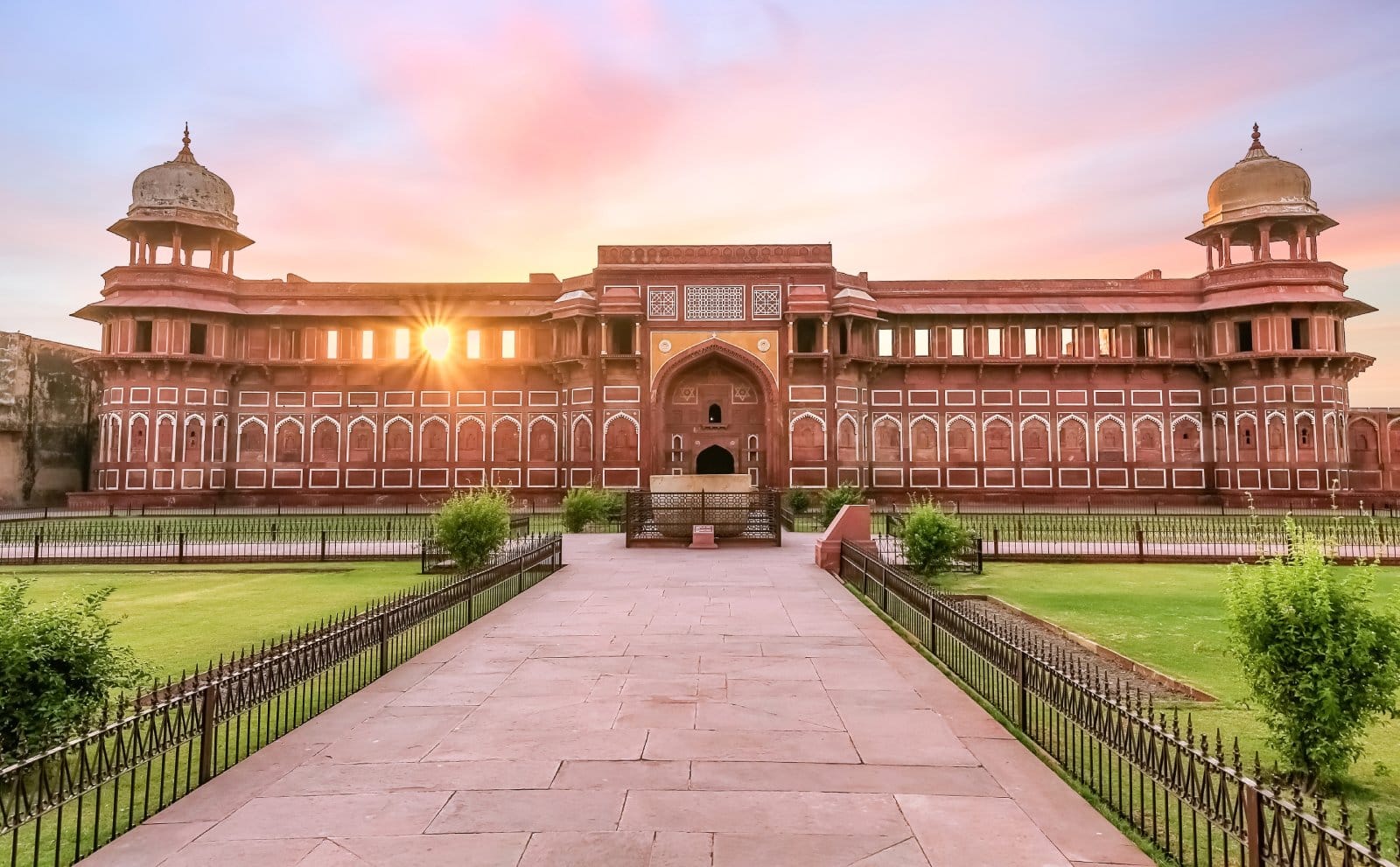
5. Agra’s Mughal Heritage
Image Credit: Shutterstock / Roop_Dey
While the Taj Mahal is Agra’s crown jewel, the city’s Mughal heritage offers much more to explore. The Agra Fort, a UNESCO World Heritage Site, is a red sandstone fortress that served as the residence of the emperors of the Mughal Dynasty. It houses several exquisite buildings, such as the Jahangir Palace and the Khas Mahal. Akbar’s Tomb in Sikandra offers a serene and less crowded historical site, showcasing the architectural brilliance of Mughal art and design.
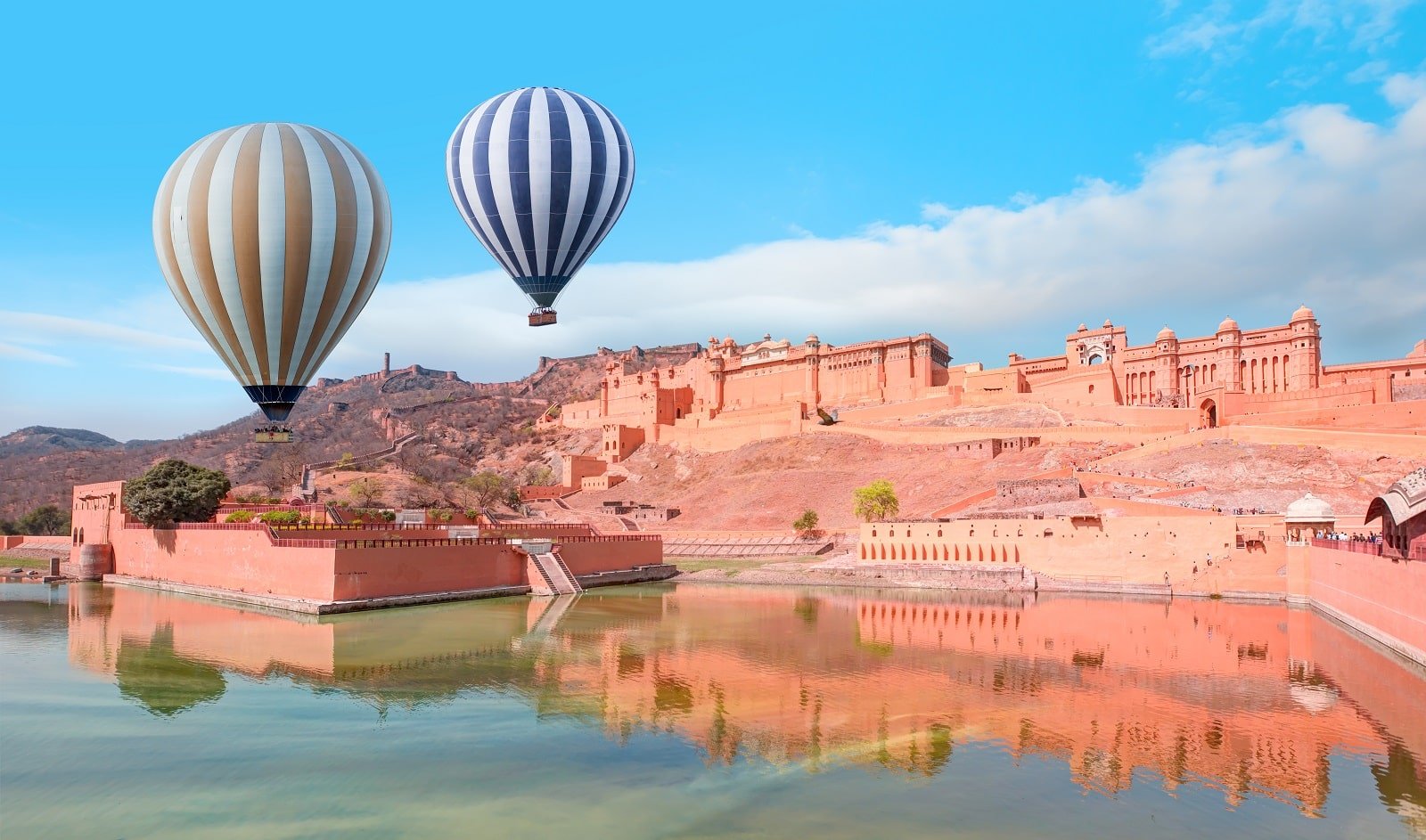
6. Jaipur’s Amer Fort and Hawa Mahal
Image Credit: Shutterstock / muratart
Jaipur, the Pink City, is famed for its rich architectural heritage, with the Amer Fort and Hawa Mahal as iconic landmarks. Amer Fort, located on a hilltop, offers breathtaking views and a glimpse into the lavish lifestyle of the Rajput Maharajas. The fort’s Sheesh Mahal, or Mirror Palace, is a stunning example of artistic craftsmanship. Hawa Mahal, or the Palace of Winds, is known for its unique facade featuring 953 small windows, designed to allow royal ladies to observe street festivals while remaining unseen.
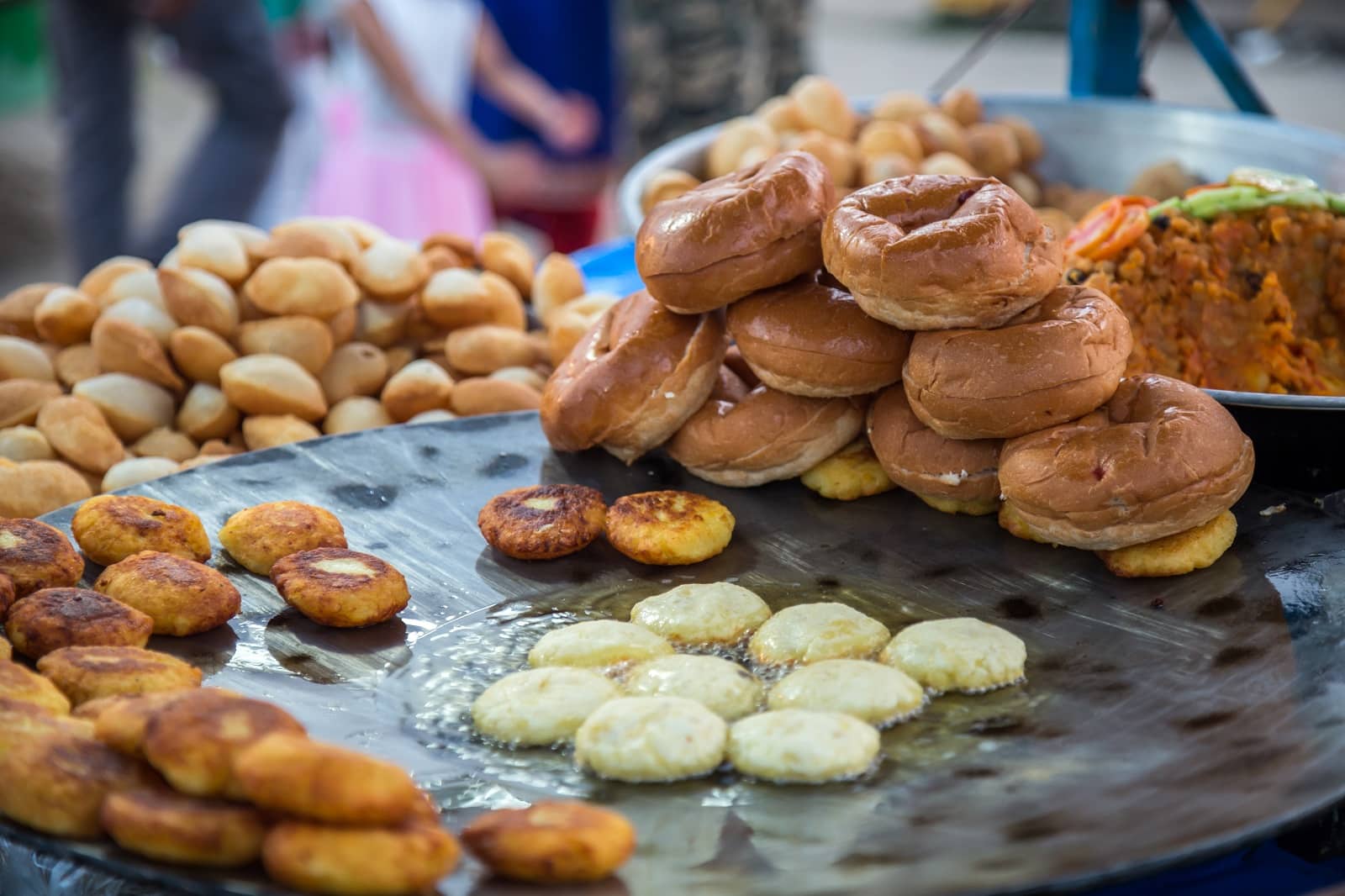
7. Culinary Delights of the Golden Triangle
Image Credit: Shutterstock / greenaperture
The Golden Triangle offers a culinary journey through India’s rich flavors and spices. Delhi’s street food, Agra’s Mughlai cuisine, and Jaipur’s Rajasthani dishes provide a feast for the senses. In Delhi, savor the chaat at Connaught Place or the kebabs in Old Delhi. Agra is famous for its petha, a sweet made from pumpkin, and savory kormas.
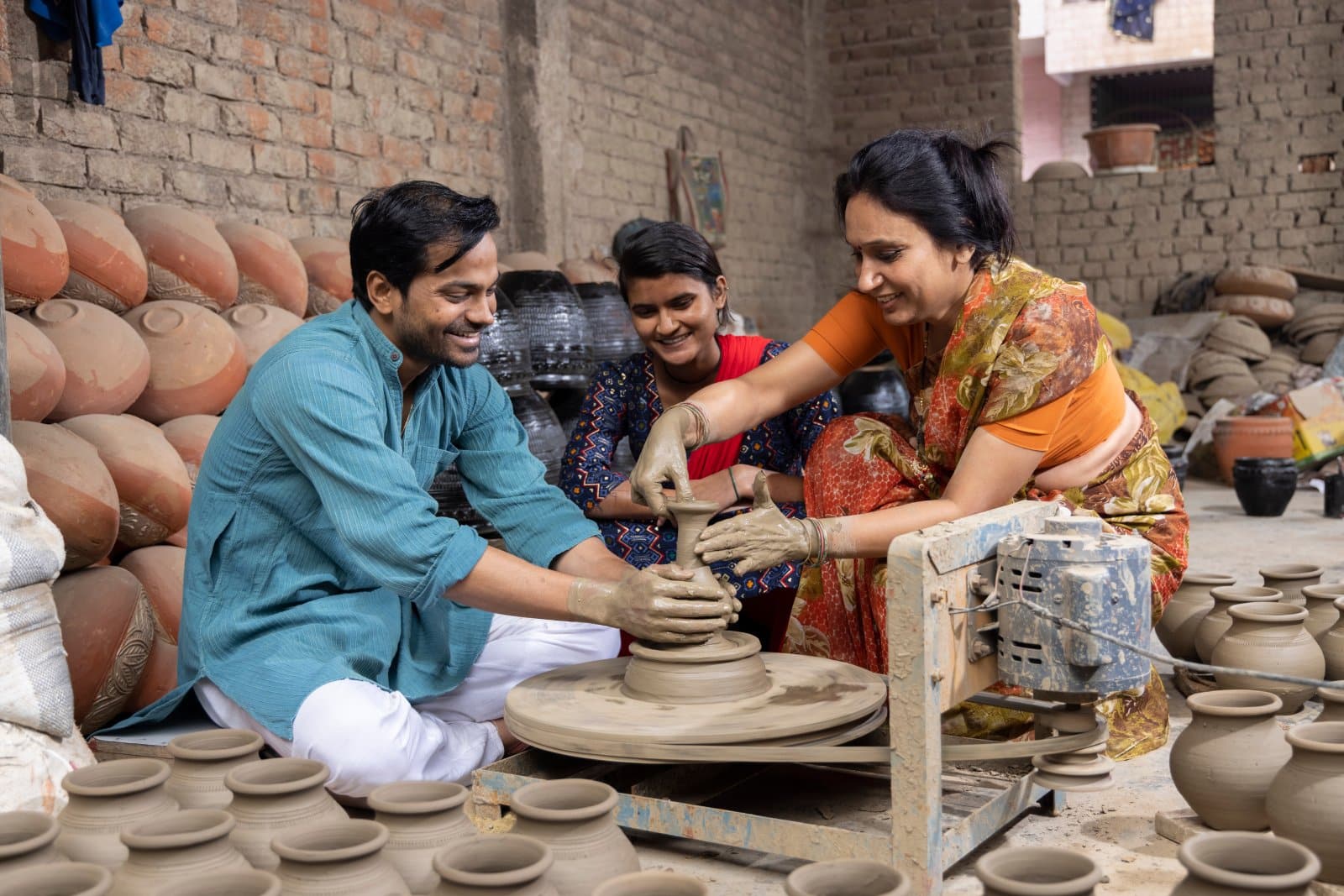
8. Art and Craft Workshops
Image Credit: Shutterstock / IndianFaces
Participating in art and craft workshops across the Golden Triangle offers an immersive experience into India’s artistic traditions. Delhi’s craft museums and studios offer workshops in pottery and textile arts. Agra is renowned for its marble inlay work, with workshops allowing visitors to try their hand at this intricate craft. Jaipur’s tie-dye and block printing workshops provide insight into traditional Rajasthani textile designs, offering a hands-on experience in creating your own fabric designs.

9. Exploring the Markets of Jaipur
Jaipur, known as the Pink City, is famous for its historic forts and palaces and its vibrant markets. These bazaars are alive with a riot of colors, offering everything from traditional Rajasthani jewelry and textiles to various handicrafts. The Johari Bazaar is renowned for its exquisite gemstones and jewelry, while the Bapu Bazaar is the go-to place for Rajasthani juttis (traditional leather shoes), scarves, and textiles.
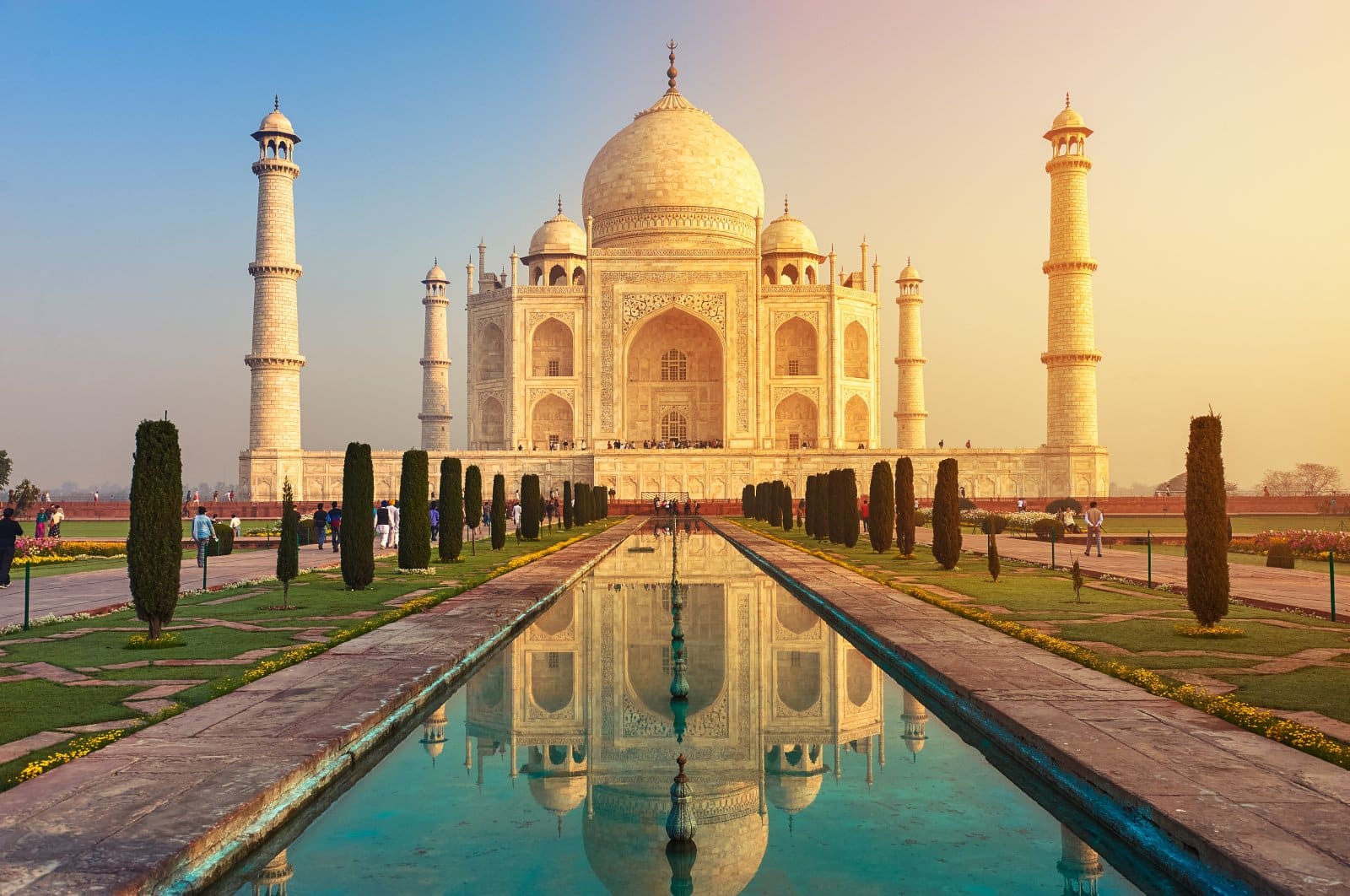
10. Sunrise at the Taj Mahal, Agra
Image Credit: Shutterstock / YURY TARANIK
The Taj Mahal, is one of the Seven Wonders of the World, offers a breathtaking sight not to be missed — the sunrise view. Witnessing the first rays of the sun illuminate the white marble mausoleum is a magical experience. The early morning light bathes the Taj Mahal in a soft, golden hue, highlighting its intricate craftsmanship and majestic beauty. This time of day is perfect for photography and allows for a more serene experience, away from the crowds that gather as the day progresses.
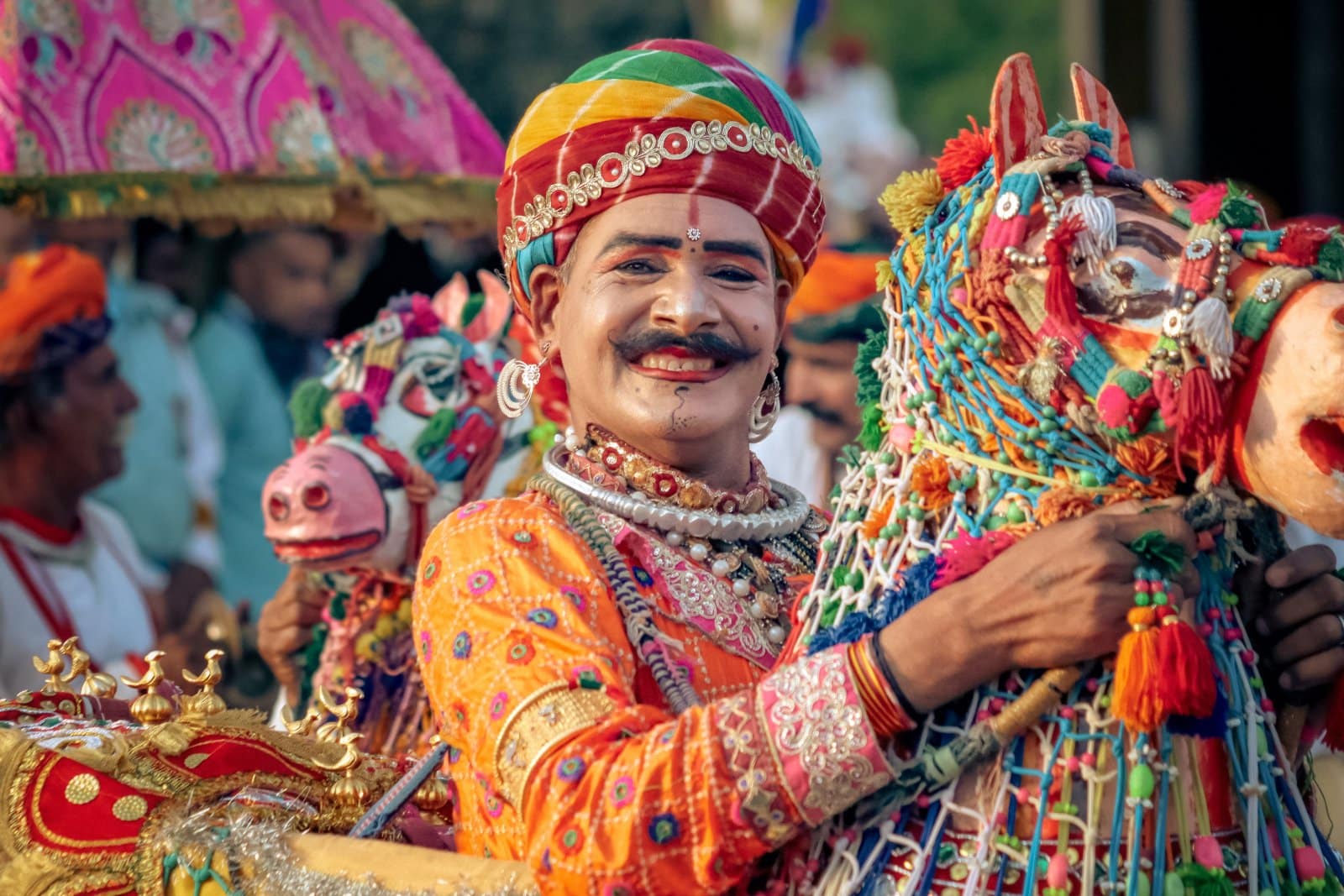
11. Folk Culture of Rajasthan in Jaipur
Image Credit: Shutterstock / Sunil lodhwal
Jaipur is not only famous for its historic architecture but also for its rich folk culture. Experiencing a traditional Rajasthani cultural performance is a must-do when visiting Jaipur. These performances include folk music, dance, and puppet shows that tell tales of heroism, love, and the everyday life of Rajasthan’s people. The colorful costumes, lively music, and graceful dance moves of the performers make for an unforgettable evening.

12. The Stepwells of Rajasthan Near Jaipur
Image Credit: Shutterstock / PhilipYb Studio
The stepwells of Rajasthan, known as ‘baoris,’ are ancient water storage systems that are architectural marvels in their own right. Near Jaipur, the Chand Baori in Abhaneri is one of the world’s largest and most beautiful stepwells, dating back to the 9th century. This stepwell features 3,500 narrow steps descending 20 meters to the water’s surface, arranged in perfect symmetry.
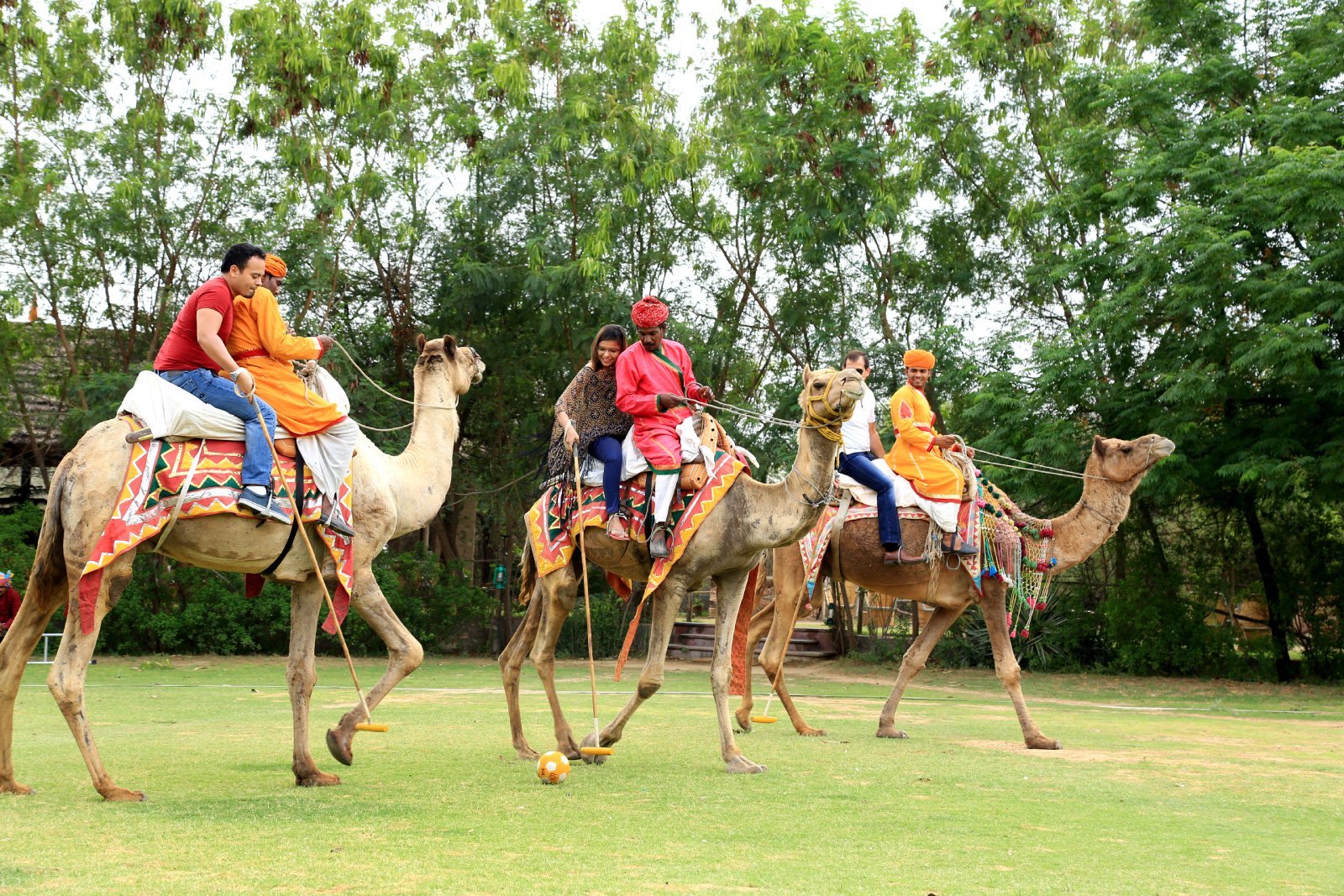
13. Polo Match in Jaipur
Image Credit: Shutterstock / Mukesh Kumar Jwala
Polo, the sport of kings, has a long and illustrious history in Jaipur, with the city being one of India’s traditional polo centers. Attending a polo match in Jaipur offers a glimpse into the regal sport and the opportunity to witness the thrilling action up close. The experience of watching skilled horsemen in traditional attire competing on the field is exhilarating and offers insight into the aristocratic heritage of Jaipur.
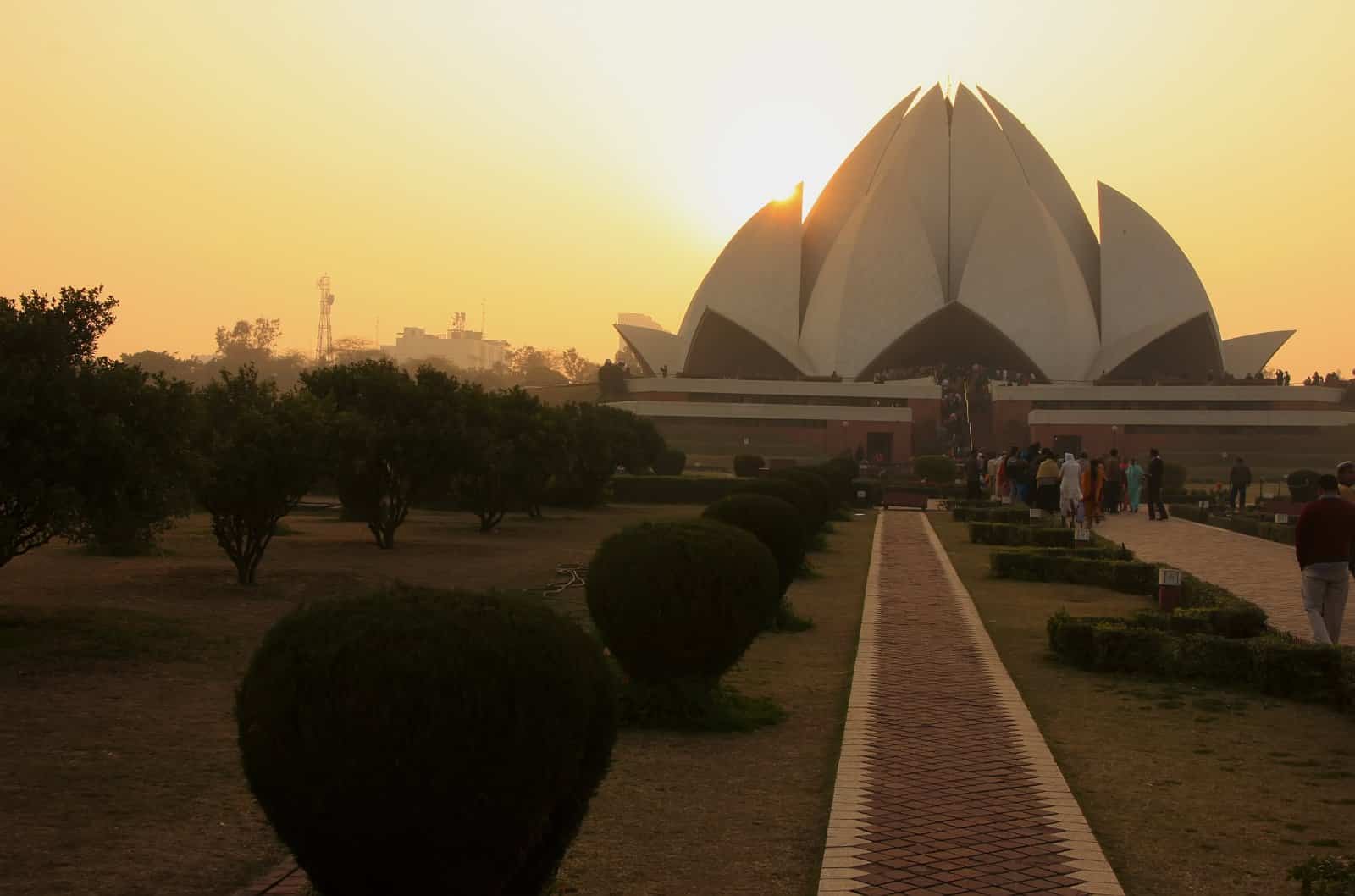
The Bottom Line
Exploring the Golden Triangle offers a journey through the heart of India’s historical grandeur, culinary richness, and vibrant culture. From the architectural wonders of Delhi, Agra, and Jaipur to the bustling markets and serene heritage sites, each city presents a unique palette of experiences.
Engaging with the local crafts, savoring the diverse flavors, and immersing yourself in the cultural heritage allows a deeper understanding and appreciation of India’s multifaceted beauty. As you plan your journey, remember to embrace the diversity, seek out authentic experiences, and travel with an open heart and mind.
More Articles Like This…
Barcelona: Discover the Top 10 Beach Clubs
2024 Global City Travel Guide – Your Passport to the World’s Top Destination Cities
Exploring Khao Yai 2024 – A Hidden Gem of Thailand
The post Exploring India’s Golden Triangle – Delhi, Agra, and Jaipur republished on Passing Thru with permission from The Green Voyage .
Featured Image Credit: Shutterstock / SasinTipchai.
For transparency, this content was partly developed with AI assistance and carefully curated by an experienced editor to be informative and ensure accuracy.
More for You
Repairman shows how common laundry product could be ruining your washing machine: 'Once you break the bad habit you'll be OK'
This Social Security Spousal Rule Is Officially Finished in 2024 — But These 3 Strategies Remain
Doctor shares what happens to our bodies moments before we die
Ben Stiller and Christine Taylor pose for a rare photo with their 22-year-old daughter
The Clever Bathroom Storage Addition That Hides Toilet Paper Within Reach
Dak Prescott reiterates that he is ready to leave Dallas Cowboys
Here's How the Bitcoin Halving Is Playing Out
Sleep experts say brushing your teeth right before bed is a common nighttime routine mistake — here's why
This Is Why Tires Have Those Little Rubber Hairs on Them
Migrants Protest After Over 100 Workers Suddenly Lose Their Jobs
Tom Segura | You Really Want To Live Forever?
Comet headed for Earth could become brighter than the stars later this year
Fat Loss - 4 Habits You Need to Know to Lose Weight Fast
Biden has been excluded from the ballot in Ohio. Governor calls it ‘absurd.’
NFL Star Ray Lewis’ Son Died of Accidental Overdose, Now Researchers Say He Had Stage 2 CTE
Cancelled Netflix show is one of the streamer’s most-watched titles
Professional housekeeper shares one thing she wishes everyone knew about laundry: 'The best [tip] I've heard in a long time'
I Performed to Doctors. It Ended With a Diagnosis I'd Never Heard of
Texas' labor market is booming. Here are the 26 highest-paying jobs in the Lone Star State.
Check Out the Original Invoice on This 1928 Ford Model A

IMAGES
VIDEO
COMMENTS
The Golden Triangle is a popular tourist circuit in Northern India. In fact, it's the most popular part of the country for visitors. It encompasses the triangular region between New Delhi, Agra, and Jaipur, with every city located around 125 miles from the others.
The Golden Triangle in India is a renowned tourist circuit that weaves together the vibrant cities of New Delhi, Agra, and Jaipur. This captivating route derives its name from the triangular shape created by the strategic positioning of these destinations on a map.
India's golden triangle is a tourist circuit in India that connects the national capital, New Delhi, with Agra and Jaipur.The trips usually start in Delhi and move south to the site of the Taj Mahal at Agra (in Uttar Pradesh state), then west, to Jaipur (in the desert landscapes of Rajasthan state). It is normally possible to do the trip by road, train or plane.
The evocative Golden Triangle in India is one of the country's most popular tourist circuits. Comprising Delhi, Agra, and Jaipur, it gets its name from the triangle that these cities form.Roughly located an equal distance of around 125-155 miles from each other in northern India, the cities provide a classic and unforgettable introduction to the country and its charms.
The India Golden Triangle is a tourist circuit that connects the country's capital, Delhi, with the historical city of Agra and the vibrant Jaipur, forming a triangular shape on the map. This circuit is renowned for its rich cultural heritage, stunning monuments, and diverse experiences. Importance and Popularity of the Golden Triangle Circuit
Best Time to Visit the Golden Triangle Circuit. The best time to visit the cities of Delhi, Agra and Jaipur on a Golden Triangle Tour would be during the months of October to March. It is between these months that the cities see the most pleasant temperatures of the year, making it an ideal time to travel.
Look no further than the Golden Triangle! This iconic tourist circuit connects three of India's most fascinating cities: Delhi, Agra, and Jaipur. Each city is rich in history, culture, and architectural wonders, making it a must-visit for any traveler. ... Explore the contrasting worlds of Old Delhi and New Delhi, each offering a unique blend ...
The Golden Triangle of India is one of the famous tourist circuits in Northern India. The trip perfectly introduces India's rich history, culture, and customs, especially for first-time visitors. The Golden Triangle will take you across the most visited cities of India - Delhi, Agra, and Jaipur. The route earned the name Golden Triangle ...
Delhi. Delhi is the natural starting point for the golden triangle. It is a major transport hub in India and is well-served by air and rail. The country's capital has many attractions and places of historical significance. This includes the well-planned New Delhi, and the older section (Delhi or Old Delhi). Delhi is synonymous with Mughlai and ...
A Golden Triangle Itinerary. If you're looking to experience a lot of India in a condensed amount of time, the Golden Triangle is the itinerary for you. If you've never heard of the Golden Triangle, the phrase is referring to India's most popular tourist circuit that connects three prestigious cities in Northern India: New Delhi, Agra ...
Discover the world of tailor-made travel with our personalised travel service. Start in New Delhi. Begin your exploration of the Golden Triangle by immersing yourself in the modern area of New Delhi. Its wide, tree-lined avenues and solid colonial architecture, have been the seat of the central government since 1931.
Golden Triangle in the Summer (April - June): Summer is extremely hot with temperatures regularly hitting 100°F or higher. Golden Triangle Monsoon Season (July - September): The monsoon season means frequent heavy rains and intense humidity. Temperatures typically stay in the 90s. Avoid monsoon season at all costs.
The golden triangle of India is a tourist circuit that incorporates New Delhi (the capital city), Agra (home of the famous Taj Mahal), and Jaipur (the most stunning city in the princely state of Rajasthan). Those with more time can expand the golden triangle to include more famous sites in the region - like the incredible Golden Temple of the ...
The Golden Triangle in India is a sought-after tourist circuit in Northern India for travelers who wish to experience the essence of India in a short time. This route is a great way to get acquainted with the rich history, culture, architecture, and food of India. ... Most tourists fly into New Delhi, explore Delhi, travel to Agra thereafter ...
Get the chance to explore the India's top heritage and most visited monuments in 3-Days Golden Triangle Tour. You will visit India's most famous tourist circuit covering three beautiful cities - Delhi, Agra and Jaipur. In Delhi you will explore both Old and New Delhi city, just like 2 sides of a coin different from each other.
If you plan on getting to Agra and back in a day, the Bhopal Shatabdi Express departs New Delhi at 6 am, arriving Agra Cantt at 7.57 pm. The return leg departs Agra Cantt at 8.30 pm, arriving in New Delhi at 10.30 pm. ... Although the Golden Triangle is a well-trodden tourist trail and all the destinations are easily accessible by public ...
February 10, 2024 11:23 pm. A trip around the Golden Triangle. Charukesi Ramadurai. India is a country of 1.4 billion people, 28 states and 22 official languages (and over 120 regional languages). It has sandy deserts and snow-capped mountains, untamed rivers and virgin beaches. Yes, there is yoga and Ayurveda, but there is also the heat and ...
The Golden Triangle, a popular tourist circuit in India, encompasses three of the country's most iconic cities: Delhi, Agra, and Jaipur. This triangular journey, marked by roughly equidistant points on the Indian map, promises a rich tapestry of history, culture, and architectural marvels. Spanning the northern plains of India, this route ...
DELHI - AGRA-BHARATPUR - JAIPUR - DELHI . Operating Scheule: 3 Days Tour Departure from Delhi: 7.00 a.m., every Tuesday & Friday. Places Covered: AGRA: This historical city stands 200 km south of New Delhi, on the banks of river Yamuna. Over three centuries ago, it was a powerful Mughal capital and the most important city of northern India.
Golden Triangle Tour is the most popular tourist circuit in India. This incredible Golden Triangle Tour Itinerary comprising the three famous cities of India-Delhi, Agra and Jaipur having grandeur, glory & history.
The Golden Triangle is a popular route for travelers to India, and it's no surprise, since you visit three vibrant cities: Delhi, Agra, and Jaipur. Take the hassle out of visiting these sights on this 3-day tour, with ground transportation and accommodations included in the price. Visit top sights, including Old Delhi, the Taj Mahal, and the Amber Fort (with entry fees at your expense). Stop ...
6 Days - Golden Triangle with Heritage Tour. Delhi - Jaipur - Agra - Delhi. 6 Days | 5 Nights. Trip Highlights. Price On Request. View Details Enquire Now. Explore History of Delhi - Red Fort, Qutub Minar. Enjoy rikshaw ride in Old Delhi. Witness the World Famous Taj Mahal.
The Golden Triangle, encompassing Delhi, Agra, and Jaipur, offers an incredible journey through India's rich history, vibrant culture, and breathtaking architecture. The journey through these ...
DELHI - AGRA - JAIPUR - DELHI . Operating Scheule: 3 Days Tour Departure from Delhi: 7.00 a.m., every Tuesday & Friday. Places Covered: AGRA: This historical city stands 200 km south of New Delhi, on the banks of river Yamuna. Over three centuries ago, it was a powerful Mughal capital and the most important city of northern India.